the built environment
description: the human-made spaces in which people live, work, and interact, including buildings, parks, and transportation systems.
224 results
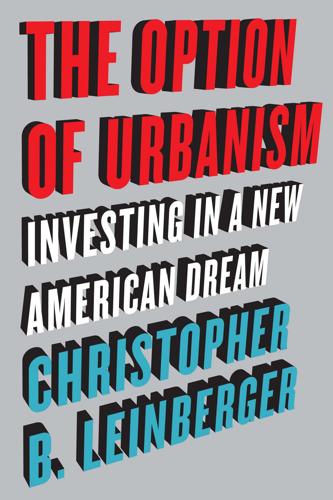
The Option of Urbanism: Investing in a New American Dream
by
Christopher B. Leinberger
Published 15 Nov 2008
Of that amount, you would be paying about $70 trillion for the built environment, or thirty-five percent of all assets in the U.S. economy.5 The built environment is the largest asset class in the economy, larger than all corporations traded on all the various stock exchanges, all privately owned companies, cash on hand, all public and private art collections, or any other asset class (figure 0.4). More people listed on the Forbes 400 of the wealthiest Americans made their money in real estate than in any 8 | THE OPTION OF URBANISM FIGURE 0.4. The built environment (corporate, for-sale residential, government buildings and infrastructure, and commercial real estate) represents thirty-five percent of the assets of the American economy—the largest single asset class.
…
HOW LONG WILL IT TAKE TO SATISFY THE PENT- UP DEMAND FOR WALKABLE URBANISM ? The built environment takes far longer to turn than the proverbial supertanker. According to the U.S. Census Bureau, the country has been adding about $1.2 trillion dollars in new construction (this does not count rehabilitations, so it undercounts total construction spending) to the built environment each year during the mid-2000s.21 As mentioned in the Introduction, thirty-five percent of the assets of the U.S. economy is invested in the built environment (real estate and infrastructure), which translates into about $70 trillion.
…
Currently, eighty-three percent of Americans live in the country’s 361 metropolitan areas, as defined by the US Census.2 Another six percent live in “exurbia”3 outside these metropolitan areas and rely on their closest metro area for their livelihood.4 These percentages are projected to increase, continuing a 200-year trend. Changing the built environment is critical for many reasons, but none is more important to most people than economic growth. Economic growth is one of the primary requirements for most people’s personal fulfillment, for societal and personal wealth creation, for the reduction of global tensions, and for environmental protection. It is not generally known that the built environment—the houses, office buildings, manufacturing plants, highways, transit lines, parks, government buildings, power plants, and all the infrastructure that supports them—plays a dominant role in our economy.
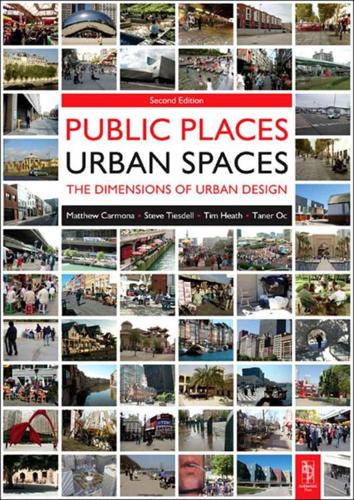
Public Places, Urban Spaces: The Dimensions of Urban Design
by
Matthew Carmona
,
Tim Heath
,
Steve Tiesdell
and
Taner Oc
Published 15 Feb 2010
All urban design actions are, thus, contributions to broader, open and evolving systems and contributions to a greater whole. Although never static, the built environment stands as testament to processes of continuity, change and the passage of time within a particular place. Knox & Ozolins (2000: 3), for example, argue that:‘… a building or other element of the built environment of a given period and type tends to be a carrier of the zeitgeist, or “spirit” of its time. Every city can therefore be “read” as a multi-layered “text”, a narrative of signs and symbols. … the built environment becomes a biography of urban change.’ Similarly, for Mumford (1938), it is by the ‘diversity of its time structures’ that ‘… the city in part escapes the tyranny of a single present and the monotony of a future that consists in repeating only a single beat heard in the past.’
…
Urban Design Quarterly, Spring/Autumn, 9–12 King, R in Knox, P & Ozolins, P (2000) The built environment’, in Knox, P & Ozolins, P (2000) (Editors) Design Professionals and the Built Environment: An Introduction, Wiley, London King, A (2004) Spaces of Global Culture: Architecture Urbanism Identity, Routledge, London Kintrea, K J & Atkinson, R (2000) Owner-occupation, social mix and neighbourhood impacts, Policy & Politics, 28(1), 93–108 Klosterman, R E (1985) Arguments for and against planning, Town Planning Review, 56, 5–20 Knox, P & McCarthy, L (2005) Urbanization: An Introduction to Urban Geography (second edition), Pearson/Prentice Hall,Upper Saddle River, New Jersey Knox, P & Marston, S A (1998) Places and Regions in a Global Context: Human Geography, Prentice Hall, New York Knox, P & Ozolins, P (2000) The built environment’, in Knox, P & Ozolins, P (2000) (Editors) Design Professionals and the Built Environment: An Introduction, Wiley, London, 3–10 Knox, P & Pinch, S (2000) Urban Social Geography: An Introduction, Prentice Hall, Harlow Knox, P (2005) Creating ordinary places: Slow cities in a fast world, Journal of Urban Design, 10(1), 1–12 Knox, P (1994) Urbanisation, Prentice Hall, Englewood Cliffs, New Jersey Knox, P (1993) The Restless Urban Landscape, Prentice Hall, Eaglewood Cliffs, New Jersey Knox, P (1987) The social production of the built environment: Architects, architecture and the post-Modern city, Progress in Human Geography, 11, 354–378 Kohn, M (2004) Brave New Neighbourhoods: The Privatisation of Public Space, Routledge, London Komossa, S; Meyer, H; Risselada, M; Thomaes, S; & Jutten, N (2005) Atlas of the Dutch Urban Block, Thoth Uitgeverij, Netherlands Koolhaas, R (1995) Whatever happened to urbanism?
…
The Need for Urban Design Arguing in 1976 that urban design was still in its ‘prehistoric stage’, Bentley (1976) saw the emergence of express concerns for urban design originating in critiques of the urban environmental product, the process by which the built environment was brought about, and the professional role involved in controlling its production. Each critique detected various kinds of fragmentation, a lack of concern for the totality and overall quality of the urban environment. These problems remain today. Product and Process There have been many critiques of the quality of the built environment. The poor quality of much of the contemporary built environment and the lack of concern for overall quality is a function of both the processes by which it comes about and the forces that act on and within those processes.
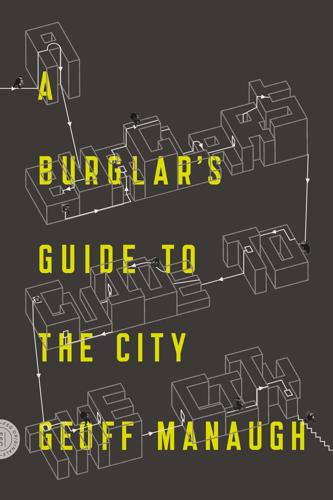
A Burglar's Guide to the City
by
Geoff Manaugh
Published 17 Mar 2015
In many states you can be charged with burglary simply for unnecessarily using a side entrance or coming in through the garage rather than the front door: an indirect approach to the built environment is considered legally suspicious. So I wanted to learn more about how burglars see the city—what a town, a street, a neighborhood, looks like through their eyes, as spaces of seemingly endless possibility. I wanted to learn from cops and robbers both what the built environment can really do, equally fascinated and horrified by the on-again, off-again brilliant stupidity of the burglar’s approach to architecture, with its X-ray vision of secret passages, spatial agents, and the porous world they inhabit together, where everything architects take for granted can literally be undercut, punched through, knocked down, or simply sidestepped.
…
As we saw with Bill Mason, these vents are part of the architectural dark matter—the invisible backstage—that makes up so much of the built environment. Indeed, McClane’s actions reveal a new type of architectural space altogether—a topological condition that we might call Nakatomi space, wherein buildings reveal near-infinite interiors, capable of being traversed through all manner of nonarchitectural means, with their own exhilarating form of boundless fluidity. As a revelatory look at the labyrinthine, previously unexposed back corridors of the built environment—where the thirty-first floor is connected to the lobby or the twenty-sixth floor leads directly to the roof—the first Die Hard movie remains exemplary.
…
—who happens to use his or her talents in a morally troubling way. But we shouldn’t hold illegality against them—indeed, we should hold that for them, I thought I might argue, because we would never have discovered the true potential of the built environment had it not been for someone willing to break the rules. In fact, we should celebrate the burglar, this new archetype, this devil in the details of the built environment, a mythic figure who shows us what architecture, all along, could really be and, more important, how we should have been using it all along. But that is too simplistic an inversion, and the upside-down ethics of a position like that quickly become impossible to sustain.
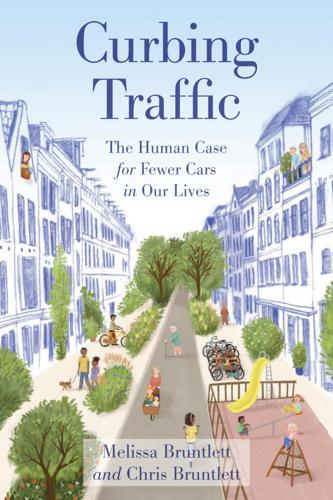
Curbing Traffic: The Human Case for Fewer Cars in Our Lives
by
Chris Bruntlett
and
Melissa Bruntlett
Published 28 Jun 2021
“Social justice is not realizable in the absence of spatial justice: non-fulfillment of the spatial requirements enabling a member of society to live according to a preferred life model, or making this more difficult than it is for others, amounts to a failure of social justice.” She highlights that, after decades of research, it is clear that the built environment is far from neutral. A clear gender disadvantage has been built into the fabric of cities because the needs of women have not been given equal consideration: “Improving gender equality in the professions of the built environment is essential to increasing the quality of cities to make them more responsive to everyone’s needs.” As the gender landscape continues to evolve to include those who identify as transgender or nonbinary, the argument is made that we can no longer consider a gender-neutral city from a strictly feminist perspective.
…
So, for seemingly the dozenth time since landing at Schiphol Airport, we explained that—at its core—this move was about our children. We wanted to offer them the same liberation and self-determination experienced by most Dutch children (without their even knowing it). This is something we had longed to be able to provide them in Canada, but the built environment did not support or facilitate their needs. What surprised us, however, was how quickly they adapted to—and even reveled in—their newly discovered autonomy in the Netherlands. Etienne’s new elementary school was 3 kilometers (2 miles) south of our apartment; a 15-minute bike ride at his lackadaisical pace.
…
Those bonds are so strong, in fact, that we now feel remiss in our neighborliness when we think of eventually leaving our rental flat to buy a home elsewhere. What makes this particular street so different from the ones we had previously lived on in Vancouver (and other Canadian cities) is complex. It has as much to do with the human response to social interactions as it does the built environment in which they take place. The connection we now have with our neighborhood—and the feelings it instills in us go beyond the comfort of simply knowing our neighbors—will have a lasting effect on us for years to come. Because, as we would learn and experience for ourselves, the social cohesion of a city—and the mental and physical well-being of its residents—is shaped greatly by the design of its streets and neighborhoods.
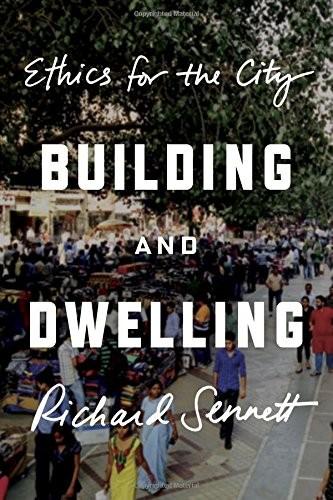
Building and Dwelling: Ethics for the City
by
Richard Sennett
Published 9 Apr 2018
Once chosen, though, the tower’s form involved choices rather than being dictated by circumstances: straight rather than curving struts would have been much cheaper, but efficiency alone did not rule Eiffel’s vision. Which is true more largely: the built environment is more than a reflection of economics or politics; beyond these conditions, the forms of the built environment are the product of the maker’s will. It might seem that cité and ville should fit together seamlessly: how people want to live should be expressed in how cities are built. But just here lies a great problem. Experience in a city, as in the bedroom or on the battlefield, is rarely seamless, it is much more often full of contradictions and jagged edges.
…
In the same way, Festinger found that rupturing a routine – and so creating a cognitive dissonance – provoked and stimulated animals in his laboratory; at the other end of the spectrum, John Dewey argued that artists develop through encountering resistance. In the built environment, rupture does not inevitably improve the quality of building. It can provoke, it can awaken awareness of the surroundings, of contrasting environments – as Pelli’s tower does – but the consequence is not inherently better building. In none of the cities which we have surveyed, from Shanghai to Chicago, has the fact that a building or plan is new form, or that it rips a tear in an existing fabric, in itself improved the quality of the built environment. An idealist philosopher like Benedetto Croce – Dewey’s friendly antagonist – would say, of course, that the quality of a thing is independent of the time in which it exists.
…
For helpful discussions in creating this book I’d like to thank the late Janet Abu-Lughod, the late Stuart Hall, Ash Amin, Kwame Anthony Appiah, Homi Bhabha, John Bingham-Hall, Craig Calhoun, Daniel Cohen, Diane Davis, Mitchell Duneier, Richard Foley, David Harvey, Eric Klinenberg, John Jungclaussen, Adam Kaasa, Monika Krause, Rahul Mehrotra, Carles Muro, Henk Ovink, Anne-Marie Slaughter, and most of all my partner of thirty years, Saskia Sassen: critic, bonne vivante, playmate. It’s thanks to her that I first began to understand the ethical dimensions of city life. Günter Gassner helped me explore the built environment, as did my students at Harvard University’s Graduate School of Design and MIT’s Department of Urban Studies and Planning. Finally, I want to thank those who have worked on producing the book, especially two editors, Alexander Star and Stuart Proffitt, who have been the most careful of readers; one agent, the ever-vigilant and ever-caring Cullen Stanley; and one former assistant, now my colleague and friend, Dominick Bagnato, who has kept me afloat throughout. 1 Introduction: Crooked, Open, Modest I.
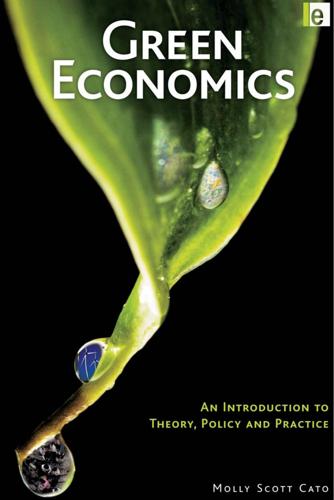
Green Economics: An Introduction to Theory, Policy and Practice
by
Molly Scott Cato
Published 16 Dec 2008
Trade in the era of climate change and peak oil Greening trade locally Greening trade globally 123 124 126 129 131 134 9 Relocalizing Economic Relationships Localization to replace globalization Political protection for local economies Self-reliant local economies on the ground The next step: The bioregional economy Conclusion 139 139 142 144 150 153 10 Green Taxation Theory of green taxation Strategic taxation Taxes on commons Ecotaxes 157 157 160 162 164 CONTENTS vii 11 Green Welfare Green approaches to social policy What is poverty? What is welfare? Sharing the wealth; sharing the poverty What is the welfare state? Citizens’ Income and people’s pensions A health service, not an illness service 171 171 173 176 179 181 183 12 Land and the Built Environment Land and economics Taxing land Building on land Growing on the land 187 187 190 193 197 13 Summary and Further Resources 205 Index 219 List of Photographs, Figures, Tables and Boxes PHOTOGRAPHS 1.1 2.1 The men who devised the existing financial system 4 James Robertson with his wife and co-worker Alison Pritchard 22 2.2 Richard Douthwaite 28 3.1 The author modelling a ‘bioregional hat’ 43 3.2 The convivial economy: Stroud farmers’ market 44 4.1 Crests of the London livery companies associated with textiles 67 5.1 Labour note as used at Owen’s Equitable Labour Exchange in 1833 73 5.2 Chiemgauer note, showing the stamps that have to be added to preserve its value over time 82 6.1 Conviviality: Building the bread oven at Springhill co-housing, June 2008 100 9.1 Stroud farmers’ market 144 9.2 The Cuban ‘camel’: Improvised urban public transport in Havana 153 12.1 Springhill Co-housing, Stroud 197 12.2 Stroud Community Agriculture: Weeding in the cabbage path 200 FIGURES 1.1 2.1 2.2 3.1 3.2 3.3 5.1 Widening the consideration of economics beyond the classical economists’ ‘circular flow’ Hazel Henderson’s illustration of the love economy The relationship between economic activity and carbon dioxide emissions Three is a magic number: Re-imaging the relationship between society, economy and environment Permaculture flower Rainwater harvesting system for a domestic property Total debt service of low- and middle-income countries, 1990–2005 6 27 29 37 47 49 76 x 5.2 6.1 7.1 7.2 7.3 7.4 8.1 8.2 8.3 9.1 9.2 9.3 9.4 10.1 11.1 11.2 11.3 12.1 12.2 12.3 12.4 GREEN ECONOMICS Growth in broad money (M4) compared with growth in the economy (GDP), UK, 1970–2001 The carbon cycle The Passivhaus Illustration of the contraction and convergence model for global CO2 emissions reductions Sharing of ‘universal dividend’ from sale of carbon permits and its impact on incomes in different groups of the US population A comparison of GDP and ISEW in the UK, 1950–2002 Fair trade sales in the leading consumer countries in 2006 and 2007 Relationship between growth in trade and growth in CO2 emissions Production grid illustrating trade subsidiarity Trade gap in agricultural products in the UK, 1990–2005 Comparison of wage rates in a selection of countries, based on purchasing power parities, 2005 NEF’s image of the ‘leaky bucket’ local economy Margaret Legum’s design for building prosperity globally Revenues from environmentally related taxes as a percentage of GDP in various OECD countries Relationship between infant mortality and carbon dioxide emissions Human well-being and sustainability: Ecological footprint and Human Development Index compared, 2003 Illustration of the ability to provide for one’s individual needs over the productive life-course Equity creation through a CLT Agricultural and economic systems of sustainable agriculture Percentage of energy used in different aspects of food production and distribution The turning of the year: The annual cycle of growing and celebration on the land source 79 99 108 111 112 118 129 130 132 141 142 146 154 167 175 178 183 196 198 199 201 TABLES 1.1 1.2 1.3 3.1 Comparison of different strands of economics with a concern for the environment Ecological footprinting and shadow pricing compared The negative consequences of economic growth for quality of life Comparison between the HE (hyper-expansionist) and SHE (sane, humane, ecological) possible futures 8 9 10 41 LIST OF PHOTOGRAPHS, FIGURES, TABLES AND BOXES 3.2 3.3 6.1 7.1 7.2 7.3 7.4 8.1 10.1 10.2 10.3 10.4 10.5 10.6 12.1 Indicators of consumption and population in different regions of the world Valuation of activities and functions within the patriarchal economy Success of various sectors within a low-carbon economy Percentage of firms engaged in various waste-management activities in UK and Germany, 2001 Comparison of costs to society of various psychological ‘escape routes’ compared with spending in various areas, UK c. 2001 Additions and subtractions from GDP to arrive at the ISEW HDI and HPI rankings for the G8 countries and other nations with high gross GDP Changes in the terms of trade of some country groups, 1980–1982 to 2001–2003 Share of UK wealth owned by different sectors of the population Impact of the congestion charge on traffic in London Examples of environmental taxes and charges Types of installations resulting in tax credits for Oregon citizens in 2006 Examples of ecotaxes in a range of EU countries Revenue from environmental taxes in the UK, 1993–2006 Experiences with LVT in various countries xi 45 46 99 109 116 118 120 127 160 163 165 166 166 167 192 BOXES 1.1 3.1 3.2 4.1 4.2 4.3 5.1 5.2 5.3 5.4 6.1 6.2 6.3 6.4 Inequality in the UK, 1994–2004 Sustainability values Douthwaite’s criteria for ‘green’ growth Creating a million extra jobs through a green industrial revolution Policies to encourage voluntarism and self-help The expansion of worker cooperatives in Argentina Traditional money in Vanuatu The parable of the South African talents The Chiemgauer local currency in Chiemgau, Germany New Zealand’s complementary currencies Shell and CSR: A cynical view Cooperation for sustainability: The alternative food economy in the UK Principles of production to match the metabolism of the natural world Principles for achieving sustainability according to the Natural Step 3 36 40 58 64 65 77 81 82 84 93 95 97 100 xii 7.1 7.2 8.1 8.2 8.3 9.1 9.2 9.3 9.4 9.5 10.1 10.2 10.3 11.1 12.1 12.2 12.3 12.4 12.5 GREEN ECONOMICS The European Union Packaging Directive Norway’s experience with national resource accounting Trade and inequality The fight-back: Trade-related direct action in India Key provisions of the General Agreement on Sustainable Trade Provisions of the UK’s Sustainable Communities Act (2007) Essential features of a sustainable territory The Thames Gateway Development as an example of a non-self-reliant community A sufficiency economy in Thailand Kirkpatrick Sale’s essential elements to guide a bioregional economy The London congestion charge Energy tax credit programme in Oregon, US Pesticide taxation in Scandinavia Enduring terrors: The war against terror in global context MST: The land rights campaign in Brazil Land tax in Australia Co-housing in Denmark The principles of permaculture Stroud Community Agriculture 109 119 127 133 135 145 147 148 149 151 163 166 167 179 189 192 197 199 200 Acknowledgements My first and deepest gratitude must be for all those, named and unnamed, who have taxed their minds and spirits to clear the path towards a way of living more comfortably within our environment.
…
Kunzli (2004) ‘Air pollution attributable postneonatal infant mortality in U.S. metropolitan areas: A risk assessment study’, Environmental Health, 3: 4. 32 S. Cox (2008) Sick Planet: Corporate Food and Medicine, London: Pluto. 33 I. Illich (1975) Medical Nemesis: The Expropriation of Health, London: Calder and Boyars. 34 Barry and Doherty, ‘The greens’, p. 600. 12 Land and the Built Environment Buy land: they’re not making it any more Mark Twain As discussed in Chapter 3, within the green economics perspective land is a vital part of human and community identity. The view of the land is quite distinct from the reductionist conception of a ‘factor of production’ held by classical and neoclassical economists.
…
For Aldo Leopold, the intimate relationship with land, which he termed ‘land ethic’, was necessary to underpin both human relationships and ecological respect: ‘when we see land as a community to which we belong, we may begin to use it with love and respect. There is no other way for land to survive the impact of mechanized man.’7 Other commentators suggest that giving indigenous peoples the rights to their own land is a better guarantee of their protection than leaving them open to exploitation by corporations.8 The LAND AND THE BUILT ENVIRONMENT 189 BOX 12.1 MST: THE LAND RIGHTS CAMPAIGN IN BRAZIL One of the most prominent movements for land reform is the MST in Brazil (Movimento dos Trabalhadores Rurais Sem Terra, or Movement of Landless Rural Workers). The movement began in October 1983, when a large group of landless peasants from across the state of Rio Grande do Sul in southern Brazil occupied a 9200ha cattle ranch which was owned by an absentee landlord.
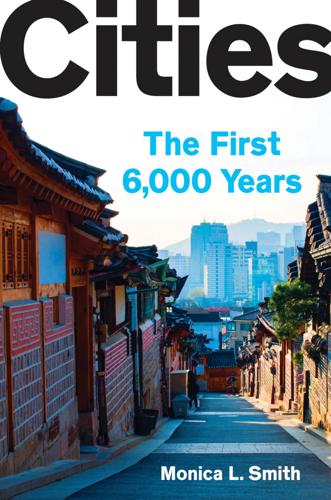
Cities: The First 6,000 Years
by
Monica L. Smith
Published 31 Mar 2019
Today, the thriving future of urban religion is seen everywhere from the megachurches of downtown Seoul to the new cathedrals planned in Africa’s growing cities, like Accra’s new National Cathedral, whose design includes a new “ceremonial route” linking it to government buildings and Independence Square. On the more mundane level, by including social awareness in the creation of the built environment, we can reap the soft benefits of secular infrastructure long into the future. To the knowledge of engineers and architects can be added the knowledge base of anthropologists, sociologists, and historians, who remind us of the way that the built environment shapes urban flow. Longitudinal planning should take into account the demographic and social changes that we will face in the future, including the fact that many more people are reaching old age.
…
In addition to markets and trash, there are multistory buildings, long streets, sewer pipes, water mains, public squares, and a “downtown” zone of financial institutions and government offices. There are a thousand varieties of sounds and smells, competing with the weather and daylight that frame the skyline of the built environment. There are crowds of people—rich, poor, young, old, female, male, gay, straight, trans, abled, disabled, employed, students, jobless, residents, and visitors. Production and consumption opportunities are scaled up in cities to provide not only more things but also more things per person, a completely ironic abundance given that urban residences tend to be much smaller than their rural counterparts.
…
The Urban Map Long before cities came into being, our ancestors had the capacity for dead reckoning and mental mapmaking. As they moved around the landscape, they made use of natural markers such as trees and stony outcrops to create cognitive maps of movements and desires for themselves. When the natural world became subordinate to the built environment, as increasingly became the case in cities, there were many more ways for people to mark the spaces of their movements from home to work to school to entertainment venues and back again. There were shops and alleyways and distinctive street angles. There were monuments of all kinds: a temple or an obelisk or a minaret.
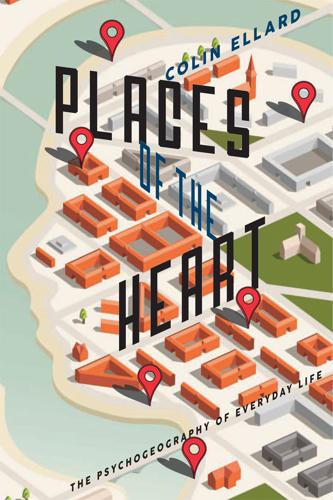
Places of the Heart: The Psychogeography of Everyday Life
by
Colin Ellard
Published 14 May 2015
Though our other senses play a role in helping us to feel immersed in and to connect with place, it is gaze that most powerfully defines the boundaries of built space. What and whom we can see and how we understand our own visibility to others is the most important determinant of our behavior in the built environment. Because of this, a device like Google Glass is not simply a novel form of portable computer interface, but rather the beginning of a kind of technology that invades that most primal connection. In its current form, Google Glass is not much more than a kind of heads-up display that allows us to receive a steady stream of annotation about our surroundings with nothing more than an upward flick of the eyeballs.
…
Walker began his professional life as an aeronautical engineer, but early on in his career, he tired of designing military aircraft and sought to find his thrills in other domains. Now, as the self-described “thrill engineer,” he spends much of his time both trying to understand where excitement arises in the built environment, and learning how to maximize thrill for those who crave a quick knee-trembler with an exciting place. In his early work, Walker was inspired by an unusual source for ideas about how to build thrilling places: he looked at anecdotal accounts of the thrills experienced by criminals during the perpetration of illegal acts.
…
Customers who self-scan their purchases are scrutinized by a webcam that reads their facial expression, checks their purchasing history, and tailors special offers on the spot to their current mood.18 The overall effects of such technologies, designed to tap into the individual histories of buyers and to read out their current states, is effecting a transformation of our relationship with the built environment that is symptomatic of a wider set of changes in our psychological relationship to built spaces. Until the emergence of the Internet, much of the challenge for merchants was to attract customers to their place of business and to find ways to keep them there for as long as possible. This model for moneymaking is now being eclipsed by the ability of shoppers to make purchases anywhere using online portals, and in tandem with this change we are seeing strong declines in the construction of malls and department stores throughout many parts of the world.
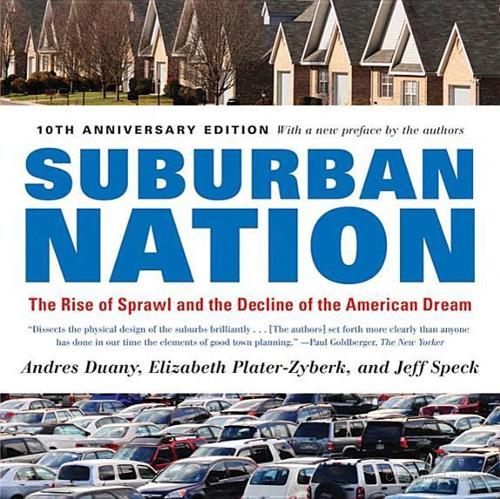
Suburban Nation
by
Andres Duany
,
Elizabeth Plater-Zyberk
and
Jeff Speck
Published 14 Sep 2010
Let’s face it: most Americans, who don’t think very often about city planning and who haven’t been offered the alternatives, are still settling for sprawl. Turning that ship around is a project for the next decade. —JEFF SPECK, WASHINGTON, D.C. RECENT DEVELOPMENTS The ten years since Suburban Nation was published have seen a great change in American attitudes toward the built environment. Suburban Nation has not been the sole agent of this change, of course, but clearly we got something right—right enough for the book to have a shelf life and a future. A predicated future suggests that the problems described herein remain. Still, one can be encouraged by visible progress.
…
In once-decanted downtowns, empty parking lots are being replaced by streets and blocks of high-density housing, offices, and retail development. Mixed-use, transit, and walking are words that no longer elicit smirks. Indeed, in cities where public transportation was shunned, the lack of it is now a public complaint. The relationship between public health and the design of the built environment has been firmly established, with scientific data supporting the benefits of urban walking as part of a daily routine. Many organizations have sprung up to promote this change. Among them, the Congress for the New Urbanism, by setting out principles for regional, neighborhood, street, and block design, has influenced many town plans, as well as national standards for traffic engineering.
…
It is supplemented by a pile of planning codes many inches thick. As exposed in Philip Howard’s The Death of Common Sense, these lengthy codes can be burdensome to the point of farce. But the problem with the current development codes is not just their size; they also seem to have a negative effect on the quality of the built environment. Their size and their result are symptoms of the same problem: they are hollow at their core. They do not emanate from any physical vision. They have no images, no diagrams, no recommended models, only numbers and words. Their authors, it seems, have no clear picture of what they want their communities to be.
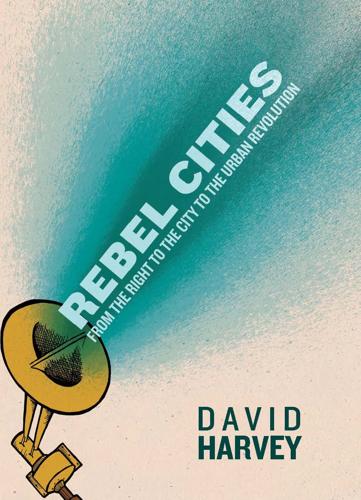
Rebel Cities: From the Right to the City to the Urban Revolution
by
David Harvey
Published 3 Apr 2012
Clearly, property market booms and busts are inextricably intertwined with speculative financial flows, and these booms and busts have serious consequences for the macroeconomy in general, as well as all manner of externality effects upon resource depletion and environmental degra dation. Furthermore, the greater the share of property m arkets in GD P, the more significant the connection between financing and investment in the built environment becomes as a potential source of macro crises. In the case of developing countries such as Th ailand-where housing mort gages, if the World B ank Report is right, are equivalent to only l 0 percent of GDP- a property crash could certainly contribute to, but not likely totally power, a m acroeconomic collapse (of the sort that occurred in 1 9 97-98), whereas in the United States, where housing mortgage debt is equivalent to 40 percent of GDP, it m ost certainly could and did gen erate a crisis in 2007- 09. 50 .. 4 0 "" c 'ij '5 .., 30 j 20 '0 E ::s z 10 0 ������ 1 9 70 1 890 1910 1930 1 950 1 990 2010 Year Source: after William Godzmamt and Fran/c.
…
Several times in Volume 1 and repeatedly in Volume 2 , Marx invokes the credit system only to lay it aside as a fact of distribution that he is not prepared yet to confront. The gen eral laws of motion he studies in Volume 2, particula rly those of fixed c apital circulation ( including investment in the built environment) and working periods, pro duction periods, circulation times, and tu r n over times, all end up not only invok ing but necessitating the credit system. He is very explicit on this po int. When commenting on how the money capital advanced must always be greater than that applied in surplus-value production in order to deal with differential turnover times, he notes how changes in turnover times 38 R E B E L C I T I ES can "set free" some of the money earlier advanced.
…
It is th is that led Marx to characterize Isaac Pereire-who, along with h is brother Em ile, was one of the masters of the speculative reconstruction of urban Paris under Haussmann-as having "the nicely m ixed character of swindler and prophet:'18 CA P ITA L ACC U M U LAT I O N T H RO U G H U R BAN IZAT I O N Urbanization, I have long argued, h a s been a key means for the absorp tion of capital and labor surpluses throughout capitalism's history.19 It has a very partic ular function in the dynamics of capital accumulation because of the long working periods and turnover times and the long lifetimes of most investments in the built environment. It also has a geographical specificity such that the production of space and of spatial monopolies becomes integral to the dynamics of accumulation, not simply by virtue of the changing patterns of commodity flows over space but a lso by virtue of the very n ature of the created and produced spaces and places over which such movements o ccur.
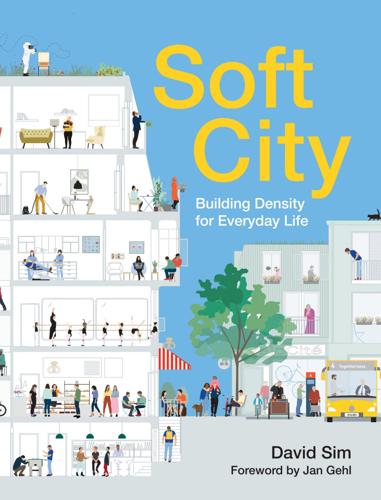
Soft City: Building Density for Everyday Life
by
David Sim
Published 19 Aug 2019
I would like to thank the Gehl team, especially my in-house editor Birgitte Svarre, who has supported me through this project over the last years, as well as my business partner, Gehl CEO Helle Søholt, who entrusted me with this task, and many others. It would not have been possible to publish this book without the support of the Danish foundation Realdania that has a mission to create quality of life for all by developing the built environment. This book shares the mission of Realdania with its focus on the human dimension while considering the challenges of density, diversity, and livability. I hope this book will contribute to the making of better neighborhoods. The process of writing this book has been long and sometimes painful, as I tried to decide what was worth sharing while also recognizing that there is so much I still don’t know.
…
If we better understand what conditions make for being good neighbors, we can then better accommodate density, difference, and change. We can embrace these as beneficial opportunities rather than unfortunate challenges. We should recognize that every detail in the physical composition of the built environment has the potential to deliver comfort, convenience, and connection to others. The subtle balance of private and public needs, and the colocation of different activities in the same place make it possible to live well without having to travel so much. By getting the relationships right in the physical environment, with everything you need close at hand, an urban neighborhood can offer a better life.
…
True urban quality comes from accommodating density and diversity of building types and uses in the same place. I believe that different, even conflicting, uses and users can coexist and enjoy the convenience of colocation if they are accommodated in an urban framework that lets them be good neighbors to each other. Enclosure The urban pattern of enclosure seems to be as old as the built environment itself. Ever since the very first formal human settlements, thousands of years ago, there has been a simple pattern of building that could be called urban. The urban pattern is characterized by building to the very edge of the property rather than in the middle, and having joined-up buildings, where different properties are juxtaposed.
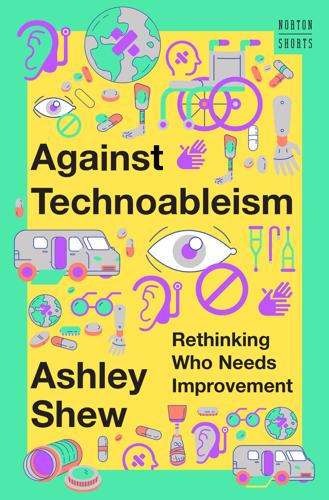
Against Technoableism: Rethinking Who Needs Improvement
by
Ashley Shew
Published 18 Sep 2023
According to this model, people count as disabled or abled depending on social context, social structures, and the built environment. The categories of disabled and not disabled depend upon notions of normalcy, as well as philosophical ideas of what it means to be human and who is deserving of rights. Even today, definitions of disability can be porous. Some amputees deny that they “count” as disabled after they master prosthetic use; some Down syndrome advocates remind the public that not everyone in their community has extensive medical problems; and some little people point out that their biggest barriers are those that come from social stigma and those created by the built environment. These categories vary across cultures and over time.
…
So much of what I experience as someone using disability-related technologies is tied to my technologically embodied configurations, and the wear and tear of technology—in ways I’ve never seen addressed in popular media. What do technologies mean to people? What role do they play in people’s lives? How does the built environment include or fail to include people? How do people identify with and resist technological intervention? How (and when) do people decide to adopt or use particular technologies such as prostheses? These questions should not be the exclusive province of abstract philosophical speculation or technofuturist disruptors.
…
Like typical others we people with a disability want to be able to work, own a home, and have unfettered access to mass transportation. For this to happen disability must be placed in the larger societal, historical, political, and medical context. You’ll recognize in this entry the tension between the medical model, in which disability is the problem, and the social model, in which the built environment is the problem. It’s very clear which model the tech world subscribes to, with its expensive, complex solutions to the “problem” of not being able to walk. I think often about how these technological solutions affect the way disabled people experience and think about our bodies. Jai Virdi, in the historical account Hearing Happiness, and Sara Nović, in the novel True Biz, write in a similar frame about expectations around hearing and how they shape how individuals think about themselves (and push back).
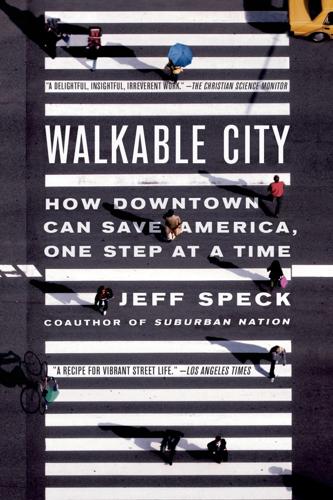
Walkable City: How Downtown Can Save America, One Step at a Time
by
Jeff Speck
Published 13 Nov 2012
“French Ideal of Bicycle-Sharing Meets Reality.” The New York Times, October 30, 2009. Eversley, Melanie. “Many Cities Changing One-Way Streets Back.” USA Today, December 20, 2006. Ewing, Reid, and Robert Cervero. “Travel and the Built Environment: A Meta-Analysis.” Journal of the American Planning Association 76, no. 3 (2010): 11. Ewing, Reid, and Eric Dumbaugh. “The Built Environment and Traffic Safety: A Review of Empirical Evidence.” Journal of Planning Literature 23, no. 4 (2009): 347–67. Fallows, James. “Fifty-Nine and a Half Minutes of Brilliance, Thirty Seconds of Hauteur.” theatlantic.com, July 3, 2009.
…
If she had been killed by a truck going by, the cause of death would have been “motor-vehicle trauma,” and not lack of sidewalks and transit, poor urban planning, and failed political leadership. That was the “aha!” moment for me. Here I was focusing on remote disease risks when the biggest risks that people faced were coming from the built environment.3 Jackson, who has more recently served as California governor Arnold Schwarzenegger’s state public health adviser, spent the next five years quantifying how so much of what ails us can be attributed directly to the demise of walkability in the auto age. The resulting book finally put some technical meat on the bones of the planning profession’s admonitions against sprawl.
…
.”● Buettner quotes Robert Kane, M.D., the director of the Minnesota Geriatric Education Center, who says, “Rather than exercising for the sake of exercising, try to make changes to your lifestyle. Ride a bicycle instead of driving. Walk to the store instead of driving.… Build that into your lifestyle.”■ Like most writers on the subject, Buettner and his sources neglect to discuss how these “lifestyle” choices are inevitably a function of the design of the built environment. They may be powerfully linked to place—the Blue Zones are zones, after all—but there is scant admission that walking to the store is more possible, more enjoyable, and more likely to become habit in some places than in others. It is those places that hold the most promise for the physical and social health of our society.
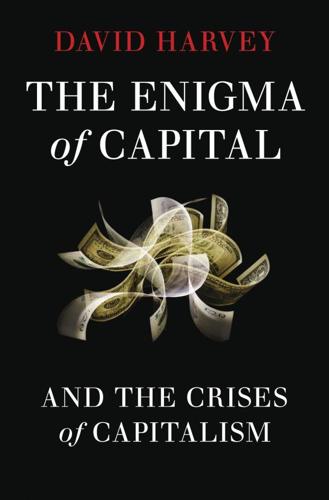
The Enigma of Capital: And the Crises of Capitalism
by
David Harvey
Published 1 Jan 2010
And the long-drawn-out commercial-property-led savings and loan crisis of 1984–92 in the United States saw more than 1,400 savings and loans companies and 1,860 banks go belly up at the cost of some $200 billion to US taxpayers (a situation that so exercised William Isaacs, then chairman of the Federal Deposit Insurance Corporation, that in 1987 he threatened the American Bankers Association with nationalisation unless they mended their ways). Crises associated with problems in property markets tend to be more long-lasting than the short sharp crises that occasionally rock stock markets and banking directly. This is because, as we shall see, investments in the built environment are typically credit-based, high-risk and long in the making: when over-investment is finally revealed (as recently happened in Dubai) then the financial mess that takes many years to produce takes many years to unwind. There is, therefore, nothing unprecedented, apart from its size and scope, about the current collapse.
…
This becomes important because, as the eighteenth-century French utopian thinker Saint-Simon long ago argued, it takes the ‘association of capitals’ on a large scale to set in motion the kinds of massive works such as railroads that are required to sustain long-term capitalist development. This was what the nineteenth-century financiers the Péreire brothers, schooled in Saint-Simonian theory, effectively achieved through the new credit institutions they set up to help Baron Haussmann transform the built environment of Second Empire Paris in the 1850s. (The boulevards we see today date from this period.) In the case of limited and joint stock companies and other corporate organisational forms that came into their own in the nineteenth century, enormous quantities of money power are amassed and centralised (often out of myriad small amounts of personal savings) under the control of a few directors and managers.
…
On the other hand there is nothing unnatural about species, including ours, modifying their environments in ways that are conducive to their own reproduction. Ants do it, bees do it, and beavers do it most spectacularly. In the same way that there is nothing unnatural about an ant hill, so there is, surely, nothing particularly unnatural about New York City. But all of this has taken human energy and ingenuity to construct. The built environment that constitutes a vast field of collective means of production and consumption absorbs huge amounts of capital in both its construction and its maintenance. Urbanisation is one way to absorb the capital surplus. But projects of this sort cannot be mobilised without assembling massive financial power.
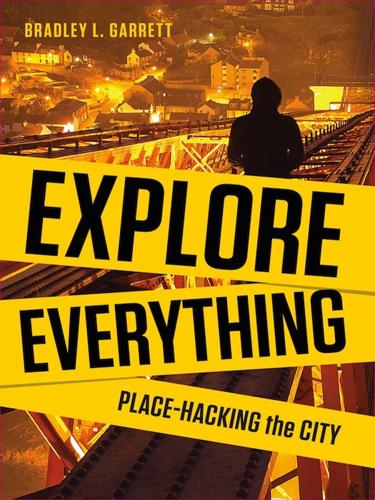
Explore Everything
by
Bradley Garrett
Published 7 Oct 2013
Winch and I were drinking Chimay that we’d picked up at a petrol station, and Winch, as usual, was perusing photos on the Internet and scrolling around on his cracked Blackberry, looking at an aerial view of our next location on Google Earth, trying to find a possible entry point. He turned to us slowly and said, ‘So, you guys, we’re staying in a hotel tonight’ – everyone looked stunned – ‘that closed in 1996!’ And we all erupted in riotous laughter. Urban explorers are fascinated by the flotsam of the built environment, locating sites of haunted memory, seeking interaction with the ghosts of lives lived.5 When these places are located, their fragile deteriorations are captured in photos, the snap of the camera shutter like an exploding chemistry experiment where past, present and future are fused.6 Taking the photograph creates a moment of temporal juxtaposition, giving us, as the artist Robert Smithson once wrote, an ‘illusion of control over eternity’.7 In abandoned bunkers, hospitals and industrial sites, we found moments caught between the present and the past, confrontations that flared up with unexpected material traces.
…
Sometimes even whole buildings are hidden from plain sight, well buried behind the urban façade. The cracks we can access them through – what the urban explorer Michael Cook has called ‘vanishing points’ – reveal the city less as a solid entity and more as a collection of fluctuating particles constantly swirling as people attempt to stall the natural collapse and decay of the built environment.8 Urban exploration is a shallow form of discovery, but it is often a more encompassing way of working through places. It’s about space as much as time, about the event of discovery as much as the accumulation of knowledge, about things as much as people.9 In contrast to a historian working deeply on one topic or site, urban explorers have mental and virtual databases of hundreds of sites, connected though experience.
…
Sites of exploration become portals to the surreal cut into the everyday landscape, as well as an affirmation of the place and potential of the creation of unsanctioned beauty as part of our explorations of worlds, subjects and knowledge in-the-making.12 In short, we saw these cracks into the underworld as portals to opportunities as well as potential zones of infection. Urban explorer Michael Cook writes: The built environment of the city has always been incomplete, by omission and necessity, and will remain so. Despite the visions of futurists, the work of our planners and cement-layers thankfully remains a fractured and discontinuous whole, an urban field riven with internal margins, pockmarked by decay, underlaid with secret waterways.
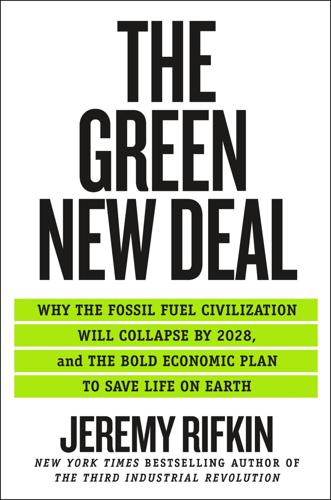
The Green New Deal: Why the Fossil Fuel Civilization Will Collapse by 2028, and the Bold Economic Plan to Save Life on Earth
by
Jeremy Rifkin
Published 9 Sep 2019
South Korea also joined the ranks in 2009 with its own Green New Deal, signing off on a $36 billion initiative over a four-year period to build out low-carbon projects and create 960,000 new jobs, primarily in the fields of construction, rail, fuel-efficient vehicles, retrofitted buildings, and energy conservation.8 In 2011, I coauthored a book with the famed Spanish architect Enric Ruiz-Geli titled A Green New Deal: From Geopolitics to Biosphere Politics, focusing on the greening of architecture and the built environment in a climate-changing world.9 A few years later, the European Federalist Movement took the Green New Deal forward with a petition titled “New Deal 4 Europe: Campaign for a European Special Plan for Sustainable Development and Employment” and used it to launch a 2015 European-wide citizen initiative to mobilize support for a transition into a zero-carbon green economy.10 The Green New Deal narrative continued to gain momentum over the years, becoming a theme in the 2019 European elections.
…
In September 2018, Governor Jerry Brown signed a bill into law that prepares the ground for reducing greenhouse gas emissions from California’s existing residential and commercial buildings by 40 percent below 1990 levels by 2030.29 The California Public Utilities Commission is also preparing initiatives that will ensure that all new residential buildings be zero net energy by 2020 and all commercial buildings be zero net energy by 2030.30 The global real estate market in 2015 was valued at $217 trillion, nearly 2.7 times the GDP of the world, and represents 60 percent of the investment assets of the global economy.31 Looking ahead, the construction market will grow by another $8 trillion by 2030.32 As alluded to earlier, the paradigm shifts in communication, energy, and mobility change the nature of the built environment. The First Industrial Revolution gave rise to dense urban built environments because of hub-to-hub railroad transportation, while the Second Industrial Revolution birthed widely spread out suburban environments off interstate highway exits. In the Third Industrial Revolution, existing and new buildings—residential, commercial, industrial, and institutional—are transformed into zero-carbon energy-efficient smart nodes and networks embedded in an Internet of Things matrix.
…
Unfortunately, the financing mechanism that accompanies MEES—called, interestingly enough, the “Green Deal Finance Model,” which would incentivize the owners of dilapidated residential property to make the efficiency changes—was taken away by the government and never even introduced for commercial property, leaving owners with a penalty but without an incentive to upgrade their properties.46 Again, the lesson learned over and over is that transitioning the built environment away from the fossil fuel culture and toward a green renewable energy culture, by necessity, must provide equally powerful carrots and sticks to ensure success. Preparing the American Workforce for the Green Era The decoupling of the communication sector, the electricity sector, the mobility and logistics sector, and the building stock sector from the fossil fuel civilization has barely begun in the United States.
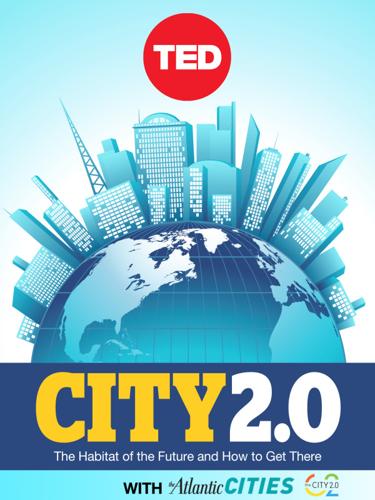
City 2.0: The Habitat of the Future and How to Get There
by
Ted Books
Published 20 Feb 2013
Buettner quotes Robert Kane, M.D., the director of the Minnesota Geriatric Education Center, who says, “Rather than exercising for the sake of exercising, try to make changes to your lifestyle. Ride a bicycle instead of driving. Walk to the store instead of driving …. Build that into your lifestyle.”20 Like most writers on the subject, Buettner and his sources neglect to discuss how these lifestyle choices are inevitably a function of the design of the built environment. They may be powerfully linked to place — the Blue Zones are zones, after all — but there is scant admission that walking to the store is more possible, more enjoyable, and more likely to become habit in some places than in others. It is those easily walkable places that hold the most promise for the physical health of our society, because they teach us how we can make all American communities more welcoming to pedestrians.
…
It is what human settlements that grow up without central planning and control look like: seemingly chaotic, labyrinthine, and fractal, but thick with social and business networks. Echanove and Srivastava have put together startling images of street scenes in Dharavi (the largest informal settlement in Mumbai) overlaid onto a street in Tokyo or Torino. The texture of the built environment in these disparate places is similar because the dynamics that drive it are similar. The result seems unruly, but it works. The leather workshop uses buckles made by the smithy next door, which also supplies the bag maker around the bend. The workshops are also stores, and the laborers and clerks are just a few steps from eateries.
…
While services like Uber, Waize, Zimride, and Zipcar are disrupting the established regime in the developed world, entrepreneurs in emerging markets are also using information technology and cell phones to radically reinvent transportation, improving services for users and boosting the livelihoods of drivers. Unlike most cities in the U.S., urban centers in the developing world are transit rich. Informal public transit permeates the urban fabric. Just as the built environment in the autocatalytic city is driven by bottom-up processes, the need to move around in rapidly growing cities with inadequate public transportation has given rise to private transit services (also called informal or paratransit). Even supposedly egalitarian public transit can be out of reach for the poorest urban dwellers.

Ground Control: Fear and Happiness in the Twenty First Century City
by
Anna Minton
Published 24 Jun 2009
At Stratford, Chelsfield, a property company run by Nigel Hugill, which already had plans for an enormous shopping mall in London’s Shepherds Bush, signed the deal to develop another huge shopping complex there, along with property company Stanhope, run by Sir Stuart Lipton, who went on to chair the government agency the Commission for Architecture and the Built Environment. He resigned from there in 2004 after an independent audit into conflicts of interest concluded that in future the chairmanship of CABE should not go to a property developer.4 Although London and Continental got into difficulties in 1998 and was restructured, Chelsfield’s deal remained on the drawing board, but in 2004, just before London won the Olympic bid, Chelsfield was bought out by a trio of companies, including Westfield, the biggest shopping centre operator in the world, alongside Multiplex, the company building Wembley, and the Reuben Brothers, property investors who had made billions in investments in the aluminium industry in 1990s Russia.
…
Spenhill, the regeneration subsidiary of Tesco, is planning ‘district centres’ in Gateshead, Kirby, West Bromwich, Bradley Stoke, Shepton Mallet, Seaton in Devon and in Bromley-by-Bow in East London and Woolwich and Streatham in the south. In Bromley-by-Bow the proposed district centre, which overlooks a dual carriageway, was heavily criticised by the Commission for Architecture and the Built Environment for an application to build hundreds of homes overlooking the A12 Blackwall Tunnel, while the new school would be tacked onto the Tesco delivery yard, which would mean that children would have to cross the car park to get there. Despite CABE’s criticism, the scheme received planning permission.
…
Despite CABE’s criticism, the scheme received planning permission. Following the damning review Tesco did go back to the drawing board but CABE’s design review did not approve their revised application either, recommending it should not get planning permission.44 Sir John Sorrell, the former chair of the Commission for Architecture and the Built Environment, described how this was the next wave of development. ‘Our concern is not only the quality of this kind of development – which is generally very poor – but the way in which architecture and places are created in the image of the retailer.’45 In every one of these places the local authority has been very keen to get the proposals through, often in the face of huge public protest accompanied by the kinds of dirty tricks and subterfuge that are well documented in later chapters.
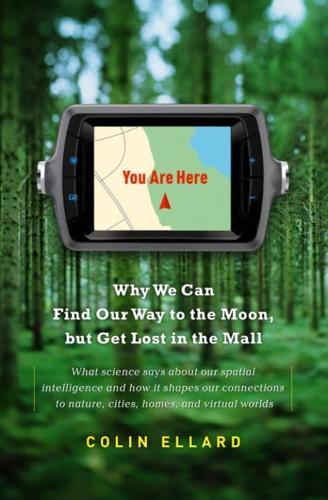
You Are Here: Why We Can Find Our Way to the Moon, but Get Lost in the Mall
by
Colin Ellard
Published 6 Jul 2009
One interesting exception to the low status of the left is found in Asian cultures, in which the primary cardinal direction is the south (the main entrance to the Forbidden City is on its south side, for instance). This being the case, left is the side of the rising sun, and so is afforded privileged status. In the ancient Asian science of feng shui, the orientation of buildings and cities with respect to the cardinal directions was considered to be critical to the health and success of the built environment. Streets and buildings were aligned carefully with such directions, and the human body can be seen in microcosm in some applications of feng shui principles. As our straight, two-legged posture pushes our heads up against the force of gravity, it is a cultural universal that physical height correlates with the direction from which human power emanates.
…
Nevertheless, serious schools of feng shui, with theoretical roots that are thousands of years old, can include a comprehensive effort to align one’s home with prevailing geological forces such as magnetic fields, and principles that guide the construction of well-organized and connected interior spaces with respect to the world outside the walls of the house. Adhering to feng shui principles or other cultural practices that connect our homes to the world outside, both natural and supernatural, can be difficult in houses that lack the contours provided by square or rectangular rooms. Another good example of the influence of culture on the built environment comes from the prevalence of courtyard homes in certain parts of the world, particularly in Islamic countries. One of the benefits of a courtyard construction is that it affords some privacy for residents of the space, but, within the courtyard, it also allows the construction of separate buildings for men, women, and the generations within a family.
…
Given the economic hardship typical of first-generation immigrants, the alleged police discrimination, and the systematic persecution of minority groups by certain sectors of France’s right-wing national government, it is easy to reconstruct a set of plausible causes for the widespread incendiary reaction to the deaths of the two boys. But one element that has received less attention is the built environment that was occupied by those who participated in the violence—that is, the ability of buildings or even neighborhoods to shape collective or individual human behavior. At the time of the unrest, Clichy-sous-Bois was occupied by almost 30,000 people, among them some of the most impoverished in all of France.
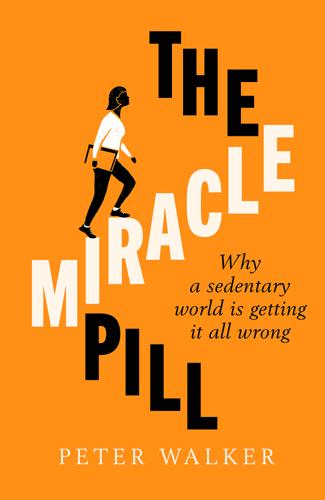
The Miracle Pill
by
Peter Walker
Published 21 Jan 2021
He is clear about where we find ourselves: ‘In terms of rigour in science and public health we are at that stage where we absolutely know that Homo sapiens were designed, as hunter-gatherers, to be routinely physically active, chasing antelopes across the prairie or whatever it was. And while we have not been able to change our biological destiny, we have changed the built environment. So instead of hunting an antelope we get in the car and drive to Sainsbury’s.’17 This book is the story of how routine activity disappeared, and the many consequences it brought. There are several things this book is not. It is not an argument for simply turning back the clock. No one wants a return to mass, repetitive manual labour.
…
This is a vital point to consider in our story of vanishing everyday movement – it is a far broader issue than slightly trite discussions about personal responsibility. As soon as you start examining the world from the perspective of adding activity into your routine, you quickly see how thoroughly, how carefully, and at times how cunningly the built environment that surrounds us has been redesigned over the past seventy or so years to make regular exertion an increasingly difficult, at times almost impossible, choice. To take another example, think about the last time you walked into an office block or large hotel. Almost certainly, the lifts would have been in direct view.
…
I thought: if only everyone in the clinic could get a job as a postman. It was profound. Medicine works, but it’s much better to do it without medicine.’ As we will see in the next chapter, for most people it is, sadly, not that simple. Without something like a job which guarantees daily movement, you are significantly more reliant on the built environment around you, one which often seems to conspire to make physical exertion as difficult as possible. If there is a message for this chapter, perhaps for the entire book, it is that for all the wonders achieved by modern medicine, without concerted, significant, interventionist action at a national political level, the sorts of universal health and social care systems many millions of people take for granted could effectively be gone within a generation.
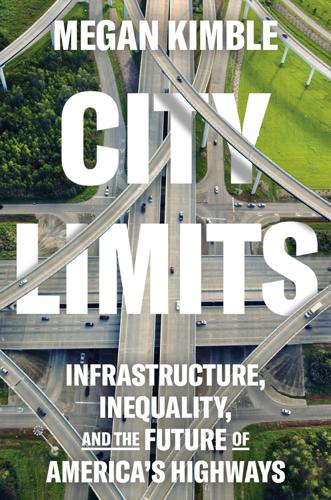
City Limits: Infrastructure, Inequality, and the Future of America's Highways
by
Megan Kimble
Published 2 Apr 2024
As he settled into his new city, Adam set up a Facebook group for his neighborhood and decided to organize a few events to justify the group’s existence. “And I realized, where do we actually go to get together? There wasn’t a good answer to that question,” he says. Bars were no good; people wanted to bring their kids. The closest park felt too far. A restaurant was loud and expensive. “I realized that the built environment profoundly impacts our entire lives, the relationships we have with our neighbors, how we feel when we move around,” he says. He started organizing street fairs and block parties in neighborhoods across San Francisco. The first block party he organized, he chose a street almost at random and knocked on every door, asking the occupant if they wanted to have a block party.
…
The city in upstate New York was proposing removing a portion of its Inner Loop, a sunken highway that circled downtown “like a noose, strangling the downtown area from adjacent vibrant densely populated neighborhoods,” the city wrote in its initial application. Rochester was proposing filling in part of that Inner Loop, replacing it with a city street and using the surplus land for housing, bike lanes, and sidewalks. Beth loved it. “It’s hard to look at the built environment and say, it should be totally different and this is how we’re going to get ourselves there.” The project didn’t get funded the first application round, nor the second. “It took a lot of time for us to get our arms around” the TIGER program, Beth says. And they had to spread their funding across regions and modes; Rochester had also applied for a grant to rebuild its Amtrak station.
…
A highway is a wall of noise, so loud it dulls every other sense. You can’t ever see a whole highway. You can only pause above or below and consider some part of it. And once a highway is built, it is almost impossible to imagine it gone. For most of us, highways simply are—the essential shape of the built environment, never to be unbuilt. But cities have always been layered places, colonized and disputed and reclaimed. It’s all just construction. After Union Street opened, people started asking, what about the rest of the Inner Loop? In 2019, the city began to study tearing down the remainder of the highway, a 1.5-mile stretch that bounded the northern edge of downtown, cutting through Marketview Heights, which remained a low-income Black and Hispanic neighborhood.
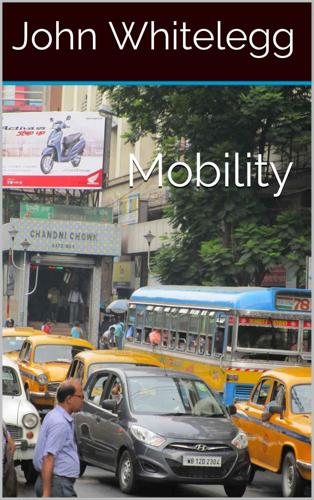
Mobility: A New Urban Design and Transport Planning Philosophy for a Sustainable Future
by
John Whitelegg
Published 1 Sep 2015
The social class variability and its significance for public policy has been summarised by IPPR (Grayling, 2002): “We are able to show that the higher injury rate in deprived areas does not appear to be simply because the environment is inherently more dangerous, for example because deprived areas tend to be dense urban areas with more roads and traffic. Environmental factors are important but there appears to be a deprivation effect over and above the effect of the built environment. We estimate that the likelihood of a child pedestrian injury is four times higher in the most deprived ward in England compared to the least deprived ward, independent of factors such as population and employment density and the characteristics of the road network. A reasonable explanation is that the higher rates of child pedestrian casualties in more deprived areas are the consequence of more dangerous environments combined with higher exposure rates.
…
It downplays the progressive withdrawal of people from public space and it airbrushes out of the picture the social class discrimination that produces disproportionately larger numbers of deaths amongst the poor and disadvantaged. It is an important agent of legitimation and collaboration with a policing, judicial and urban planning system that blames victims and shapes the built environment in favour of the car and to the detriment of the pedestrian, cyclist and public transport user. The Swedish Vision Zero policy is not without faults but it sets out a clear ambition that is so much better than the lack of a clear vision. Reducing deaths and serious injuries to zero is possible and leads inexorably to a fundamental re-engineering of the mobility paradigm.
…
Perceptions of security improved for all age groups, but the greatest improvements were among older people. The authors concluded that the barrier effect (of high traffic speed) was reduced in the three pilot towns (Herrstedt 1992).” Clearly older people need special consideration in the design of the built environment and road traffic environment in which they live and access local shops and services including trips to the doctor, dentist, optician and other services used intensively by this age group. Current built environment priorities are not sensitive to older people. The Mayor of London has been reported as shortening the green phase on traffic light controlled pedestrian crossings (the time allowed for a pedestrian to cross) in order to smooth the traffic flow and reduce congestion (London Evening Standard, 2008).
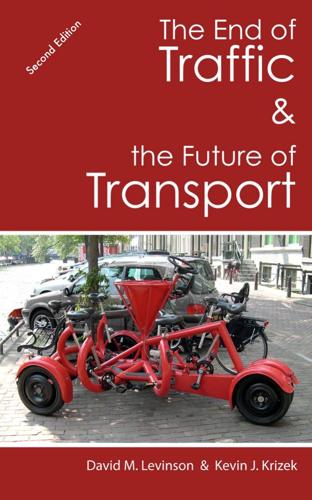
The End of Traffic and the Future of Transport: Second Edition
by
David Levinson
and
Kevin Krizek
Published 17 Aug 2015
It is quite possible that sharing remains a niche while most people choose to own their own cars — the 'Out' scenario dominates. Thus exurbanization and cars driving around without people make extensive use of the newly available capacity. To fully mitigate these congestion effects, pricing (Chapter 13) is required. 11. Adapting the Built Environment The previous chapter alluded to ways in which changes in travel will change the built environment. People are changing how they spend their time and their frequency and purpose of travel. They are mixing physical and virtual travel in previously unseen ways. In this chapter we use shopping travel255 as a lens through which to better understand how transport's demand from land use is also changing the land use in more nuanced ways than appear at first blush.
…
Future transport infrastructure needs to easily change function over time. Adaptability (the ability to change) and Flexibility (the ability to do more than one thing, like serving cars, trucks, buses, and bicycles) are paramount. The prevailing tenor of most transport planning focuses on the built environment, embedded infrastructure, and long-lasting constructs. Such hallmarks are indicative of anti-plasticity. But this is changing. An expert panel of transport specialists from the US recently came to the following conclusion, "The current 'predict and provide' paradigm in transport—in which transport officials plan infrastructure investments based on projected needs 20 or 30 years into the future—was seen as imperiled amid stalled driving demand and growing interest in multimodal alternatives." 287 The tone and content of transport conversations have evolved over recent years.
…
Report of the American Planning Association, May 2014, https://www.planning.org/policy/polls/investing/pdf/pollinvestingreport.pdf 49 US PIRG (2014) "Millennials in Motion" http://www.uspirg.org/reports/usp/millennials-motion 50 This has health effects, the beneficial effects of greater walkability (and thus walking) in urban centers is offset by the additional pollution intake in those same places. See Hankey, Steve, Julian Marshall and Michael Brauer (2012) Health Impacts of the Built Environment: Within-Urban Variability in Physical Inactivity, Air Pollution, and Ischemic Heart Disease Mortality. Environ Health Perspectives 120(2): 247–253. 51 Zipcar (2013) Millennials and Technology http://www.slideshare.net/Zipcar_Inc/millennial-slide-share-final-16812323 52 According to Noreen McDonald "Among young adults, lifestyle-related demographic shifts, including decreased employment, explain 10% to 25% of the decrease in driving; Millennial-specific factors such as changing attitudes and use of virtual mobility (online shopping, social media) explain 35% to 50% of the drop in driving; and the general dampening of travel demand that occurred across all age groups accounts for the remaining 40%."
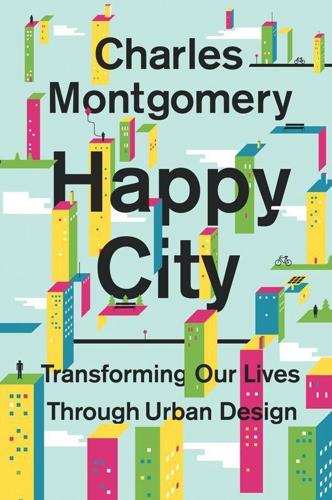
Happy City: Transforming Our Lives Through Urban Design
by
Charles Montgomery
Published 12 Nov 2013
A Reexamination of American Discussion Networks,” Social Networks, October 2011: 331–341. ate together every night: Kiefer, Heather, “Empty Seats: Fewer Families Eat Together,” Gallup, www.gallup.com/poll/10336/empty-seats-fewer-families-eat-together.aspx (accessed March 3, 2012). social desert: Halpern, David, Mental Health and the Built Environment: More Than Bricks and Mortar? (London: Taylor and Francis, 1995). psychotic disorders: Park, Alice, “Why City Life Adds to Your Risk of Psychosis,” Time, September 7, 2010, http://healthland.time.com/2010/09/07/living-in-cities-can-add-to-risk-of-psychoses/ (accessed September 11, 2010). parents’ stress: McConnell, D., R.
…
Forbes, “The Importance of Social Relationships, Socioeconomic Status, and Health Practices with Respect to Mortality Among Healthy Ontario Males,” Journal of Clinical Epidemiology, 1992: 175–82; Veenstra, Gerry, “Social Capital and Health (Plus Wealth, Income Inequality and Regional Health Governance),” Social Science and Medicine, 2002: 849–68; Berkman, Lisa F., “The Role of Social Relations in Health Promotion,” Psychosomatic Medicine, 1995: 245–54. Citizens of sprawl: Leyden, Kevin M., “Social Capital and the Built Environment: The Importance of Walkable Neighborhoods,” American Journal of Public Health, 2003: 1546–51; Williamson, Thad, Sprawl, Justice, and Citizenship: The Civic Costs of the American Way of Life (New York: Oxford University Press, 2010). The 2011 study: “Long-Distance Commuters Get Divorced More Often, Swedish Study Finds,” Science Daily, May 25, 2011, www.sciencedaily.com/releases/2011/05/110525085920.htm (accessed March 3, 2012).
…
Centers for Disease Control: Gardner, Gary, and Erik Assadourian, “Rethinking the Good Life,” in State of the World 2004, 164–79. living in low-density sprawl: Sturm, R, and D. A. Cohen, “Suburban Sprawl and Physical and Mental Health,” Public Health, 2004: 488–96. “death by strangers”: Lucy, William H., “Mortality Risk Associated with Leaving Home: Recognizing the Relevance of the Built Environment,” American Journal of Public Health, 2003: 1564–69. per capita road death rates: “Safety Tips to Keep Your Family Safe: Accident Statistics from the National Safety Council,” Safety Times, www.safetytimes.com/statistics.htm (accessed January 11, 2011). killed by guns: Violence Policy Center, “About the Violence Policy Center,” www.vpc.org/aboutvpc.htm (accessed January 11, 2011).
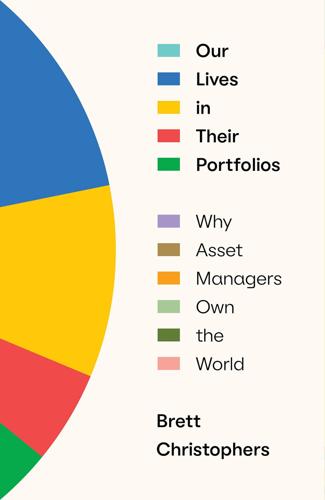
Our Lives in Their Portfolios: Why Asset Managers Own the World
by
Brett Chistophers
Published 25 Apr 2023
These are companies whose core business is owning and operating residential property or infrastructure using their own capital, but which additionally engage in the same activity – that is, investing in income-generating real assets – using third-party investor capital pooled into discrete investment funds. Although the nature of the intervention into the built environment is the same regardless of whose capital is used, the company’s business model is notably different in the two cases: while the core business earns revenue in the form of charges levied on users of the housing or infrastructure, the asset-management side-business earns revenue principally in the form of fees paid by its investment funds’ limited partners.
…
All real assets are vulnerable to the ‘location specific devaluation’ described by Harvey, some being much more vulnerable than others, and hence governments have in many cases stepped in to alleviate the risks that private investors – among which asset managers are increasingly prominent – refuse to take on. Building on the work of Graham and Marvin, other scholars have explained just how profound a transformation of the built environment this de-risking entails. In essence, core physical frameworks of social life continue to be reconfigured specifically to generate dependable financial returns for investors. Phillip O’Neill, for example, has highlighted the ‘key truth’ that ‘the private infrastructure investor seeks an urban configuration through which the infrastructure investment can become profitable’; hence, local-government policy becomes, in the words of Peter O’Brien and colleagues, a matter of ‘translating urban infrastructure into assets matching the needs of institutional investors globally’.15 The only certainty in all of this is that, whatever lengths governments go to in order to de-risk real-asset investment opportunities, the retort from the private sector will always be that they need to go further.
…
For such a successful investor, Schwarzman’s risk aversion, the source said, ‘was really extraordinary’.31 But what we have seen here is that such aversion is in fact not extraordinary at all. Aversion to and avoidance of risk by asset managers is embedded in the very institutional landscape of real-asset investment.32 The second important set of implications of asset de-risking is less directly financial, and more to do with governments’ freedom of movement to plan and shape the built environment in an orderly, coherent and socially beneficial fashion. Configuring assets such as transportation networks or energy systems in such a way as to ensure a steady flow of income for private investors is always a matter of physical as well as financial rearrangement. These are, after all, real assets, and their ability to generate cash predictably can depend on all manner of physical manipulations, from restricting rights of way over the land used by solar farms or wind parks to controlling access to tolled bridges or roads.
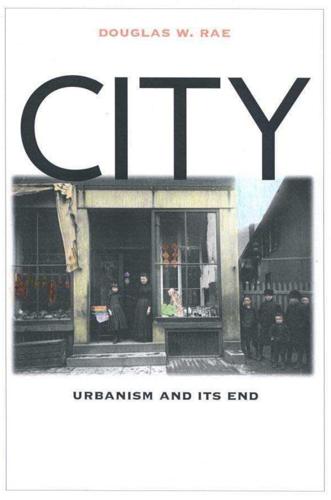
City: Urbanism and Its End
by
Douglas W. Rae
Published 15 Jan 2003
Of course, highway routing is political as well in an urban setting: the Oak Street Connector helped clear out a dense working-class neighborhood, even as it served the purpose of increasing east-west circulation in New Haven’s CBD (its gratuitously ample 500-foot width says a great deal about its implicit purpose). The overall impact of urban renewal may conveniently be parsed into three streams of change: in the built environment, in residential life, and in the fabric of business enterprise. We could, of course, chop the impact into smaller pieces, but these headings will, I believe, serve us well enough. MODERNISM AND THE BUILT ENVIRONMENT Redevelopment brought a wave of modernism to New Haven, and with it, the linear rationalism of its most terrifying proponent: 331 E N D O F U R B A N I S M Man walks in a straight line because he has a goal and knows where he is going; he has made up his mind to reach some particular place and he goes straight to it.
…
The same would have been true for other manufacturers and was doubtless true for many small retailers suffering scorching competition from chain outlets. COMMUNITY PROGRESS INCORPORATED By about 1962, it had become clear that: (1) the built environment could not be transformed in its entirety with any realistic amount of urban renewal money, and (2) not even the most complete transformation of the built environment would convincingly renew the city. Think about it in dollars: Could $725 per capita reverse history? Could ten times that reverse history? Could micro-policy changes reverse macro-historical movements? Did the Lee administration have the capacity, notoriously lacking in redevelopment efforts worldwide, to allocate money so that it would produce the greatest available market response?
…
With quicker restriction, the story of 67 U R B A N I S M urban growth in New Haven—as in New York, Boston, Pittsburgh, Cleveland, Chicago, and scores of other cities—would have been a smaller and poorer story. BUILDING TOWARD 1910 Centered growth caused, and was caused by, a long, high-crested wave of money washing over the built environment. In 1850, New Haven encompassed 5,353 dwellings. By 1910 it held 17,466 dwelling structures housing 29,271 families—almost twelve thousand too many for a single-family housing stock to accommodate.71 These multiunit homes are mostly the two-deckers and threedeckers that so clearly define New Haven’s neighborhood fabric today.
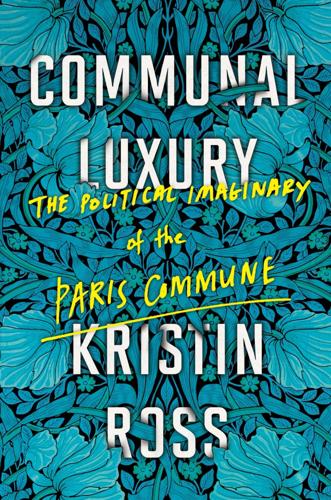
Communal Luxury: The Political Imaginary of the Paris Commune
by
Kristin Ross
Published 6 Apr 2015
The extreme do-it-yourself-ism of Morris, the propensity he showed to learn every aspect of the skills and techniques used from the Middle Ages to the present in the art of fabric dying, for example, is itself a reaction against the kind of siloizing of skills and knowledges then getting underway in the universities of the era. It is impossible to detect a will to specialization in their work. Instead, each of the three manifests an almost Balzacian ability to hold together multiple levels of a complex reality in such a tightly knit system of interconnection that failure in one sphere—say, the built environment, or education—is inevitably related to failure in another. It follows, then, that we might find in the geographer Reclus an ecological argument entirely akin to that of Morris, constructed not in a primarily geographical idiom but in view of the need for aesthetic pleasure: It is not only the restoration and embellishment of our cities that we expect from the man who becomes an artist.
…
Even great buildings can be of admirable beauty when the architects understand the character of the environing site, and when the work of man harmonizes with the geological work of the centuries in a harmonious ensemble.32 In one dialectical movement the communal luxury of public art extends naturally from the built environment—the lived beauty of urban spaces—to fuel the renewal of the fields and of agriculture, and thus human interaction with the natural environment, whereby, renewed, it flows back to the architectural design of great buildings, all in a harmonious continuity between the geological and the human.
…
A systemic problem demanded a systemic solution. The “state of perpetual war” Morris called commerce was at the root of the ruin of the landscape. Industry’s accelerated surge in producing “what on the one hand is called ‘employment’ and on the other what is called ‘money-making’” had flooded the market with banal goods and transformed the built environment into what anthropologist Marc Augé would later call “non-spaces”: nondescript constructions with no bearing on or relationship to the local site on which they are built. Kropotkin describes the huge factories producing quantities of inferior or, in a word dear to Morris, “shoddy” goods: “an immense bulk of the world’s trade,” he writes, “consists of ‘shoddy,’ patraque, ‘Red Indians’ blankets’ and the like, shipped to distant lands.
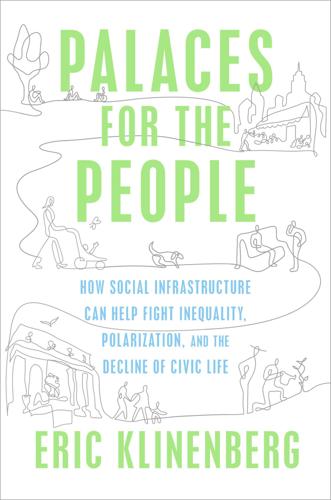
Palaces for the People: How Social Infrastructure Can Help Fight Inequality, Polarization, and the Decline of Civic Life
by
Eric Klinenberg
Published 10 Sep 2018
And, as most policy makers and engineers see it, when hard infrastructure fails, as it did in the great Chicago heat wave, it’s the softer, social infrastructure that determines our fate. “Infrastructure” is not a term conventionally used to describe the underpinnings of social life. But this is a consequential oversight, because the built environment—and not just cultural preferences or the existence of voluntary organizations—influences the breadth and depth of our associations. If states and societies do not recognize social infrastructure and how it works, they will fail to see a powerful way to promote civic engagement and social interaction, both within communities and across group lines.
…
In some cities, we know, poor neighborhoods with high-rise public housing are safer than poor neighborhoods without it, and Newman failed to identify which conditions make some projects more successful than others. He was wrong to conclude that, in the case of crime and housing, “the apartment tower itself…is the real and final villain.” But Newman’s main point, that the built environment helps determine local crime levels, is widely accepted. In fact, the evidence for it is now stronger than ever. Some of that evidence comes from a school of crime prevention that emerged around the same time as Newman’s defensible space theory. Crime Prevention Through Environmental Design (CPTED) begins with the insight that a person who is likely to commit a crime in a certain environment would never consider doing so in another.
…
“is the real and final villain”: Oscar Newman, Defensible Space (New York: Macmillan, 1972), 25. “environment where crimes occur”: C. Ray Jeffery, Crime Prevention Through Environmental Design (Beverly Hills, CA: Sage Publications, 1971), 177, 19. “to curb crime”: John MacDonald, “Community Design and Crime: The Impact of the Built Environment,” Crime and Justice 44, no. 1 (2015): 333–383. “That muggings will occur”: James Q. Wilson and George Kelling, “Broken Windows,” Atlantic, March 1982. “the blueprint for community policing”: Quoted in Bernard Harcourt, Illusion of Order: The False Promise of Broken Windows Policing (Cambridge, MA: Harvard University Press, 2001), 3.
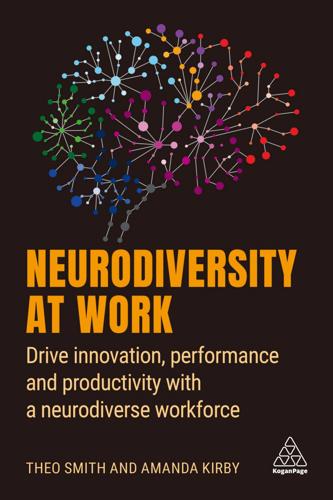
Neurodiversity at Work: Drive Innovation, Performance and Productivity With a Neurodiverse Workforce
by
Amanda Kirby
and
Theo Smith
Published 2 Aug 2021
She has specialized in inclusive environments and accessibility since 2001, ensuring that client facilities are safe, accessible and inclusive for everyone. Her work specializes in access, inclusion and wellbeing in the built environment and includes auditing of existing places, appraisals of new designs (buildings and external environments), stakeholder engagement, co-design and advisory services. She is excited to be technical author for a new BSI guide, PAS 6463: ‘Design for the Mind: Neurodiversity and the built environment’1 informed by a steering group of experts from across the UK. The PAS guide will provide information for designers, planners, specifiers, facilities managers and decision-makers on particular design features (such as lighting, acoustics, and finishes) which can make public and mainstream environments more inclusive for everyone.
…
It is in fact the diversity that crosses all diversities and if we can crack the cognitive enigma code, we can truly and positively transform the world of work for the better, enable true inclusivity and all live and prosper in a world where we can have a sense of belonging. People with neurological differences are not incomplete versions of ‘typical’ people or flawed. People with neurological differences are not broken and certainly don’t need fixing! The built environment, systems, processes and organizations are more likely to be broken, or there are hurdles in place that limit progress. At no time in the past 50 years have there been the changes that have been seen in recent times. We are seeing forced change on a global scale that will alter the way we see the world of work.
…
I’m excited to have the opportunity to be involved in developing this guidance and thankful to the huge number of contributors (both professional experts and individuals with a range of conditions) who are helping to make this possible. ‘We all hope to see a shift in approach by everyone in the built environment sector, so that neuro differences are seen in future as a fundamental everyday component considered as part of any good design, not an extra.’ So if this is about buildings and spaces in the future, what about learning and working practices? What will they look like? Is the future a really neurodiverse world?

Street Smart: The Rise of Cities and the Fall of Cars
by
Samuel I. Schwartz
Published 17 Aug 2015
Each of them wrote the same three names, in the same order: Hitler, Stalin, and Walter O’Malley. I was an adult before I realized we were both part of a revolutionary change in the way Americans lived, worked, and especially moved from place to place. Over the course of the next fifty years, the most important parts of the built environment—the streets on which we lived, played, and worked—were impoverished by the seemingly irresistible centrifugal forces of sprawl and suburbanization. My own block, 83rd Street between 19th and 20th Avenues, stopped hosting stickball games and the kid-run “83rd Street Olympics.” It no longer featured a daily lineup of kids sitting on curbs as if they were benches.
…
One kid would stand in as a traffic cop to direct traffic at the intersection with a “signal.” Eventually someone would become bored and the game would devolve into “cops and red-light-runner.” When it came time for college, Morgan chose Columbia University in New York City, which was, in terms of the built environment, about as distant from the DC suburbs as Mars. And she adored it. Today she is an engineer and planner working in my company’s Los Angeles office in bike-lane design and bike-share planning for cities. She does so on a computer running very sophisticated programs rather than using a chunk of chalk on a strip of asphalt, but it’s not hard to see the line connecting one with the other.
…
There she, along with Transportation Commissioner Janette Sadik-Khan, a bona fide transportation rock star, led the work on the city’s 2010 Active Design Guidelines, which have become a model for designing buildings, roads, and neighborhoods that promote activity, especially active transportation.g The guidelines should sound familiar by now, recommending, among other things, “accessible, pedestrian-friendly streets with high connectivity, traffic calming features, lighting, benches, and water fountains [and] developing continuous bicycle networks and incorporating infrastructure like safe indoor and outdoor bicycle parking.” There is such broad consensus on these sorts of things that, as Karen Lee reminded me, “not doing anything is a contradiction of every bit of evidence we have.” The Guidelines don’t limit themselves to urban design—those portions of the built environment in public spaces like roads, sidewalks, and bikeways. They also address the “micro” side of active transportation, which is something that transportation engineers tend to forget: the way we design the interiors of our buildings. Thus, the Active Design Guidelines also call for “providing a conveniently located stair for everyday use, posting motivational signage to encourage stair use, and designing visible, appealing, and comfortable stairs . . .
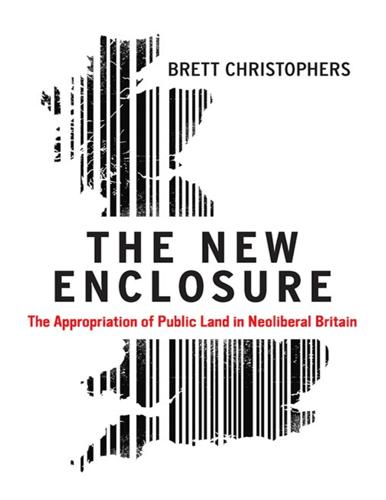
The New Enclosure: The Appropriation of Public Land in Neoliberal Britain
by
Brett Christophers
Published 6 Nov 2018
Cheshire, ‘Urban Containment, Housing Affordability and Price Stability – Irreconcilable Goals’, SERC Policy Paper 4, 2009, p. 9, at eprints.lse.ac.uk) 5.5UK annual housing rental payments, 1985–2015 (Source: Office for National Statistics) 5.6UK real estate sector: gross value added by sub-category, 2005 and 2014 (Source: Office for National Statistics) 5.7UK private non-financial corporations: operating surplus, 1998–2014 (Source: Office for National Statistics) List of Abbreviations ASI Adam Smith Institute BLP Berwin Leighton Paisner BRB British Railways Board BTC British Transport Commission CABE Commission for Architecture and the Built Environment CPS Centre for Policy Studies CLT Community land trust DCLG Department for Communities and Local Government DEFRA Department for Environment, Food & Rural Affairs DHSS Department of Health and Social Security EFA Education Funding Agency FTE Full-time employee GLA Greater London Authority GLC Greater London Council GPA Government Property Agency GPU Government Property Unit GVA Gross value added HCA Homes and Communities Agency HDV Haringey Development Vehicle IEA Institute of Economic Affairs IFRS International Financial Reporting Standards IPPR Institute for Public Policy Research LCC London City Council LGA Local Government Association LSA Land Settlement Association MoD Ministry of Defence MoJ Ministry of Justice NAO National Audit Office NEF New Economics Foundation NHS National Health Service OFT Office of Fair Trading OGC Office of Government Commerce ONS Office for National Statistics PACE Property Advisers to the Civil Estate PLI Public Land Initiative PRS Property Repayment Services PSA Property Services Agency PSC People with Significant Control register RBS Royal Bank of Scotland RIFW Regeneration Investment Fund for Wales RLA Redundant Lands and Accommodation Acknowledgements My first and most important thanks are to my family: Agneta, Elliot, Oliver and Emilia.
…
In internalizing the contradictions of capitalism, Harvey therefore points out, the land market ‘thereby imposes those contradictions upon the very physical landscape of capitalism itself’.2 The economic disorder generated by speculative land markets is at once, and necessarily, a disorder that is geographical and developmental, playing out in the built environment and in the area of land use. It is overbuilding booms. It is home foreclosures. It is potentially also, as we shall shortly see, an increase in generalized social disorder. And, of course, the more widely speculative land markets spread as more and more land is privatized, and as actors accordingly are more and more incentivized to chase monopoly rents and capital gains speculatively, the greater the potential for disorder in economies – and geographies, and so forth – and the greater the potential scale of this disorder.
…
And, significantly, it would probably not have left the government open to misconceived charges of reckless asset-stripping. Ways of seeing matter. One thing that accrual accounting, unlike cash accounting, can help make visible, for instance, is the ‘true’ value of assets owned by local government. In 2009, the Commission for Architecture and the Built Environment (CABE) published a fascinating report deploring the fact that parks and green spaces owned by British local authorities were not being ‘properly’ valued in most local authority accounts. Where these particular assets were concerned, the accounts had not yet caught up with the brave new world of accruals, and typically a simple nominal value would instead be recorded: ‘it may come as a shock to learn that most councils value public parks at just £1 each.
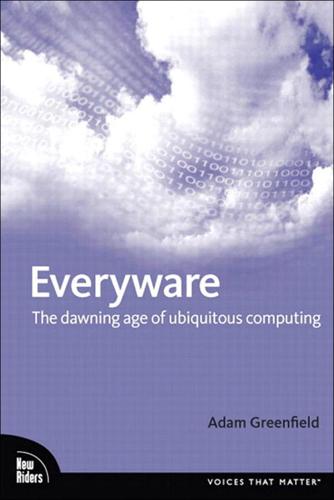
Everyware: The Dawning Age of Ubiquitous Computing
by
Adam Greenfield
Published 14 Sep 2006
In it, as in the series of seminal papers and articles that followed, Weiser developed the idea of an "invisible" computing, a computing that "does not live on a personal device of any sort, but is in the woodwork everywhere." What Weiser was describing would be nothing less than computing without computers. In his telling, desktop machines per se would largely disappear, as the tiny, cheap microprocessors that powered them faded into the built environment. But computation would flourish, becoming intimately intertwined with the stuff of everyday life. In this context, "ubiquitous" meant not merely "in every place," but also "in every thing." Ordinary objects, from coffee cups to raincoats to the paint on the walls, would be reconsidered as sites for the sensing and processing of information, and would wind up endowed with surprising new properties.
…
Thesis 03 Everyware is information processing embedded in the objects and surfaces of everyday life. Part of what the everyware paradigm implies is that most of the functionality we now associate with these boxes on our desks, these slabs that warm our laps, will be dispersed into both the built environment and the wide variety of everyday objects we typically use there. Many such objects are already invested with processing power—most contemporary cameras, watches, and phones, to name the most obvious examples, contain microcontrollers. But we understand these things to be technical, and if they have so far rarely participated in the larger conversation of the "Internet of things," we wouldn't necessarily be surprised to see them do so.
…
Information architect Peter Morville calls such interventions in the city "wayfinding 2.0"—an aspect of the emerging informational milieu he thinks of as "ambient findability," in which a combination of pervasive devices, the social application of semantic metadata, and self-identifying objects renders the built environment (and many other things besides) effectively transparent to inquiry. But as we shall see in some detail, everyware also functions as an extension of power into public space, whether that space be streetscape, commons, station, or stadium—conditioning it, determining who can be there and what services are available to each of them.
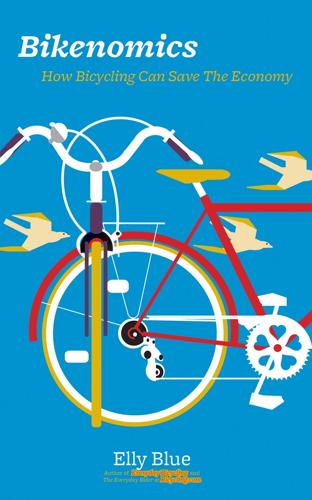
Bikenomics: How Bicycling Can Save the Economy (Bicycle)
by
Elly Blue
Published 29 Nov 2014
The book left me queasy and shaken and understanding a bit better why people opt to move to retirement homes rather than living “independently” in trapped isolation. It’s all too easy to place the full responsibility for traffic safety on the actions of individuals; but it’s easier to forget what unforgiving limits the built environment can set on those actions. In a car-oriented world, old age becomes a disability for many, long before it might in a more walkable neighborhood. The more car-reliant your daily life is, the lower the threshold becomes for frailness, injury, or failing eyesight to be experienced as outright disabling.
…
Distances have become too great, cities are too sprawling, and we are all too deeply invested in lives that are spread out across a landscape that has been designed to suit the automobile. Transit is important, but can only take us so far in this dispersed landscape without massive and costly redevelopment of the built environment that is not always done in a way that proves useful and attractive. This is the genius of the bicycle. Most bike trips are less than 30 minutes. When people ride to get in shape, they tend to go farther,178 and people who already commute by bike seem content to ride greater, on average, distances to and from work.
…
November 9, 2010 51 Wilmot, E., “Sitting for protracted periods increases risk of diabetes, heart disease, death,” Diabetologia. 2012 52 de Hartog, J., “Do the Health Benefits of Cycling Outweigh the Risks?” Environmental Health Perspectives. 2010 53 Lopez-Zetina, J., “The link between obesity and the built environment,” Health and Place. 2006 54 Saelens, B. et al., “Obesogenic Neighborhood Environments, Child and Parent Obesity,” American Journal of Preventive Medicine. 2012 55 Goodyear, S. “Fat City: The Way Your Neighborhood is Built Could be Killing You,” Grist. May 19, 2011 56 Rochon, L., “Unhealthy Neighborhoods Play a Big Role in Obesity, Diabetes Epidemic,” The Globe and Mail.
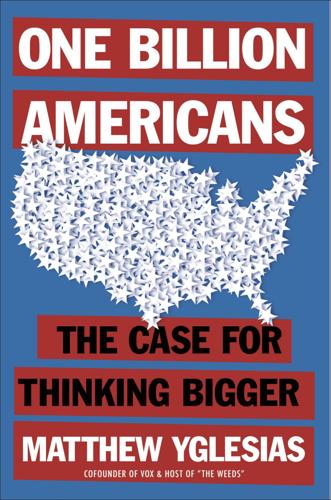
One Billion Americans: The Case for Thinking Bigger
by
Matthew Yglesias
Published 14 Sep 2020
“At worse, half-a-billion-dollar wind farms are dying because 50 people shouted at their county commissioners during a public meeting.”* Building a bigger America and building a cleaner America both require us to break out of the current dysfunctional veto-laden approach to building things, and find a way back to a future-oriented mind-set that says change is good. And that means changes not just to the built environment, but to how we think about family life and the division of labor between parents and society writ large. CHAPTER 3 The Dismal Economics of Child Rearing Back in 2017, the American fertility rate hit a record low of 1.76 expected births over the lifetime of the average woman.
…
Housing organizer Alex Baca and Brookings Institution housing economist Jenny Schuetz talk about “gentle density,” which “could increase the number of homes available and bring down average housing prices in high-cost locations, while retaining the physical scale of the neighborhood.”* And, indeed, allowing a few small apartments to sprout in a single-family neighborhood can drastically increase the availability of affordable housing without fundamentally altering the scale or character of the built environment. This is a good vision of what today’s pricey, auto-dependent suburbs might look like in a post-reform future. Existing single-family neighborhoods will continue to be single-family neighborhoods but will be dotted with a few apartments or town house clusters here and there. At the same time, it would be a mistake to go too far in offering reassurance.
…
Not only are these rules uneconomical, but they generally conflict with cities’ other stated goals. Most major urban centers in the United States have voting bases and elected officials who believe that climate change is a big problem. There’s no reasonable way to tackle that problem without replacing much of the built environment with more modern, more energy-efficient structures. But in historically designated neighborhoods this is generally impossible. At times, cities even prevent homeowners from installing modern energy-efficient windows—insisting instead on keeping old-fashioned draftier wooden ones in place. In specific situations one can imagine a rationale for this kind of broad-brush preservation.

The Human City: Urbanism for the Rest of Us
by
Joel Kotkin
Published 11 Apr 2016
In contrast, Eric Klinenberg strongly supports efforts to densify cities and discourages the building of single-family homes. To him, the 2,500-square-foot (232-square-meter) home in the suburbs represents both an environmental disaster and a threat to the affordability of small residences for “singletons.”115 Nothing better illustrates the shift in the built environment of a post-familial society than the proliferation of plans for the construction of “micro-apartments” in cities like Singapore, Shanghai, Tokyo, New York, Seattle, and San Francisco. These residences of less than 300 square feet (28 square meters) would make even a two-bedroom co-op in Brooklyn, not to mention a single-family house like that of my Flatbush ancestors, seem like the Ponderosa Ranch and obviously are intended to house single young professionals; it is inconceivable for middle- or even working-class families to inhabit such spaces.116 PRICING OUT FAMILIES As previously mentioned, middle-income housing affordability constitutes a huge constraint on family formation in many cities.
…
Massive farmland losses in the United States—which, since 1950, represent an area larger than the states of Texas and Oklahoma together—have been more than compensated for by total agricultural productivity, which has increased 160 percent.189 Expanding cities are not the primary cause for the loss of most US farmland—overall, urban areas account for only 3 percent of the country’s land area—but instead, such things as market forces, technological changes, and the business decisions of farmers themselves seem to be the primary cause.190 This is also true in Canada, where urban development covers only 3 percent of the land in the country’s agricultural belt.191 The Malthusian idea is even more absurd in Australia, where the built environment covers only 0.2 percent of the country’s total area.192 Since 1981, Australia’s agricultural land has shrunk by an area double the size of the state of Victoria. Urbanization is not a factor. The agricultural land taken out of production since 1981 is more than 50 times the land area of all the urbanization that has developed in Australia since western colonization began.193 Indeed, the world is not facing a crisis of too little arable land or too poor food production, as commonly asserted by neo-Malthusians.
…
God’s Own Junkyard: The Planned Deterioration of America’s Landscape, New York: Holt, Rinehart and Winston. BLANCHFLOWER, David G. (2010, January 21). “Credit Crisis Creates Lost Generation: David G. Blanchflower,” bloomberg.com, http://www.bloomberg.com/apps/news?pid=newsarchive&sid=aJ62ylOdJaAI (webpage discontinued). BOARD ON ENERGY AND ENVIRONMENTAL SYSTEMS. (2009). Driving and the Built Environment: The Effects of Compact Development on Motorized Travel, Energy Use, and CO2 Emissions. BOCK, Arthur E.R. (1955). Manpower Shortage and the Fall of the Roman Empire in the West, Ann Arbor: University of Michigan Press. BOGART, William. (2006). Don’t Call It Sprawl: Metropolitan Structure in the 21st Century, Cambridge: University Press.
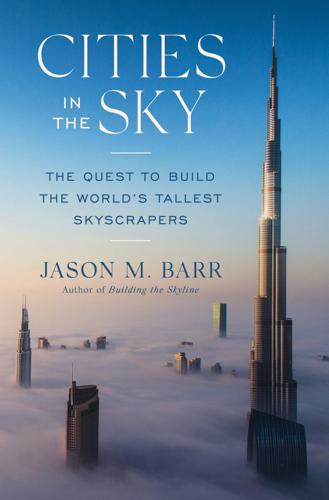
Cities in the Sky: The Quest to Build the World's Tallest Skyscrapers
by
Jason M. Barr
Published 13 May 2024
The preservationists seek to keep London’s focus on its past; while the real estate community argues it needs a modern skyline to make it more future oriented. In the end, the two factions have reluctantly compromised—or rather, compromise has been foisted on them by the power brokers: London’s city planners, who act as the gatekeepers. On one side are groups like London Heritage and the Commission for Architecture and the Built Environment (CABE). Their aim is to preserve, preserve, and preserve—to not only keep London’s buildings the way they are but to “freeze” London as an icon of its Londonness, arguably in the way central Paris is frozen as a remnant of the mid-nineteenth-century city. To the preservationists, it is a matter of pride and beauty and the desire to keep alive London’s heritage.
…
Swiss Re was going to need all the help it could muster to get planning permission with “extended negotiations with the City of London Corporation and English Heritage, not to mention many other bodies, including the Royal Fine Arts Commission (RFAC) and the Commission for Architecture and the Built Environment (CABE),” documents author Ken Powell. Over the course of negotiations, Foster eventually produced a flat and squat structure. One day, one of his associates brought a model to Peter Rees, who thought it looked too much like a pumpkin, and as he recalled to me, “I looked at it and said, ‘Don’t you think it might look better if it was thinner and taller?’
…
G., 263–64 Bangkok, King Power Mahanakhon (“Jenga”) Tower (2016), 165, 166 Bank of America (BoA) Tower (2009) (New York City), 272–74 Bank of China Tower (1990) (Hong Kong), 120, 121, 141 Bank of Manhattan Building (1930) (New York City), 32, 49 Barnard, Eunice Fuller, 243 Barras, Richard, 99 Bascomb, Neal, 49 Bassett, Edward, 40–41 “Battle for the First,” 5–6, 11, 15, 25–28 Beaux Arts architectural style, 47, 48 Beedle, Lynn S., 218 Beijing CCTV Headquarters (2012), 161, 162 Xiong’an New Area SEZ, 157 Bertaud, Alain, 258 Bethlehem Engineering Company, 34, 35 Big Bang (Financial Reforms in the United Kingdom), 102 Big Ben (Great Clock of Westminster) (1859) (London), 6 Bilboa (Spain), Guggenheim (1997), 87 Billionaires’ Row (New York City), 239–43, 239, 254, 313n bird strikes, 276 Blair, Tony, 103 Brady, Tom, 250 Bremer, Gordon, 126 British Museum (London), 103 Broadacre City, 281 Brooks, Peter C., III, 6, 19–22 Brooks, Shepherd, 6, 19 Brook’s Wharf fire (1876) (London), 95–96 Brown, Floyd deL., 34, 35, 36 Brueckner, Jan K., 255 brutalist architectural style, 102, 263 Buffett, Jimmy, 250 Buffett, Warren, 117 building regulations, 39, 252, 253–54, 255–56, 258, 260 Bulfinch’s Mythology, 30 Bunshaft, Gordon, 65, 66 Burj Al Arab (1999) (Dubai), 201–2 Burj Khalifa (2010) (Dubai), 181 area of, 188 aspect ratio of, 241 as beacon, xv, 124 buttressed core structure, 186 construction speed and, 83 ego theory and, 182, 190, 237 foundation methods and, 177 height secret of, 59 history of, 183–91, 310n observation decks and, 182, 185, 189 reinforced concrete and, 167 sewage and, 190 technological design innovations and, 67, 186–88 triaxial geometric design pattern, 186, 187 as world’s tallest human-made object, 113, 123, 182–83, 220 Burnham, Daniel, 25, 26–27 buttressed core structure, 186, 188, 206 CABE (Commission for Architecture and the Built Environment), 83, 88, 108 Canary Wharf (London), 102 Canton (or Cohong) System, 126 Capital in the Twenty-First Century (Piketty), 251, 254 capitalism China and, 146, 157 Dubai and, 201 free-market, 120, 128 global connectivity of, 231, 292 income inequality and, 244 Saudi Arabia and, 204 skyscrapers as neighbors and, 40 United Kingdom and, 92 carbon footprints, 276–81, 286 carbon taxes, 280–81 Carroll, John M., 127 CCTV Headquarters (2012) (Beijing), 161, 162 Cesarz, Michael, 118 Chang, Yun-chien, 140 Cheesegrater (2010) (London), 107, 107 Chen Shui-bian, 122 Cheshire, Paul C., 110–11 Chicago bank-vault scheme, 22 banned skyscrapers, 28, 43 Board of Trade Building (1885), 10, 14 decentralization and deindustrialization of, 61 developers and, 15–16 Dewitt Chestnut Apartments (1966), 70, 71, 76–77 FAR rules and, 51, 57 foundation methods and, 10 Great Chicago Fire (1871), 13, 13, 15, 23 historical growth of, 11–15 Home Insurance Building (1885), 3–6, 3, 7–8, 11, 15, 23–27 Illinois (skyscraper), 281–84, 282 John Hancock Center (1968), 67, 72, 166, 178 Lake Point Tower (1968), 186–87, 188, 189 Lake Shore Drive Apartments (1949), 52 Loop, 14, 15, 22, 57 Manhattan Building (1891), 8 Masonic Temple (1892), 43 Monadnock (1893), 20 Montauk Block (1882), 6, 20–22 Portland Block (1872), 20 Rookery (1888), 13, 18, 20, 26 zoning and, 43–44, 52, 57 See also Sears (Willis) Tower Chicago Board of Trade, 14 Chicago Consensus, 27 Chicago School of Architecture, 16–19, 21, 48, 49, 66 China anti-corruption campaign and, 163–64 capitalism ascendancy and, 146, 157 CCTV Headquarters (2012) (Beijing), 161, 162 centralized economic development strategy, 237 Communist Party agenda and, 137, 138, 141, 150, 157, 160, 163 Hong Kong and, 129, 141, 142–43 Jin Mao Tower (1999) (Shanghai), 145, 148, 155, 168 Pudong strategy and, 150–51 Shanghai World Financial Center (2008), 145, 148–49, 149 Skyscraper Fever and, 156–60, 237 Three Brothers story and, 147–50 urban ranking system in, 160 urban workers and, 158 urbanization in, 157–58 zero-COVID policy and, 162–63, 164 See also Shanghai Tower Chrysler Building (1929) (New York City) Abu Dhabi SWF purchase and, 90 aspect ratio of, 241 curtain wall facade, 9, 48 height of, xiii, 32, 37 land-lease system and, 90, 158–59 rigid steel frame of, 8, 166 Citicorp Center (1977) (New York City), 169–70 Civil War, 23 Clark, W.
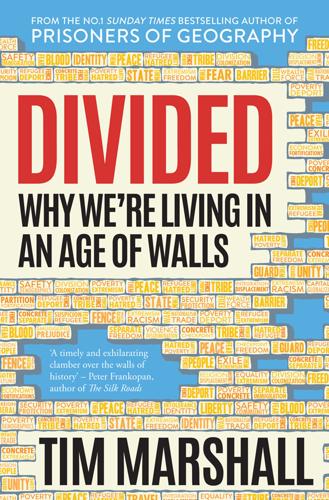
Divided: Why We're Living in an Age of Walls
by
Tim Marshall
Published 8 Mar 2018
They are testament to the fact that this oil-rich country of 186 million people has a burgeoning middle and upper-middle class, and how wealth distribution is changing in its urban areas. The boom in such properties is partly a response to high crime rates, as we’ve seen. However, ironically, a 2014 study published in the Journal of Housing and the Built Environment suggested that moving to a house inside the fortress might actually increase the chances of someone trying to break into your property. Anyone well off enough to be able to live in a gated community is assumed by burglars to have something worth stealing. The report did acknowledge that the compounds offer levels of protection higher in general than those outside them, but said that they leave public spaces deserted and at higher risk of crime.
…
.; Christiaensen, Luc; Dabalen, Andrew L.; and Gaddis, Isis, Poverty in a rising Africa: overview (Washington, DC: World Bank Group, 2015) Breetzke, Gregory D., Landman, Karina and Cohn, Ellen G., ‘Is it safer behind the gates? Crime and gated communities in South Africa’, Journal of Housing and the Built Environment, vol. 29, no. 1 (March 2014), pp. 123–139 Ediagbonya, Michael, ‘A Study of the Portuguese–Benin trade relations: Ughoton as a Benin port (1485–1506)’, International Journal of Humanities and Cultural Studies, vol. 2, no. 2 (July–September 2015), pp. 206–221 Fisher, Max, ‘The dividing of a continent: Africa’s separatist problem’, The Atlantic, 10 September 2012 Global Study on Homicide 2013, United Nations Office on Drug and Crime (UNODC), March 2014 ‘International Court of Justice gives judgment in Cameroon–Nigeria boundary dispute’, International Court of Justice Press Release, 10 October 2002 (www.un.org/press/en/2002/icj603.doc.htm) ‘Land and Maritime Boundary between Cameroon and Nigeria’, The Hague Justice Portal (www.haguejusticeportal.net/index.php?
…
Macgoye) 159 Communist Party Chinese government 12, 15, 18–21, 23–33 Soviet Union 188 Congress Party, India 132 Cornish nationalists 225 Coulter, Ann 39 Creemers, Rogier 28–9, 30, 31 crime rates, African 172 Crisis Resolution Security Services 40–1 Croatia 2, 199, 200 Cultural Revolution, Chinese 15 cyber-security legislation, Chinese 30–3 Cyprus 244 D Dalits/Untouchables 146–9 Darling, Patrick 160 d’Azeglio, Massimo 196 defection from East Germany 185–6, 188–90 Defense Threat Reduction Agency (DTRA) 107 Democratic Republic of Congo (DRC) 164, 166 Deng Xiaoping 15–16, 21, 26 Denmark 2, 200, 202–3 Deterling, Harry 186 Dome of the Rock 82 drug running 46, 51–2 Duffy, Gillian 234 Durand, Henry Mortimer 143 Durand Line 143 Dynamo Dresden ‘Ultras’ 210 E e-commerce 33 East Germany 183–7, 188–9, 190–1 East Pakistan see Bangladesh Eastern European migrants 194–6, 234–5 Eastern Turkestan Republic 17 The Economist 173 education China 24–5 Germany 191 Israel 85 Middle East 115 United Kingdom 231 United States of America 58–9, 63–4 Edward I of England, King 222 Egypt 78, 89–90, 101, 106 Egyptian–Israel border wall 78 English Channel 200 Eritrea 165 Estonia 2, 198 Ethiopia 165 Europe 2, 6, 116, 186–8 European Commission 197 European Economic Community (EEC) 193 European Union 3, 6, 193 border controls 198–200, 210–11 dilution of sovereignty 193–4 Eurozone 194, 196 financial crash (2008) 196 freedom of movement 194–6 immigration 194–6, 197–202, 203–11, 246, 250–1 Muslim population and integration 203–6, 239–40 nationalism 6, 193, 196–8, 206–12 public services 201–2 terrorism 200, 201, 205 uniting East and West Europe 194–6 see also individual countries by name F Facebook 4, 29 Farook, Syed Rizwan 51 Farrakhan, Louis 65 Fatah 87, 88–9 Federally Administered Tribal Areas 144 Fergany, Nader 112 financial crash (2008) 196 financial inequality 175 Africa 170–1, 172–3, 174, 176–7 China 12, 20, 21–3, 26 Germany 191 Israel 81–2, 85 United Kingdom 231–3 First Intifada (1987–93) 74, 90 flooding 133–6 Foreign Affairs magazine 205–6, 246–7 foreign aid budgets 250 France 201–2, 203, 204–6, 211 Freedom Party, Austria 211 G Gandhi, Indira 129 Gandhi, Mahatma 125, 147 Gandhi, Rajiv 129 gated communities 172–6 Gaza 74, 87–90, 245–6 General Law of Population (1974), Mexican 50 Gerges, Fawaz 78, 114 Germany ageing population 201 Berlin Wall 1, 183–4, 185–6, 188–9, 192 East and West Germany 183–93 immigration 201, 207–11 Muslim population figures 204 right-wing parties 209–11 unification 189–93 Ghana 169, 176 Gleicke, Iris 209 globalization 4, 53, 170, 233, 249 ‘Gold Star parents’, US 61 Good Friday Agreement (1998) 226–7 Goodhart, David 232–3 Goodwill Zwelithini kaBhekuzulu, King 171 Gorbachev, Mikhail 1, 188 Graham, Lindsey 40 Great Depression 46 Great Firewall of China 27–33 Great Wall of China 12–16 Greece 2, 194, 199, 200–1, 205, 207 Green March, Moroccan 156 Green Zone, Baghdad 100–1, 243–4 Guizhou province, China 24 H Hadith 113 Hadrian, Rod 40 Hadrian’s Wall 217–18, 219, 220–1 Hamas 78, 87–9, 91, 93 Han people 13–14, 17, 18, 19, 27 Handala 72 Haredi Jews 80, 81–4 Hari, Michael 41 Harkat-ul-Jihad al Islami 132 Heyer, Heather 64 Hezbollah 102 Himalayas 19, 134, 140 Hindus 125, 128–9, 131–2, 135, 145–50 Hollande, François 205 Honecker, Erich 188 Houphouët-Boigny, Félix 169 Houthis’ forces, Shia 104, 108 hukou system 24 Human Rights Watch 130 human settlement, early 4 Hungary 2, 188, 194, 199–200, 205, 207, 246 hunter-gatherers 2 Hussein, Saddam 101, 107, 109, 111 Hutus 166 I ijtihad 113 immigration within Africa 171–2 Egyptian–Israel border 78 European Union 194–6, 197–202, 205–6, 207–12, 246, 250–1 importance of integration 250–1 India 124–5, 126, 127, 128–32, 135, 248 Kuwait–Iraq border 110 Mexico 44–5, 50 ‘open borders’ theory 246–9 United Kingdom 234–5 United States of America 41, 46–51, 56–7 Immigration and Naturalization Service (INS) 46–7 independence movements, African 155–7, 164–5 India 19 Bangladesh border fence 2, 123–5, 130, 133 Bango Bhoomi theory 132–3 Bhutan and Nepal borders 140 caste system 145–9 Comprehensive Integrated Border Management System (CIBMS) 141–2 immigration 124–5, 126, 127, 128–32, 135 Kashmir – ‘Line of Control’ 141, 142, 143 Myanmar border and Naga tribes 138–40 Pakistan border 2, 140–3, 145 partition of 125–6, 127, 140, 141 religious divisions 125–6, 129, 131–3, 135, 145–9 unrest in Assam 128–30 India Pakistan Border Ground Rules Agreement (1960–61) 142 Initium Media 29 Inkatha Freedom Party 168 Inner Mongolia 17 International Court of Justice (ICJ) 167–8 International Organization for Migration 134–5 internet 5, 27–33, 112, 113 Iran 2, 6, 102, 104, 105, 106, 108, 110, 111, 116, 144 Iran–Iraq War 5 Iraq 2, 42, 100–1, 103–4, 107–8, 109–10, 111, 116, 246 Iraq War (2003–11) 100–1, 109, 116 Iraqi Kurdistan 111 Ireland 229, 235 Iron Curtain 184, 186–7 Islam in Africa 170 Dome of the Rock 82 ijtihad and the ‘closing of the Arab mind’ 113 in India 125–6, 129 integration in the EU 203–6 radical organizations 18, 51, 79, 101, 104, 105, 107, 114, 128, 137, 246 Sunni and Shia division 4, 5, 6, 102–3, 104–6, 107–8, 109, 115, 116, 144 Uighur Muslims 18 in the United Kingdom 204, 237–9 Islamic State (IS) 18, 79, 104, 105, 107, 114, 246 Israel 1, 6 Arab population 84–6 Bedouin community 85–6 Christian population 85 comparative stability 92–3 division amongst Jews 80–4 education 85 ethnic divides 79 financial inequality 81–2, 85 gender divisions 82–3 Israel Defense Force (IDF) 86 political divides 83 religious sites 82–3 Israel and Palestine 1, 6, 71–3 East Jerusalem 74 Gaza border 78, 245 history of borders dispute 73–4 Iron Dome anti-missile system 245–6 Israeli point of view 74, 76–8, 79, 84 Jewish settlements in the West Bank 74, 76 Palestinian point of view 74, 76, 78, 90–1 suicide bombers 76–7, 78, 245 two-state solution 77, 84, 88, 92 ‘Walled Off Hotel’ 72–3 West Bank dividing wall 71–3, 74, 76–7 Italy 196, 197, 200, 201, 205 Ivory Coast 169 J Jabotinsky, Ze’ev (Vladimir) 77–8 Jacobite army 220–1 Jamaat-ul-Mujahideen 132 James VI of Scotland and I of England, King 222 Japan 20 Jerusalem 74, 93 see also Western Wall jihadist organizations 18, 51, 79, 101, 114, 115 see also Islam; Islamic State (IS); terrorism Jinnah, Muhammad Ali 125 Jones, Reece 124, 133 Jordan 76, 91–2, 106–7 Journal of Housing and the Built Environment 175 Judt, Tony 197 Juncker, Jean-Claude 197 Jung, Carl 186 K Karachi Agreement (1949) 142 Kashmir 141, 142, 143 Kassem, Suzy 95 Kenya 159, 165 Khan, Abdur Rahman 143 Khan, Humayun 61 Khan, Khizr and Ghazala 61 Khatun, Felani 124 Klein, Horst 186 Kohl, Helmut 188 Koran 113, 116 Kornbluth, David 77, 79, 84 Krenz, Egon 188 Kshatriyas 146 Kurdistan/Kurds 110–11 Kuwait 2, 106, 109–10 L Labour Party, UK 233 Lagos, Nigeria 174 Lambert, Charles 205–6 Land and Maritime Boundary dispute 164–5, 167 Latin America 174 see also Mexico Latvia 2, 198 Le Guin, Ursula K. 119 Le Monde newspaper 205 Le Pen, Marine 211 Lebanon 42, 91 Liberia 166 Libya 101, 106 Lincoln, Abraham 65 Lithuania 2, 198 Louisiana Purchase 43 Lu Wei 32–3 M Macedonia 2, 200 Machel, Graça 173 Malik, Tashfeen 51 Manchuria 13–14, 17 Manusmriti 145–6 Mao Zedong 15, 18, 20–1 Marshall Plan 250 Mauritania 156 Maximus, General Magnus 219–20 McCain, John 61 Melilla 198–199 Merkel, Angela 192, 207, 210, 211 Mexican–American War 43, 45 Mexican Repatriation 46 Mexico 3, 43–54 Middle East Arab minority groups 110–11, 116 attitude to Palestine 91–2 barrier building 99–100, 106–10 civil wars 104–5, 106–7, 108, 198 defensive city walls 99–100 development reports 112–13, 114–15 education 115 Green Zone, Baghdad 100–1 ijtihad 113 refugees 198 religious division 102–6, 107–8, 109, 115–16 terrorist threat 99–101, 103–4 ‘Three Deficits’ 112–13 uniting Arabia 114–17 see also individual countries by name migration see immigration Mimroth, P.
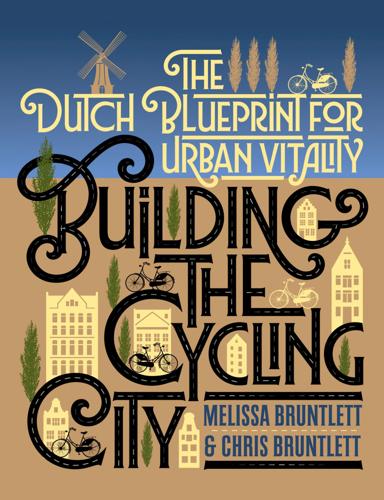
Building the Cycling City: The Dutch Blueprint for Urban Vitality
by
Melissa Bruntlett
and
Chris Bruntlett
Published 27 Aug 2018
Seeing the City at Eye Level Viewing Rotterdam as a place with limitless potential, Laven and his colleagues at STIPO have spent recent years studying the importance of repairing the urban fabric at ground level. After the war, the “blank canvas” created by the bombing removed certain architectural constraints—such as height, color, and context—leading to some stunning and innovative experiments with the built environment. “Rotterdam is known as a place where you can see all of the postwar experiments that ever happened in architecture,” he says. “The attitude was ‘we have to rebuild the city. We have to do it fast because there is a shortage of housing. But it’s okay if we make some mistakes, because we’ll just demolish them and start again.’”
…
He cites a view of architectural theorist Mark Wigley, a professor at Columbia University, that architecture is one’s outermost layer of clothing. A person dressed down in jeans and a sweater might get away with cursing, but the same person dressed in a suit would have to behave very differently. “Similarly,” Fleming contends, “the built environment dictates our behavior. People will love and care for beautiful architecture and will be proud of it and take care of it.” If anything can be taken from examples like the Hovenring in Eindhoven or even the Dafne Schippersbrug in Utrecht, it’s the value of good design—which is to say, not design for design’s sake, but functional design that serves a purpose beyond simply being attractive.
…
Part of that shared experience, and something Van der Kloof maintains is vital to the program, is learning to negotiate real-life conditions. She recalls seeing similar schemes where participants learn to ride in a park, building the skills to use a bicycle but not necessarily apply these skills to their daily life. “It may make sense in cities where the built environment is not so great,” she says. “But over here, why would you only teach people to ride circles in a park, when you want them to use it in their daily life?” In fact, she relishes the moments when she passes by former students on the street, using a bike to get from home to school, or the shop, or any other practical location, because it means they are enjoying the incomparable freedom and independence that cycling can offer.
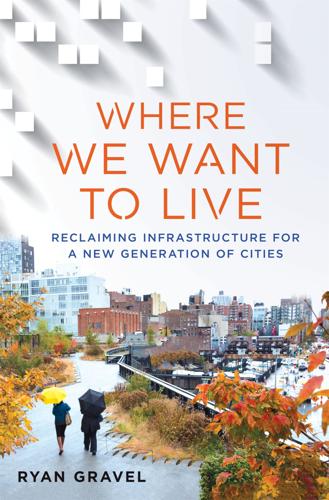
Where We Want to Live
by
Ryan Gravel
Published 2 Feb 2016
In the decades during and following the construction of the grand boulevards, the new promenades became the territory of the flâneur. Unlike a wanderer on a dérive, a flâneur was a conscious actor in the theater of the city—a “passionate spectator,” as described by Charles Baudelaire. The flâneur strolled confidently along the city streets, offering observations and commentary about the built environment and, by doing so, played a valuable role in defining the new lifestyle offered by Paris’s transformation. Toward the end of the nineteenth century, the flâneur embodied a bourgeois aspiration of leisure and a cultural life for the city that remains the foundation for Paris’s defining global identity today.
…
A mother lode of big ideas, however, has had me smitten from the start. The Los Angeles River is spectacular. It is sublime in the best sense of the word. Even in its existing condition, the river is magical because its potential for transforming not only Los Angeles but our national policy about the built environment is both immense and likely. I got to experience the river firsthand back in the summer of 2011 when Leigh Christy, a former colleague at Perkins+Will’s office there, introduced me to some of the primary players. She knew them well because she had managed a collaborative pro bono effort the previous year to reimagine the Piggyback Yard, a 200-acre (81-ha) rail yard and intermodal transfer facility just opposite the river from downtown.
…
Rising awareness and public concern about the negative health consequences of secondhand smoke provided the political cover and impetus for new regulations. Over a short span of ten years or so, our lives were dramatically changed. As we take similar steps to develop a new legal interpretation for health and the built environment, we’ll face a far more daunting problem. By reframing the legal basis on which decisions about policies like zoning or transportation are made, we will see massive adjustments in land value. The inefficiency and inflexibility of communities built by sprawl, for example, will make them unbearably expensive to fix in any comprehensive way, and many areas will flounder in political turmoil.
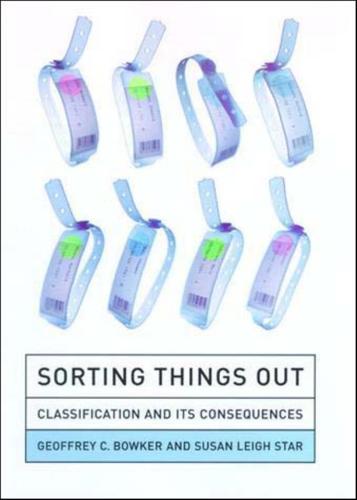
Sorting Things Out: Classification and Its Consequences
by
Geoffrey C. Bowker
and
Susan Leigh Star
Published 25 Aug 2000
4 At other times, they were larger: what size should a railroad car be, a city street, or a corporation? Government agencies, industrial consortia, and scientific committees created the standards and category systems. So did mail-order firms, machine-tool manufacturers, animal breeders, and thousands of other actors. Most of these activities became silently embodied in the built environment and in notions of good practice. The decisions taken in the course of their construction are forever lost to the historical record. In fact, their history is considered by most to be boring, trivial, and unworthy of investigation. There are some striking similarities to our own late twentieth century historical moment in that faced by Europeans at the end of the nineteenth century.
…
How do we perceive this densely saturated classified and textured world? Under the sway of cognitive idealism, it is easy to see classifications as properties of mind and standards as ideal numbers or floating cultural inheritances. But they have material force in the world. They are built into and embedded in every feature of the built environment (and in many of the nature-culture borderlands, such as with engineered genetic organisms). All classification and standardization schemes are a mixture of physical entities, such as paper forms, plugs, or software instructions encoded in silicon, and conventional arrangements such as speed and rhythm, dimension, and how specifications are implemented.
…
Many of these choices become standardized and built into the environment around us; for example, the range of clothing we select is institutionalized by the retail stores to which we have access, traditions of costuming, and so forth. To think of this formally, the institutionalization of categorical work across multiple communities of practice, over time, produces the structures of our lives, from clothing to houses. The parts that are sunk into the built environment are called here boundary infrastructures objects that cross larger levels of scale than boundary objects. Finally, the chapter concludes with a discussion of future directions for research into classifications, standards, and their complex relationships with memberships in communities of practice.
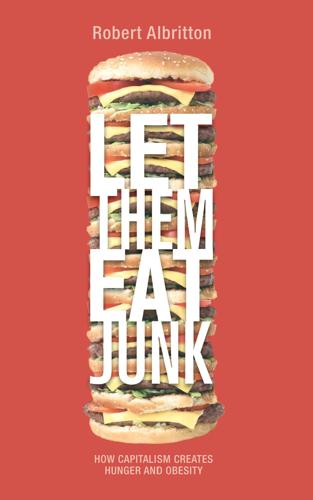
Let them eat junk: how capitalism creates hunger and obesity
by
Robert Albritton
Published 31 Mar 2009
One of the amazing gifts of nature is its diversity, and forcing it into standardized boxes or forcing it to produce at a faster pace than its own rhythms can be ecologically destructive. The built environment tends to be homogenized when corporations of ever-increasing size construct it such that industrial parks, strip malls, cities and suburbs everywhere become increasingly indistinguishable. Like “quality time” we can speak of “quality space” as referring to the ever-rarer places of qualitative diversity and uniqueness, which tourists flock to precisely because of the rarity of the qualitatively beautiful in the built environment of recent capitalism. Similarly nature has been so sourced for raw materials and so polluted, or in short so stressed by every increasing rate of turnover and expansion of capital, that tourists will often pay top dollar for a taste of the qualitative in relatively pristine natural places (no place is truly pristine any more).
…
Capital homogenizes natural landscapes by destroying species diversity, by desertification, by pollution, by monoculture, by harvesting “exotic animals”, by strip mining, by strip malls, by diverting rivers, by urbanization and suburbanization, by overfishing in the oceans, by building dams, by paving over the landscape, by clear-cutting forests or by any smoothing or homogenizing of the landscape that would speed up the turnover of capital’s circuits and thus profits. In general space is homogenized by capital when its diversity gets in the way of capital mobility, when mass production and consumption require standardization, and when the built environment is standardized by capitalist commercialization and profit fixation. The material, qualitative or use-value characteristics of space can be quite resistant to being totally subsumed to short-term profit maximization. A major result of this is that capital has always developed unevenly spatially.
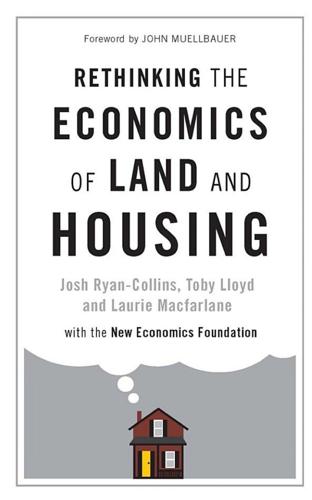
Rethinking the Economics of Land and Housing
by
Josh Ryan-Collins
,
Toby Lloyd
and
Laurie Macfarlane
Published 28 Feb 2017
The Mystery of Capital: Why Capitalism Triumphs in the West and Fails Everywhere Else. New York: Basic Books. Dodd, Nigel. 1994. The Sociology of Money: Economics, Reason and Contemporary Society. Cambridge: Polity Press. Doling, John, and Richard Ronald. 2010. ‘Home Ownership and Asset-Based Welfare’. Journal of Housing and the Built Environment 25, 165–173. Dolphin, T. 2009. Time for Another People’s Budget. London: Institute for Public Policy Research. Dorling, Danny. 2014. All That Is Solid: How the Great Housing Disaster Defines Our Times, and What We Can Do about It. London: Penguin. Dowling, Tim. 2014. ‘Deep Concerns: The Trouble with Basement Conversions’.
…
Towards a Sustainable Private Rented Sector: The Lessons from Other Countries. London: The London School of Economics and Political Science. http://www2.lse.ac.uk/geographyAndEnvironment/research/london/Home.aspx. Scanlon, Kathleen, and Christine Whitehead. 2011. ‘The UK Mortgage Market: Responding to Volatility’. Journal of Housing and the Built Environment 26 (3): 277–93. Schularick, M., and A. M. Taylor. 2009. ‘Credit Booms Gone Bust: Monetary Policy, Leverage Cycles and Financial Crises, 1870–2008’. NBER Working Paper Series no. 15512, November. Schumpeter, Joseph A. 1954. History of Economic Analysis. Oxford: Oxford University Press. Schumpeter, Joseph A. 1975.
…
The Spirit Level Delusion: Fact-Checking the Left’s New Theory of Everything. Ripon: Little Dice. Solow, Robert M. 1956. ‘A Contribution to the Theory of Economic Growth’. The Quarterly Journal of Economics 70 (1): 65–94. Stephens, Mark. 1993. ‘Housing Finance Deregulation: Britain’s Experience’. Journal of Housing and the Built Environment 8 (2): 159–75. Stephens, Mark. 2007. ‘Mortgage Market Deregulation and Its Consequences’. Housing Studies 22 (2): 201–20. Stephens, Mark, C. Whitehead, and M. Munro. 2005. Lessons from the Past, Challenges for the Future for Housing Policy. London: Department of Communities and Local Government.
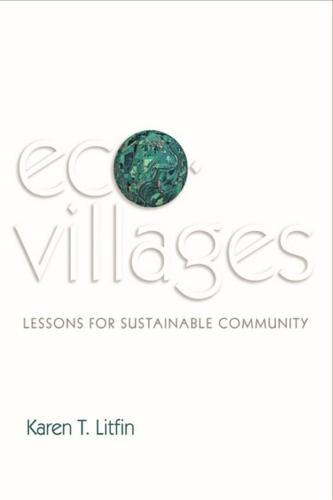
Ecovillages: Lessons for Sustainable Community
by
Karen T. Litfin
Published 16 Dec 2013
Along the way, I learned that simplicity can be entirely compatible with comfort and beauty. Compared to what I was used to, ecovillage homes felt less intrusive; often they enhanced the landscape. Their angles were more rounded, they had plenty of natural light, and they felt somehow healthier. Harmonizing the built environment with nature can be as good for people as it is for the Earth. If I had to find one word to describe how ecovillages look and feel – especially the ones that have built themselves from the ground up – it would be “organic.” And, yes, I did see a few funky structures built entirely from natural or recycled materials – including some I would never want to live in.
…
Co-housing, with its integration of private and shared living spaces, felt like the right balance. Strohpolis, Sieben Linden’s beautiful three-story straw-bale townhouses, also felt comfortable – especially when I experienced how well straw insulates against sound and considered the ecological benefits of shared wall space. As I observed my responses to the built environment in fourteen different ecovillages, I found myself tucking little tips and images into my mental storehouse of ideas for my own home. My mind continually returned to questions about balance: how to find the right balance between my needs for privacy and community, between the trade-offs that come with low-tech and high-tech, between my personal preferences and planetary wellbeing.
…
It is one thing, though, to make a personal commitment to this way of communicating, and an entirely different thing to live alongside dozens or even hundreds of others who share your commitment. When an entire community dedicates itself to effective communication, the result is powerful and appealing. Box 5.1 Architectures of Intimacy The built environments of ecovillages are not just about saving energy and water. They are about people. Common houses, courtyards, pedestrian walkways, off-leash pet areas, and small alcoves in doorways: all of these are natural gathering places. I recall a wonderful conversation I had in a hand-sculpted window box at Sieben Linden: the soft cob edges seemed to soften the edges of discussion.

The Warhol Economy
by
Elizabeth Currid-Halkett
Published 15 Jan 2020
As the seminal economist Alfred Marshall wrote, “So great are the advantages which people following the same skilled trade get from near neighborhood to one another. The mysteries of the trade become no mystery: but are as it were, in the air.”11 Saxenian’s findings in Silicon Valley echo observations that the great urbanist Jane Jacobs made about cities some forty years ago concerning the role of place and the built environment in facilitating the types of environments and interactions that spur innovation. It’s useful to start with a little history on the evolution of Jacobs’ ideas. Jacobs despised contemporary urban planning, with its knee-jerk tendency to impose physical order on the apparent chaos of the city.
…
Spatially Bound Creative Chaos While the types of engagements discussed in this chapter happen both formally in the shape of industry parties or openings or fashion shows and also informally by going to the hottest new restaurant, lounge, or bar, one thing becomes certain—these meeting points are spatially bound and very much a product of the geography of the built environment and part of a larger social production system. In other words, how the physical space of New York has been constructed and the spatial configuration of neighborhoods and the institutions within them have propelled New York’s ability to optimize its creative economy. The dynamics within creativity happen in particular places that remain in the same metropolitan geography of New York City.
…
The idea is that the components of a successful human capital–driven economy require environments that are conducive to these dynamics—face-to-face interaction, and the ability for resources, information, labor pools, and firms to move around with flexibility. Part of this type of dynamic is dependent on the built environment—which is why New York City’s dense, walking-based space has been so successful for the proliferation of art and culture. This relationship is evident in the fact that New York’s creative scene revolves around a collection of particular bars, clubs, restaurants, and neighborhoods that are frequented often by foot, allowing for casual interactions both in the scene and on the street that become meaningful.
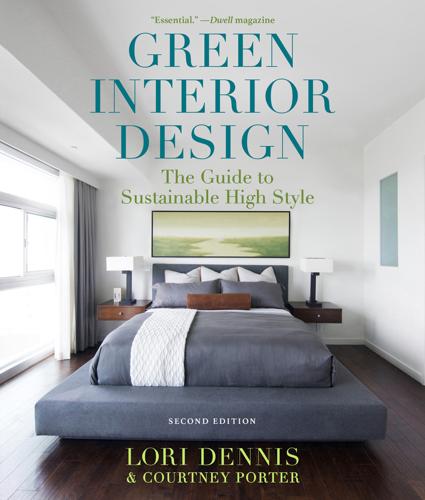
Green Interior Design
by
Lori Dennis
Published 14 Aug 2020
Global Organic Textile Standards (GOTS)—a requirement that is used to ensure the organic status of textiles, from the harvesting of raw materials through environmentally and socially responsible manufacturing, packaging, labeling, exploration, and distribution in order to provide credible assurance to the end consumer. green—philosophy supporting social, economic, and environmental sustainability. green design—a philosophy of designing the built environment with the principles of economic, social, and environmental sustainability. green energy—see clean energy. Green Seal—an independent and nonprofit organization that evaluates and recommends products based on criteria that emphasize pollution prevention and environmentally responsible life cycle management.
…
Council members work together to develop industry standards, design, and construction practices as well as guidelines, operating practices, policy positions, and educational tools that support the adoption of sustainable design and building practices. Members also forge strategic alliances with industry and research organizations, federal government agencies, and state and local governments to transform the built environment. As the leading organization that represents the entire building industry on environmental building matters, USGBC’s unique perspective and collective power enable members to effect change in the way buildings are designed, built, operated, and maintained. The USGBC’s greatest strength is the diversity of its membership.
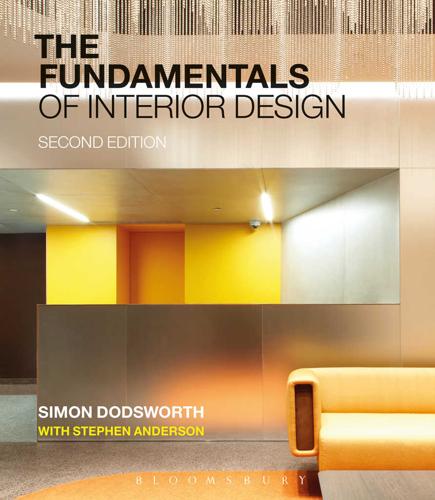
The Fundamentals of Interior Design
by
Dodsworth, Simon
and
Anderson, Stephen
Published 29 Jan 2015
Many people understand this, and they also understand that they do not have the necessary insight, skills, and intellectual grasp of the issues to tackle the job themselves. And so there is the need for professional interior designers. What is interior design? Good interior design adds a new dimension to a space. It can increase our efficiency in the way we go about our daily lives, and it adds depth, understanding, and meaning to the built environment. Thoughtful and well-crafted design makes a space easier to understand, and experiencing such a space lifts the spirit, too. It is, therefore, not just about the aesthetic; it is a practical and philosophical discipline. Beautiful spaces show a logical and rational questioning of the status quo and can be an honest attempt to find new and exciting ways to lead our lives.
…
Some architects will limit their involvement to this, while others will also consider furniture and fittings in addition to materials and finishes. Interior architects generally focus their skills on existing structures and repurposing them to suit new functions, and as such they will often see their work as a sustainable way of dealing with the built environment. They will pay a great deal of regard to the previous life of a building and usually allow this knowledge to provide some connection between the building and their newly created interior. Interior decorators generally work with clients who want to change the look and feel of a space without resorting to major structural change or intervention.
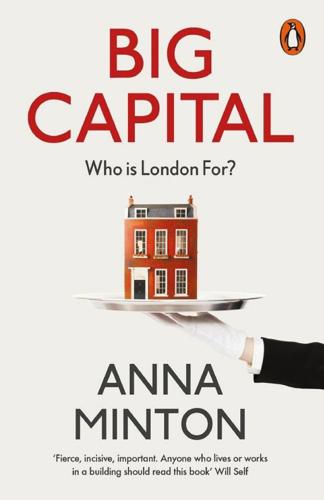
Big Capital: Who Is London For?
by
Anna Minton
Published 31 May 2017
Contents Introduction 1 Big Capital 2 The Financialization of Housing and Planning 3 Demolitions 4 From Bricks to Benefits 5 Generation Rent 6 The ‘Right to the City’ Notes Acknowledgements Follow Penguin ABOUT THE AUTHOR Anna Minton is a writer, journalist and Reader in Architecture at the University of East London. Her first book, Ground Control, was published in 2009 to widespread acclaim. The Royal Commission’s Fellow in the Built Environment between 2011 and 2014, she is a regular contributor to the Guardian and a frequent broadcaster and commentator. She lives in South London with her partner and their two sons. PENGUIN BOOKS BIG CAPITAL ‘Diligent and determined … eye-opening … Minton builds a powerful case … really it is a call to imagine what is politically possible’ Richard Godwin, Evening Standard ‘Powerfully written … It’s hard not to come away with a fresh sense of outrage’ Matthew Partridge, Moneyweek ‘A studied, sustained attack on a market that has been mishandled by successive governments for 40 years, not because politicians have been unable to remedy it but because it has been expedient not to.
…
Chazan, Guy, ‘Germany: Berlin’s war on gentrification’, Financial Times, 10 October 2016 15. ‘Land Value Taxation’, House of Commons Library, 17 November 2014 Acknowledgements My first thanks go to the 1851 Royal Commission for the Great Exhibition, which awarded me a two-year fellowship in the Built Environment in 2011, to enable me to continue my research and write a second book, to follow Ground Control. On Big Capital I was very lucky to work again with my editor Helen Conford and agent Karolina Sutton at Curtis Brown, ably assisted by the team at Penguin, Shoaib Rokadiya and Richard Duguid, and dedicated copy editor Bela Cunha.
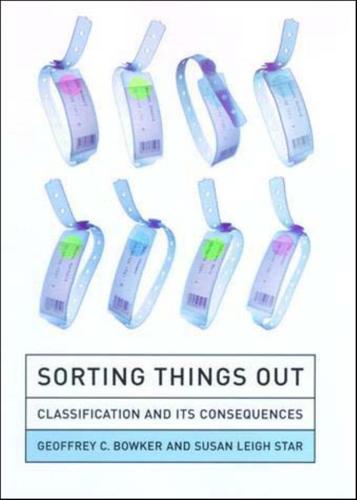
Sorting Things Out: Classification and Its Consequences (Inside Technology)
by
Geoffrey C. Bowker
Published 24 Aug 2000
4 At other times, they were larger: what size should a railroad car be, a city street, or a corporation? Government agencies, industrial consor tia, and scientific committees created the standards and category sys tems. So did mail-order firms, machine-tool manufacturers, animal breeders, and thousands of other actors. Most of these activities be came silently embodied in the built environment and in notions of good practice. The decisions taken in the course of their construction are forever lost to the historical record. In fact, their history is consid ered by most to be boring, trivial, and unworthy of investigation. There are some striking similarities to our own late twentieth century historical moment in that faced by Europeans at the end of the nineteenth century.
…
How do we perceive this densely saturated classified and textured world? Under the sway of cognitive idealism, it is easy to see classifications as properties of mind and standards as ideal numbers or floating cultural inheritances. But they have material force in the world . They are built into and embed ded in every feature of the built environment (and in many of the nature-culture borderlands, such as with engineered genetic organisms). All classification and standardization schemes are a mixture of physi cal entities, such as paper forms, plugs, or software instructions en coded in silicon, and conventional arrangements such as speed and rhythm, dimension, and how specifications are implemented.
…
Many of these choices become standardized and built into the environment around us; for example, the range of clothing we select is institutionalized by the retail stores to which we have access, traditions of costuming, and so forth. To think of this formally, the institutionalization of categorical work across multiple communities of practice, over time, produces the structures of our lives, from clothing to houses. The parts that are sunk into the built environment are called here boundary infrastructures objects that cross larger levels of scale than boundary objects. Finally, the chapter concludes with a discussion of future directions for research into classifications, standards, and their complex relation ships with memberships in communities of practice.
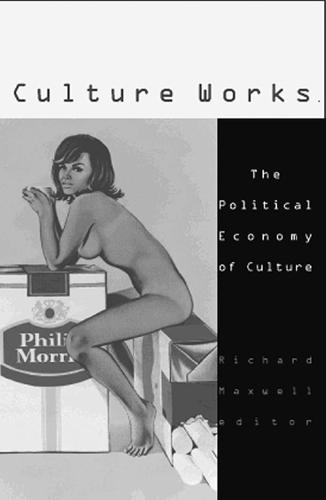
Culture works: the political economy of culture
by
Richard Maxwell
Published 15 Jan 2001
Culture works because culture is first of all the sum of stories we tell ourselves about who we are and want to be, individually and collectively. Culture works also as the staging ground of these identity narratives and of our daily routines. Culture comprises and constitutes the places where we 1 Richard Ma xwell live; it is the built environment and the peopled landscape. It also works in the memories that reside in the flesh, from the spark of recognition, an uncanny remembrance, to the dull reflex of forgetting and the dogged reminders inhabiting bone and muscle of a body once stretched in sport, childbirth, dance, labor, lovemaking.
…
The shopping mall, the strip mall, the big-box retailer, the “revitalized” downtown, the hypermarché, hipermercado, the galerías . . . by any other name, spring up everywhere, as Susan G. Davis argues in chapter 7, to form a veritable landscape of shopping. Davis explains how the experience of shopping has been shaped by an ensemble of global enterprises that are working to synchronize development of the built environment, not to the scale and rhythm of human needs and a fragile environment, but attuned instead to cycles of real-estate speculation and the frantic pace of retail turnover. Commercialization has been an extensive process in the sense that values and practices associated with commercial, market criteria have spread across geopolitical territories incorporating previously nonmarket economies or noncommercial areas of life inside market economies.
…
In-store researchers corner consumers right as they reach for the product on the shelf, accosting them to ask why they have picked out a particular tube of toothpaste, and sometimes paying them for answers.86 Shopping, in short, has become the site of intensive scrutiny, even surveillance. Paco Underhill’s behavioral research firm, Envirosell, has developed a range of techniques for plumbing the interaction between “consumers and products, and consumers and commercial spaces.” As its name implies, Envirosell focuses on the role of the built environment in selling, which is not surprising given that Underhill studied with the late William H. Whyte, the noted analyst of urban public spaces. At the behest of a retailer or a manufacturer, Envirosell deploys “ethnographers” to track people, following them while they shop unawares. Small time-lapse cameras and real-time video cameras, both hidden, are good sources of information on spatial relationships and display problems.
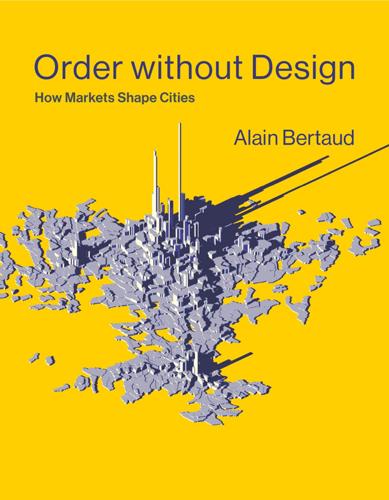
Order Without Design: How Markets Shape Cities
by
Alain Bertaud
Published 9 Nov 2018
The changes in a city’s built environment largely determine its future income and expenditures. Of course, beyond being useful in projecting future municipal financial situations, the changes in the built environment and its value, determined by rents and real estate prices, are essential to be able to manage what I suggest is the main function of urban planners: maintaining mobility and housing affordability. In many cities, these essential databases concerning the built environment are either not maintained or are poorly maintained. And when they do exist, they are rarely analyzed and used to guide policy. I will repeat Angus Deaton’s quotation that cited in chapter 6: “Without data, anyone who does anything is free to claim success.”
…
Urban Planners Usually Have a Deep Knowledge of Their Own City Although, in the following chapters I will at times be critical of the planning profession, I think that urban planners are often very competent in managing the day-to-day operations of the city they work in. They usually know their city in great detail, including the history behind the complex features of the built environment. They work under great pressure because a city is constantly transforming itself, and this constant evolution cannot be delayed by asking for more time for reflection or further studies. They are also subject to pressure from various interest groups that have a stake in the changes affecting cities.
…
I differentiate “urban planning” from “design”: planning involves various tasks, many of them being projections, for instance, demographic and traffic projections or projection of future demand for water or energy. Design is a more specific part of urban planning that involves imposing physical limits on the built environment. Design involves producing the plans of individual buildings but also drawing up zoning plans, limiting the height of buildings, separating land use, establishing urban growth boundaries, and similar activities. 2. Ebenezer Howard (1850–1928) was the founder of the garden city movement. He was a social reformer and utopian planner dedicated to improving the social conditions of workers in England in the latter part of the Industrial Revolution.
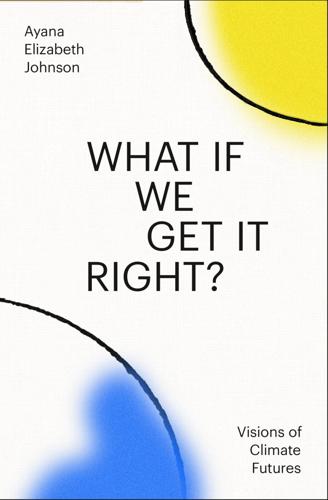
What If We Get It Right?: Visions of Climate Futures
by
Ayana Elizabeth Johnson
Published 17 Sep 2024
But when the soil is not healthy, you get a situation like we saw in California in 2023, which was in a severe drought, then got a lot of very wet weather that led to massive flooding. Ayana: If we had healthier soils, more of that water could have been absorbed into soils, instead of causing landslides or eroding topsoil or leading to flooding. Judith: And then of course a lot of that rain fell onto the built environment. Ayana: All that concrete and asphalt, that’s certainly not absorbing water. Highways and parking lots and all that. Judith: Exactly. Those are all built to sluice water away, built with the belief that water is an inconvenience that must be dealt with, with dispatch. In so many instances, what could be a benefit becomes a problem if we haven’t been managing our land appropriately.
…
Let’s also embrace opportunity. The world’s building stock is expected to double by the middle of this century.[*58] About 75% of the infrastructure that will be in place in 2050 has yet to be built, and 55% of the global population, and growing, currently lives in cities. We can transform the built environment in climate-wise ways. And the shift is beginning—building codes for new construction are starting to ban gas lines and require good insulation. In the U.S. alone, there are 140 million existing homes that will need to be retrofitted—a gargantuan task that will be made a bit easier with tax credits to homeowners via the Inflation Reduction Act.
…
. • patagonia.com/actionworks Kate Marvel, PhD, is a climate scientist and writer living in New York City. Her first book, Human Nature, will be published by Ecco Press in 2025. Kate has a doctorate in astrophysics, so she knows Earth is the best place in the entire universe. • marvelclimate.com Kate Orff, RLA, is a landscape architect focused on climate adaptation and biodiversity in the built environment. She is the founder and principal of the landscape architecture practice SCAPE, which pioneered a joint approach to community engagement and ecological infrastructure. Kate is also a professor at Columbia University with a joint appointment in the School of Architecture and the Climate School. • scapestudio.com Kelly Sims Gallagher, PhD, is dean ad interim and professor of energy and environmental policy at The Fletcher School, Tufts University.
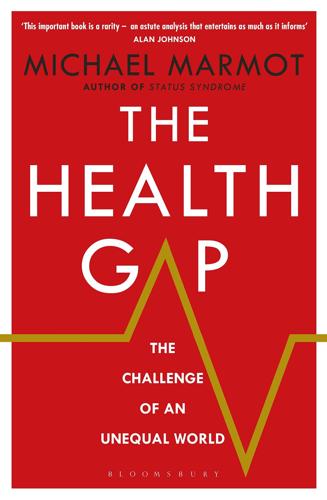
The Health Gap: The Challenge of an Unequal World
by
Michael Marmot
Published 9 Sep 2015
The two most plausible pathways for the green-space effect on reducing the social gradient in mortality were reduction of stress and promotion of physical activity. Both are plausible and both may be playing a role. Either way, making access to green space a priority for urban environments should be a priority. In Britain the Commission for Architecture and the Built Environment estimates that if the budget for new road building were diverted, it could provide for 1,000 new urban parks at an initial capital cost of £10 million each. Creating 1,000 new parks would save around 74,000 tons of carbon from being emitted.39 Options are available that would create a greener and more health-equitable urban environment.
…
Available from: http://www.exeter.ac.uk/news/featurednews/title_349054_en.html. 38Mitchell R, Popham F. Effect of exposure to natural environment on health inequalities: an observational population study. Lancet. 2008; 372(9650): 1655–60. 39Bird D. Government advisors demand urgent shift in public investment to green England’s cities. CABE (Commission for Architecture and the Built Environment), 2009. 40Sloman L, Cavill N, Cope A, Muller L, Kennedy A. Analysis and Synthesis of Evidence on the Effects of Investment in Six Cycling Towns. Report for Department for Transport and Cycling England. 2009. 41City of Copenhagen. The Bicycle Account 2013 [30/06/2014]. Available from: http://subsite.kk.dk/sitecore/content/Subsites/CityOfCopenhagen/SubsiteFrontpage/LivingInCopenhagen/CityAndTraffic. 42Jones SJ, Lyons RA, John A, Palmer SR.
…
Index AARP, here ACE study, here active transport, here African-Americans, here, here age-friendly cities, here ageing and gender, here, here global populations, here and health behaviours, here and income security, here and political participation, here and quality of life, here and retirement, here and social participation, here Ageing in the Twenty-First Century, here Ahmedabad, here, here, here, here, here, here see also Self Employed Women’s Association (SEWA) aid, here air pollution, here, here, here, here Aitsi-Selmi, Amina, here alcohol use, here, here, here, here, here, here, here, here, here and adverse childhood experience, here and education, here Iceland and, here price of, here, here, here and public policy, here, here Russia and, here and unemployment, here Allen, Woody, here, here Alzheimer’s, here American Gynaecological and Obstetric Society, here American Medical Association, here Argentina, here, here, here debt repayments, here politics and economics, here Aristotle, here Armenia, here Athenaeum Club, here Atkinson, Sir Tony, here Austen, Jane, here, here austerity, here, here Australia, and cigarette packaging, here Australian aboriginals, here, here Austria, here autism, here autonomic nervous system, here baboons, here Bachelet, Michelle, here, here Baltimore, here, here, here, here, here, here, here, here, here Balzac, Honoré de, here, here Ban Ki-moon, here Banerjee, Abhijit, here, here, here Bangladesh, here, here garment workers, here, here improved child mortality, here Barker, David, here Becker, Gary, here behavioural genetics, here Beijing, here Belgium, here Bentham, Jeremy, here Berkman, Lisa, here Beveridge, William, here bicycles, here Birdsall, Nancy, here Birmingham and early child development, here fire fighters, here Björk, here Blair, Tony, here Blinder, Alan, here Bobak, Martin, here Body Mass Index, here, here Bolivia, pension scheme, here Botswana, here Boyce, Tom, here brain development, here Brazil, here, here, here, here, here, here and ageing population, here, here, here, here and commission report, here economic growth, here, here breast screening, here Britain, see United Kingdom British birth cohort study, here British Columbia, here, here, here British Medical Association, here, here British Medical Journal, here British Social Attitudes Survey, here British Virgin Islands, here Bromley-by-Bow, here Brown, Gordon, here Bulgaria, here, here Burns, Sir Harry, here Cambodia, here Cameron, David, here Canada, here, here aboriginal Canadians, here Canadian Institute for Advanced Research, here cancer risk, and diet, here cancer survival rates, here capital punishment, here capitalism, here, here, here patrimonial, here carbon trading, here Cardiff, here Carnochan, DCS John, here, here cash-transfer schemes, here, here, here Castro, Fidel, here Chandler, Michael, here Chandola, Tarani, here Chaplin, Charlie, here chemotherapy, here chess, here child poverty, here childbirth, here childcare, here, here, here childhood development and adult health, here and brain development, here critical periods in, here, here genetic and environmental factors in, here, here improvements in Birmingham, here measures of well-being, here and parenting, here social gradient in, here, here, here, here, here, here and social mobility, here and speech, here children obesity levels in, here, here underweight, here children’s centres, here Chile, here, here, here, here earthquake, here life expectancy, here, here, here, here China, here, here, here, here education system, here, here, here garment exports, here life expectancy, here, here cholesterol, here, here, here Cicero, here, here civil service, see Whitehall Studies Clean Air Act (1956), here climate change (global warming), here, here Closing the Gap, here, here, here, here, here, here, here, here Coca-Cola, here ‘coca-colonisation’, here cocaine, here Cochrane, John, here cognitive function, here Cohe, G. A., here Colombia, here, here Commission for Architecture and the Built Environment, here Commission on Global Governance for Health, here, here Commission on Macroeconomics and Health (CMH), here Commission on Social Determinants of Health (CSDH), here, here, here, here, here, here, here, here, here, here, here, here, here, here see also Closing the Gap; European Review of Social Determinants and the Health Divide; Fair Society, Healthy Lives communism, and health outcomes, here congestion charging, here contraception, here, here cooking stoves, here Copenhagen, here cortisol, here, here Costa Rica, here, here life expectancy, here, here, here, here, here, here pre-school education, here cotton farmers, here, here Coubertin, Baron Pierre de, here crèches, here crime, here, here, here, here, here, here, here, here, here, here, here, here, here, here fear of, here, here, here see also delinquency; gangs Cuba, here life expectancy, here, here, here, here, here, here pre-school education, here, here cultural sensitivity, here Czech Republic, here, here, here Daily Mail, here Daily Telegraph, here Deaton, Angus, here debt repayments, here, here delinquency, here, here, here, here dementia, here democracy, and freedom, here Democratic Republic of Congo, here Denmark, here, here, here social mobility, here, here depression, here, here, here deprivation, European measure of, here, here development states, here diabetes, here, here, here, here and adverse childhood experience, here, here in Australian aboriginals, here Dickens, Charles, here, here, here, here, here, here diet and disease, here Mediterranean, here ‘difference principle’, here disability, and life expectancy, here disempowerment, here, here, here, here Dominican Republic, here, here, here Dostoevsky, Fyodor, here Drèze, Jean, here, here, here, here drug regimens, adherence to, here drug use, here, here, here, here, here, here and adverse childhood experience, here Duflo, Esther, here, here, here Dylan, Bob, here Easterly, William, here Ebola, here economic growth, here, here economic inequality, see income inequalities Economist, here, here, here education and cash-transfer schemes, here and fertility rates, here Finnish system,, here, here, here, here gender equity in, here and intimate partner violence, here and life expectancy, here, here and material deprivation, here and measures of ill-health, here pre-school, here, here, here, here social gradient in, here university education, here, here, here, here, here, here, here women and secondary education, here women and tertiary education, here Egypt, obesity levels, here, here, here, here Eisenhower, Dwight D., here employment conditions, here see also unemployment empowerment, here, here, here, here, here, here, here, here, here, here, here, here, here, here, here, here and education, here and health behaviours, here political, here and social participation, here England, see United Kingdom English Longitudinal Study of Ageing (ELSA), here, here English Review, see Fair Society, Healthy Lives epigenetics, here equality of opportunity, here, here, here Estonia, here, here Ethiopia, here, here European Central Bank, here, here, here European Review of Social Determinants and the Health Divide, here, here, here, here, here, here Evans, Robert, here Evelyn, John, here Everington, Sam, here exercise, see physical activity Experience Corps, here Fair Society, Healthy Lives, here, here, here, here, here, here, here, here, here, here fairness (definition), here fecklessness, here, here, here, here fertility rates, here Financial Times, here Finland, here, here, here, here education system, here, here, here, here gender equity in education, here fire fighters, here, here, here Fitzgerald, F.
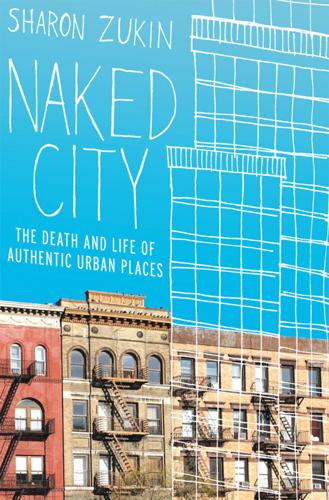
Naked City: The Death and Life of Authentic Urban Places
by
Sharon Zukin
Published 1 Dec 2009
“Private investment shapes cities,” she wrote, “but social ideas (and laws) shape private investment.”31 Today city planners swear loyalty to Jane Jacobs’s vision. Her goal of preserving the city’s physical fabric by maintaining the small scale and interactive social life of the streets has been translated into laws for preserving much of the built environment. But these laws go only part of the way toward creating the vibrant city that Jacobs loved. They encourage mixed uses, but not a mixed population. They never speak of maintaining low rents on commercial properties, so they cannot combat the most common means of uprooting the small shop owners who inspired Jacobs’s ideas about social order and the vitality of the street.
…
Linking herself to an intimate sense of nature and culture, the novelist Paula Fox said she liked “to walk to the grocer on streets lined with old houses that don’t hide the stars, to pass beneath sycamore trees, their changes from leaf to bare branch marking the seasons more intimately than the calendar.” Such an aesthetic appreciation of the built environment was limited, though, to old bourgeois neighborhoods like Brooklyn Heights, Park Slope, Fort Greene, and Bedford-Stuyvesant, whose long blocks of stately, nineteenth-century houses still had an air of dignified distinction.5 During the 1980s and 1990s the migration of more journalists, artists, writers, actors, and filmmakers across the East River began to alter Brooklyn’s image.
…
And they apply not only to art but to all other forms of culture, including cities.2 If we feel that cities have changed in the renewal and revitalization since Jane Jacobs’s time, and in these processes have lost their authenticity, we are reacting to more than just a measurable change in the built environment: a larger than usual number of buildings torn down, replaced, and renovated beyond recognition. Quantitative has morphed into qualitative change, for both our visual and our emotional experience of the city have been altered. This isn’t just a structural shift from an industrial to a postindustrial society or the result of a periodic boom in investment and construction.
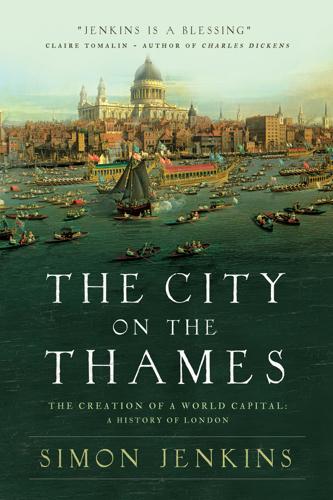
The City on the Thames
by
Simon Jenkins
Published 31 Aug 2020
Planning was a matter for ‘negotiation’. As if to symbolize this new balance of power, Blair in 1999 abolished the Royal Fine Art Commission, an independent champion of architectural standards and longstanding thorn in the side of many commercial architects. He replaced it with a Commission on Architecture and the Built Environment (CABE), astonishing even the developer community by appointing as its chairman their elder statesman, Stuart Lipton. CABE welcomed the Vauxhall tower as ‘clear and attractive’ – though it did object to the Shard. The Blair boom was a long one. It had inherited the upturn in the economy in the later years of the Major administration, and was aided by a declining pound following Britain’s departure from the European Monetary System.
…
G., High Rise 301 Baltic Exchange 131, 215; bombing (1992) 290 Bangladeshi immigrants 275 Bank of England 162, 175, 214; buildings 146, 221, 290; foundation 92, 93 bank holidays, introduction of 182 Bank station 167, 194, 236, 295 banking and financial services industry 92–3, 98, 115, 175, 239, 275, 293–7, 306, 315 Bankside power station 284, 303 Banqueting House (Whitehall) 59, 66, 85, 86 Baptists 66, 84, 136 Barbican 11, 13, 243; estate 253–5, 269, 280, 283, 307, 310; see also Museum of London Barbon, Nicholas 84–5 Barbon, Praise-God 84 Barkers of Kensington (department store) 181 Barking 206, 270 Barlow Commission 232, 240 Barnard’s Inn Hall (Holborn) 49 Barnes 210, 276 Barnett, Dame Henrietta 209 Barons’ War (13th century) 29, 30, 31 baroque architecture 81, 95, 105, 198; revival 198, 199–200, 221–2 Barratt, Nick, Greater London 242 Barry, Sir Charles 146, 153–4 Bartholomew Fair 37 Bart’s see St Bartholomew’s Hospital Basildon 300 Bath House 147 baths and washhouses, public: 19th century 189; 20th century 201, 213; Roman era 11, 12, 13–14, 338 Battersea 8, 17, 136, 165, 272; Arding & Hobbs (department store) 181; power station 284, 327–8 Battersea Fields/Park 183 Bauhaus 232 Baynard’s Castle 26–7 Bayswater 141, 165, 181, 194, 250; Leinster Terrace 141; Porchester Terrace 141; see also Lancaster Gate Bayswater Road 249 Bazalgette, Sir Joseph 164, 168, 176, 177 BBC 299, 329, 334; Broadcasting House 222; Bush House 221 Beatles (band) 261 Beck, Harry 229 Becontree housing estate 223, 228, 252, 269 Bede the Venerable, St 15 Bedford, John Russell, 1st Earl of 45 Bedford, Francis Russell, 4th Earl of 61–2, 70, 83 Bedford, John Russell, 6th Duke of 139 Bedford, Herbrand Russell, 11th Duke of 220 Bedford estate 100, 101, 139, 178, 227, 250, 282 Bedford Park 179 Bedford Square 103, 123 beer see brewing and beer Beijing (Peking) 173, 174 Belgravia 72, 100–101, 139–41, 156; Belgrave Square 73, 230; Chester Square 140, 153; churches 137, 153; Eaton Square 137, 153; Wilton Crescent 140; Wilton Place 153 Belsize Park 142 Bentham, Jeremy 145 Bentinck, Hans Willem (later 1st Earl of Portland) 89, 103 Berkeley, George, 1st Earl of 84, 100, 103 Berkeley, Randal, 8th Earl of 220 Berkeley Square 73, 103–4, 123, 220–21, 259, 334 Berkhamsted 24 Berlin 3, 193, 240, 241, 313 Bermondsey 17, 95, 137, 185, 206, 216, 225, 307, 339; abbey 28, 42, 46; see also Shard Bermuda 94 Berners estate 102 Besant, Annie 177 Besant, Sir Walter 2–3, 207–8, 208 Bethnal Green 137, 151, 185, 219, 305; council housing estates 202, 223, 265–6 Betjeman, Sir John 81, 231–2 Bevan, Aneurin 240 Beveridge, William, 1st Baron, report on welfare reform (1942) 240 Bevis Marks (street) 67 Bexley 230 bicycles see cycling Biddle, Martin 15 Big Bang (financial markets deregulation) 293–4, 295–6 Big Ben (bell/clock tower) 154, 179 Bill, Peter 310 Bill Haley and the Comets (band) 248 Bill of Rights (1689) 91 Billingsgate 14, 39, 81; market 163, 284 Birch, John 78 birching (corporal punishment), outlawing 260 Birdcage Walk 197 Birmingham 148, 149, 161, 188, 190, 270, 278, 318; railways 156, 157, 165, 168; town hall 188 Birt, William 209 bishopric of London 17–18 Bishopsgate 11, 27, 49, 310; Pinnacle (22 Bishopsgate) 310, 312 Bismarck, Otto von 176 Black Death (14th-century plague) 33–4, 35, 40, 66 Black Monday (stock market crash, 1987) 296 black population 118, 261, 271, 275, 299 Blackfriars 11, 177; Apothecaries Hall 337; Black Friar pub 27; monastery 27; station 165, 166, 167; theatres 52, 57 Blackfriars Bridge 114, 120 Blackheath 39, 68, 183, 210 Blackwall Docks 131 Blackwall Tunnel 280 Blair, Tony 302–6, 308, 314, 316 Blemond, William de 72 Blériot, Louis 200 Blitz (1940–41) 3, 77, 227, 234–8, 239, 245, 262 Bloomberg Centre (office building) 10, 14 Bloomsbury 72, 100, 101, 123, 139, 172, 250, 284; Bedford Square 103, 123; Bloomsbury Square 72, 100, 139; Brunswick Centre 268; Brunswick Square 125; Friends Meeting House 230; Gordon Square 139; Gower Street 178; Mecklenburgh Square 125; Russell Square 139, 179; St George’s Church 111; Tavistock Square 139; Torrington Square 284; University of London 227, 234, 250, 284; Woburn Square 284; see also British Museum Blore, Edward 146 Blow Up (film) 261 blue plaques scheme 265 Blue Stockings Society 103, 124 Boateng, Paul, Baron 299 Boccaccio, Giovanni 36 Boer War 195 Boleyn, Anne, Queen Consort 44, 46–7 bombing: Great War 216–17; Second World War 3, 77, 227, 234–8, 239, 245, 262; terrorism 290–91, 304–5 Bon, Christoph see Chamberlin, Powell and Bon (architectural practice) Bond, Sir Thomas 84 Bond Street 126, 199, 261, 339 Boodle’s (club) 137 Booth, Charles 184, 187, 208, 334 Boots (chemist) 277 Borough High Street 51, 311 Borough Market 257, 332 boroughs, establishment of 192, 201, 263, 264 Boston (Lincolnshire) 32 Boston (Massachusetts) 118 Boswell, James 107, 126–7 Bosworth Field, Battle of (1485) 39, 40 Boudicca (Celtic queen) 2, 10 Bovis (construction company) 269 Bow 171, 191, 251, 307; Abbey Mills pumping station 164; Bryant & May match factory 189 Bow Street, court 110 Bow Street Runners 112, 148 Bowen, Elizabeth 236 Boyle, Robert 70 Bracknell 251 Bradley, Mary Anne 132 Bradley, Simon 80, 179 Bradwell-on-Sea, St Cedd’s Monastery 18 Bramante, Donato 40 Brasilia 174 Breda, Declaration of (1660) 67 Brentford 125, 206 Brewer Street 338 brewing and beer 42, 96, 112, 206 Brexit (British exit from European Union) 13, 330–31 Brick Lane 261 Bridewell Palace 46, 55 bridges see Albert Bridge; Blackfriars Bridge; Hammersmith Bridge; London Bridge; Putney Bridge; Southwark Bridge; Tower Bridge; Vauxhall Bridge; Waterloo Bridge; Westminster Bridge Bridgewater House 147 Brighton 217; Grand Hotel bombing (1984) 290 Brighton Rock (film) 248 Bristol 40, 57, 131, 278, 318 Britain, Battle of (1940) 234 Britannia (Roman province) 10, 12–13 British Library 145, 250 British Museum 101, 104, 145, 172, 241, 250, 284 British Rail 283, 329 Brixham 89 Brixton 191, 208, 275; Loughborough estate 253; prison 219 Broadgate development 296 Broadwick Street 163 Bromley 230 Brompton Road 256 Bronze Age 8 Brown, George (later Baron George-Brown) 263 Brown, Gordon 314, 315 Brown, Lancelot ‘Capability’ 133 Brown’s Hotel 200 Brummell, Beau 138 Brunel, Isambard Kingdom 165, 175, 194 Brunelleschi, Filippo 40 Brunswick Centre 268 Brunswick Square 125 Brussels 26, 275, 296, 320 Brutus (legendary founder of London) 8 Brydges Place 338 Brydon, John 198, 199, 283 Brythonic people 16–17 Buchanan, Sir Colin, Traffic in Towns report 278–9, 280, 316 Bucharest 174, 326 Buckingham, George Villiers, 2nd Duke of 84–5 Buckingham and Normanby, John Sheffield, 1st Duke of 85 Buckingham House/Palace 84, 85, 97, 139, 144, 145, 146, 166, 196–7, 304 Buckingham Palace Road 199 Bucklersbury House (office building) 14 Buenos Aires 174 Building Act (1774) 121–2, 123, 135, 159, 188, 211 Bulstrode Park 103 Burbage, James 52 Burbage, Richard 52 Burdett-Coutts, Angela, 1st Baroness 187 Burghley, William Cecil, 1st Baron 47, 48 Burke, Edmund 118, 129, 130 Burlington, Richard Boyle, 1st Earl of 84, 102 Burlington, Richard Boyle, 3rd Earl of 105–6, 122 Burnham, Daniel 200 Burns, John 191 Burton, Decimus 135, 138 Burton, James 125, 135 Burton, Sir Montague 245 bus lanes 281 buses 144, 167, 177, 204, 205, 309, 317; double-decker 205, 309, 317; fares 288, 309; routes 23, 205 Bush, George W. 304 Bush, Irving T. 221 Bush House 221 Bute, John Stuart, 3rd Earl of 115–16 Byron, George, 6th Baron 127, 183 Byzantium 16, 21 CABE (Commission for Architecture and the Built Environment) 314 cable car (cross-Thames) 316 Cable Street 42, 131 Cadogan, Charles, 2nd Baron 104 Cadogan estate 104, 140 Cadogan Square 179 Cadwgan ap Elystan (Welsh warlord) 104 Calcutta 37 California 48, 320; gold rush 158; see also Los Angeles; San Francisco Callaghan, James, Baron Callaghan of Cardiff 276 Camberwell 125, 143, 171, 201, 210, 272 Cambridge University 266 Camden, Charles Pratt, 1st Baron 124, 125, 143 Camden, Borough of 264, 270, 330; council housing 268, 272 Camden Lock 330 Camden Town 143, 157, 160, 230, 257 Camelford House 220 Cameron, David 315, 319, 330 Campaign for Nuclear Disarmament (CND) 262, 291 Campbell, Colen 97, 103, 105 Canaletto 99, 206 Canary Wharf 293–5, 329, 338 cannabis 276–7, 305, 318 Cannes, MIPIM construction industry fair 313 Canning Town 313; Ronan Point 267, 273, 323 Cannon Street 7–8; station 7, 165 Canonbury 143 Canova, Antonio 145 Canterbury 17, 18, 35 Carausius (Roman military commander) 12 Carlton Club 192 Carlton House 132, 133, 134, 144 Carlton House Terrace 144, 283 Carnaby Street 261, 338–9 Caroline of Ansbach, Queen Consort 128 Carpaccio, Vittore, ‘Miracle of the True Cross’ 37–8 cars, motor 205, 211, 228, 239, 242, 278; accident rates 205; see also congestion charge zone; dual-carriage way roads; motorways Carshalton 8 Carter Lane 8, 337 Casanova, Giacomo 108, 110, 127, 206 Cassivellaunus (tribal chief) 9 Castlereagh, Robert Stewart, Viscount (later 2nd Marquess of Londonderry) 137 Catford 208, 230, 240 Catherine of Aragon, Queen Consort 42, 43, 44 Catherine of Braganza, Queen Consort 69, 87 Catherine of Medici, Queen Consort of France 48 Catholicism 17, 38, 44, 45, 47, 48, 61, 88–9, 105, 117; see also papacy Cavendish, Lady Margaret (later Duchess of Newcastle) 102 Cavendish Square 73, 102, 103, 123, 134 Caxton, William 41 Cecil Court 60 Cecil Hotel 177, 221 Cedd, Bishop of London 18 Celts 10, 16–17; language 7, 8, 17 censorship 98, 129, 260 Central Line 194, 204 Centre Point (New Oxford Street; skyscraper) 255–6, 257, 258, 265, 325 Chadwick, Sir Edwin 154–5, 156, 162, 163, 164, 166 Chalcot estate 142–3 Chamberlain, Joseph 190, 224 Chamberlain, Neville 223–4, 226, 232, 234, 240 Chamberlin, Powell and Bon (architectural practice) 253, 254 Chambers, Sir William 122, 123 Chandos, James Brydges, 1st Duke of 102, 106 Charing Cross 84; station 146, 165, 166, 203, 216 Charing Cross Road 177, 256 Charlemagne, Holy Roman Emperor 18, 24 Charles I, King 60–64, 65, 68; execution 66 Charles II, King 67–70, 73–4, 77, 78, 79–80, 81, 85–6, 87–8, 132 Charles V, Holy Roman Emperor 44 Charles, Prince of Wales 299 Charlotte Street 207; Schmidt’s restaurant 207 Charterhouse 45, 46 Chartists 161–2, 175, 192 Chatham, William Pitt, 1st Earl of 115, 116, 118 Chaucer, Geoffrey 36–8, 75, 106, 332; The Canterbury Tales 36–7 Cheapside 19, 31, 37, 51, 82, 126; St Mary-le-Bow Church 39, 161 Chelmsford 251, 300 Chelsea 171, 179; Albert Bridge 284; Cheyne Row 104; Cheyne Walk 104; King’s Road 140, 261, 323; Lots Road Power Station 203; Peter Jones (department store) 181; town hall 201; see also Kensington and Chelsea, Royal Borough of Chengdu 326 Chester Square 140; St Michael’s Church 153 Chesterfield, Philip Stanhope, 5th Earl of 126 Chesterfield House 126, 220 Chesterton, G.
…
K., The Napoleon of Notting Hill 192 Cheyne, Charles (later 1st Viscount Newhaven) 104 Cheyne, William (later 2nd Viscount Newhaven) 104 Chigwell 210 Chinatown 207, 338 Chingford 210 Chislehurst 230 Chiswick 106, 125 cholera 154–5, 162, 163, 164, 176 Christ Church, Spitalfields 95 Christianity 12, 16–18, 136–7; see also Catholicism; Protestantism Christie, James 128 Christ’s Hospital 46 church building: 17th century 61, 66, 80–82; 18th century 94–5, 108, 136; 19th century 136–7, 153, 198; 20th century 209; Norman and medieval 22, 27, 30–31; Saxon 12, 17, 21; Tudor 40 Church Building Act (1818) 136–7 church demolitions 198 Church of England 17–18, 28, 38, 44, 65, 108–9, 136–7, 187; Dissenters and Nonconformists 66, 93, 109, 136 Churchill, Caryl, Serious Money 299 Churchill, John (later 1st Duke of Marlborough) 89, 93 Churchill, Sir Winston 219, 235, 237, 238, 239, 240, 247 Churchill Gardens estate 252 CIAM (Congrès International d’Architecture Moderne) 241 Cibber, Colley 108 cinemas 213, 232 Circle Line 168, 193, 194 City airport 295 City Hall 309 City of London: 17th century (early) 58, 60, 63; 17th (late) and early 18th centuries 87–9, 90–91, 92–4, 95; 1970s 275, 283–5; 1980s 293–4, 295–7; 1990s 290; 21st century 290, 309, 310, 312, 337–8; Civil War and Commonwealth 63–7, 68; Edwardian 198; Georgian 110, 113–14, 115–18, 126, 130–31, 136, 146, 148; Great Plague 1, 73–5, 80; Great Fire 1, 75–6, 80, 81; Great War 214–15; interwar 221, 227; Norman and medieval 22–3, 25–32, 34–9; post-fire reconstruction 76–83, 86, 244; post-war 239, 242–3, 251, 252–3, 253–5; Restoration 68, 88; Roman 9–14; Saxon 15–21; topography 7–8; Second World War 235, 236, 239; Tudor 39–42, 45–6, 47–50, 55; under William IV 151, 155; Victorian (early) 155, 162–3, 167; Victorian (late) 175, 177, 179–80, 188, 193–4; Viking attacks 18–19, 20–21 City of London Club 284 City of London School 177 City Road 325; Wesley’s Chapel 109 City and South London Railway (CSLR) 193–4 Civic Amenities Act (1967) 270, 282 Civil War, English 1, 2, 63–6, 68, 88, 90 Clapham 17, 143, 242 Clapham Common 183 Clapham sect 136 Clapton 143, 307 Clare Market 197 Clarence House 147 Clarendon, Edward Hyde, 1st Earl of 84 Claridge’s (hotel) 200 Claudius, Roman Emperor 9 Clean Air Act (1956) 259, 262, 271 Cleary Garden 13 Clegg, Sir Nick 315 Clerkenwell 27, 51, 76, 82, 207, 306, 339; Northampton estate 143, 187, 220 Cleveland House 147 Clifford Street 106 climate change activism 291 Clockwork Orange, A (film) 269 Clore, Sir Charles 245, 258 Cloth Fair (street) 86 clubs, private members’ 137–8, 147, 180, 192, 284 CND (Campaign for Nuclear Disarmament) 262, 291 Cnut, King 20–21 Coade, Eleanor 123 Coade stone 123 Coal Drops Yard 330 Coal Exchange 284 coal fires 87, 259 coal tax 79, 95 Cobbett, William 171 Cockerell, Samuel Pepys 141 ‘cockney’, use of term 161 coffee houses 67, 93, 131, 137, 306 Coin Street Community Builders 288 Colchester 9, 10 Colechurch, Peter 28 Coleridge, Samuel Taylor 153 Coliseum (theatre) 200 College of Arms 86 College of Estate Management 245 College Street 338 Collet, Clara 184 Colman, George, The Clandestine Marriage 126 Commission for Architecture and the Built Environment (CABE) 314 Commission for Local Democracy 308 Commission of Woods and Forests 133 Common Council (City of London) 34–5, 63, 64 Common Market see European Economic Community Commons Preservation Society 183 Commonwealth of England (1649–60) 32, 63, 66–8 Commonwealth Immigrants Acts (1962/1968) 274 Compton, Francis 84 Compton, William, 2nd Baron (later 1st Earl of Northampton) 143, 190 Comyn Ching Triangle 283 congestion charge zone 309–10 Congregationalists 66 Conrad, Joseph, The Heart of Darkness 324 conservation areas 205, 270–71, 282, 325, 326–7 Constable, John 182–3 Constantine the Great, Roman Emperor 12 Constantinople 33, 57 Constantius Chlorus, Roman Emperor 12 contraception 260 Cooper’s Row 13 Copenhagen, Battle of (1807) 130 Coram, Thomas 111, 112, 125 Corbusier, Le (Charles-Édouard Jeanneret) 121, 241, 253 Cork Street 84, 106 Corn Laws, repeal of (1841) 161 Cornelys, Teresa 108 Cornhill 93 Cotton, Jack 245, 256, 257, 258, 281 council housing 190, 202, 222–3, 225, 226, 252–3, 255, 265–9, 272, 285, 298, 321–3, 335; selling of 289, 298–9, 322 Council for the Preservation of Rural England 242 council tax 290, 321 counter-reformation 47, 50 County Hall 199, 289, 309 Covent Garden 8, 15, 61–2, 82, 100, 127, 147, 220, 338; market 16, 61–2, 281; piazza 61–2, 70, 100, 220, 333; proposed redevelopment 281–3, 337; shops 128, 283; theatres and opera house 128, 181, 195, 200, 283 Coward, Sir Noël, ‘London Pride’ 236 Cranach, Lucas 40 Cranbourn Street 60 Crawley 251 Crichlow, Frank 261 Cripplegate 253–4; fort 11 Critical Review 126 Cromwell, Oliver 32, 63, 65, 66–7, 68, 74, 171 Cromwell, Richard 67 Cromwell, Thomas 45 Cromwell Road 171, 263 Cross, Richard Assheton, 1st Viscount, Artisans’ and Labourers’ Dwellings Improvement Act (1875) 188 Crossness pumping station 164 Crossrail 204, 281, 303, 318 Crown Estate 133, 169, 221–2, 339 Croydon 270, 317; aerodrome 239 Cruikshank, George, March of Bricks and Mortar 141 Crusades 29 Crystal Palace 170 Cubitt, Thomas 139–41, 142, 152, 156, 169, 250, 333 Cumberland Terrace 134, 135 Cundy, Joseph 140 Cundy, Thomas 153 ‘Cundy’ churches 153 Curtain Theatre 52 Cutler, Sir Horace 285, 287 cycling 205, 316 Dagenham 223, 228, 324 Daily Courant (newspaper) 93, 108 Dalston 17, 216, 301; Fassett Square 334 Dalyell, Sir Tam 303 Dance, George the Elder 113 Dance, George the Younger 113, 121 dandyism 59, 138 Danelaw territory 19 Danes 14, 18–19, 20–21, 24, 26 Darling (film) 261 Dartford 324 Davies, Mary 100–101 de Montfort, Simon, 6th Earl of Leicester 31 De Montfort University 51 death duties 220 death penalty, abolition 260 Debenham & Freebody (department store) 180 decks and decking (architectural design features) 254, 268, 278–9, 280, 281 Defoe, Daniel 74, 96, 98 Dekker, Thomas 53 Delaney, Shelagh 262 demonstrations, political 162, 260–61, 262, 291, 304 department stores 180–81, 200, 222 depression (1929–33) 227, 228 Deptford 95, 109, 175; Pepys estate 253, 322; station 156; town hall 201 Deutsche Bank 296 Devereux Street 84 Devonshire, William Cavendish, 6th Duke of 170 Devonshire, Victor Cavendish, 9th Duke of 220 Devonshire House 147, 220 Diana (goddess) 11 Diana, Princess of Wales 299; death 303 Dickens, Charles 160–61, 164, 180, 181, 184–5, 186, 187, 259; Bleak House 160; A Christmas Carol 160; Dombey and Son 157; The Old Curiosity Shop 197; Oliver Twist 185; Our Mutual Friend 160; The Pickwick Papers 161, 180, 182 Dickins & Jones (department store) 180 Diderot, Denis 106, 107 Dilke, Sir Charles 191 Diocletian’s Palace 122 Dior, Christian 239 Disraeli, Benjamin (later 1st Earl of Beaconsfield) 122, 164, 175 Dissenters and Nonconformists 66, 93, 109, 136 dissolution of the monasteries 45–6, 47, 48–9, 53, 56 District Line 168, 194, 203 Dobson, Frank 308 Docklands Light Railway 295 docks and docklands 9, 32, 42, 131, 175, 189, 206, 235, 275, 291; redevelopment 291–5, 313–14, 323–4 Domesday Book 25 Dominicans 30 Dorchester House 220 Dorking 251 Dorling, Danny 320 Dorset, Thomas Sackville, 1st Earl of 45 Dostoevsky, Fyodor 184 Dover 165 Dowgate 58, 338 Downing, Sir George 98 Downing Street 98, 120; No. 10 98–9, 290 Doyle, Sir Arthur Conan 186 D’Oyly Carte Opera Company 200 Drake, Sir Francis 48, 258 drugs (narcotics) 185, 276–7, 305, 318 Drury Lane 128, 181, 200; Theatre Royal 69, 108 Dryden, John 107 dual-carriageway roads 243, 270, 279–80, 281, 282 Duke of York’s Theatre (Lincoln’s Inn Fields) 69–70 Dulwich 17, 171, 210 Dulwich College 143 Dunbar, William 43 Dürer, Albrecht 40, 62 Dutch style (architecture) 89, 178, 179, 198 Dyckhoff, Tom 272 Eagle (comic) 246 Ealing 179, 270 Ealing comedies (films) 246, 248, 261 Earls Court motor show 239 East Cross Route (dual-carriageway road) 280 East Ham 201 East India Company 92 Eastcheap 7, 19 EastEnders (soap opera) 334 Eastern Avenue 228 Eastminster Abbey 42 Eaton Square, St Peter’s Church 137, 153 Ebury, manor of 139–40 Economist Buildings, St James Street 280 ecstasy (drug) 305 Edgar Atheling 24 Edgware 229 Edgware Road 9, 10, 263 Edington, Battle of (878) 19 Edmonds, Richard 257 Edmonton 208 Education Act (1870) 176–7 Edward the Confessor, King 21–2, 30 Edward I, King 31–2, 67 Edward II, King 32 Edward III, King 32, 34, 35, 36, 42 Edward IV, King 39 Edward VI, King 47, 49 Edward VII, King 197; as Prince of Wales 195 Edwards, John 132–3 Egremont House 147 Eia, Manor of 100 Eleanor of Provence, Queen Consort 30 elections, general: (1830) 149; (1831) 149; (1907) 202; (1918) 218; (1945) 238; (1964) 260, 262; (1970) 275; (1974) 276, 277; (1979) 287; (1987) 299; (1997) 302, 307; (2015) 330 elections, GLC 264, 274–5, 280, 282, 285, 287 elections, LCC 191, 202, 203, 218, 227 elections, mayoral 309, 315, 317 electoral reform 117, 119, 149–50, 161–2, 175–6, 191 electrification of railways and Underground 193–4, 203, 228, 230 Elementary Education Act (1870) 176–7 Elephant and Castle 251, 322, 325; pub 3, 208 Elizabeth I, Queen 47–8, 49, 51–2, 55–6, 57, 59, 60, 77, 258 Elizabeth II, Queen 296; Diamond Jubilee (2012) 154 Ellerman, Sir John 220 Eltham 230 Embankment 122, 164, 168, 177, 197, 221, 316, 338; gardens 168 Emma of Normandy, Queen Consort 21 Enfield 317 Enfield Chase 230–31 Enlightenment 106–7 Epping Forest 183, 210, 309 Epsom 230 Erasmus 40 Erconwald, Bishop of London 18 Erith 164 Ermine Street 10 Escoffier, Auguste 200 Escorial Palace 99 Esher, Lionel Brett, 4th Viscount 229, 245, 246, 254, 266 Essex, Robert Devereux, 3rd Earl of 84 Ethelred the Unready, King 20, 21 Eton College 142, 315 European Economic Community/European Union: British admission 275, 276; British exit 13, 330–31 European Monetary System, sterling’s forced withdrawal (1992) 314 Euston Road 104, 167, 256, 279, 316; British Library 250; St Pancras New Church 137; underpass 256; see also New Road Euston Square 101, 125; station 157, 168 Euston station 125, 165, 168, 283 evacuation, wartime 235, 236 Evelyn, John 67, 68, 70, 75–6, 77, 83, 87, 90 Evening Standard (newspaper), planning campaigns 282, 284 Evesham, Battle of (1265) 31 Ewell, Nonsuch Palace/Park 51, 230–31 executions, public 109–10; see also death penalty Eyre estate 142 Fabians 190–91 fairs 31; Bartholomew Fair 37; frost fair 87; ‘Tyburn fairs’ 109–10 Farrell, Sir Terry 283 Farringdon 51, 53, 76, 126, 167, 168 fashion (clothing) 59, 138, 239, 245, 248, 261 Fawkes, Guy 288 Fenston, Felix 245 Ferdinand II, King of Aragon 42 ferries, river 113 Festival of Britain (1951) 246–7 Festival Hall 247 Field of the Cloth of Gold (1520) 44 Fielding, Henry 98, 110–11, 112, 159 Fielding, Sir John 112, 159 Fifty Shilling Tailors (shop chain) 245 film industry 185, 248, 261, 269, 306, 338; Ealing comedies 246, 248, 261; see also cinemas financial crises: (1720) 98, 102, 158; (1847) 158; (1866) 175, 176; (1929) 227; (1973) 276; (1987) 296; (2008) 316, 320 financial services industry see banking and financial services industry Finchley 112, 207 Finchley Road 141 Fings Ain’t Wot They Used T’Be (musical) 248 Finsbury 10, 51, 52, 53, 82; Moorfields 60, 76, 109 fires: 16th century 52; 18th century 128; 19th century 152; 21st century 322; Great Fire (1666) 1, 75–6, 80, 81; Middle Ages 27, 28, 76; Roman era 11; Saxon era 19 Firestone Tyre Factory 228 First World War see Great War Fiske, Bill, Baron 257 Fitz-Ailwyn, Henry 28–9 Fitzrovia 124–5, 206–7, 279; Charlotte Street 207; Fitzroy Square 124, 279 Fitzroy family 124, 142 Fitzstephen, William 41, 333 Fleet river/ditch 8, 11, 16, 23, 26, 42, 113, 143, 162 Fleet Street 8, 11, 27, 107, 127; journalism and printing trade 26, 93, 292; Temple Bar 65, 120 Flemish immigrants 34, 48, 49 Fletcher of Saltoun, Andrew 94 Florence 40 Florida, Richard 306 fog 71, 186, 259 Foley, Thomas, 2nd Baron 124 Foley House 124 Fontainebleau Palace 51 Ford Motor Company 228 Forster, William, Elementary Education Act (1870) 176–7 Fortnum, William 128 Fortnum & Mason (shop) 128 Foster, Norman, Baron Foster of Thames Bank 309, 327; Canary Wharf station 294–5; City Hall 309; Gherkin 290, 310, 312 foundation myth 8 Foundling Hospital and estate 111, 112, 125, 135, 143 Fowler, Sir John 167–8 Fox, Charles James 118, 129 Foxe, John, Book of Martyrs 47 franchise see voting rights Francis I, King of France 44 Francis, John 158 Franciscans 30 Franco-Prussian War (1870) 176 Frankfurt 275, 296 Franks 18, 24 Franz Joseph I, Emperor of Austria 174 Frayn, Michael 246 French immigrants 172, 206, 207; see also Huguenots French Revolution 119, 129–30, 136, 149, 152 Friends Meeting House (Bloomsbury) 230 frost fair 87 Fry, Maxwell 232, 241 Fryth, Richard 84 Fulham 171, 257, 268, 272 Gainsborough, Thomas 117, 128 Galsworthy, John 172, 180 gangs and gangsterism 34, 277, 305, 318 ‘garden bridge’ project (cancelled) 317 Garibaldi, Giuseppe 172 Garrick, David 117, 128 gas supplies 147 Gatwick airport 291 gay community 260, 261, 299 Gay, John, Beggar’s Opera 98 Geddes, Sir Eric 218, 223 Gehry, Frank 327 General Strike (1926) 219, 276 gentrification 73, 271–2, 275, 282–3, 300, 307–8, 335 Geoffrey of Monmouth 8 George I, King 97–8, 108 George II, King 97, 98, 128 George III, King 97, 109, 115–16, 118, 131, 144 George IV, King 144–6, 149; as Prince Regent 131–3, 134, 139, 183 George, M.
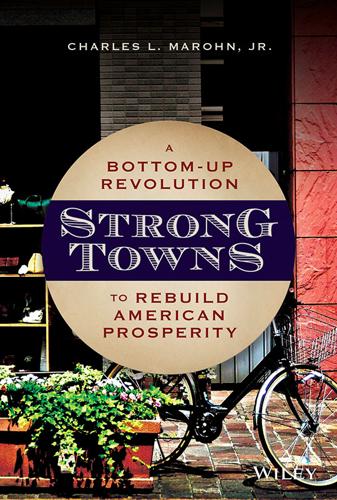
Strong Towns: A Bottom-Up Revolution to Rebuild American Prosperity
by
Charles L. Marohn, Jr.
Published 24 Sep 2019
Through our success, however, we collectively developed a low tolerance for uncomfortable feedback and a reduction in our ability to adapt to stress. We’re more comfortable behaving as if our cities are merely complicated. Increasingly, they are not. Notes 1 Ann Sussman and Justin B. Hollander, Cognitive Architecture: Designing For How We Respond to the Built Environment (New York: Routledge, 2015). 2 Ibid. 3 Neil Johnson, Simply Complexity: A Clear Guide to Complexity Theory (London: Oneworld Publications, 2017). 2 Incremental Growth Take a tentative step in the dark. If you do not run into something, you just gained knowledge. If you hit a wall, the incremental nature of your advance gives you wisdom without much lost.
…
We are finding our way back to the core through the realization that we can no longer afford to acquire any more land and that we are at reckoning if we want to strengthen our city. My group, ReForm Shreveport, began in 2016 as four friends on a mission to get Shreveporters to reconsider their relationship with the built environment. We host small group discussions about Strong Towns concepts. We tour the most productive parts of our city and discuss our failures and successes. We communicate with businesses about the potential of human-scaled retail and service sector development. We reach out to city leaders to encourage policy changes.

Radical Technologies: The Design of Everyday Life
by
Adam Greenfield
Published 29 May 2017
The implication is that if the physical environment doesn’t fully register to a person so equipped, neither will other people. Nor is the body by any means the only domain that the would-be posthuman subject may wish to transcend via augmentation. Subject as it is to the corrosive effects of entropy and time, forcing those occupying it to contend with the inconvenient demands of others, the built environment is another. Especially given current levels of investment in physical infrastructure in the United States, there is a very real risk that those who are able to do so will prefer retreat behind a wall of mediation to the difficult work of being fully present in public. At its zenith, this tendency implies both a dereliction of public space, and an almost total abandonment of any notion of a shared public realm.
…
Writers like Srnicek and Williams even propose this be accomplished as nearly as possible without the application of human effort, leading to a state of being since described by others—with tongue only partly in cheek—as “Fully Automated Luxury Communism.”7 As a consequence, we would have to rethink the organization of the built environment. We know that economic forces, and requirements founded in the material conditions of production, shape the organization of human settlements at every scale. Local and precise control over the physical form of things therefore challenges the way we think about the spatial form and social life of cities.
…
The more audacious observers of technical advancement dare to speculate that the point is not far off at which molecular nanotechnology and the “effectively complete control over the structure of matter” it affords finally bring the age of material scarcity to its close.25 In places where Green Plenty has broken out, most large-scale interventions in the built environment are intended to democratize access to the last major resource truly subject to conditions of scarcity: the land itself. Placeless urban sprawl is overwritten by high-density megastructures woven of recovered garbage by fleets of swarming robots.26 Equal parts habitat and ecosystem, they bear the signature aesthetic of computationally generated forms no human architect or engineer would ever spontaneously devise, and are threaded into the existing built fabric in peculiar and counterintuitive ways.
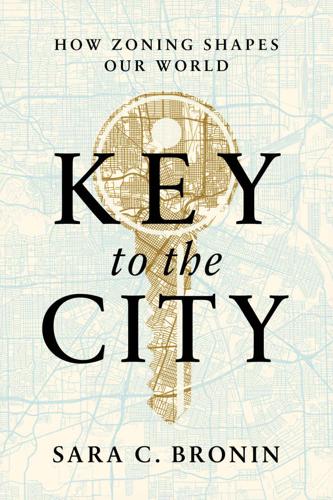
Key to the City: How Zoning Shapes Our World
by
Sara C. Bronin
Published 30 Sep 2024
In each of these chapters, I focus on the values and priorities that zoning can help us realize, weaving in examples from the boardwalks of Delray Beach and the red-light district of Baltimore to the flashy Las Vegas Strip and the deserts of Tucson. Done wrong, zoning can yoke us to past mistakes, acting as an invisible drag on our aspirations. But done right, zoning can be a revolutionary vehicle for transforming place. Properly wielded, the zoning power can give us the built environments that we yearn for and deserve. It can facilitate equitable and sustainable cities and neighborhoods. And it can help shape our economic, experiential, sociopolitical, and environmental evolution for the better. Good zoning can bring tremendous benefits, promoting communities’ values and aspirations.
…
Few would say they love the look of their local strip mall, yet strip malls are what too many codes effectively require, through minimum parking mandates and market incentives for developers to maximize profits by building the least expensive construction available. We must become more intentional about our places, thinking more carefully and comprehensively about the built environments that zoning codes both preserve and produce. Each place requires something different. What makes sense for Delray may not make sense for Galveston. What happens in Vegas may need to stay in Vegas. But by thinking carefully and seriously about what makes a community unique and what’s worthy of promotion or preservation, we can help write the rules that give us communities that enrich our everyday lives.
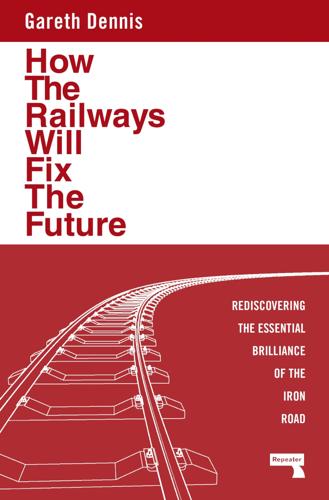
How the Railways Will Fix the Future: Rediscovering the Essential Brilliance of the Iron Road
by
Gareth Dennis
Published 12 Nov 2024
The massive centralisation of power with a very small number of billionaires and corporations, combined with the trend towards disempowering local in favour of national (and indeed pan-national) governments, has exacerbated the feelings of isolation, powerlessness and indifference already forged by our current economic system and its manifestations in the built environment. Those in power are therefore desperate for patterns of mobility to stay the same. For them, mobility within cities and countries must favour those who can afford to drive or fly. They see international mobility as a tool to bolster capital, not to bring us closer together. The movement of people across borders can only be permeable where it facilitates economic growth rather than, say, providing safe haven for those displaced by extreme weather or violence, or even for those who wish to build a new life in another part of the world.
…
We can stick with current forms of mass mobility, which the world over are based around individualised transport — both for people and to a significant extent for goods — using roads, physically and socially segregating our society, widening and entrenching existing inequalities, de-socialising the built environment, shattering communities and turbo-charging consumerism, handing our future to those who have already done their best to destroy it. Alternatively, as the tech industry would have us and our governments believe, we can wait around for fantasy solutions that, with only a little prodding, are soon revealed to be barely different from today’s dominant mode: the car.
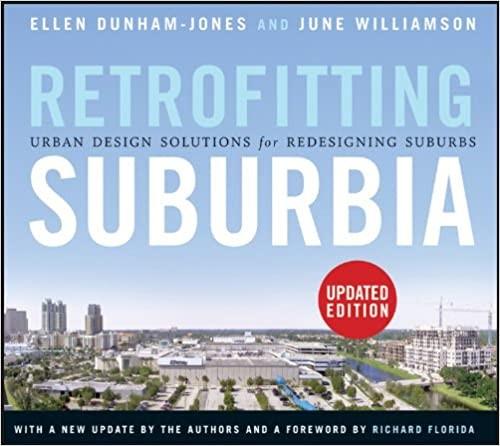
Retrofitting Suburbia, Updated Edition: Urban Design Solutions for Redesigning Suburbs
by
Ellen Dunham-Jones
and
June Williamson
Published 23 Mar 2011
We need to better understand the myriad dynamic systems of more sustainable regions, places, and buildings. Above all, we need informed imaginations that can look at entrenched patterns and question alternative possibilities—while working with communities. This is an exciting agenda for all of the professions involved with the built environment. We would do well to heed Michael Sorkin’s wise advice to see “the good city as an evolving project.”25 PART TWO THE EXAMPLES Chapter 2 Retrofitting Garden Apartments and Residential Subdivisions to Address Density and the New Demographics In 2000, U.S. Census data confirmed that more than 50% of the population of the United States was living in urbanized areas outside of central cities—in other words, in suburbs.
…
For a comparison of average energy use and carbon dioxide emissions per person in cities versus suburbs, see Alex Williams, “Don’t Let the Green Grass Fool You,” New York Times, February 10, 2008. 15 See Howard Frumkin, Lawrence Frank, and Richard Jackson, Urban Sprawl and Public Health: Designing, Planning, and Building for Healthy Communities (Washington, DC: Island Press, 2004). 16 See Reid Ewing et al., “Relationship Between Urban Sprawl and Physical Activity, Obesity, and Morbidity,” American Journal of Health Promotion 18:1 (2003); and Lawrence Frank, Martin Andresen, and Tom Schmidt, “Obesity Relationships with Community Design, Physical Activity, and Time Spent in Cars,” American Journal of Preventive Medicine 27:2 (2004). 17 A useful summary of the wide range of research in this area is presented in “Understanding the Relationship between Public Health and the Built Environment,” prepared by Design, Community & Environment; Dr. Reid Ewing; Lawrence Frank and Company; and Dr. Richard Kreutzer for the LEED-ND Core Committee, http://www.cnu.org/sites/files/leed_public_health.pdf. 18 See the writings of William Fulton, “Are Edge Cities Losing Their Edge?” Planning 62, May 1996; Charles Lockwood, “Edge Cities on the Brink,” Wall Street Journal (eastern edition), December 21, 1994, A14; Scheer, “Edge City Monopoly”; and Woody Carter, Robert Frolick, and Tim Frye, “Edge Cities or Edge Suburbs?”
…
The report is available at http://www.rpa.org. 33 Fulton, “Are Edge Cities Losing Their Edge?” 34 The percentage gains are not always dramatic but are promising considering that the examples studied were not deliberately designed to promote walk-ability. Several studies are summarized in LEED-ND Core Committee, “Understanding the Relationship Between Public Health and the Built Environment,” 21–23. More salient findings include the following: having convenience-oriented retail located near work sites doubled the use of transit from 3.4% to 7.2% (Cambridge Systematics, The Effects of Land Use and Travel Demand Management Strategies on Commuting Behavior [Washington, DC: U.S. Department of Transportation, Federal Highway Administration, 1994]); each 10% increase in retail to an employment center resulted in a 3% increase in the mode share of transit and ride-sharing trips (Robert Cervero, “Land Use Mixing and Suburban Mobility,” Transportation Quarterly 42 (1988): 429–446); residents in communities with a balance of employment and residential uses commute, on average, one-third less distance than do workers living in areas with more housing than employment (Reid Ewing, “Characteristics, Causes and Effects of Sprawl: A Literature Review,” in Environmental and Urban Issues [Miami: Florida Atlantic University/Florida International University, 1994], 7). 35 Gloria Ohland’s 2002 case study of Addison Circle describes the project in some detail and clarifies Robert Shaw’s involvement first with Columbus Realty Trust, then Post Properties, and then Amicus Partners.
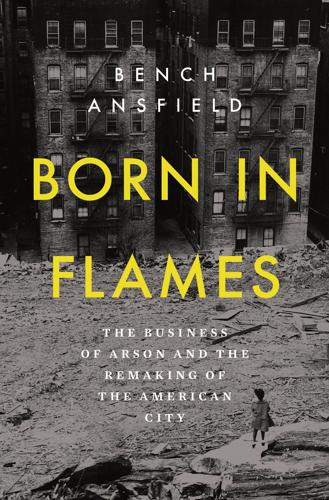
Born in Flames
by
Bench Ansfield
Published 15 Aug 2025
The Bronx-raised critic Marshall Berman cautions that Moses “turned potential long-range entropy into sudden inexorable catastrophe.” That is to say, Moses “left it forever unknown” whether the neighborhoods he tore down “would have collapsed or renewed themselves from within” were it not for his outsized mark on the built environment. There were, in fact, larger forces at work. What happened in the Bronx in the second half of the twentieth century was also happening in other New York City boroughs and in many other American cities. Industrial relocation to the suburbs and the Sunbelt saw New York City—like cities across the Northeast and Midwest—hemorrhage half a million manufacturing jobs from the late 1950s to the mid-1970s.
…
Freudenberger’s burnout unwittingly suggested how depletion, even to the point of destruction, could be profitable.28 Despite its poignance, burnout had obscured the conditions that gave it meaning. Gone were the landlords and underwriters, the agents of government austerity, the torches, and the constellation of other forces that obliterated the built environment. Freudenberger even evicted from his analogy the tenants who had in actual fact been burned out. He described his prototypical patient in this way: “I came from a pretty good home, I went to school, settled into a career, married someone I loved, had children. We’re a pretty successful family.
…
Ask one of globalization’s many critics how it affected a place like the Bronx in the late twentieth century, and the answer will likely involve deindustrialization, the offshoring of jobs, and rising unemployment. But financial globalization was directly implicated in the creative destruction of the built environment. And yet here we are, fifty years later, and the Sasse scandal and its many lessons are all but forgotten. When fire is naturalized on the basis of race, the why no longer demands an answer. To the extent that popular memory links fire in the 1970s to white-collar crime, the person wearing that white collar is most often a Jewish landlord.

The Collapse of Western Civilization: A View From the Future
by
Naomi Oreskes
and
Erik M. Conway
Published 30 Jun 2014
environment The archaic concept which, separating humans from the rest of the world, identified the nonhuman component as something which carried particular aesthetic, recreational, or biological value (see environmental protection). Sometimes the “natural” environment was distinguished from the “built” environment, contribut-ing to the difficulty that twentieth-century humans had in recognizing and admitting the pervasive and global extent 56 L e x i c o n o f A r c h A i c T e r m s of their impact. Radical thinkers, such as Paul Ehrlich and Dennis and Donella Meadows (a twentieth-century hus-band and wife team), recognized that humans are part of their environment and dependent upon it, and that its value was more than aesthetic and recreational; that the natural world was essential for human employment, growth, prosperity, and health.
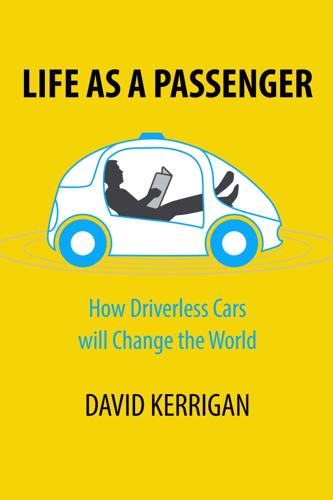
Life as a Passenger: How Driverless Cars Will Change the World
by
David Kerrigan
Published 18 Jun 2017
The purpose of this book is to examine the potential impact of the development of driverless cars in more depth than is possible in a blog or article. Although at first glance, driverless cars may seem like just another cool technology, they may in fact be one of the most profound change-enablers in human history, with far-reaching implications for employment, mobility, the built environment and beyond. Much of the commentary on this topic to date has been quite extreme - from advocates saying it’s nearly ready to doubters claiming it’s more like 30 years away to opponents saying it’ll never work or shouldn’t be allowed. There are many players in this drama - technology companies, auto companies, regulators, professional drivers and ordinary citizens.
…
A huge contributor to the growth of cities and suburbs that are home to most of the people on the planet, the car is becoming a victim of its own success. The growth in the number of cars has become unsustainable considering the space and budgets available for roads and infrastructure. For all its influence in shaping the built environment and unquestionable personal convenience, the rise of the personal automobile is not without several negatives. Most car drivers attest that owning a car is expensive and frequently frustrating - often failing to get you where you want in the timeframe you wish, and then presenting storage challenges when you do reach your destination, either in terms of availability, cost or both.
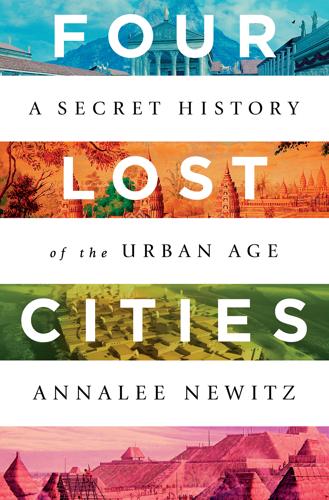
Four Lost Cities: A Secret History of the Urban Age
by
Annalee Newitz
Published 2 Feb 2021
But a person at Çatalhöyük could be descended from a revered, shared ancestor represented by an animal; they often lived in houses with people who weren’t blood relatives; and they could spend most of the day making stone tools while other people brought food in from the fields to cook. Identity was fungible and intersectional. It’s no wonder that urbanites carried stamps around to explain themselves and show their allegiances. Over time, an even more complex symbolic pattern began to emerge out of the built environment at Çatalhöyük. While I was visiting the site, the State University of New York at Buffalo anthropologist Peter Biehl suggested that the act of rebuilding a house repeatedly is the first step toward creating an idea of history. Perhaps, he mused, the people of Çatalhöyük belonged to one of the first civilizations to move beyond memory into historical thinking.
…
At the same time, an odd liberalization crept into the Roman world through these laws. To encourage marriage, Augustus allowed freeborn men to marry freedwomen for the first time, making their children legitimate. Now a woman born a slave might be freed to become the wife of a citizen, and her children would be freeborn. We can’t fully appreciate the built environment of Pompeii without understanding how it was shaped by women, and why. Though women couldn’t run for office or vote, they could own property. They could become entrepreneurs or patrons of powerful cults. The outsized footprint occupied by the Temple of Isis and the property of Julia Felix are both testimonies to female power at Pompeii, and how women were reshaping the cityscape.
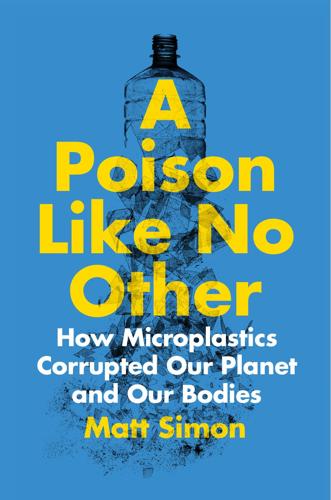
A Poison Like No Other: How Microplastics Corrupted Our Planet and Our Bodies
by
Matt Simon
Published 24 Jun 2022
Are we having a decrease in this soil microbial population? Are you changing the microbial dynamics in any way that could in turn be very harmful to the plants?” You might be wondering what the big deal is, since we don’t rely on urban green spaces for food or anything. Urban folk do, however, rely on them to make life bearable. The built environment—roads, sidewalks, structures—absorbs the sun’s energy during the day and slowly releases it at night. Consequently, urban areas can be 20 degrees Fahrenheit hotter in the summer than surrounding rural areas, where vegetation cools the landscape.31 So as the planet warms, healthy green spaces will be ever a land corrupted more critical for attenuating this urban heat island effect, as it’s known.
…
Gilbreath, Alicia, Lester McKee, Ila Shimabuku, Diana Lin, Larissa M. Werbowski, Xia Zhu, Jelena Grbic, and Chelsea Rochman. 2019. “Multiyear Water Quality Performance and Mass Accumulation of PCBs, Mercury, Methylmercury, Copper, and Microplastics in a Bioretention Rain Garden.” Journal of Sustainable Water in the Built Environment 5 (4). https://doi.org/10.1061/JSWBAY.0000883; Rochman, Chelsea M., Keenan Munno, Carolynn Box, Anna Cummins, Xia Zhu, and Rebecca Sutton. 2021. “Think Global, Act Local: Local Knowledge Is Critical to Inform Positive Change When It Comes to Microplastics.” Environmental Science and Technology 55 (1): 4–6. https://doi.org/10 .1021/acs. est.0c05746. 30.
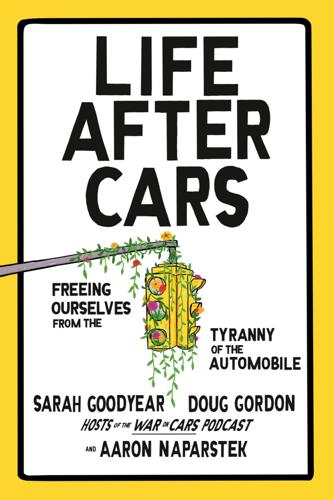
Life After Cars: Freeing Ourselves From the Tyranny of the Automobile
by
Sarah Goodyear
,
Doug Gordon
and
Aaron Naparstek
Published 21 Oct 2025
The history of the United States in the twentieth and twenty-first centuries is, in a very real way, the history of cars—and vice versa. As the saying goes, history is written by the victors. In many ways there’s no bigger victor in American history than cars, especially when one considers how completely they have shaped the economy, pop culture, politics, the built environment, the natural landscape, and even the climate. That’s why we at The War on Cars believe there’s an alternate history of cars that must be told, one that includes a more honest reckoning with mass motoring’s effects on all of the above. That history should begin not with the triumph of Henry Ford, but with the tragedy of Henry Bliss.
…
Just as adults need what are called “third spaces”—those places outside of home and work such as bars, cafés, and public spaces that enable them to socialize with other adults—kids need places outside of home and school, especially places like parks, where it’s free to hang out and play with other kids. “The best park for kids is one that they can access easily on their own, that can become their place,” said Alexandra Lange, an architecture and design critic whose book The Design of Childhood looks at how the built environment influences kids’ development and independence. Lange believes that despite the negative stereotypes of overprotective “helicopter parents,” Americans who are uncomfortable letting their children wander independently due to the threat of traffic violence have reality on their side. “It’s not an irrational fear on parents’ part to not want kids to go around on their own if they have to cross a lot of streets.
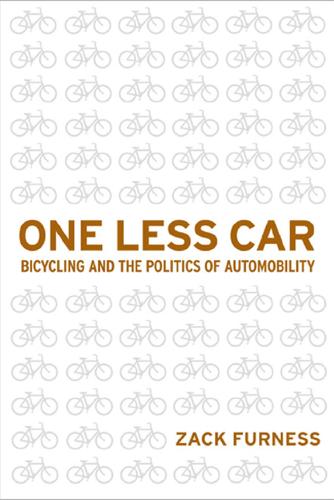
One Less Car: Bicycling and the Politics of Automobility
by
Zack Furness
and
Zachary Mooradian Furness
Published 28 Mar 2010
Unlike activist groups that attempt to physically transform roads through direct action or sabotage, Critical Mass riders take over the street to “assert a positive vision of how things should be in order to expose the current injustice of car dominated public space.”27 This mobile intervention points to the city as contested space of automobility—one mediated and dominated by auto infrastructure and the norms of driving.28 in this sense, it shares a commonality with skateboarding, a practice iain Borden describes as a method of appropriating and ultimately transforming the meaning and uses of urban space(s).29 Borden specifically theorizes skateboarding as a critique of the dominant capitalist ideology governing the built environment inasmuch as skaters advocate use value over exchange value, pleasure rather than work, and activity instead of passivity.30 Skateboarding’s representational mode, Borden argues, is not that of writing, drawing, or theorizing, but performing—a way of articulating meaning through movement.31 Despite the obvious and substantive differences between bicycling and skateboarding, a performative critique is an apt way of describing what bicyclists do when they take to the streets in Mass or en masse: not only do they use the environment in an unintended way (i.e., for a non-utilitarian purpose); they also simultaneously call attention to the cultural norms dictating both the prescribed function of the environment and the different ways it could potentially be utilized, traversed, or reterritorialized. another important distinction between skateboarding and Critical Mass is that skating is an individual practice that, with notable exceptions, is not “consciously theorized,” whereas Mass is typically used to amplify a critique: Bicycling is generally a very individual experience, especially on streets filled with stressed-out motorists who don’t think cyclists have a right to be on the road.
…
We Are Bored in the City . . . artists previously involved with the avant-garde groups COBra, lettrist international, and the international Movement for an imaginist Bauhaus formed the Si in 1957 with the goal of creating a “revolutionary program in culture.”33 The situationists formulated a radical critique of the built environment called unitary urbanism—a premise at the heart of their opposition to the spectacle of capitalism.34 They described the process of urbanism as the solidification of a passive, consumerist ideology that renders alienation tactile and material. Disrupting the physical and mental patterns nurtured by capitalism was fundamental to their belief in the revolutionary potential of everyday life, arguing that revolution would “originate in the appropriation and alteration of the material environment and its space.”35 Guy Debord, arguably the most well known Si theorist, claimed this revolutionary process could be initiated through the construction of “situations,” or moments of everyday life transformed into “a superior passional quality.”36 Simon Sadler explains the theory of situationism advocated most fervently in the late 1950s and early 1960s: One only appreciated the desperate need to take action over the city, situationists felt, once one had seen through the veil of refinement draped over it by planning and capital. if one peeled away this official representation of modernity and urbanism—this “spectacle,” as situationists termed the collapse of reality into the streams of images, products, and activities sanctioned by business and bureaucracy— one discovered the authentic life of the city teeming underneath.37 as part of their attempt to uncover the “beach under the pavement,” situationists utilized the technique of the dérive, a method of exploration in which small groups of people “drift” through urban spaces to “notice the way things resonate with states of mind, inclinations, and desires.”38 Though the technique was influenced by surrealism and the parisian fláneur, the dérive is not based on a willful submission to unconscious desires; rather, it is a means to creatively explore aspects of the city that have not been totally incorporated by the spectacle.39 Dérives are typically conducted over a period of hours or days (even weeks), involving one or more people who drop their usual motives and routines—their work, leisure activities, and normal relations—to let themselves be “drawn by the attractions of the terrain and the encounters they might find there.”40 By studying the maps and notes taken from lengthy dérives, a practice called psychogeography, the situationists formulated different theories about how people could, or more precisely should, collectively disengage from the spectacle.
…
at the most basic level, cycling slows down the world in ways that tangibly affect interpersonal communication, most notably by promoting face-to-face encounters.56 Scott larkin, author of the zine Go by Bicycle, points this out in interview with the author: “The prospect of someone stopping to talk to someone when they’re jamming by at thirty-five miles an hour is unlikely.”57 in addition, there is a sense among critics that habitual driving engenders an experience of cities that is not unlike tourism, inasmuch as urban spaces and landscapes are often abstracted into “pure, rapid, superficial spectacles.”58 Driving, according to this line of reasoning, physically distances people from both the materiality and the material realities of cities (i.e., the built environment as well as prevailing socioeconomic conditions) by facilitating a process that allows people to metaphorically and sometimes quite literally bypass the problems of cities altogether. The driver’s gaze shaped through privatized mobility, nigel Taylor argues, also objectifies and depersonalizes the world outside of the car in such as way that it transforms the environment, other vehicles, and even human beings into mere “things” that obstruct one’s movement.59 That is to say, while the car—like all transportation technologies— operates as a framing device, the “visuality of the windshield” becomes more than a casual or temporary looking glass when one considers both the ever-increasing amounts of time people individually spend “sealed off from the public and the street,” as well as a broader cultural/legal context in which “the public” is increasingly being seen as a mere amalgamation of mobile private spheres—a condition Don Mitchell calls the “SUv model of citizenship.”60 The problem, in other words, is not necessarily what one sees or does not see each time one gets behind the wheel, but rather, the way driving shapes subjectivity and fosters a broader disposition toward urban space and urban life: an entire way of seeing.61 in contrast, the bicycle is construed as an “anti-spectacular device” inasmuch as it disarticulates autonomous mobility from the privatized experience of the automobile “capsule” and rearticulates it to a more tactile, direct experience of urbanity or “the urban.”62 lee Williams highlights this sensation in an issue of Cranked, a zine devoted to bike culture in the northwest: as urban cyclists we are intimately engaged with our city’s neighborhoods in a way automobile commuters may never experience.
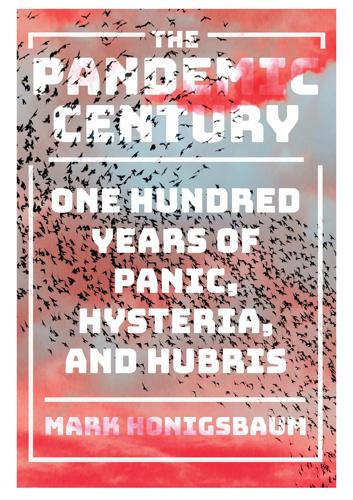
The Pandemic Century: One Hundred Years of Panic, Hysteria, and Hubris
by
Mark Honigsbaum
Published 8 Apr 2019
This suggested that hotel staff had been exposed from time to time and had managed to acquire immunity, which was why so few of them had succumbed to the infection in 1976. By contrast, the Legionnaires had no such history of exposure. THE LEGIONNAIRES’ disease outbreak is a classic example of how new technologies and changes to the built environment designed to improve hygiene and ameliorate the conditions of life are constantly giving rise to new threats to health and well-being. It also illustrates how, in certain political and cultural contexts, epidemics that might otherwise have gone unnoticed can command wide public attention and provoke considerable anxiety.
…
To the extent that Legionnaires’ disease tapped into Cold War fears about biological weapons and chemical toxins, it seemed to hark back to the preoccupations of the 1950s; hence, Congress’s concern that it was a “missed alarm.” But to the extent that it was a disease completely new to medical science, and one that could be traced to new technologies and alterations to the built environment, it seemed to represent a new paradigm of public health, one that would become increasingly relevant in the closing decades of the twentieth century. Indeed, by 1994, with the publication of Laurie Garrett’s The Coming Plague, Legionnaires’ disease was being seen as one of a series of “emerging infectious diseases” (EIDs), whose appearance was threatening to undo the medical advances of the postwar years and, with it, the certitude that advanced industrialized societies no longer needed to fear the plagues that had bedeviled previous eras.
…
Certainly urbanization and globalization would appear to be key factors. The mega-cities of Asia, Africa, and South America, like Athens in the time of Thucydides, provide ideal conditions for the amplification and spread of novel pathogens by concentrating large numbers of people in cramped and often unsanitary spaces. Sometimes technology and alterations of the built environment can mitigate the risks that such overcrowding presents for the transfer of pathogens to people. The plague abatement measures in the Mexican quarter of Los Angeles in 1924 may have been brutal and morally questionable (certainly, it is hard to imagine community activists in California tolerating the wholesale demolition of minority neighborhoods and the mass slaughter of squirrels today), but at the time they were effective in removing the threat of plague from downtown Los Angeles and its harbor.
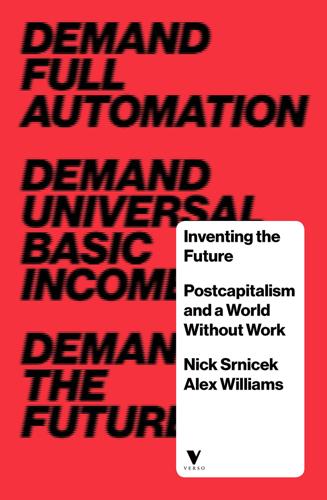
Inventing the Future: Postcapitalism and a World Without Work
by
Nick Srnicek
and
Alex Williams
Published 1 Oct 2015
If we think of global just-in-time supply chains, for example, these are economically efficient under capitalism, but also exceptionally effective in breaking the power of unions. In other words, hegemony, or rule by the engineering of consent, is as much a material force as it is a social one. It is something embedded in human minds, social and political organisations, individual technologies and the built environment that constitutes our world.20 And, whereas the social forces of hegemony must be continually maintained, the materialised aspects of hegemony exert a force of momentum that lasts long past their initial creation.21 Once in place, infrastructures are difficult to dislodge or alter, despite changing political conditions.
…
Working systematically to develop pluralism, economic research and public education will play a significant role in strengthening the utopian narratives outlined in the previous section, and providing the necessary navigational tools to chart a course out of capitalism. REPURPOSING TECHNOLOGY As we argued above, hegemony is embedded not only in the ideas of a society, but also in the built environment and technologies that surround us. These objects carry a politics within them: they facilitate particular uses and actions, while simultaneously constraining others. For instance, our current infrastructure tends to shape our societies into individualistic, carbon-based, competitive forms, regardless of what individuals or collectives may want.
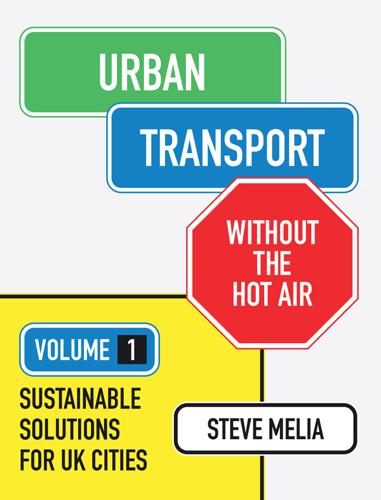
Urban Transport Without the Hot Air, Volume 1
by
Steve Melia
On: www.gov.uk Distance driven (Great Britain) from 2011 ‘National travel survey’ (Table 101). 228 Evans, A. and Unsworth, R. (2012) ‘Housing densities and consumer choice’. Urban Studies. 49(6), pp. 1163-1177. 229 Transport Scotland (2012) Statistical Bulletin – ‘National travel survey’ 2011/2012: Table 5. On: www.transportscotland.gov.uk 230 Melia, S. (in press) ‘Evaluating policy impact – The built environment and travel behaviour’. In: Spotswood, Fiona eds Beyond Behaviour Change. Policy Press. 231 CLG (2010) ‘Household projections, 2008 to 2033, England’. On: www.gov.uk 232 Hope, Christopher (2011) ‘Planning reforms: David Cameron aide privately told builders new NPPF would “trigger more development”’.
…
On: www.southwest-ra.gov.uk 264 Jain, J. and Lyons, G. (2008) ‘The gift of travel time’. Journal of Transport Geography. 16 (2), pp. 81-9. 265 Hickman, R. and Banister, D. (2007) ‘Transport and reduced energy consumption: the role of urban planning’. Working Paper 1026. Oxford University Transport Studies Unit. 266 Ewing, R. and Cervero, R. (2010) ‘Travel and the built environment: A meta-analysis’. Journal of the American Planning Association. 76 (3), pp. 265-94. 10 Summary: myths, values and challenges 267 See for example the government’s definition of ‘sustainable development’ within (2012) ‘National planning policy framework’. On: www.gov.uk. 268 Goodall, Chris (2013) Sustainability – all that matters.
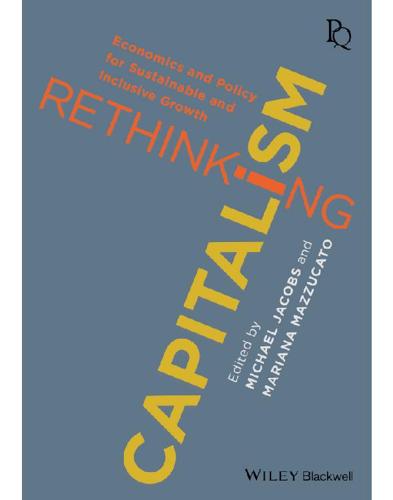
Rethinking Capitalism: Economics and Policy for Sustainable and Inclusive Growth
by
Michael Jacobs
and
Mariana Mazzucato
Published 31 Jul 2016
From commercial lighting systems and airplane engines to jeans, carpets and cars, the question has become: why buy when you have the option of ‘renting’ a product that is upgradeable, maintained and available on demand? There is increasing innovation towards making cities more liveable and less polluting, with the revamping of transport systems and the built environment and the promotion of the ‘sharing economy’, in which ICT-enabled communication allows citizens to share goods, either through a centralised, fee-paying service, such as a car club, or using direct peer-to-peer exchange for such items as household tools and garden equipment. And lifestyle aspirations are stimulating industries in the areas of personal health and individual fulfilment—from innovations in local food networks to high-tech ICT and bio-science-driven preventive and personalised medicine, and the championing of the ‘collaborative’ and ‘creative’ economies.
…
Just as the Marshall Plan aided the reconstruction of Europe while increasing transatlantic trade, the international community needs to implement new and effective ways of giving support to development, recognising the new possibilities opened by ICT and globalisation.38 As discussed above, the rise of these countries would benefit advanced, emerging and developing nations, creating new and important trade flows in all directions. Reorient finance not by controls but by taxing short-term gains highly and lowering the rate with time, thus making it more profitable to invest in the real economy and to do so long-term. In addition, public investment in green research, development and market creation,39 in revamping the built environment and in funding private green projects is necessary to provide support for the riskier innovations in the green direction and to increase the synergies for others to invest. This list is far from complete—but it is a list that is grounded not only in the historical discussion above, but also in examples already being tried out and explored in villages, towns, cities and nations around the world.
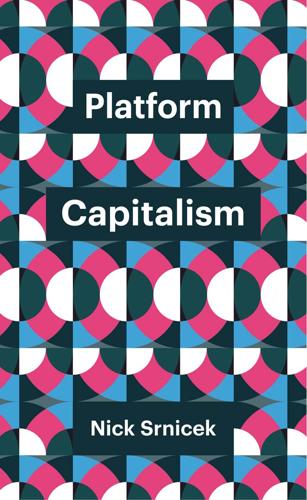
Platform Capitalism
by
Nick Srnicek
Published 22 Dec 2016
But the 1970s created a major shift within these general conditions, away from secure employment and unwieldy industrial behemoths and towards flexible labour and lean business models. During the 1990s a technological revolution was laid out when finance drove a bubble in the new internet industry that led to massive investment in the built environment. This phenomenon also heralded a turn towards a new model of growth: America was definitively giving up on its manufacturing base and turning towards asset-price Keynesianism as the best viable option. This new model of growth led to the housing bubble of the early twenty-first century and has driven the response to the 2008 crisis.
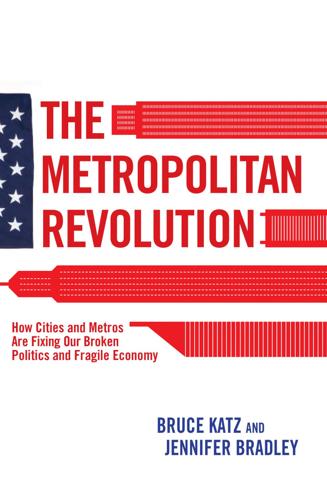
The Metropolitan Revolution: How Cities and Metros Are Fixing Our Broken Politics and Fragile Economy
by
Bruce Katz
and
Jennifer Bradley
Published 10 Jun 2013
We’re in a new phase of the technology revolution— not technology for technology’s sake, but technology in the service of commerce.”31 The school, named Cornell NYC Tech, will eventually be home to 280 faculty members and up to 2,750 graduate students doing applied research in “hubs”—not traditional academic departments—of media, health industries, and the built environment.32 Cornell, Technion, 02-2151-2 ch2.indd 26 5/20/13 6:48 PM NYC: INNOVATION AND THE NEXT ECONOMY 27 New York City, and the NYCEDC all hope that graduates will help New York–based companies, nonprofits, and industries—ranging from hospitals to news companies, from museums to real estate developers—use new technologies to work better, more efficiently, or at a grander scale than they can with existing tools.
…
Economies that do not add new kinds of goods and services, but continue only to repeat old work, do not expand much nor do they, by definition, develop.”51 More specifically, if a metropolitan area starts to lose its export orientation and forgets about the need to make things or provide services that are competitive on a national or international scale, eventually even its local market will become stuck.52 The Applied Sciences campuses are, in essence, a major push for New York to create more things to sell to the rest of the country and the rest of the world. The vast Greater New York metropolitan area sells only about 7 percent of what it produces to other countries—ranking it 93rd of the largest 100 U.S. metros.53 But the “built environment” solutions that all of the Applied Sciences campuses are working on could be in tremendous demand across the globe. As more and more people move to megacities in the coming decades, and the demand for energy soars, cities will need ways to build more efficient buildings in more efficient configurations.
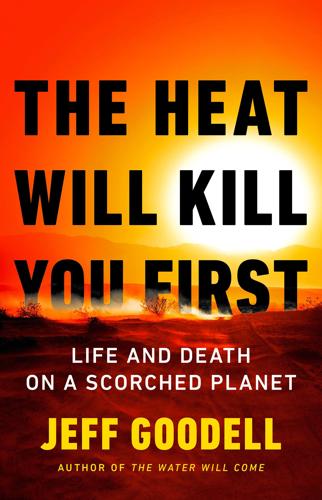
The Heat Will Kill You First: Life and Death on a Scorched Planet
by
Jeff Goodell
Published 10 Jul 2023
“Will the Paris Climate Deal Save the World?” Rolling Stone, January 13, 2016. https://www.rollingstone.com/culture/culture-news/will-the-paris-climate-deal-save-the-world-56071/ entire New York City: Helene Chartier. “The Built Environment Industry Has a Huge Responsibility in the Climate Crisis.” ArchDaily, September 22, 2022. https://www.archdaily.com/989430/the-built-environment-industry-has-a-huge-responsibility-in-the-climate-crisis million trees: Dana Rubenstein. “A Million More Trees for New York City: Leaders Want a Greener Canopy.” New York Times, February 12, 2022. https://www.nytimes.com/2022/02/12/nyregion/trees-parks-nyc.html Seville: Laura Millan Lombrana.
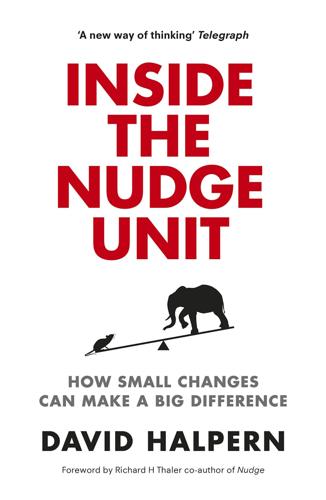
Inside the Nudge Unit: How Small Changes Can Make a Big Difference
by
David Halpern
Published 26 Aug 2015
I. (2008), ‘Spending money on others promotes happiness’, Science, 319(5870): 1687–8. 27 https://www.ipsos-mori.com/Assets/Docs/Publications/SRI-National-Citizen-Service-2013-evaluation-main-report-August2014.PDF 28 http://www.behaviouralinsights.co.uk/publications/evaluating-youth-social-action 29 Halpern, D., (1995), Mental health and the built environment. Taylor and Francis. Also, Halpern, D. (2008) ‘An evidence-based approach to building happiness building for happiness, in RIBA-edited volume, Jane Wernick, J (ed) Building happiness: architecture to make you smile. RIBA Building Futures, Black Dog Publishers. 30 This is an idea suggested by Paul Resnick in the USA, that is still oddly rare. 31 Alice Isen, ibid. – ref. 6 in ‘Social’ (Ch. 5). 32 Revision of the ‘magenta book’, which sets out how evaluations are done, has also been undertaken – the impacts of policies on well-being should also be measured, and where possible using the newly developed ONS measures. 33 Brickman, P., Coates, D., and Janoff-Bulman, R. (1978), ‘Lottery winners and accident victims: Is happiness relative?’
…
HM Treasury. 35 Inglehart, Ronald F., Foa, R., Peterson, C., and Welzel, C. (2008), ‘Development, Freedom, and Rising Happiness A Global Perspective (1981– 2007)’, Perspectives on Psychological Science, 3(4): 264–85. DOI. Abstract. Public Access. Local Access. 36 Halpern, D. and Reid, J. (1992); ‘Effect of unexpected demolition announcement on health of residents’. BMJ 304:1229; Halpern, D (1995), Mental health and the built environment. Taylor and Francis. 37 Buell, Ryan W., and Michael I. Norton. The Labor Illusion: How Operational Transparency Increases Perceived Value.’ Management Science 57, no. 9 (September 2011): 1564–1579. Buell, Ryan W., and Michael I. Norton. ‘Think Customers Hate Waiting? Not So Fast…’ Harvard Business Review 89, no. 5 (May 2011). 38 The event was run in March 2007, with Ipsos MORI selecting a random stratified sample of the public. 39 See Halpern, D., (2009), Hidden Wealth of Nations, Polity Press, for more detail on background, including of the Canadian work.
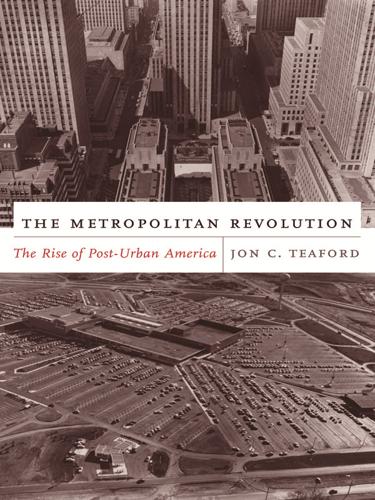
The Metropolitan Revolution: The Rise of Post-Urban America
by
Jon C. Teaford
Published 1 Jan 2006
The gentrifiers and Rouse presented a selective vision of this past that emphasized lively markets, colorful waterfronts, and charming neighborhoods; the steel, soot, hectic pace, and huddled masses of America’s urban tradition were missing from their back-to-the-city vision. Yet this vision seemed to offer a viable alternative to the suburbs, where little of the built environment predated 1945. For at least some consumers, the reconstructed urban heritage of Rouse and the gentrifiers was an appealing commodity that was worth buying. Moreover, it was an attractive commodity to millions of tourists and suburban visitors because it did not represent the metropolitan norm.
…
Focusing on the Los Angeles of gang conflict, police repression, social and economic inequities, and public warfare on the poor, Davis depicted the end-of the-century city as a place of fear and seething tension, an environment ready to explode and worthy of destruction. Davis posited the existence of a “new class war … at the level of the built environment,” with Los Angeles as “an especially disquieting catalogue of the emergent liaisons between architecture and the American police state.”70 In other words, the glittering high-rise monuments to global capitalism so admired by many observers were actually stakes driven into the heart of the poor.
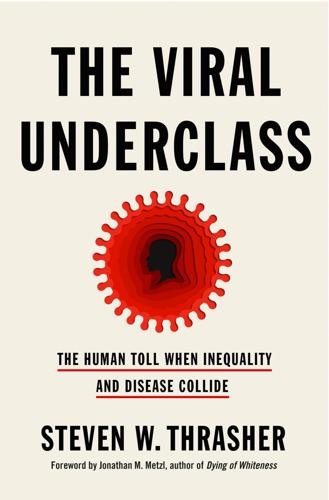
The Viral Underclass: The Human Toll When Inequality and Disease Collide
by
Steven W. Thrasher
Published 1 Aug 2022
Yet their effects do discriminate against the bodies of the underclass, because those bodies have been placed in proximity to danger by the structural design of powerful humans. In a hurricane, water drowns the underclass not because two molecules of hydrogen and one of oxygen discriminate by income or race. Rather, the inequitable drownings happen because the built environment of society makes it so water will physically be kept away from the rich, while stormwaters will flow through the cracks in flimsy barriers to flood the poor. Similarly, viruses show us where the cracks in our society are; they offer a stark revelation of inequality. In times of mass crisis, those cracks get wider and more people fall into them.
…
And despite this clearly ableist stance—and even though he reaffirmed it in 2019—Emanuel was appointed to then-President-elect Joe Biden’s COVID-19 transition task force in 2020. Similarly to how racism privileges whiteness and punishes people of color, ableism privileges able-bodied people and punishes people who are disabled in law, culture, and the built environment, among other arenas. And it is a defining, structural force in U.S. society. America is designed to accommodate a mythical person who is a certain size and whose body has certain idealized, profit-generating abilities. Decisions are made all the time that affect this. For instance, a building with stairs in front of its entry and no ramp privileges people who can climb those stairs and disadvantages people in wheelchairs (young and old), people using crutches, and babies in strollers.

Stuck: How the Privileged and the Propertied Broke the Engine of American Opportunity
by
Yoni Appelbaum
Published 17 Feb 2025
When a place prospered, it quickly swelled with new arrivals. Builders rushed to meet the demand with housing. Farms gave way to clusters of houses, which turned into town houses, which sprouted into apartment buildings or even high-rises. But in today’s burgeoning metropolises and boomtowns, restrictions have effectively frozen the built environment. As a result, housing has grown artificially scarce and prohibitively expensive. A fortunate few can still afford to move where they want. Most people, though, would have to pay so much more for housing in prospering cities that offered better jobs that relocation would leave them worse off overall.
…
Most of the regulations that restrain mobility sprang from an attempt to impose order and rationality on the landscape and from the mistaken assumption that controlling the form that buildings take is an efficient means of reforming the people they contain. To approach a community in the belief that order can be imposed architecturally, as Jane Jacobs wrote, “is to make the mistake of attempting to substitute art for life.” Like other natural processes, the evolution of the built environment will be full of false starts and dead ends, full of contradictory preferences and jarring contrasts and all the wasteful chaos that the first progressive planners hoped to banish forever. Contemporary zoning codes are stuffed full of special districts and overlays and exceptions, evidence of the failure of applying standardized solutions to the rich and varied lives of human communities.
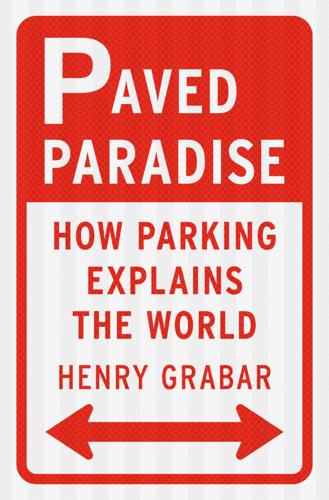
Paved Paradise: How Parking Explains the World
by
Henry Grabar
Published 8 May 2023
Go to note reference in text on some afternoons streetcar operators: Barrett, Automobile and Urban Transit, 63. Go to note reference in text Property owners responded immediately: Mark Bottles, “Mass Politics and the Automobile in Los Angeles,” in The Car and the City: The Automobile the Built Environment, and Daily Urban Life, ed. Martin Wachs and Margaret Crawford (Ann Arbor: University of Michigan Press, 1992), 198–200. Go to note reference in text There were rumors of a woman: Eran Ben-Joseph, Rethinking a Lot: The Design and Culture of Parking (Cambridge, MA: MIT Press, 2012), 69.
…
Go to note reference in text He had tried to put: Olivia Erlanger and Luis Ortega Govela, Garage (Cambridge, MA: MIT Press, 2018), 32. Go to note reference in text “Putting a garage in a house”: Drummond Buckley, “A Garage in the House,” in The Car and the City: The Automobile, the Built Environment, and Daily Urban Life, ed. Martin Wachs and Margaret Crawford (Ann Arbor: University of Michigan Press, 1992), 133. Go to note reference in text As late as 1936: Buckley, “A Garage in the House,” 138. Go to note reference in text “the ruin of the backyard”: Jackson, “Domestication of the Garage.”
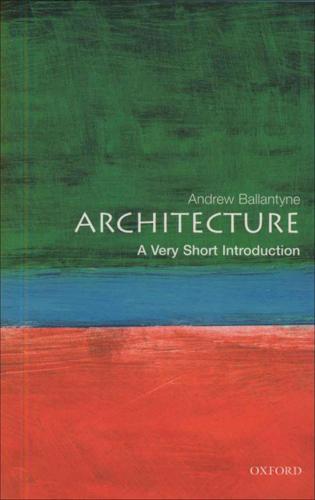
Architecture: A Very Short Introduction
by
Andrew Ballantyne
Published 19 Dec 2002
As individuals we might have made a different decision, but as a society, given the flows and concentrations of money that circulate, and given the political processes that mediate the decisions, the buildings that surround us are produced. As individuals, most of us can do very little to shape the built environment in general. In some circumstances, though, concentrations of wealth and power have made it possible for individuals to command great changes. It was said of the Roman emperor Augustus that when he came to Rome it was built in brick, but when he left it was marble. And Ozymandias (Rameses II) evidently commissioned grand and extensive works.
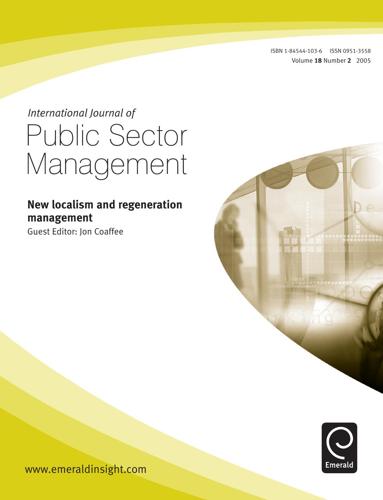
New Localism and Regeneration Management
by
Jon Coaffee
Published 1 Mar 2005
Gomes Caribbean Centre for Development Administration, St Michael, Barbados Dr Stephen Ackroyd The Management School, University of Lancaster, Lancaster, UK Dr Chira Hongladarom Human Resources Institute, Thammasat University, Bangkok, Thailand Professor Refat Al-faouri Faculty of Economics and Administrative Sciences, Yarmouk University, Irbid, Jordan Professor Owen Hughes Department of Management, Monash University, Melbourne, Australia Dr Michael Barzelay Interdisciplinary Institute of Management, London School of Economics, London, UK Professor Mathias Beck Division of Risk, Caledonian Business School, Glasgow, UK John Hutton Henley Management College, Henley-on-Thames, UK Dr Douglas McCready School of Business and Finance, Wilfrid Laurier University, Waterloo, Canada Professor Jonathan Boston School of Government, Victoria University, Wellington, New Zealand Penny McKeown Senior Lecturer, Queen’s University, Belfast Dr Richard Boyle Institute of Public Administration, Clonkskeagh, Ireland Dr Anthony B.L. Cheung Department of Public and Social Administration, City University of Hong Kong, Kowloon Tong, Hong Kong John G. Corcoran Economist, School of the Built Environment, Limerick Institute of Technology, Limerick, Eire Joan Corkery European Centre for Development, Maastricht, The Netherlands Dr Carolyn Currie School of Finance and Economics, University of Technology, Broadway, Sydney, Australia Editorial advisory board 107 Geoff Merchant Civil Service College, Ascot, Berkshire, UK Peter Noordhoek Northedge Ltd, Gouda, The Netherlands Dr James Nti Management Development Institute, Serrekunda, The Gambia Dr Vinod Shanbhag All India Management Association, New Delhi, India David Shand Financial Management Board, OPCFM, The World Bank, Washington DC, USA Kuppusamy Singaravelloo Department of Administrative Studies and Politics, University of Malaysia, Kuala Lumpur, Malaysia Dr Andrew L.S.
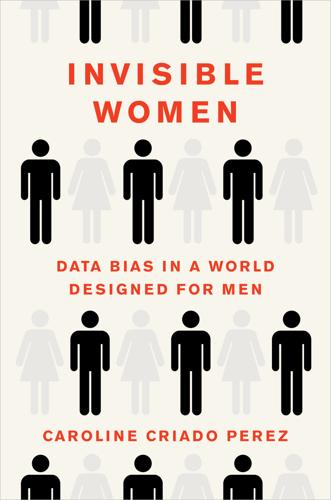
Invisible Women
by
Caroline Criado Perez
Published 12 Mar 2019
p=25015 55 https://www.boell.de/en/2014/06/11/we-were-not-invited-party-women-and-world-cup 56 http://www.citylab.com/commute/2013/09/how-design-city-women/6739/ 57 Ibid. 58 http://www3.weforum.org/docs/GGGR16/WEF_Global_Gender_Gap_Report_2016.pdf 59 Alexis Grenell (2015), ‘Sex & the Stadt: Reimagining Gender in the Built Environment’, http://www.academia.edu/10324825/Sex_and_the_Stadt_Reimagining_Gender_in_the_Built_Environment 60 Architekturzentrum Wien (2008), Housing in Vienna: Innovative, Social, Ecological, Vienna 61 http://usatoday30.usatoday.com/news/nation/2007–12-25-Designingwomen_N.htm Chapter 2 1 https://twitter.com/SamiraAhmedUK/status/849338626202886144 2 https://www.barbican.org.uk/about-barbican/people 3 Banks, Taunya Lovell (1991), ‘Toilets as a Feminist Issue: A True Story’, Berkeley Women’s Law Journal, 6:2 263–289 4 Greed, Clara (2014), ‘Global gendered toilet provision’, in ‘More Public than Private: Toilet Adoption and Menstrual Hygiene Management II’, AAG Annual Conference, Tampa, Florida, USA, 8–12 April 2014 5 https://www.ncbi.nlm.nih.gov/pmc/articles/PMC3749018/ 6 Greed (2014) 7 http://www.unric.org/en/latest-un-buzz/29530-one-out-of-three-women-without-a-toilet 8 http://womendeliver.org/2016/yale-study-examines-link-sexual-violence-access-sanitation/ 9 http://indianexpress.com/article/india/india-news-india/india-has-60-4-per-cent-people-without-access-to-toilet-study/ 10 Greed (2014) 11 Ibid. 12 http://www.huffingtonpost.com/rose-george/open-defecation-india_b_7898834.html https://www.theguardian.com/global-development/2014/aug/28/toilets-india-health-rural-women-safety 13 https://www.hrw.org/sites/default/files/report_pdf/wrdsanitation0417_web_0.pdf 2017 14 Sommer, Marni, Chandraratna, Sahani, Cavill, Sue, Mahon, Therese, and Phillips-Howard, Penelope (2016), ‘Managing menstruation in the workplace: an overlooked issue in low- and middle-income countries’, Int.

The Architecture of Happiness
by
Alain de Botton
Published 10 Dec 2008
Nietzsche observed that the development portentously known as the ‘Italian Renaissance’, which we might imagine to have been engineered by innumerable actors, was in fact the work of only about a hundred people, while the related innovation which textbooks call the ‘rebirth of Classicism’ depended on even fewer advocates: a single structure, Brunelleschi’s Foundling Hospital, and one treatise, Leone Battista Alberti’s Ten Books on Architecture (1452), were enough to impress a new sensibility on the world. It took just one volume, Colen Campbell’s Vitruvius Britannicus (1715), to entrench the Palladian style in the English landscape, and a mere 200 or so pages of Le Corbusier’s Towards a New Architecture (1923) to decide the appearance of much of the built environment of the twentieth century. Certain buildings – the Schröder House, the Farnsworth House, the California Case Study Houses – have had an impact quite out of proportion to their size or cost. Learning to recognise the charms of raw concrete: Marte. Marte Architects, house, Voralberg, 1999 In all of these tectonic shifts, the tenacity of the prime movers was every bit as important as the resources at their disposal.

City: A Guidebook for the Urban Age
by
P. D. Smith
Published 19 Jun 2012
Thanks to the car industry, Detroit grew from a city of 300,000 to nearly a million in the period 1900 to 1920, making it the fastest growing city in America at the time, after Los Angeles. 39. Sam Bass Warner, ‘Learning from the Past: Services to Families’, in Martin Wachs and Margaret Crawford, eds, The Car and the City: The Automobile, the Built Environment and Daily Urban Life (Ann Arbor: University of Michigan Press, 1992), 9. Before the automobile, Los Angeles had a light rail system known as the ‘Yellow Cars’. Electric rail returned to Los Angeles in 1990 and there are plans for extending the network. 40. Jean Baudrillard, America, tr.
…
Kruse (eds), The Spaces of the Modern City: Imaginaries, Politics, and Everday Life (Princeton: Princeton University Press, 2008) Roth, Ralf, and Marie-Noelle Polino (eds), The City and the Railway in Europe (Aldershot: Ashgate, 2003) Vanderbilt, Tom, Traffic: Why We Drive the Way We Do (and What It Says About Us) (London: Penguin, 2009) Wachs, Martin, and Margaret Crawford (eds), The Car and the City: The Automobile, the Built Environment and Daily Urban Life (Ann Arbor: University of Michigan Press, 1992) Wolmar, Christian, The Subterranean Railway: How the London Underground Was Built and How It Changed the City Forever (London: Atlantic Books, 2005) 6 Money Ali, Syed, Dubai: Gilded Cage (New Haven: Yale University Press, 2010) Davis, Mike, City of Quartz: Excavating the Future in Los Angeles (London: Vintage, 1990) Ferguson, Niall, The Ascent of Money: A Financial History of the World (London: Allen Lane, 2008) Crossick, Geoffrey and Serge Jaumain (eds), Cathedrals of Consumption: The European Department Store, 1850–1939 (Aldershot: Ashgate, 1999) Geiste, Johann Friedrich, Arcades: The History of a Building Type (Cambridge, MA: MIT Press, 1983) Gilfoyle, Timothy J., A Pickpocket’s Tale: The Underworld of 19th-century New York (New York: Norton, 2006) Mattie, Erik, World’s Fairs (Princeton: Princeton Architectural Press, 1998) Miller, Michael B., The Bon Marché: Bourgeois Culture and the Department Store, 1896–1920 (London: Allen & Unwin, 1981) Minton, Anna, Ground Control: Fear and Happiness in the 21st-Century City (London: Penguin, 2009) Parker, Geoffrey, Sovereign City: The City-State Through History (London: Reaktion, 2004) Parkins, Helen and Christopher Smith (eds), Trade, Traders and the Ancient City (London: Routledge, 1998) Reader, John, Cities (London: Heinemann, 2004) Scarpa, Tiziano, Venice Is a Fish: A Cultural Guide (London: Serpent’s Tail, 2009) Tittler, Robert, Architecture and Power: The Town Hall and the English Urban Community c. 1500–1640 (Oxford: Clarendon, 1991) Zecker, Robert, Metropolis: The American City in Popular Culture (Westport: Praeger, 2008) 7 Time Out Berman, Marshall, On the Town: One Hundred Years of Spectacle in Times Square (London: Verso, 2009) Carcopino, Jérôme, tr.
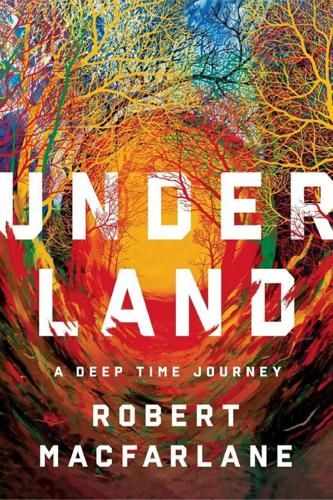
Underland: A Deep Time Journey
by
Robert Macfarlane
Published 1 May 2019
Arguably the world’s first urban explorer, and probably the worst.’ ~ For some years before coming to the catacombs, I had been finding my way into the subculture of urban exploration: this was how I had come to know Lina. Urban exploration might best be defined as adventurous trespass in the built environment. Among the requirements for participation are claustrophilia, lack of vertigo, a taste for decay, a fascination with infrastructure, a readiness to climb fences and lift manhole covers, and a familiarity with the varying laws of access across different jurisdictions. Among the sites favoured by urban explorers are skyscrapers, disused factories and hospitals, former military installations, bunkers, bridges and storm-drain networks.
…
Bradley and I made a number of exploration trips together, and while planning these trips we communicated by postcard, on the grounds that this open form of correspondence – readable by anyone who cared to pick our postcards up and flip them over – was the most secure way to be in contact, given the authorities’ interest in Bradley. No security agency still steams open letters or reads people’s postcards; instead they watch text and WhatsApp conversations, and packet-sniff emails. Travelling with Bradley both deepened and heightened my sense of landscape, and of the built environment in particular. We found our ways into many strange sites and places. As well as a daredevil adventurer’s streak, Bradley had an archaeologist’s interest in contemporary forms of obsolescence, and a natural historian’s interest in how the wild returned to abandoned places. One night we set out to climb a transporter bridge in Newport, ascending the supply staircase and then inching out along its trunk-thick cables strung above the dark river.
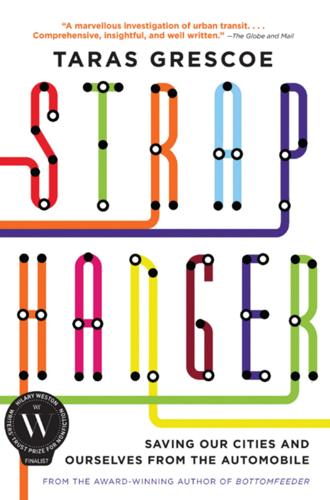
Straphanger
by
Taras Grescoe
Published 8 Sep 2011
Time spent in a car is also correlated with social isolation: every ten minutes spent in daily commuting cuts involvement in community affairs by 10 percent. North Americans now spend so much time in cars that oncologists say drivers have significantly higher rates of skin cancer on the left side of their bodies. But the automobile’s most insidious impact is on the built environment. Between cul-de-sacs and hundred-acre Wal-Mart parking lots, metropolitan areas now eat up mind-boggling amounts of land. The cities of Dallas and Fort Worth, for example, have merged into a single conurbation the size of the nation of Israel. A large percentage of Americans now live in what is considered sprawl—fracts of low-density, single-family homes scattered over the urban fringes with little planning oversight.
…
“The Sensuous City.” Philadelphia Inquirer, January 8, 2010. Stilgoe, John R. Train Time: Railroads and the Imminent Reshaping of the United States Landscape. Charlottesville: University of Virginia Press, 2007. Sturm, Roland. “Urban Design, Lifestyle, and the Development of Chronic Conditions, the Built Environment and Childhood Obesity.” National Institute of Environmental Health Sciences, http://www.niehs.nih.gov, 2005. U.S. Environmental Protection Agency. “Residential Construction Trends in America’s Metropolitan Regions.” http://www.epa.gov/dced/construction_trends.htm, January 2010. 11. The Toronto Tragedy Agrell, Siri.
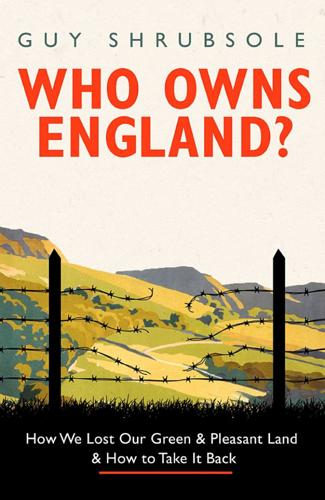
Who Owns England?: How We Lost Our Green and Pleasant Land, and How to Take It Back
by
Guy Shrubsole
Published 1 May 2019
But private landowners naturally want to make a living from their land – whether that’s farming, forestry, mining or hunting – and these industries can all too readily come into conflict with nature conservation. NPAs do have some planning powers which enable them to put the brakes on development within national parks, but these are mostly limited to the built environment and extractive industries. Sir Sebastian Anstruther, for example, one of the major landowners in the South Downs National Park, wanted to dig up 75,000 tonnes of sand every year on his estate, but was dissuaded from doing when his planning application prompted a public outcry. Yet planning constraints within national parks don’t prevent Sir Sebastian’s neighbour, the Duke of Richmond, from operating a golf course and racecourse on his Goodwood Estate, both of them within the park boundary.
…
UK agriculture generates around 46 million tonnes of greenhouse gas emissions every year – 10 per cent of the UK total – yet farmers and landowners are under no binding obligations to bring these down. Seventy per cent of England is farmland, yet decisions about how this land is best used barely ever come within the ambit of the planning system, where the focus instead is on the built environment. The National Farmers’ Union constantly complains about bureaucratic red tape tying up farmers. But history shows that governments have typically remained wary about doing anything at all to infringe the absolute rights of landowners to private property, whether that’s around planning, access rights or the operation of SSSIs.
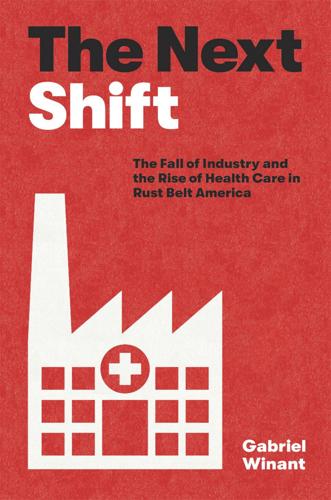
The Next Shift: The Fall of Industry and the Rise of Health Care in Rust Belt America
by
Gabriel Winant
Published 23 Mar 2021
A lot of times, we would get in trouble for stealing apples, they would tell our mother. Then a lot of times, the Italians would come down, they would give us stuff. And in turn, my dad and my mom gardened, they would give them tomatoes.”31 This older ethnic pattern had solidified in the durable form of the built environment, not only homes but also churches, schools, and public accommodations—giving rise to both informal interracial sociality and also customary practices of segregation rather than institutionalized ones. This contradictory mix of racial feeling and practice was the result of the durability of the region’s class structure, within which the neighborhood was a source of security for the working class.
…
On the city’s industrial history, see Kenneth J. Kobus, City of Steel: How Pittsburgh Became the World’s Steelmaking Capital during the Carnegie Era (Lanham, MD: Rowman & Littlefield, 2015). 10. Herb Edwards, interview, box 2, folder 16, SOHP; Anne Yurcon, interview with James R. Barrett, May 12, 1976, HAOHPR. On the built environment in cultures of production generally, see Tim Ingold, “The Temporality of the Landscape,” World Archaeology 25, vol. 2 (1993), 152–174; Andrew Herod, Labor Geographies: Workers and the Landscapes of Capitalism (New York: Guilford Press, 2001); Thomas G. Andrews, Killing for Coal: America’s Deadliest Labor War (Cambridge, MA: Harvard University Press, 2010).

Drive: The Surprising Truth About What Motivates Us
by
Daniel H. Pink
Published 1 Jan 2008
You can do the same with your online presence if you listen to Shirky and: ¥ Create an environment that makes people feel good about participating. ¥ Give users autonomy. ¥ Keep the system as open as possible. And what matters in cyberspace matters equally in physical space. Ask yourself: How does the built environment of your workplace promote or inhibit autonomy, mastery, and purpose? PROMOTE GOLDILOCKS FOR GROUPS A lmost everyone has experienced the satisfaction of a Goldilocks task the kind that's neither too easy nor too hard, that delivers a delicious sense of flow. But sometimes it's difficult to replicate that experience when you're working in a team.

The Zero Marginal Cost Society: The Internet of Things, the Collaborative Commons, and the Eclipse of Capitalism
by
Jeremy Rifkin
Published 31 Mar 2014
The Big Data is analyzed 24/7 to recalibrate supply chain inventories, production and distribution processes, and to initiate new business practices to increase thermodynamic efficiencies and productivity across the value chain. The IoT is also beginning to be used to create smart cities. Sensors measure vibrations and material conditions in buildings, bridges, roads, and other infrastructure to assess the structural health of the built environment and when to make needed repairs. Other sensors track noise pollution from neighborhood to neighborhood, monitor traffic congestion on streets, and pedestrian density on sidewalks to optimize driving and walking routes. Sensors placed along street curbs inform drivers of the availability of parking spaces.
…
Arguably, the IoT’s most dramatic impact thus far has been in security systems. Homes, offices, factories, stores, and even public gathering places have been outfitted with cameras and sensors to detect criminal activity. The IoT alerts security services and police for a quick response and provides a data trail for apprehending perpetrators. The IoT embeds the built environment and the natural environment in a coherent operating network, allowing every human being and every thing to communicate with one another in searching out synergies and facilitating interconnections in ways that optimize the thermodynamic efficiencies of society while ensuring the well-being of the Earth as a whole.
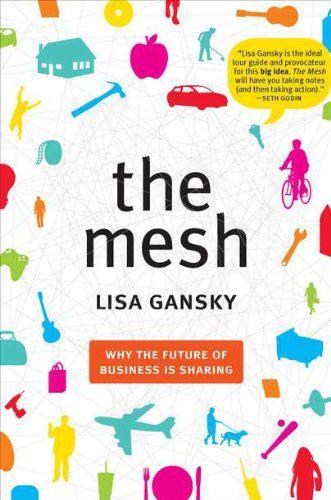
The Mesh: Why the Future of Business Is Sharing
by
Lisa Gansky
Published 14 Oct 2010
It is a phenomenal weekend event that brings Makers from all over the world together with other Makers, Maker wannabes, and Maker appreciators. Many are good early adopters—they can usually put up with setbacks and laugh them off. The community includes people interested in robotics, architecture, clothing, food, parachutes, bicycles, and many other things. They think about the built environment, energy, and transportation. The world of people who are passionate about how to design, make, repair, and embellish things is zooming along. Hackerspaces, for example, are sites that support those who want to start or join a local community where people share a physical space, equipment, and ideas for working on projects.
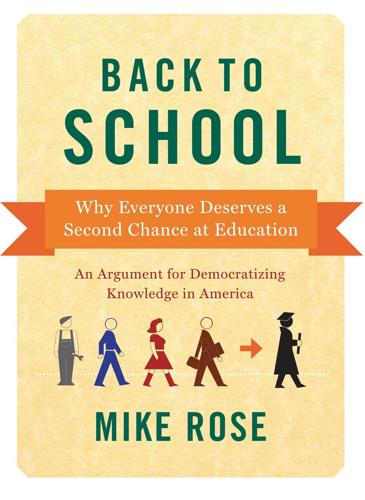
Back to School: Why Everyone Deserves a Second Chance at Education
by
Mike Rose
Published 17 Sep 2012
Colleges that can afford to, devote considerable effort to creating a particular environment and use that environment—and images of it—in marketing their institution. Many of the institutions that are the focus of this book do not have the kinds of resources that support large-scale construction or renovation projects or lush landscaping and aesthetic refinements. But the basic principle still holds: The built environment both constrains and enhances student experience. So upkeep and maintenance, routine landscaping, custodial and sanitation services all matter immensely. The condition of bathrooms tells students a whole lot about how students are valued. Within an institution’s budgetary constraints, are there inviting common spaces?
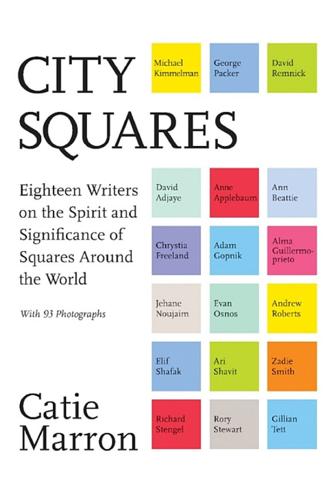
City Squares: Eighteen Writers on the Spirit and Significance of Squares Around the World
by
Catie Marron
Published 11 Apr 2016
Djemaa el-Fnaa speaks to the unique character of the Maghreb region of North Africa. Due to the Mediterranean coastline, the urban character of this region is quite different from the others. These are complex cities with layers of history, both distant and recent, with a more complete architectural record of their history than most African cities. The built environments of these cities give you a palpable sense of their vast trajectory through different kingdoms and different times. Cities in this region contain some of the few examples on the continent of indigenous architecture that have survived the tide of modernity. These preserved buildings provide great insight into how, prior to our current culture of globalization, groups used local materials and original designs to respond to the specificities of their climate and geography.
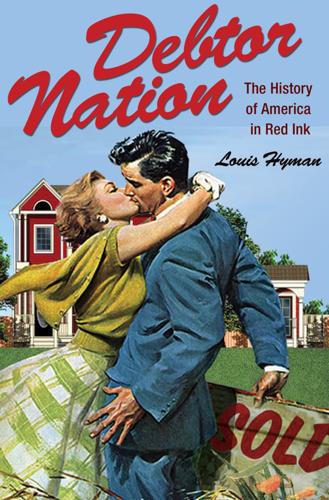
Debtor Nation: The History of America in Red Ink (Politics and Society in Modern America)
by
Louis Hyman
Published 3 Jan 2011
Living in the suburbs made a household twice as likely to own an auto as those living in the city.10 That better-earning suburbanites tended to own more autos is no great stretch of the imagination, but what is important is that they tended to even after their higher incomes are taken into consideration. The suburbs were not just wealthier; the built environment of the suburbs promoted auto ownership, and auto ownership, despite those higher incomes, meant more debt. Just owning an auto made a household 2.3 times as likely to have other debt as an autoless one.11 Auto owners, after adjusting for other factors, were 2.6 times as likely as non-auto owners to be in debt.12 Mortgages and auto payments made households more likely to be in debt in other areas of their lives, but what influenced that first decision to borrow, and how much did households borrow?
…
Consumers’ achievement of the middle-class dream in the 1950s had been enabled by debt. Debt policies and practices underpinned a consumer order by the 1970s that made it difficult for consumers to extricate themselves from indebtedness even if they had wanted to. The lifestyle of debt was as inscribed in the built environment as it was in the habits of the shopping public. As the economy began to erode in the early 1970s, just after the federal census announced that the majority of Americans then lived in suburbia, the debt requirement of suburban living began to take its toll. Even if people wanted to reduce their borrowing, the very environment in which they lived made reduction difficult.
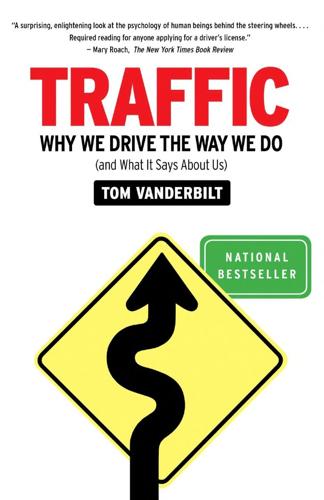
Traffic: Why We Drive the Way We Do (And What It Says About Us)
by
Tom Vanderbilt
Published 28 Jul 2008
Fischhoff, and S. Lichtenstein, “Accident Probabilities and Seat Belt Usage: A Psychological Perspective,” Accident Analysis & Prevention, vol. 13 (1978), pp. 281–85. “the danger of leaving home”: William H. Lucy, “Mortality Risk Associated with Leaving Home: Recognizing the Relevance of the Built Environment,” American Journal of Public Health, vol. 93, no. 9 (September 2003), pp. 1564–69. eleven times that: This figure was provided to me by Per Garder, a professor of civil and environmental engineering at the University of Maine. Using the required risk exposure levels as quoted by the Occupational Safety and Health Administration (in “Occupational Exposure to Asbestos,” Federal Register 59:40964-41161, 1994, and OSHA Preambles, “Blood Borne Pathogens,” 29 CFR 1910.1030, Federal Register 56:64004, 1991: 29206), Garder notes that the risk of dying over a lifetime in manufacturing and service employment, respectively, “must be less than 1. 8 and 1.0 deaths per 1,000 employees.”
…
more dangerous it is: This information comes from a study by William Lucy, a University of Virginia professor of urban planning. His findings are based on two key mortality indices: chance of being killed by a stranger and risk of being killed in traffic. See Lucy, “Mortality Risk Associated with Leaving Home: Recognizing the Relevance of the Built Environment,” American Journal of Public Health, vol. 93, no. 9 (September 2003), pp. 1564–69. (roughly 22 miles per hour): In 2006, there were 14 traffic fatalities recorded in Bermuda, though that number was set to rise to 20 in 2007. See Tim Smith, “Call for Greater Police Presence to Tackle Road Deaths ‘Epidemic,’” Royal Gazette, November 24, 2007.
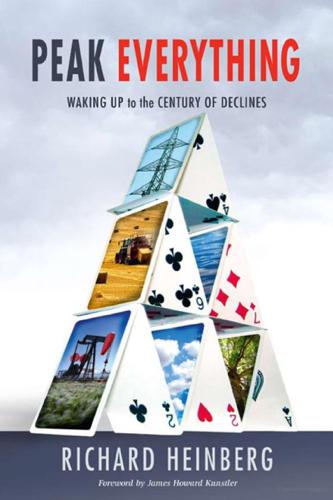
Peak Everything: Waking Up to the Century of Declines
by
Richard Heinberg
and
James Howard (frw) Kunstler
Published 1 Sep 2007
Surely we can do better. Are there some good things that are not at or near their historic peaks? I can think of a few:• Community • Personal autonomy • Satisfaction from honest work well done • Intergenerational solidarity • Cooperation • Leisure time • Happiness • Ingenuity • Artistry • Beauty of the built environment Of course, some of these items are hard to quantify. But a few can indeed be measured, and efforts to do so often yield surprising results. Let’s consider two that have been subjects of quantitative study. Leisure time is perhaps the element on this list that lends itself most readily to measurement.

The Secret War Between Downloading and Uploading: Tales of the Computer as Culture Machine
by
Peter Lunenfeld
Published 31 Mar 2011
These solutions range from confronting the so-called wicked problems—those most intractable issues of poverty, hunger, and determining what constitutes the good life well lived—to smaller concerns about the individual, household, and even neighborhood or school. The point of MaSAI is to take the maxim of open-source software developers—“Given enough eyeballs, all bugs are shallow”—and apply this to other realms of social life and the built environment. 121 CHAPTER 5 One project that points the way is called Stardust@home, which has assembled a huge group of people to use the network to search for interstellar dust collected by a recent space mission.33 In 2004, the Stardust interstellar dust collector passed through the coma of a comet named Wild2 and captured potentially thousands of dust grains in its aerogel collectors.
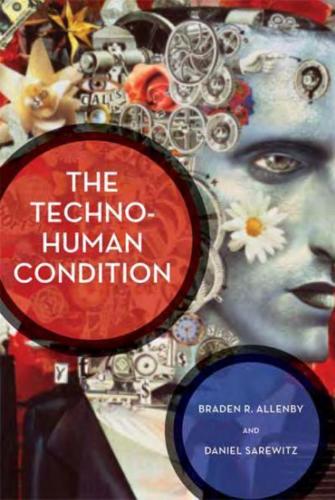
The Techno-Human Condition
by
Braden R. Allenby
and
Daniel R. Sarewitz
Published 15 Feb 2011
We are entirely on Level III turf here. For example, the military culture in most developed countries assumes a professional, highly trained core around which volunteers or draftees are assembled. But operations in Bosnia and Afghanistan are more like policing operations, aimed at protecting civilians and the built environment rather than blowing it up and looking for bad guys. Policing and combat require very different kinds of training, and very different institutional cultures. Good soldiers are seldom good policemen, and certainly not both at the same time. Technology ramps up the complexity further. In his book Wired for War, Peter Singer reports that the United States had no ground robots when it invaded Afghanistan in 2002, 150 of them by the end of 2004, 2,400 by the end of 2005,5,000 by the end of 2006, and 12,000 by the end of 2008.
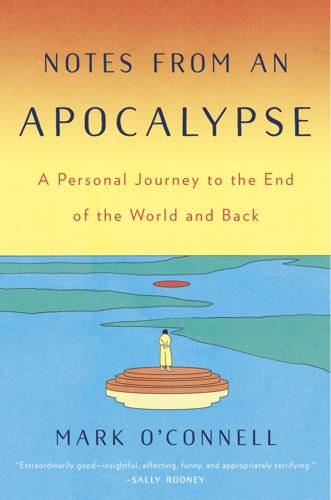
Notes From an Apocalypse: A Personal Journey to the End of the World and Back
by
Mark O'Connell
Published 13 Apr 2020
Tourism to Chernobyl had expanded rapidly over the last decade or so—according to Igor, there were thirty-six thousand visitors in 2016—boosted by popular entertainments using Pripyat as a postapocalyptic verité setting. Films like Chernobyl Diaries and A Good Day to Die Hard, television shows like the History Channel’s Life After People (an entire series devoted to the fetishistic representation of nature’s reclamation of the built environment after the disappearance of the human species) and video games like S.T.A.L.K.E.R., Fallout 4, and Call of Duty: Modern Warfare. This latter game was in fact among the reasons why Dylan was so quick to agree to this trip: it had a certain sentimental resonance for him, as the game his company—a provider of networking software for online multiplayer games—was working on when it was acquired by Activision, the game’s developer.
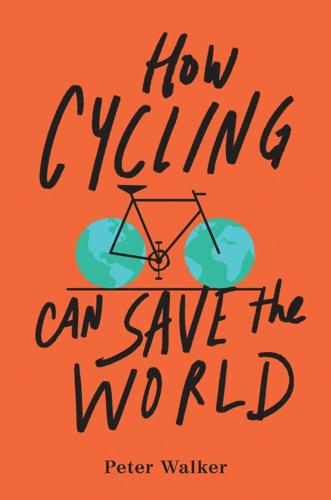
How Cycling Can Save the World
by
Peter Walker
Published 3 Apr 2017
Global experience over the decades has shown that if mixing with the motor traffic is your chosen bike environment, then almost all your cyclists will be a small group who are mainly young, predominantly male, and disproportionately gung ho. Often this discussion becomes reduced to talk of various types of bike lanes. As we’ll see below, to create mass cycling you need to shape the built environment in several other ways, too. And for all the occasionally opaque discussions about curb heights, lane barriers, and traffic light phases, this is about something more fundamental. Bike infrastructure is, at its heart, about a changed vision for the place occupied by human beings in the modern urban world.
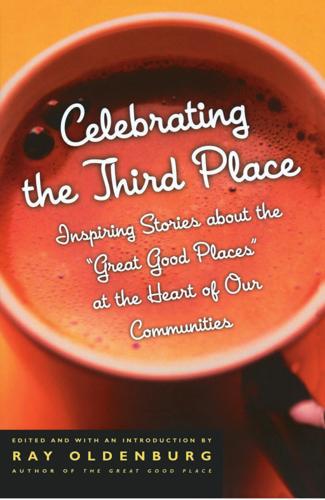
Celebrating the Third Place: Inspiring Stories About the Great Good Places at the Heart of Our Communities
by
Ray Oldenburg
Published 30 Nov 2001
He served with co-contributor Steve Balkin on the board of directors of the Maxwell Street Historic Preservation Coalition. Raised on Chicago’s north side, Meir currently lives in northeast Brazil, where he’s found that there is no shortage of third places. Richard Sexton is a noted photographer and writer on the topics of architecture, design, and the built environment. He is the author of Vestiges of Grandeur: The Plantations of Louisiana’s River Road and Parallel Utopias:The Quest for Community and coauthor of New Orleans: Elegance and Decadence and In the Victorian Style. His photographs have appeared in publications including Harpers, Preservation, and Smithsonian.
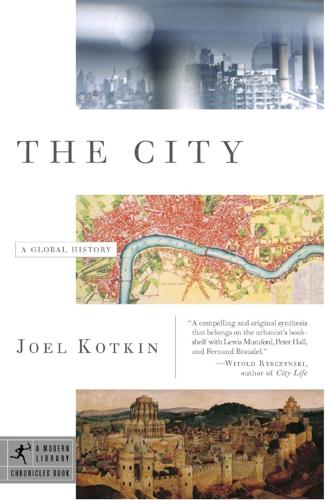
The City: A Global History
by
Joel Kotkin
Published 1 Jan 2005
Fischer, Nazi Germany: A New History (New York: Continuum, 1995), 116–17; Gottfried Feder, “Das Program der N.S.D.A.P.,” in Joachim Remak, The Nazi Years: A Documentary History (Englewood Cliffs, N.J.: Prentice Hall, 1969), 30. 22. Philipp Oswald, “Berlin: A City Without Form,” Tas Skorupa, http://www.urban-os.com/think-pool/one?think_id=3164; Engels, op. cit., 333; Helen Meller, European Cities 1890–1930s: History, Culture and The Built Environment (New York: John Wiley, 2001), 10; Morris, op. cit., 166–67; Richie, op. cit., 141, 144. 23. Lees, op. cit., 119–21; Richie, op. cit., 163, 167. 24. Georg Simmel, “The Metropolis and Mental Life,” in The Sociology of Georg Simmel, trans. Kurt H. Wolff (New York: Free Press, 1950), 410–13. 25.

Aerotropolis
by
John D. Kasarda
and
Greg Lindsay
Published 2 Jan 2009
For one thing, airliners are more virtuous and resilient than you might expect. China’s airports aren’t the source of its noxious air; its coal-burning power plants are. (China burns more coal than the United States, Europe, and Japan combined.) In the United States, as many as half of our own emissions emanate from “the built environment,” the energy consumed to build and service sprawl. We emit more carbon living in McMansions. For another, air travel’s actual share of our carbon footprints is currently 3 percent and falling (at least in the United States), thanks to a bounty of incremental and potentially revolutionary advances meant to slow and hopefully end its carbon contributions.
…
My capsule summary is drawn primarily from The New York Times, although the plight of Kenyan rose farmers was covered by the BBC, and estimates of airline losses and the number of stranded passengers were provided by the Centre for Asia Pacific Aviation. “The airport leaves the city …” was given to me by Maurits Schaafsma, a senior planner at Schiphol Real Estate. The best account of “Terminal City” is found in Kurt C. Schlichting’s Grand Central Terminal. Statistics on the energy use and carbon emissions of the built environment are taken from Linda Tischler’s “The Green Housing Boom” (Fast Company, July/August 2008). Figures on aviation’s declining share of carbon emissions are from the Air Transport Association, an airline industry lobbying group, and from Climate Change 2007: Mitigation, a report by the Intergovernment Panel on Climate Change (IPCC).

The Quest: Energy, Security, and the Remaking of the Modern World
by
Daniel Yergin
Published 14 May 2011
International Air Passenger and Freight Statistics, Federal Communications Commission, 2007 (sharp ascent); David Nielson, chief engineer for Airport Strategy at Boeing, “Boeing’s Contribution to Aviation Sustainability,” Pacific Basin Development Council, August 27, 2007 (By 2026); Jeffery Smisek, speech, CERA Week, March 11, 2011. 19 Observer, January 29, 2006 (“negative effects”); Rough Guides, press release, March 1, 2006; Times (London), July 23, 2006; Lonely Planet: Discover Europe (2010), p. 790. 20 Interview with Andris Piebalgs. Chapter 32: Closing the Conservation Gap 1 Chicago Tribune, July 16, 1878 (“Apprehension”). 2 Leon Glicksman, “Energy Efficiency in the Built Environment,” Physics Today 61, no. 7 (2008), p. 2. 3 Gail Cooper, Air-Conditioning America: Engineers and Controlled Environment, 1900–1960 (Baltimore: Johns Hopkins University Press, 1998), pp. 9–10; Mechanical Engineering, May 2000 (jackets). 4 Claude Wampler, “Dr. Willis H. Carrier: Father of Air Conditioning,” The Newcomen Society of England, 1949; Margaret Ingels, Willis Haviland Carrier: Father of Air Conditioning (Louisville: Fetter Printing Company, 1991), pp. 33–34 (“manufactured weather”). 5 Ingels, Willis Haviland Carrier, pp. 63–79 (Madison Square Garden); “The Milam Building,” American Society of Mechanical Engineers, 1991 (high-rise); Popular Mechanics, July 1939 (Damascus and Baghdad). 6 New York Times, June 2, 2002. 7 Interview with Leon Glicksman. 8 Gary Simon to author. 9 Interview with Lee Schipper. 10 National Association of Home Builders, Housing Facts, Figures, and Trends, May 2007, p. 13; National Petroleum Council, “Residential Commercial Efficiency,” July 18, 2007, p. 12. 11 Jone-Lin Wang, “Why Are We Using More Electricity?”
…
Meijer, “Cooling Energy-Hungry Data Centers,” Science 328, no. 5976 (2010), pp. 318–19. 12 Lawrence Makovich, “Meeting the Power Conservation Investment Challenge,” IHS CERA, 2007 (“conservation gap”); World Economic Forum and IHS CERA, Energy Vision Update 2010: Towards a More Energy Efficient World, 2010, p. 4 (“investment grade”). 13 Interview with George Caraghiaur. 14 Glicksman, “Energy Efficiency in the Built Environment,” pp. 3–6 (“high-tech versions”); interview with Leon Glicksman; U.S. Green Buildings Council Web site, http://www.usgbc.org. 15 Interview with Naohiro Amaya. 16 Interview with Yoriko Kawaguchi. 17 Ministry of Economy, Trade and Industry, Top Runner Program, rev. ed., March 2010, at http://www.enecho.meti.go.jp/policy/saveenergy/toprunner2010.03en.pdf. 18 Kateri Callahan, “Building the Infrastructure for Energy Efficiency,” in World Economic Forum and IHS CERA, Energy Vision Update 2010: Towards a More Energy Efficient World, 2010, p. 24 (“public policy support”); James Rogers, speech, CERAWeek, February 15 2008. 19 IHS CERA, Smart Grid: Closing the Gap Between Perception and Reality (2010); Brookings Institution Center for Technology and Innovation, “Smart Grid Future: Evaluating Policy Opportunities and Challenges after the Recovery Act,” forum, July 14, 2010. 20 Scientific American, August 13, 2008. 21 Sewart Baker, Natalie Filipiak, and Katrina Timlin, “In the Dark: Crucial Industries Confront Cyberattacks,” (CSIS and McAfee: 2011).
…
.: GPO, 1921. Gibb, George, and Evelyn Knowlton. History of Standard Oil Company (New Jersey). Vol. II, The Resurgent Years 1911–1927. New York: Harper and Brothers, 1956. Gibbons, Herbert Adams. The New Map of South America. London: Jonathan Cape, 1929. Glicksman, Leon. “Energy Efficiency in the Built Environment.” Physics Today 61, no. 7 (2008). Goffman, Joseph, and Daniel J. Dudek. “The Clean Air Act Acid Rain Program: Lessons for Success in Creating a New Paradigm.” Presentation. 88th Annual Meeting. Air & Waste Management Association. June 18–23, 1995. Goldemberg, José. “Ethanol for a Sustainable Energy Future.”
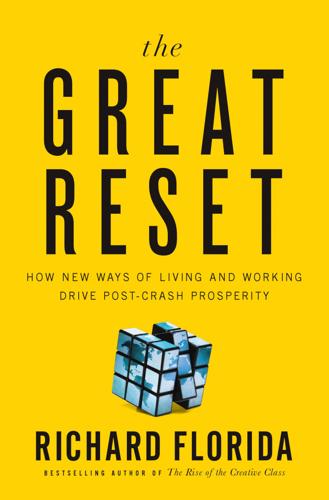
The Great Reset: How the Post-Crash Economy Will Change the Way We Live and Work
by
Richard Florida
Published 22 Apr 2010
The spatial fix effects a way out of crisis by creating a physical framework for development and further geographic expansion.1 It thus “provides a way to productively soak up capital by transforming the geography of capitalism,” adds the economic geographer Erica Schoenberger. The spatial fix induces massive investment in and expansion of infrastructure and the built environment, which effectively freezes “a significant tranche of accumulated capital in the earth, while using it to support the further accumulation of capital.”2 Spatial fixes work for a while, but they are not permanent solutions; rather, they are part of an ongoing cycle. Spatial fixes initially overcome crises and channel capital into more productive uses.
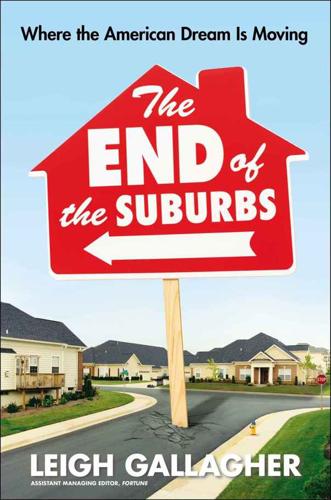
The End of the Suburbs: Where the American Dream Is Moving
by
Leigh Gallagher
Published 26 Jun 2013
Specifically, Dumbaugh found: Eric Dumbaugh and Robert Rae, “Safe Urban Form: Revisiting the Relationship Between Community Design and Traffic Safety,” Journal of the American Planning Association 75, no. 3 (Summer 2009): 309–29. A recent report authored by experts at the Centers for Disease Control and Prevention (CDC) found: Richard J. Jackson, MD, MPH, and Chris Kochtitzky, MSP, Centers for Disease Control and Prevention, “Creating a Healthy Environment: The Impact of the Built Environment on Public Health,” Sprawl Watch Clearinghouse, sprawlwatch.org, p. 11. Another study: Ibid. Studies using pedometers: David R. Basset Jr. et al., “Pedometer-Measured Physical Activity and Health Behaviors in United States Adults,” National Institutes of Health, October 2010. In the United States, roughly half of all trips taken by car are three miles or less: 2001 National Household Transportation Survey; also see “Complete Streets Change Travel Patterns,” Smart Growth America.
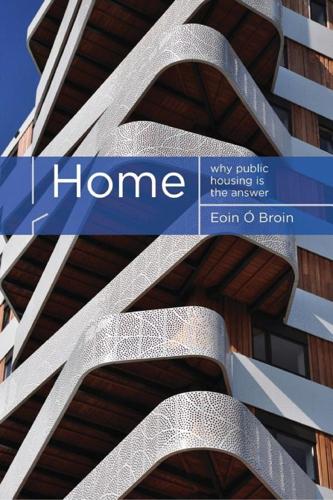
Home: Why Public Housing Is the Answer
by
Eoin Ó Broin
Published 5 May 2019
The rise of networked lifestyles has socialised many aspects of urban living, from Starbucks to the gym – so that what people want from the space they live in might be changing. There is also the challenge of meeting tough targets on carbon use and circularity (inbuilt recyclability). The biggest mistake would be to look at the current state of the built environment and see it as the product of randomness plus demographic change. It is the precise outcome of planned action by the rich against the poor. From the slums of Manila, built alongside the sewers, to depopulated cities in the American Rust Belt like Gary, Indiana; to places like Barcelona, whose social fabric is being destroyed by Airbnb – I’ve reported the way neoliberalism has massively redrawn the map of human dwelling patterns.
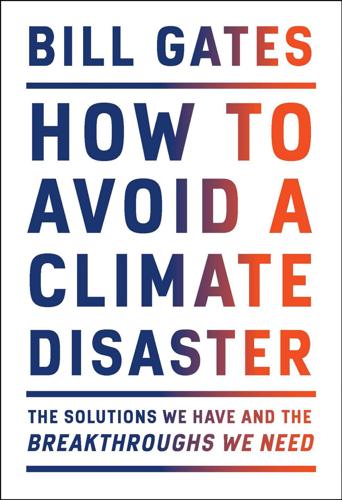
How to Avoid a Climate Disaster: The Solutions We Have and the Breakthroughs We Need
by
Bill Gates
Published 16 Feb 2021
In 2019, we bought more than 5 million cars: S&P Global Market Intelligence, https://www.spglobal.com/marketintelligence/en/. Chapter 8: How We Keep Cool and Stay Warm Humans have been trying: A. A’zami, “Badgir in Traditional Iranian Architecture,” Passive and Low Energy Cooling for the Built Environment conference, Santorini, Greece, May 2005. But the first known machine: U.S. Department of Energy, “History of Air Conditioning,” www.energy.gov. Also “The Invention of Air Conditioning,” Panama City Living, March 13, 2014, www.panamacityliving.com. Barely more than a century: International Energy Agency, “The Future of Cooling,” www.iea.org.

Fully Automated Luxury Communism
by
Aaron Bastani
Published 10 Jun 2019
More vital is how digitisation has allowed progressively greater amounts of cognition and memory to be performed in 0s and 1s, with the price–performance ratio of anything that does so falling every year for decades. It is this which allows contemporary camera technology to land rockets and, increasingly, drive autonomous vehicles; it is what will provide robots with fine motor coordination and dexterity equivalent to that found in humans; it will permit the built environment to know more about us, in certain respects, than we know about ourselves. It will even allow us to edit DNA – the building blocks of life – to remove hereditary disease and sequence genomes at such low cost, and with such regularity, that we will cure ourselves of cancer before it reaches Stage 1.
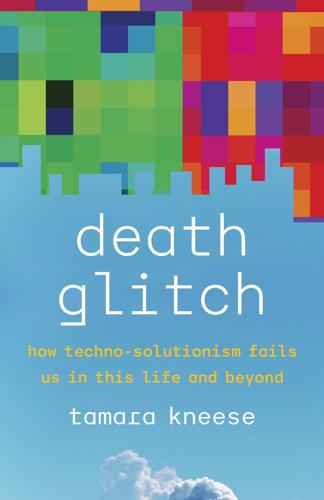
Death Glitch: How Techno-Solutionism Fails Us in This Life and Beyond
by
Tamara Kneese
Published 14 Aug 2023
As the disability studies scholar Laura Mauldin found in her ethnographic work on caregivers who care for loved ones in their homes, technologies themselves are subservient to the ingenuity of the people who use them, although it is the tech that largely gets the credit.48 Caregivers, alongside their disabled or ill family members, learn to negotiate new technologies and make them work for them the best they can. Every day, people and their bodies adapt to meet the built environment, building on their own expertise.49 Death makes these networked relations more apparent. The problem, as I elaborate below, is that the platforms that enable illness blogging and other collaboratively produced communicative traces are designed with individual authors, not communities, in mind.

Age of the City: Why Our Future Will Be Won or Lost Together
by
Ian Goldin
and
Tom Lee-Devlin
Published 21 Jun 2023
For generously taking time from their busy schedules to offer us their wisdom, we would like to thank: Ed Glaeser, Chairman of the economics department at Harvard and one of the world’s leading experts on the economics of cities; Peter Frankopan, Professor of Global History at Oxford and a renowned authority on the Silk Roads; John-Paul Ghobrial, Professor of Global and Modern History at Oxford and a valued colleague of Ian’s at Balliol College; Lord Norman Foster, not only a world-renowned architect but also an insightful observer of the built environment; Billy Cobbett, director of Slum Dwellers International with a lifetime of experience working to understand and improve cities in developing countries; Robert Muggah, co-author with Ian of Terra Incognita: 100 Maps to Survive the Next 100 Years and an expert on all things cities; and Carl Frey, Director of the Oxford Martin Programme on the Future of Work and an innovative economic historian.
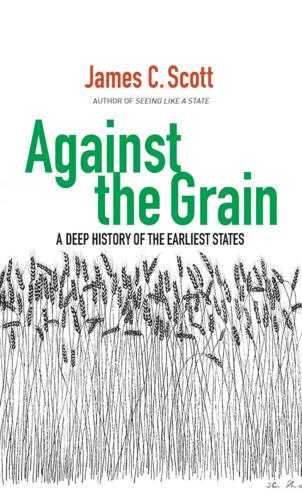
Against the Grain: A Deep History of the Earliest States
by
James C. Scott
Published 21 Aug 2017
Each step represents a substantial narrowing of focus and a simplification of tasks.23 The domestication of plants as represented ultimately by fixed-field farming, then, enmeshed us in an annual set of routines that organized our work life, our settlement patterns, our social structure, the built environment of the domus, and much of our ritual life. From field clearing (by fire, plough, harrow), to sowing, to weeding, to watering, to constant vigilance as the crop ripens, the dominant cultivar organizes much of our timetable. The harvest itself sets in train another sequence of routines: in the case of cereal crops, cutting, bundling, threshing, gleaning, separation of straw, winnowing chaff, sieving, drying, sorting—most of which has historically been coded as women’s work.
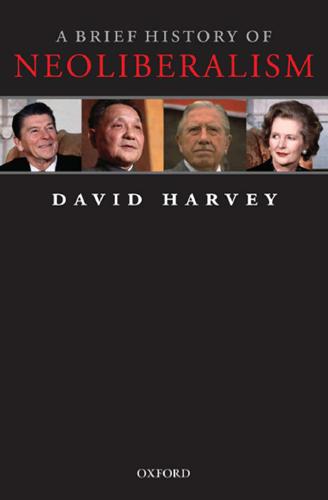
A Brief History of Neoliberalism
by
David Harvey
Published 2 Jan 1995
China has massive labour surpluses, and if it is to achieve social and political stability it must either absorb or violently repress that surplus. It can do the former only by debt-financing infrastructural and fixed-capital formation projects on a massive scale (fixed-capital investment increased by 25 per cent in 2003). The danger lurks of a severe crisis of over-accumulation of fixed capital (particularly in the built environment). Abundant signs exist of excess production capacity (for example in automobile production and electronics) and a boom and bust cycle in urban investments has already occurred. But all of this requires that the Chinese state depart from neoliberal orthodoxy and act like a Keynesian state. This requires that it maintain capital and exchange rate controls.
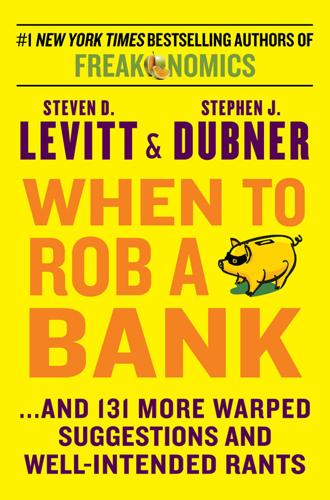
When to Rob a Bank: ...And 131 More Warped Suggestions and Well-Intended Rants
by
Steven D. Levitt
and
Stephen J. Dubner
Published 4 May 2015
In this sense, rotational grazing supports one of the more appealing (if damaging) myths at the core of contemporary environmentalism: the notion that nature is more natural in the absence of human beings. Put differently, rotational grazing speaks powerfully to the aesthetics of environmentalism while confirming a bias against the built environment; a pipeline, not so much. A final reason that McKibben, 350.org, and mainstream environmentalism remain agnostic about meat centers on the idea of personal agency. For most people, meat is essentially something we cook and eat. Naturally, it’s much more than that. But for most consumers, meat is first and foremost a personal decision about what we put into our body.
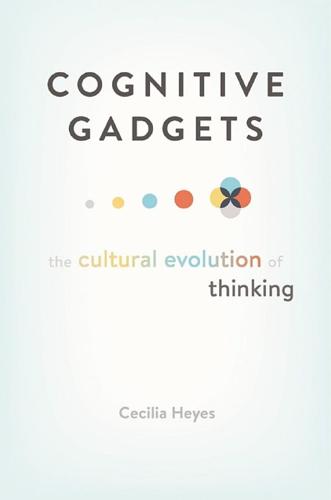
Cognitive Gadgets: The Cultural Evolution of Thinking
by
Cecilia Heyes
Published 15 Apr 2018
In many parts of the world, turnstiles or “thigh-beaters” regulate access to train platforms and sports stadiums. When a person learns to use a turnstile—to get through without having their thighs beaten—they learn something that most people would say is not only social but cultural because it relates to an aspect of the built environment and varies across human populations. But learning to use a turnstile does not inevitably involve social learning or cultural learning. Turnstile learning is an example of both social learning and cultural learning when it depends on verbal instruction (“First put your ticket in this slot, then lean gently on the cross bar,” and so forth).
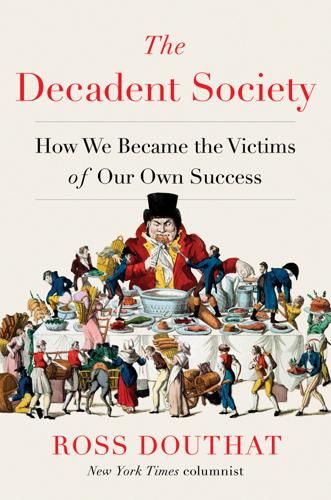
The Decadent Society: How We Became the Victims of Our Own Success
by
Ross Douthat
Published 25 Feb 2020
Yet it didn’t seem that way to people living fifty, sixty, seventy years ago, because of the pace of change they themselves had seen. And not just the pace but also the scope: as Gordon argues, in past eras, the West saw dramatic growth and innovation across multiple arenas—energy and transportation and medicine and agriculture and communication and the built environment. Whereas the story of the last two developed-world generations is of a society where progress has become increasingly monodimensional, all tech and nothing else. Indeed, it’s telling that even within the Silicon Valley landscape, the most stable success stories are often the purest computer-and-Internet enterprises—social media companies, device manufacturers, software companies—while the frauds and failures and big money-losers and possible catastrophes tend to involve efforts to use tech to transform some other industry, from music festivals to office-space rentals to food delivery to blood tests.
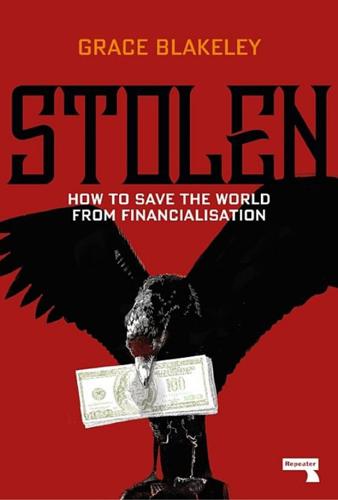
Stolen: How to Save the World From Financialisation
by
Grace Blakeley
Published 9 Sep 2019
The Case of Asset-Backed Commercial Paper During the Financial Crisis of 2007-09”, NBER Working Paper 16079; Covitz, D., Liang, N., Suarez, G. (2009) “The Evolution of a Financial Crisis: Panic in the Asset-Backed Commercial Paper Market”, Finance and Economics Discussion Series Divisions of Research & Statistics and Monetary Affairs Federal Reserve Board, Washington, D.C.; Gorton, G. and Metrick, A. (2012) “Securitized Banking and the Run On Repo”, Journal of Financial Economics, vol. 104 14 Scanlon, K. and Whitehead, C. (2011) “The UK Mortgage Market: Responding to Volatility”, Journal of Housing and the Built Environment, vol. 26; Milne, A. and Wood, J.A. (2013) “An Old Fashioned Banking Crisis: Credit Growth and Loan Losses in the UK 1997-2012”, Paper prepared for conference: The Causes and Consequences of the Long UK Expansion: 1992 to 2007, 19-20 September 2013, Clare College Cambridge 15 Financial Conduct Authority (2019) “Statistics on Mortgage Lending: March 2019 Edition: MLAR Detailed Tables”, FCA https://www.fca.org.uk/data/mortgage-lending-statistics; Office for National Statistics (2019) “Gross Domestic Product: Chained Volume Measures: Seasonally Adjusted £m” https://www.ons.gov.uk/economy/grossdomesticproductgdp/timeseries/abmi/pn2. 16 Bank of England (2017; 2018) 17 This account draws on: Bank of England (2018; 2017); Scanlon and Whitehead (2011); Milne and Wood (2013); Boyer (2013). 18 Ellis, L. (2008) “The Housing Meltdown: Why Did It Happen in the United States?”
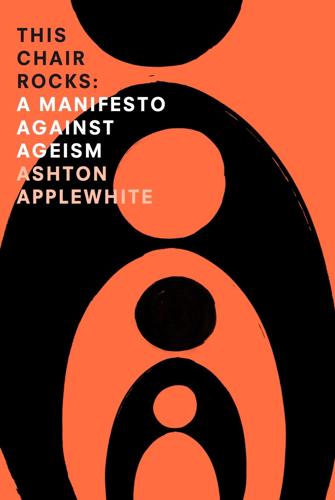
This Chair Rocks: A Manifiesto Against Ageism
by
Ashton Applewhite
Published 10 Feb 2016
As a friend who bought a house from a wheelchair user observed, “Damn, it’s nice to have wide doorways, and a toilet positioned this way—they should just do it for everyone.” That’s the premise of universal design—that products designed for older people and people with disabilities work great for everyone else too. “Age-friendly” products improve the built environment and make it more accessible, but stigma keeps them off the market. Realtors advise removing ramps and grip bars before putting a house on the market, as though no buyer could see accessibility as a bonus or aging into it as a necessity. Alas, thanks to internalized ageism, they’ve got a point.
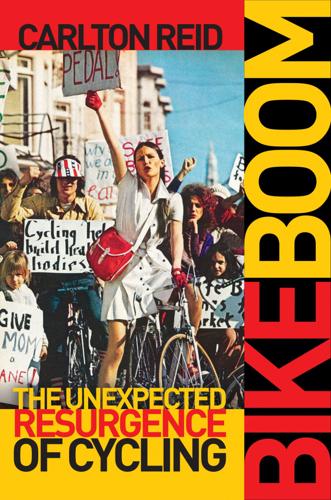
Bike Boom: The Unexpected Resurgence of Cycling
by
Carlton Reid
Published 14 Jun 2017
And the theory of “peak car”—that motor-vehicle use has peaked, and is now falling—is not as statistically solid as it looked during the last recession, when driving most definitely dipped. Terrible for the planet, and bad for both congestion and health, but car purchasing and car use are on the rise again. The joyful practicality of cycling. This is due, in great part, to the built environment. Over the last sixty years, planners designed for “King Car” to the exclusion of all else, and we now have toxic, congested cities where one of the obvious solutions (obvious to cycle advocates, that is) is to plan for the bicycle. Dutch cities do such planning, so why can’t others? It might come as a surprise to find out that cycle use in the Netherlands did not “boom” when the good existing network of cycleways was upgraded in the mid-1970s to became a dense grid.
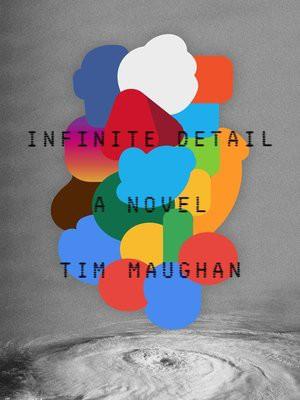
Infinite Detail
by
Tim Maughan
Published 1 Apr 2019
With the PRSC, though, he may have created his most controversial and rebellious project yet—an entire neighbourhood that rejects the digital status quo of surveillance, the internet, and big data. “Everywhere you go, even in your own home, you’re not only being watched by cameras, but you’re generating data,” Manaan tells me. “We’ve reached a point, in cities like Bristol, where we’re in a state of total surveillance. Where every square inch of the built environment has been mapped, is being watched. And I don’t mean just by cameras, the city is also covered in sensors—from LIDAR through to embedded microphones and pressure pads under the pavements that can measure how many people have walked past. “And all that’s before we start to even include what we do online, how big data companies like Google or Facebook track us across the internet, from site to site and service to service.

New Dark Age: Technology and the End of the Future
by
James Bridle
Published 18 Jun 2018
Each of these examples illustrates how crucial computation is to contemporary life, while also revealing its blind spots, structural dangers, and engineered weaknesses. To take another example from aviation, consider the experience of being in an airport. An airport is a canonical example of what geographers call ‘code/space’.30 Code/spaces describe the interweaving of computation with the built environment and daily experience to a very specific extent: rather than merely overlaying and augmenting them, computation becomes a crucial component of them, such that the environment and the experience of it actually ceases to function in the absence of code. In the case of the airport, code both facilitates and coproduces the environment.
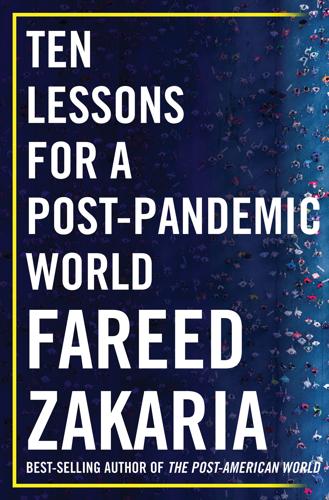
Ten Lessons for a Post-Pandemic World
by
Fareed Zakaria
Published 5 Oct 2020
The island of Manhattan is without any doubt the greatest human concentrate on earth, the poem whose magic is comprehensible to millions of permanent residents but whose full meaning will always remain elusive.” That captures the essence of what the great urban theorist Jane Jacobs loved about cities—their diversity. It’s why she believed that the architecture of cities should grow organically in an unplanned, haphazard way. As she put it, “Genuine, rich diversity of the built environment is always the product of many, many different minds, and at its richest is also the product of different periods of time with their different aims and fashions.” She also celebrated the diversity of a city’s population. What attracted so many people to cities through the centuries was that they would meet people unlike them and see the world through different eyes.

Restarting the Future: How to Fix the Intangible Economy
by
Jonathan Haskel
and
Stian Westlake
Published 4 Apr 2022
Robert Ellickson proposed a form of street votes in 1998, when awareness of NIMBYism was beginning to rise. Robert Nelson, an American zoning expert, proposed something similar in 1999. More recently, the United Kingdom’s Royal Town Planning Institute lent support to this sort of “microdemocracy” in a 2020 position paper. A high-profile UK government commission on the built environment recommended trials of street votes and block votes.24 Bumping planning decisions up to state or national governments in order to avoid resistance at the city level is appealing from a theoretical point of view. A bigger government should in theory be able to resolve the coordination problem.

Road to Nowhere: What Silicon Valley Gets Wrong About the Future of Transportation
by
Paris Marx
Published 4 Jul 2022
Since it was harder for Black residents to buy homes, they also did not share in the wealth that came with rising property values throughout the twentieth century, further cementing the gap between white and Black Americans. However, the FHA’s standards were not the only initiative taken by various levels of government to promote a car-oriented society. Zoning policies that were originally embraced because they were perceived to be good for business homogenized different areas of cities, regulated the built environment as a means of excluding undesirable people from certain neighborhoods, and were ultimately justified in the name of increasing property values. They had the effect of breaking the city up into distinct zones designed for specific uses, such as separating residential neighborhoods from where people worked and where they engaged in leisure activities.
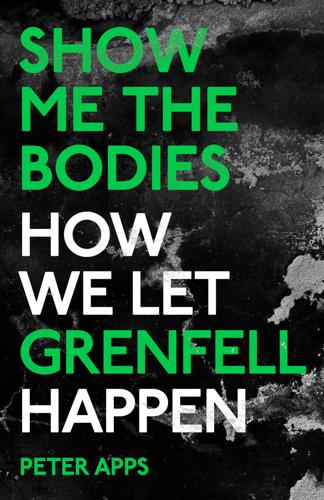
Show Me the Bodies: How We Let Grenfell Happen
by
Peter Apps
Published 10 Nov 2022
‘These emergent flames could re-enter the block via windows.’11 Nonetheless, it was keen to investigate the use of such systems. In 1989, the government committed almost £1m to install a pilot cladding system on Knowsley Heights, an eleven-storey block in Merseyside. The work was to be monitored by the Building Research Establishment (BRE) – then a state-owned testing and research facility for the built environment. The tower was fitted with a ‘rainscreen’ cladding system. Rolls of non-combustible insulation were fitted flush to the concrete walls. Then panels made of glass-reinforced plastic were fitted to an aluminium frame in front of this insulation. A similar system would be used on Grenfell Tower twenty-five years later.

Supertall: How the World's Tallest Buildings Are Reshaping Our Cities and Our Lives
by
Stefan Al
Published 11 Apr 2022
The good news is that many energy-efficient technologies and renewable-energy solutions are commercially available today, and they are already being applied. Renewable-energy supplies, cross-laminated timber, prefabricated modules, and super insulation are making a positive impact. Now we need a lot more. Despite advances in artificial intelligence and robotics, the built environment is still mostly a brick-and-mortar industry, capital-intensive and locally fragmented. It tends to lag behind. The vast majority of buildings will become greener only if regulations both force and incentivize them to do so. Change is coming; however, there is potential for trouble. For instance, as much as outfitting buildings with sensors helps monitor and optimize energy efficiency, they are also adding prying mechanical eyes to our lives.
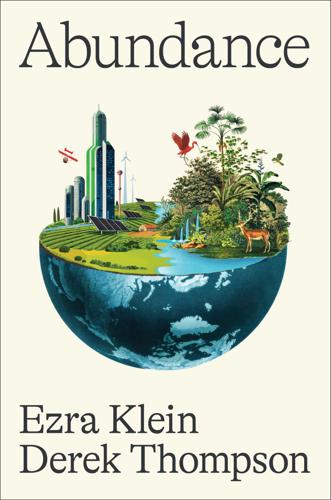
Abundance
by
Ezra Klein
and
Derek Thompson
Published 18 Mar 2025
“One of the most consequential conflicts in postwar America was between two systems of values,” writes Jake Anbinder in “Cities of Amber.” “An older growth politics which extolled the benefits of metropolitan development, and a newer antigrowth politics which rejected the idea that such development improved society.”61 It is hard, now, to imagine how quickly the built environment of America changed in these years. In 1900, there were scarcely 8,000 cars in the entire country.62 By 1970, 118 million cars sluiced through a nearly completed Interstate Highway System. In 1900, no one had ever flown in an airplane. By 1970, millions of passengers boarded wide-body jetliners like the Boeing 747 to travel across the oceans to thousands of airports around the world.

The Rise of the Network Society
by
Manuel Castells
Published 31 Aug 1996
Spatial forms and processes are formed by the dynamics of the overall social structure. This includes contradictory trends derived from conflicts and strategies between social actors playing out their opposing interests and values. Furthermore, social processes influence space by acting on the built environment inherited from previous socio-spatial structures. Indeed, space is crystallized time. To approach in the simplest possible terms such a complexity, let us proceed step by step. What is space? In physics, it cannot be defined outside the dynamics of matter. In social theory, it cannot be defined without reference to social practices.
…
Panofsky on Gothic cathedrals, Tafuri on American skyscrapers, Venturi on the surprisingly kitsch American city, Lynch on city images, Harvey on postmodernism as the expression of time/space compression by capitalism, are some of the best illustrations of an intellectual tradition that has used the forms of the built environment as one of the most signifying codes to read the basic structures of society’s dominant values.80 To be sure, there is no simple, direct inter- pretation of the formal expression of social values. But as research by scholars and analysts has revealed, and as works by architects have demonstrated, there has always been a strong, semiconscious connection between what society (in its diversity) was saying and what architects wanted to say.81 Not any more.
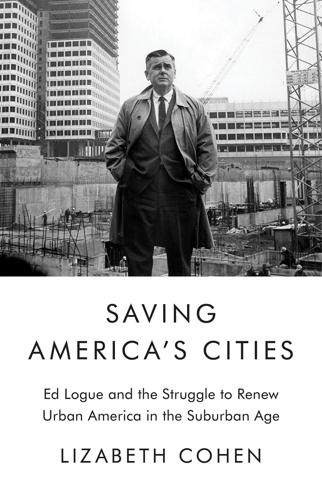
Saving America's Cities: Ed Logue and the Struggle to Renew Urban America in the Suburban Age
by
Lizabeth Cohen
Published 30 Sep 2019
Another group of individuals who provided a bridge to the past are the ROMEOS (Retired Opinion-Makers Eating Out), a group of former journalists and public officials who lived through Logue’s Boston years. They connected me to several crucial interviewees. Robert Hannan and Edward Quill have worked tirelessly to keep this group going. Although I have long been interested in cities and the built environment, I was not trained as an architect or a planner. Over the years at Harvard, I have benefited enormously from the instruction of colleagues at the Harvard Graduate School of Design (GSD). Some are singled out above, but many more have tutored me and warmly welcomed me into their ranks, including the former dean Mohsen Mostafavi.
…
In Boston, materials at the Boston City Archives, the Boston Public Library, the University of Massachusetts Boston, Northeastern University, and the always astonishingly wide-ranging holdings of the Harvard Libraries proved indispensable as well, particularly the GSD’s Loeb Library, whose diverse collections are a reminder that architects and planners leave behind impressive work in print, not just their imprint on the built environment. I signed on with Farrar, Straus and Giroux early in this book’s development, which has given me the benefit of Eric Chinski’s wise counsel for a long time. But it was when I presented him with a full draft that I really understood why he has earned a reputation as such a brilliant editor.

Wonderland: How Play Made the Modern World
by
Steven Johnson
Published 15 Nov 2016
We now assume, correctly or not, that every new media experience is rewiring our brains in some fundamental way; today’s disorders—attention deficit disorder, autism, teen violence—are regularly chalked up to the sensory overload of television, or video games, or social media. We take it for granted that the brain is shaped by the built environment that surrounds it, for better and for worse. That way of seeing the mind—and understanding its occasional defects—first came into view with the unlikely criminals of the department-store disease. Architects had long constructed environments designed to trigger certain emotional responses in their visitors: think of the soaring interiors of the medieval cathedral, meant to inspire awe and wonder.

The New Urban Crisis: How Our Cities Are Increasing Inequality, Deepening Segregation, and Failing the Middle Class?and What We Can Do About It
by
Richard Florida
Published 9 May 2016
When it comes to broad urban policy and investment, the United States will fall further behind other nations. Canada’s Liberal government is working to connect infrastructure investment to city-building and is developing a new strategy for affordable housing and urban development (involving me and other leading urbanists). Australia’s conservative leadership created a new minister of cities and the built environment to coordinate urban development at the national level. However, even with a Trump victory and Republican control of the federal government, there are still things that can be accomplished. The most important thing we can do is to help cities and communities get the increased control they need to build their economies and address the challenges of the New Urban Crisis.
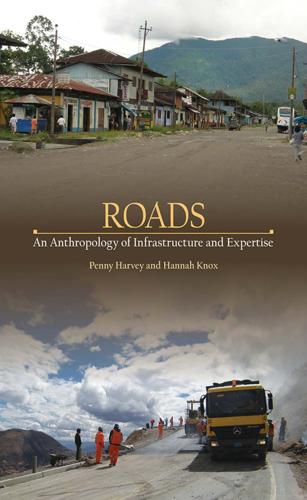
Roads: An Anthropology of Infrastructure and Expertise (Expertise: Cultures and Technologies of Knowledge)
by
Penny Harvey
and
Hannah Knox
Published 22 Jun 2015
To be an engineer is to be able to understand and navigate the proliferating systems of standardization that enable calculations and predictions to be made and, ultimately, things to be built. Standards allow for figures to be evaluated for their accuracy, workability, and usefulness, and in this sense they have a determining relationship to the look, feel, and functionality of the built environment. Moreover, in their capacity to produce a normative effect, standards are also tools that allow for the production of legitimacy.10 The politics of numerical production in the feasibility documents was thus intimately linked to the production and adherence to standards. These standards enabled those writing reports to produce aggregated figures about the constantly shifting and mutable social and material environments where they intended to make an intervention—figures that could be used as the basis for projections about the future viability of the road.
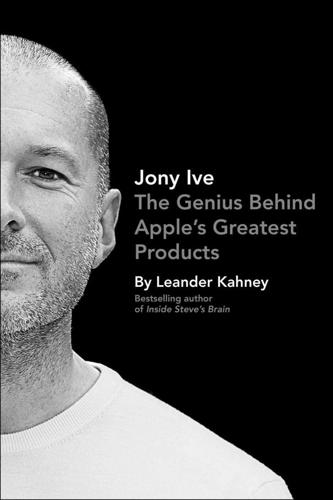
Jony Ive: The Genius Behind Apple's Greatest Products
by
Leander Kahney
Published 14 Nov 2013
If they were walking down the street together, Mike might point out different types of street lamps in various locations and ask Jonathan why he thought they were different: how the light would fall and what weather conditions might affect the choice of their designs. They were constantly keeping up a conversation about the built environment and what made-objects were all around them . . . and how they could be made better.”6 “Mike was a person who had a quiet strength about him and was relentlessly good at his job,” added Tabberer. “He was a very gentle character, very knowledgeable, very generous and courteous. He was a classic English gentleman.”
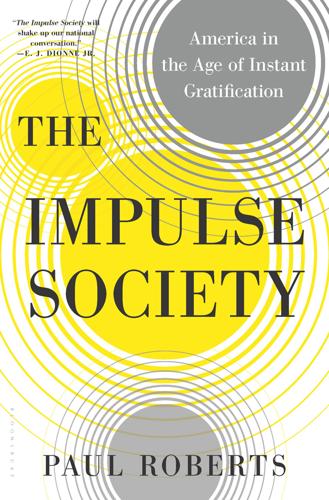
The Impulse Society: America in the Age of Instant Gratification
by
Paul Roberts
Published 1 Sep 2014
Walter Mischel, the researcher behind the famous “marshmallow study” from the 1970s, has developed effective strategies to train impatient children to be patient—an important success, given that impatient children have a high likelihood of growing up to be impatient adults.14 There are other potentially fruitful ventures, such as what Richard Thaler (of the two-self model) and coauthor Cass Sunstein call “choice architecture.” The term refers to carefully designed technologies, infrastructure, and other pieces of the built environment that subtly “nudge” us to act with more patience and long-term thought. An example: smartphone apps that automatically track our daily expenses and warn us when we’re exceeding our budget. But such efforts are swimming upstream against a current of world-historic proportions. Consider our political culture, which more and more encourages a rapid, visceral response to policy or events.
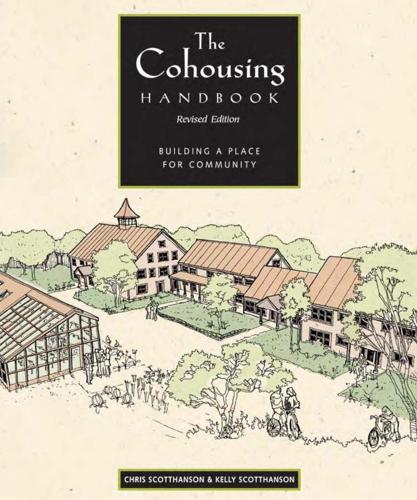
The Cohousing Handbook: Building a Place for Community
by
Chris Scotthanson
and
Kelly Scotthanson
Published 1 Nov 2004
But don’t let spontaneous brainstorming drive the marketing effort in the meantime, as it will tend to divert you from implementing your well-considered marketing plan. Training members Selling cohousing is different from selling a product. Cohousing is a way of life, it is a set of relationships, it is the design of the built environment, and most of all, it is the experience of community. However, in some ways, cohousing is also a product, and many of the ideas used in selling a product or service have some application that make them useful in presenting cohousing to a person for the first time. 221 222 THE COHOUSING HANDBOOK Try what is called “needs satisfaction selling.”

EcoVillage at Ithaca Pioneering a Sustainable Culture (2005)
by
Liz Walker
Published 20 May 2005
It was good to see such a full exchange of perspectives on the often difficult topic of future development. Throughout its proceedings and in the international media it generated, the conference honored traditional village values and sought ways to integrate African village wisdom into strategies for bringing ecological sustainability to the built environment. In a final plenary session, the conference endorsed an international strategy for rebuilding cities, towns, and villages everywhere that included: • an end to automobile subsidies; • the reshaping of cities away from sprawl and toward pedestrianaccessible centers; • the restoration of large natural spaces; • the revitalization of traditional villages; • the establishment of biodiverse local agriculture; • the creation of strong economic incentives for ecologically oriented businesses; • new funding efforts to support the retooling necessary for ecological building and technology; and • the establishment of government departments with a wholesystems perspective that could assist ecological rebuilding.

Istanbul Travel Guide
by
Lonely Planet
Architecture Architects and urban designers wanting to study the world's best practice need go no further than İstanbul. Here, delicate minarets reach towards the heavens, distinctive domes crown hills, elegant mansions adorn the water's edge and edgy art spaces claim contemporary landmark status. The skyline has the wow factor in spades and the historical layers of the built environment are both handsome and fascinating – together, they offer travellers an exhilarating architectural experience. Blue Mosque TETRA IMAGES / GETTY IMAGES © Byzantine Architecture After Mehmet the Conquerer stormed into İstanbul in 1453 many churches were converted into mosques; despite the minarets, you can usually tell a church-cum-mosque by the distinctive red bricks that are characteristic of all Byzantine churches.

Data Action: Using Data for Public Good
by
Sarah Williams
Published 14 Sep 2020
Source: FIMo—How to Interpret Sanborn Maps, 2019, http://www.historicalinfo.com/fimo-interpret-sanborn-maps/#Utilization. Sanborn maps and their London cousins, the Goad Fire Insurance Plans (1886–1930), became an invaluable resource for land use information. Because they were focused on the built environment, however, the maps did not measure socioeconomic conditions of the city. Charles Booth, a London philanthropist, set out to change that. He believed a survey of poverty on the scale of these maps would be essential to study the condition of the poor.34 This led Booth to conduct the most extensive survey on race and class London had ever seen.
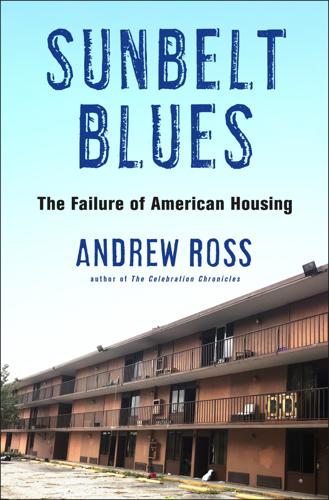
Sunbelt Blues: The Failure of American Housing
by
Andrew Ross
Published 25 Oct 2021
But the town center ruckus was a different kind of conflict. In this case, the adversary was not a builder in a hurry to get the job done and leave before the defects were discovered. Rather, Lexin had come to town as a real estate raider, seeking only to ruthlessly exploit an asset. Unlike the developers, the company added nothing to the built environment. Given his heavy reliance on debt financing—even the initial $21 million sale was financed with a $19.1 million GMAC loan—Negrin and his partners probably did not even have much skin in the game. What makes the private equity business so attractive for investors is that the potential downside for those involved is quite limited.

Engineering Security
by
Peter Gutmann
These are legitimate considerations when you are designing an embassy, but do not really apply to a shopping center, a middle school, or an apartment complex […] Very few architectural firms will ever have the opportunity to design a State Department building or maximum-security prison” [17]. Examples of this type of thinking can be found in post-9/11 books on security for the built environment. One text, on a landscape-architectural approach to security, contains as its worked design examples the Federal Center and International Trade Center in Washington DC, the Washington Monument and Lincoln Memorial, the White House, New York City Hall, the Sacramento State House, and the Hanley Federal Building and US Courthouse in New York, supported by data such as tables 244 Threats of blast pressure levels caused by various types of car and truck bombs [18].
…
An architect, armed with some understanding of the structure of criminal encounter, can simply avoid providing the space which supports it” [112]. More succinctly it “reduces the propensity of the physical environment to support criminal behaviour” [114]. CPTED includes not only standard security measures that are traditionally applied to the built environment like providing adequate lighting (but see the discussion further down for more on this) and minimising dense shrubs and trees that provide cover for miscreants but extends to a whole host of less immediately-obvious ones as well. One frequently-advocated (but less frequently-applied) measure involves positioning windows for so-called passive surveillance of outside public spaces, based on the “eyes on the street” concept of influential urban activist Jane Jacobs [115], with the intended goal being that “abnormal users [of the environment] will feel at greater risk of detection” [114].
…
Security through Diversity 317 Other measures can include using slippery paints for columns and supports to prevent them from being scaled, planting climbing plants along walls subject to graffiti (a socalled “living wall”) and thorny plants to discourage people from entering certain areas, or where a living wall isn’t feasible for combating graffiti, using textured or boldly patterned coloured surfaces to the same effect (there’s a whole science built around just this aspect of CPTED alone), eliminating architectural features that provide easy access to roofs, painting areas around night-time lighting with white, reflective paint to increase the illumination being provided, and so on. Some of these security measures like the choice of paint used are extremely trivial and all can be bypassed, but in combination they add up to make a considerable integrated defensive system for attackers to overcome. As with computer security, security for the built environment is rarely a case of blindly following a fixed set of rules. For example trying to bolt on security through the simple expedient of adding CCTV cameras doesn’t work in schools because “many of the kids committing school crimes are trying to have their moment of fame on video. CCTV gives the kids their chance to be famous” [116].

The Transhumanist Reader
by
Max More
and
Natasha Vita-More
Published 4 Mar 2013
These new technologies may indeed be our future guardians against some of the unpredictable consequences of climate change, and may also help us adapt to and survive an unpredictable future and ultimately create a much cleaner, healthier environment that will benefit the wellbeing of many. References Armstrong, Rachel (2009) “Systems Architecture: A New Model for Sustainability and the Built Environment Using Nanotechnology, Biotechnology, Information Technology, and Cognitive Science with Living Technology.” Artificial Life (MIT Press) 16, pp. 1–15. Armstrong, Rachel and Spiller, Neill (2011) “Synthetic Biology: Living Quarters.” Nature 467 (October 21, 2010), pp. 916–918. Hanczyc Martin and Ikegami, Takashi (2009) “Protocells as Smart Agents for Architectural Design.”
…
Traube, Moritz (1867) Archiv für Anatomie Physiologie und wissenschaftliche Medicin, pp. 87–128, 129–165. Toyota, Taro, Maru, Naoto, Hanczyc, Martin, Ikegami, Takashi, and Sugawara Tadashi (2009) “Self-Propelled Oil Droplets Consuming “Fuel’ Surfactant.” Journal of the American Chemical Society 131/14, pp. 5012–5013. Further Reading Armstrong, Rachel (2011) “Unconventional Computing in the Built Environment.” International Journal of Nanotechnology and Molecular Computation 3/1, pp. 1–12. Part III Human Enhancement The Cognitive Sphere Enhancing the human brain’s cognitive capacities is another crucial goal of transhumanism. In a new essay Andy Clark, author of Natural-Born Cyborgs: Minds, Technologies, and the Future of Human Intelligence, considers how the merging of humans and machines will enable us to redesign ourselves for the better.

QI: The Second Book of General Ignorance
by
Lloyd, John
and
Mitchinson, John
Published 7 Oct 2010
In 1994 the age of same-sex consent was lowered to eighteen and it was reduced again in 2001 to sixteen, bringing it into line with the consensual age for everyone else. The 1994 bill was also the first British legislation ever to mention lesbian sex, setting the age of consent between two women at sixteen. Who lives in Europe’s smallest houses? We do. According to a survey by the Commission for Architecture and the Built Environment (CABE), the British build the pokiest homes in Europe. The UK has both the smallest new houses and smallest average room size. The average size of a room in a new house in France is 26.9 square metres. The equivalent in the UK is 15.8 square metres – only a smidgeon larger than a standard parking space (14 square metres).
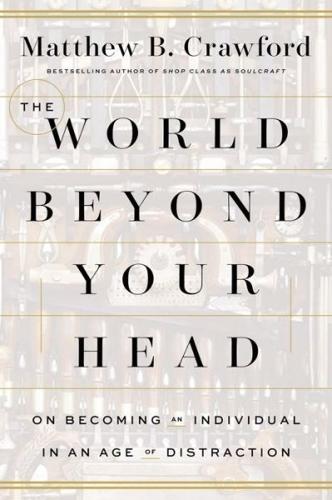
The World Beyond Your Head: On Becoming an Individual in an Age of Distraction
by
Matthew B. Crawford
Published 29 Mar 2015
The deepening of our understanding, and our affections, requires partners in triangulation: other people as other people, in relation to whom we may achieve an earned individuality of outlook. Absent such differentiation, there is a certain flattening of the human landscape. In the next chapter, I’d like to consider how the built environment of our shared spaces may contribute to this flattening. When they are saturated with mass media, our attention is appropriated in such a way that the Public—an abstraction—comes to stand in for concrete others, and it becomes harder for us to show up for one another as individuals. 11 THE FLATTENING I started lifting weights when I was thirteen, in the basement of the YMCA that is kitty-corner from Berkeley High.

Messy: The Power of Disorder to Transform Our Lives
by
Tim Harford
Published 3 Oct 2016
Emily Eakin, “The Excrement Experiment,” The New Yorker, December 1, 2014, http://www.newyorker.com/magazine/2014/12/01/excrement-experiment; Freakonomics Radio, “The Power of Poop,” March 3, 2011, http://freakonomics.com/2011/03/03/the-power-of-poop-full-transcript/. 7. Emily Eakin, “Bacteria on the Brain,” The New Yorker, December 7, 2015, http://www.newyorker.com/magazine/2015/12/07/bacteria-on-the-brain. 8. This study was done by researchers at the Biology and the Built Environment Center at the University of Oregon. See Jessica Green, “Are We Filtering the Wrong Microbes?” TED Talks, 2011, http://www.ted.com/talks/jessica_green_are_we_filtering_the_wrong_microbes/transcript?language=en. 9. Alanna Collen, “‘Microbial Birthday Suit’ for C-Section Babies,” BBC Magazine, September 11, 2015, http://www.bbc.com/news/health-34064012. 10.

Streetfight: Handbook for an Urban Revolution
by
Janette Sadik-Khan
Published 8 Mar 2016
But it’s clear to me that the future of for-hire car services will be a lot more on-demand-in-your-hand and a lot less like the 1930s model of taxis. How to deal with this new “genie” of mobility is playing out all over the world, and it’s not going back into the lamp. Fully self-driving vehicles will have even more widespread impacts on safety, mobility, land use, and the built environment. By eliminating human emotions and opportunism from the act of driving, a disinterested technology system can keep vehicles away from one another, operating at a speed appropriate for safety, optimizing road capacity, and closing the divide between those who have access to mobility and those who don’t.
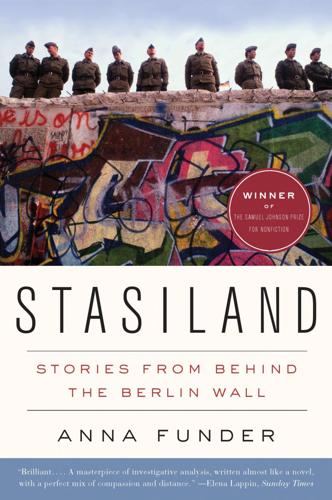
Stasiland: Stories From Behind the Berlin Wall
by
Anna Funder
Published 19 Sep 2011
This place seems to have been designed on the same one-size-fits-all architectural principle as everything else: the Runden Ecke in Leipzig and Stasi HQ at Normannenstrasse; the same as prisons and hospitals and schools and administrative buildings all over this country, and probably the same as inside the brown Palast der Republik only it’s behind bars and I can’t get in. From here to Vladivostok this was Communism’s gift to the built environment—linoleum and grey cement, asbestos and prefabricated concrete and, always, long long corridors with all-purpose rooms. Behind these doors anything could be happening: interrogations, imprisonment, examinations, education, administration, hiding out from nuclear catastrophe or, in this case, propaganda.

The Uninhabitable Earth: Life After Warming
by
David Wallace-Wells
Published 19 Feb 2019
Conceivably those climates could get considerably more micro, down to particular farms or soccer stadiums or beach resorts. These interventions, should they ever become feasible, are decades away, at least. But even rapid and quotidian-seeming projects will leave a profoundly different imprint on the shape of the world. In the nineteenth century, the built environment of the most advanced countries reflected the prerogatives of industry—think of railroad tracks laid across whole continents to move coal. In the twentieth century, those same environments were made to reflect the needs of capital—think of global urbanization agglomerating labor supply for a new service economy.
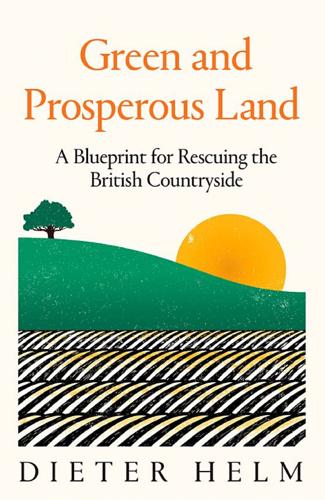
Green and Prosperous Land: A Blueprint for Rescuing the British Countryside
by
Dieter Helm
Published 7 Mar 2019
Humans have changed each and every environment. We are eco-engineers for the entire planet. We have to fix farming. Without changes to farming practices, the natural environment farmers manage will continue to decline. Intensive farming is, from an environmental perspective, a desert of monocultures. It can be less biodiverse than the built environments. Despite all the subsidies, farmers are not doing well, and many smaller farms are in danger of going under. Since World War II, 70 years of subsidies have not brought prosperity to the bulk of farmers. Modern British agriculture is bad for the environment, bad for farmers and bad for taxpayers.
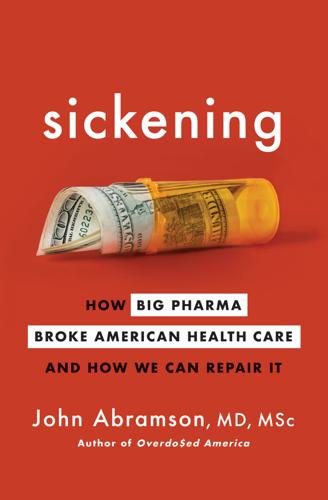
Sickening: How Big Pharma Broke American Health Care and How We Can Repair It
by
John Abramson
Published 15 Dec 2022
Socioeconomic factors like education, employment, income, family and social support, and community safety are responsible for 40 percent of Americans’ health status; health behaviors like tobacco use, diet and exercise habits, alcohol use, and unsafe sex determine 30 percent; and environmental quality and the built environment (that is, infrastructure) account for another 10 percent. Thus, medical care determines not 80 but 20 percent of our health. Yet only 4 percent of medical research investigates how to deliver more effective and efficient health care because the knowledge produced by such research offers little, or even negative, monetary benefit to those who fund it.

The Stack: On Software and Sovereignty
by
Benjamin H. Bratton
Published 19 Feb 2016
For the User, these maps cohere the range of possible interactions and transactions not only with the City layer, but also with the Cloud and Earth layers as mediated through it; Interfaces provide a channel for the User to model and monitor his or her own position within the range that they describe. Furthermore, The Stack is not only mediated through the City layer; the entire apparatus also expresses itself at the scale of the city and the built environment, and it does so in sometimes contradictory ways, characterized as much by centralization (e.g., the continental consolidation of key bandwidth channels into meganodes and megacities) and decentralization (e.g., the global predominance of increasingly powerful mobile handsets as an essential provision for everyday urban life).11 Below we examine several ways that The Stack is grounded at the City layer, from the scale of global networks to that of the individual envelope, and back again.
…
For the individual, habitus can also refer to how embodied dispositions become codified into the organization of place and how this comes to reconfigure how they are occupied and programmed in their reflective image. The repetition of habit produces an inscription, a “groove,” in the figural contours of the built environment, and in fact it builds the environment precisely through such repetitions, while habitats in turn produce and enunciate themselves though bodies, manifested as habits. Spaces contain and constrain, and are configured by the bodies they constrain. Spaces are not just expressions of embodiment; they also express themselves as and through bodily form (prisoner, worker, individual, mass).
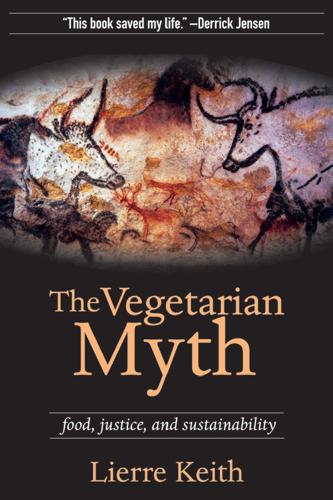
The Vegetarian Myth: Food, Justice, and Sustainability
by
Lierre Keith
Published 30 Apr 2009
There will be a great battle to preserve the supposed entitlements to suburbia and it will be an epochal act of futility, a huge waste of effort and resources that might have been much better spent in finding new ways to carry on.14 He paints a post-industrial still-life of the suburbs become unlivable, as oil prices rise and the built environment arranged entirely for cars stops working entirely. Housing is the largest investment the average person has. It will soon be worthless if it’s in the suburbs. Most of the world has invested in infrastructure built on a promise of infinite fossil fuel; most of the human race has also reproduced on the premise of infinite food from that same fossil fuel.
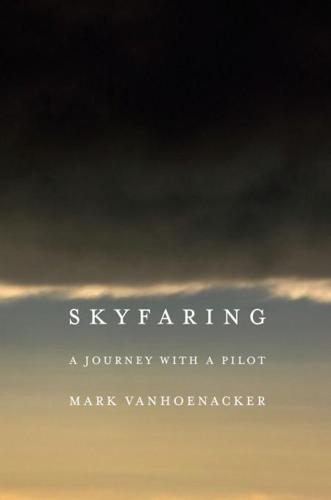
Skyfaring: A Journey With a Pilot
by
Mark Vanhoenacker
Published 1 Jun 2015
The term built environment typically refers to the totality of man-made features such as streets, parks, and buildings. But one subset of this, the cocoon of glassed-off insulation that is modern travel—in particular, the global house of sealed comfort that air travelers are presumed to want—is a more compelling object for the name. The completeness of the built environment, the built sky, is often taken as a mark of the quality of the airport, or even of the level of development in a country. Few travelers enjoy boarding a plane that is parked away from the terminal, which may involve waiting on stairs in the wind and the rain. Jetways—or air bridges, a term in which the increasingly sealed-off modern traveler might hear a touch of irony—are added as airports develop and expand.
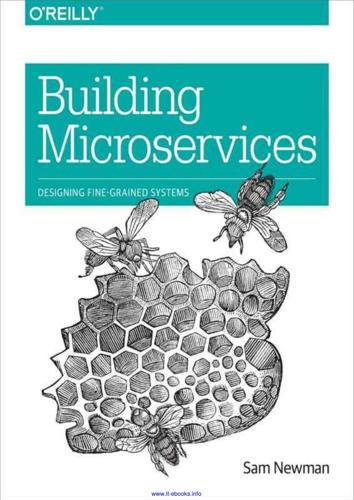
Building Microservices
by
Sam Newman
Published 25 Dec 2014
Although I have spent much of the chapter so far warning you off comparing ourselves too much to other professions, there is one analogy that I like when it comes to the role of the IT architect and that I think better encapsulates what we want this role to be. Erik Doernenburg first shared with me the idea that we should think of our role more as town planners than architects for the built environment. The role of the town planner should be familiar to any of you who have played SimCity before. A town planner’s role is to look at a multitude of sources of information, and then attempt to optimize the layout of a city to best suit the needs of the citizens today, taking into account future use.
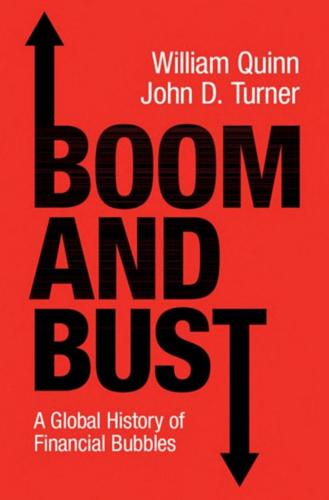
Boom and Bust: A Global History of Financial Bubbles
by
William Quinn
and
John D. Turner
Published 5 Aug 2020
Poterba (eds.), Housing Markets in the U.S. and Japan, University of Chicago Press, 1994. Noguchi, Y. ‘The “bubble” and economic policies in the 1980s’, The Journal of Japanese Studies, 20, 291–329, 1994. 275 BIBLIOGRAPHY Norris, M. and Coates, D. ‘How housing killed the Celtic tiger: anatomy and consequences of Ireland’s housing boom and bust’, Journal of Housing and the Built Environment, 29, 299–315, 2014. Norris, M. and Coates, D. ‘Mortgage availability, qualifications and risks in Ireland, 2000-2009’, Journal of Current Issues in Finance, Business and Economics, 4, 191–206, 2011. Noyes, A. D. Forty Years of American Finance, New York: G.P. Putnam’s Sons, 1909. Nyberg, P.

The Measure of Progress: Counting What Really Matters
by
Diane Coyle
Published 15 Apr 2025
Following Fransen et al. (2018), Corrado, Hulten, and Sichel (2005), and O’Mahony and Samek (2021), the definition of social infrastructure includes both tangible assets (such as hospital buildings, MRI scanners, ambulance fleets, research or diagnostic laboratories) and intangible assets (such as research and development, health software, management capabilities, or other organisationally embedded knowledge). Some definitions focus on the built environment of publicly accessible places where people can come together (e.g., Kleinberg et al. 2018). However, other definitions might also include or alternatively focus on networks of relationships and social capital, including in the household or community (e.g., Kelsey and Kenny 2021). The common thread is that they are collectively organised investments delivering capital services over time as inputs into other production activities or directly to consumers and citizens. 62 Ch a pter T wo Unfortunately, most countries have poor data even on standard physical infrastructure, e ither the flow of new investment or the stock and its depreciation.
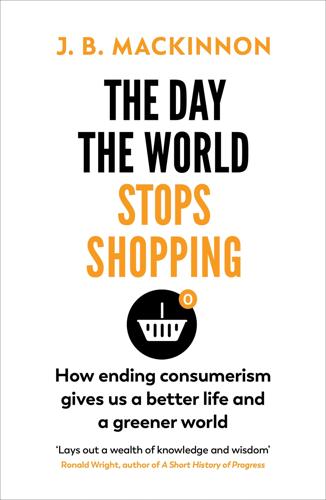
The Day the World Stops Shopping
by
J. B. MacKinnon
Published 14 May 2021
As a third pillar of metabolic health, we should put up with more heat and cold in our lives, at least enough to make our bodies have to work to keep us warm or cool. That’s easier said than done. Shove has shown that shifts in our ideas of what constitutes a normal way of life tend to be ratchet- or corkscrew-like processes that demand more and more energy and resources; once they move forward into our expectations, regulations and the built environment, they are difficult to reverse. It is especially difficult to change them through our actions as individuals. “It’s not a personal issue,” said Shove. “These standards are completely worldwide, and we’re caught up in them whether we like it or not. And so it’s not really a matter of individually how many jumpers you’re wearing or anything like that.

Names for the Sea
by
Sarah Moss
Published 27 Apr 2018
But luckily, I have had proofs many times. The elves can get physical. When it’s about Mother Earth, then they have a bit more control.’ I thought elves could disrupt road-building and move things around people’s kitchens. I thought that was how we knew they were there. ‘So they don’t have any control over the built environment?’ Þórunn glances around her little house. ‘They wouldn’t disturb anything here. But when there are eruptions in the land, on the earth, then they can make a difference.’ The ash cloud behind her shoulder is bigger and darker than it was when I came, surging across the bright sky. There are farms round the other side of the mountain that will be uninhabitable for years to come, villages where the children have not set foot outside for weeks.
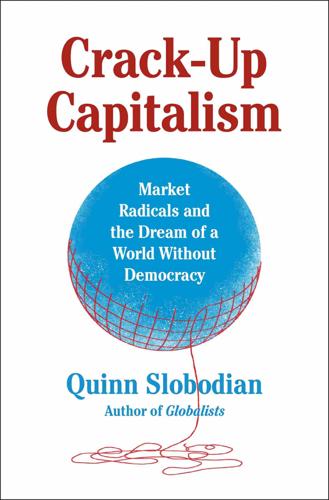
Crack-Up Capitalism: Market Radicals and the Dream of a World Without Democracy
by
Quinn Slobodian
Published 4 Apr 2023
A major property development in the UK would be 150 acres; the main free zone in Dubai was a hundred times larger. Things got done. “In two years they have built and opened a metro system,” he said. “In the UK it would take that long to refurbish one station.”6 Dubai made use of the most advanced forms of engineering and architecture to achieve visually stunning, gravity-defying feats in the built environment. It was unapologetic in its ostentatious celebration of wealth unburdened by hang-ups about inequality. How did they do it? Authoritarianism was part of the answer. Dubai was a case study in capitalism without democracy. Through the early 2000s, it ranked as one of the least politically free places in the world, owing to the absence of popular elections, protection of free expression, and rights for noncitizens, as well as the arbitrary use of police force and practice of forced labor.7 As early as 1985, the CIA reported that in Dubai “ideology is dismissed as irrelevant to business.”8 Of course, dismissing ideology in favor of business amounted to an ideology of its own.
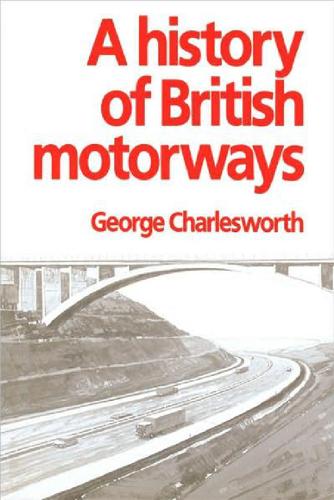
A History of British Motorways
by
G. Charlesworth
Published 1 Jan 1984
FREEMAN FOX, WILBUR SMITH AND ASSOCIATES. The West Midlands Transport Study. Birmingham, 1968. 41. SIR OWEN WILLIAMS AND PARTNERS. MIdland Links motorway. Sir Owen Williams and Partners, London, 1972. 42. LAWSON B.R. and WALTERS D. The effects ofa new motorway on an established residential area. Psychology and the built environment. Architectural Press, London, 1974. 43. WALL J .S. and BURR M.A. Aston Expressway signing and signalling system. Traffic engineering and control, 1972, 14, No. 8. 44. READ G.F. Parkway concept for Bolton's first motorway. Surveyor, 1971,38, No. 4150. 45. STEERING COMMITTEE ON MERSEYSIDE TRAFFIC AND TRANSPORT.
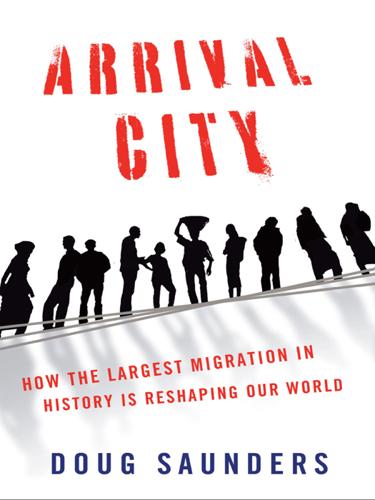
Arrival City
by
Doug Saunders
Published 22 Mar 2011
Though considered ugly and unsanitary by mainstream Turkish architects and urban planners at the time (and the hygiene levels certainly were lacking), these rugged, haphazard houses later came to be praised for their tight-knit beauty and their intrinsically earthquake-proof design: “Typical gecekondu settlements are composed of one- or two-story houses with gardens or courtyards,” one admirer wrote 30 years later. “There is an irregular settlement pattern with narrow paths and passages between the plots. This kind of space is a result of a long-term consolidation process and provides a special kind of environmental quality for the inhabitants. The built environment offers variety, flexibility in the uses of immediate environment of the houses, fluid spaces between indoors and outdoors and an opportunity for socialization.” Established city-dwellers looked at the outskirts and saw a million rural villages popping up. In reality, though there were certainly aspects of village life in the gecekondu, the houses and their surroundings bore little resemblance to the villages their occupants had fled.
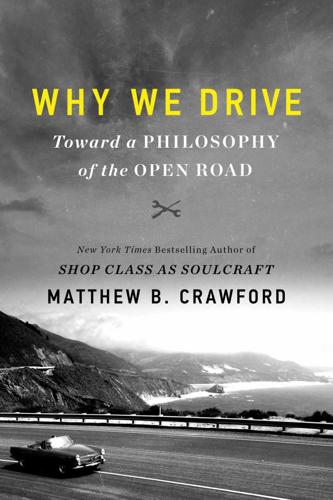
Why We Drive: Toward a Philosophy of the Open Road
by
Matthew B. Crawford
Published 8 Jun 2020
As I see it, this work has a clear upshot for human beings. As we grapple with the challenges of automation, we may want to arrange our own environment like that of the happy rats, rather than the overdetermined world of their anxious counterparts. Of course, we do not simply live in the natural environment. But the built environment of technology and cultural practices can likewise be rich enough that it demands the use of our full repertoire of intelligence. Flourishing—that of rats and humans alike—seems to require an environment with “open problem spaces” that elicit the kinds of bodily and mental engagement bequeathed us by evolution and cultural development.

City on the Verge
by
Mark Pendergrast
Published 5 May 2017
“If she were to collapse,” he thought, “the cause of death would be listed as heat stroke, and there would be no mention of the upstream causes—the absence of trees, a black tar road, too many cars, too much air pollution, and lack of public transport.” And if she were hit by a truck, the cause of death would be motor vehicle trauma, not lack of sidewalks and insufficient pedestrian crossings. That incident served as an epiphany for Jackson, who subsequently became an ardent proponent for rethinking and restructuring the “built environment,” recognizing that how we build our cities, transportation systems, and infrastructure has a profound public health impact. In his 2012 four-part public television documentary and accompanying book, Designing Healthy Communities, he preached a New Urbanist health mantra. Children should be able to walk or ride bikes to school.

Cities Are Good for You: The Genius of the Metropolis
by
Leo Hollis
Published 31 Mar 2013
In this way we are also constructing democracy … A city is a physical entity, a place where people go to schools or libraries that are physical buildings, they walk on sidewalks, and use public transit and roads. If the physical quality of the city is poor, the quality of life there also will be poor.14 This was enshrined in the 2000 Territorial Ordering Plan of the Capital District that emphasised the need to work on urban renewal, the built environment, sustainable development and low-income housing. New schools, parks and libraries were built. There were 100 new nurseries for children under five years old. Water was provided to all slum regions and wide-scale housing schemes were developed for the homeless. Yet Peñalosa also wanted the Bogotános to rethink the city itself.
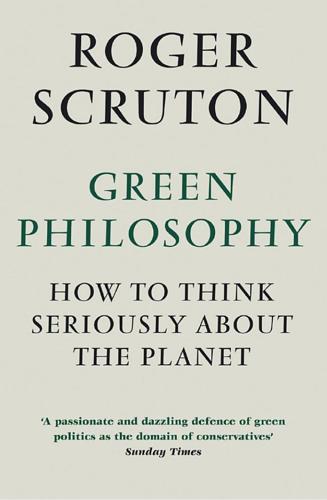
Green Philosophy: How to Think Seriously About the Planet
by
Roger Scruton
Published 30 Apr 2014
We leave behind our private appetites and subjective preferences in order to achieve a consensus that will provide a public background to what we are and what we do. In such circumstances aesthetic disagreements are not comfortable disagreements like disagreements over taste in food (which are not so much disagreements as differences). When it comes to the built environment we should not be surprised that aesthetic disagreements are the subjects of fierce litigation and legislative enforcement – even in America, where each person is sovereign in his land. We can reject the assumption that beauty is merely subjective without embracing the view that it is objective.
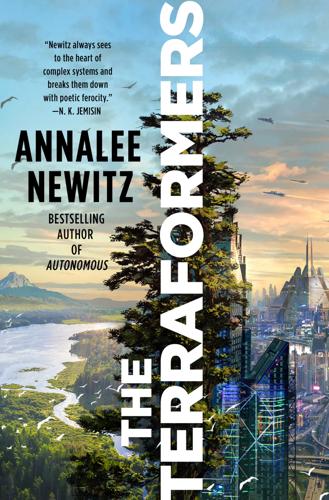
The Terraformers
by
Annalee Newitz
Circling back the other direction, they would interview the people themselves. Human data was the easiest to get, but the hardest to interpret. Of course somebody had named the city’s biggest artery Emerald Way. The two rangers worked fast and silently while still in the city, reading sensors in the trellises, grabbing 3-D impressions of the built environment with lasers, and ignoring the occasional comments about how they were animals and shouldn’t be on the sidewalk. The comments thinned out as the settlements grew lower density. Now they were in worker suburbs, where a lot of people had already gone to their construction sites and most faces on the street were H. diversus or robot.
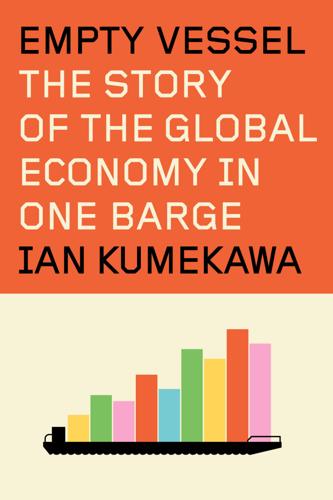
Empty Vessel: The Story of the Global Economy in One Barge
by
Ian Kumekawa
Published 6 May 2025
(Cambridge: Harvard University Press, 2015); Will Davies, The Limits of Neoliberalism: Authority, Sovereignty, and the Logic of Competition (London: Sage, 2014). BACK TO NOTE REFERENCE 23 Daniel Rodgers, “The Uses and Abuses of ‘Neoliberalism,’ ” Dissent (Winter 2018). BACK TO NOTE REFERENCE 24 Sam Wetherell similarly highlights the physical, material side of neoliberalism. Sam Wetherell, Foundations: How the Built Environment Made Twentieth-Century Britain (Princeton: Princeton University Press, 2020). See also James Vernon, “Heathrow and the Making of Neoliberal Britain,” Past and Present 252 (August 2021): 213–47. BACK TO NOTE REFERENCE 25 Index The page numbers in this index refer to the printed version of the book.
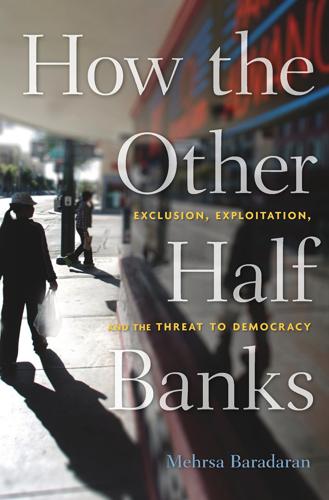
How the Other Half Banks: Exclusion, Exploitation, and the Threat to Democracy
by
Mehrsa Baradaran
Published 5 Oct 2015
James Post and Fiona Wilson, “Too Good to Fail,” Stanford Social Innovation Review, Fall 2010, accessed March 15, 2015, www.ssireview.org/articles/entry/too_good_to_fail. 3. David Moberg, “The Left Bank,” Chicago Reader, May 26, 1994, accessed March 15, 2015, www.chicagoreader.com/chicago/the-left-bank/Content?oid=884620. 4. Ibid; Maf Smith et al. Greening the Built Environment, 188 (New York: EarthScan, 1998); Central Illinois 9/12 Project, “Shorebank’s Evolution from Community-Based Banking to the Microfinancing Arena,” Breitbart, March 5, 2010, accessed March 15, 2015, www.breitbart.com/Big-Government/2010/03/05/ShoreBanks-Evolution-from-Community-Based-Banking-to-the-Microfinancing-Arena. 5.
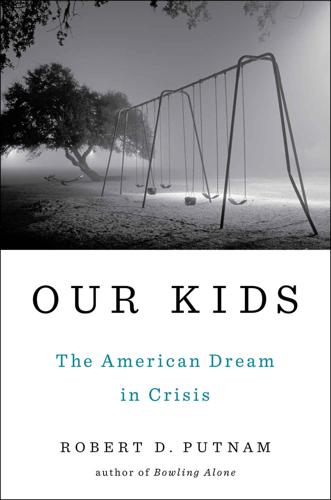
Our Kids: The American Dream in Crisis
by
Robert D. Putnam
Published 10 Mar 2015
Saelens, Adam Drewnowski, and Paula Lozano, “Child Obesity Associated with Social Disadvantage of Children’s Neighborhoods,” Social Science & Medicine 71 (2010): 584–91. 42. Centers for Disease Control and Prevention (CDC), “Physical Activity Levels Among Children Aged 9–13 Years—United States, 2002,” Morbidity and Mortality Weekly Report 52 (August 22, 2003): 785–88; Penny Gordon-Larsen, Melissa C. Nelson, Phil Page, and Barry M. Popkin, “Inequality in the Built Environment Underlies Key Health Disparities in Physical Activity and Obesity,” Pediatrics 117 (February 2006): 417–24; Billie Giles-Corti and Robert J. Donovan, “Relative Influences of Individual, Social Environmental, and Physical Environmental Correlates of Walking,” American Journal of Public Health 93 (September 2003): 1583–89; Jens Ludwig et al., “Neighborhoods, Obesity, and Diabetes—A Randomized Social Experiment,” New England Journal of Medicine 365 (2011): 1509–19. 43.
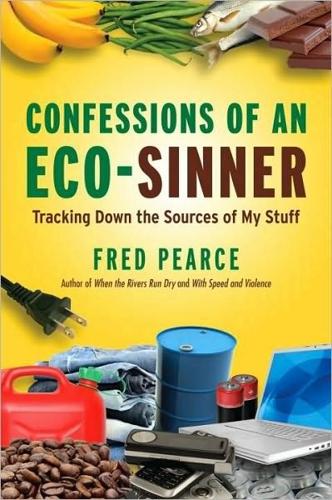
Confessions of an Eco-Sinner: Tracking Down the Sources of My Stuff
by
Fred Pearce
Published 30 Sep 2009
The real numbers must be an official secret, or maybe they are just ignored because they are excluded from the Kyoto Protocol. A lot of research has been done recently into carbon footprints. It is only part of our total footprint, of course. But the figures are interesting. The Carbon Trust, for instance, shows that half of all Britain’s carbon dioxide emissions come from the ‘built environment’, and a quarter from our homes. That phrase is rather a catch-all. It includes not just the construction and maintenance of buildings, but also heating and lighting them, running their phone lines and computers, and most of the things that we do in buildings, like cooking and bathing and turning on the TV.
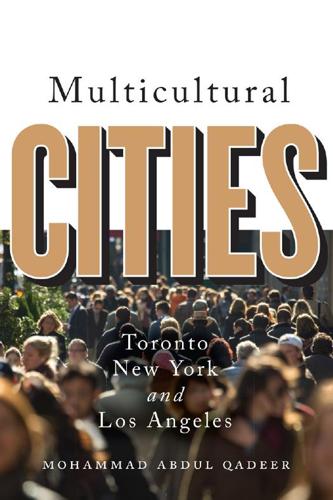
Multicultural Cities: Toronto, New York, and Los Angeles
by
Mohammed Abdul Qadeer
Published 10 Mar 2016
Leonie Sandercock draws attention to the “glaring absences in the mainstream accounts of planning history,” namely, the voices of ethno-racial minorities, women, and those lacking in power.9 Dory Reeves advises professionals to “value diversity, promote equality and become more conscious of power relations.”10 Most of the writings on multicultural planning are couched in prescriptive terms, describing what should be done rather than what is the practice.11 The following five propositions summarize the current theoretical discourse on multicultural planning. They encompass almost the full range of planning theorists’ arguments about urban planning’s responsiveness to socio-cultural diversity. 1. Urban planning is coded in Anglo-European cultural precepts. Those are held to be the universal norms of people’s needs and preferences. The built environment is inscribed with these so-called universal precepts, privileging the culture of the dominant community. Urban planning is the agency for doing so.12 2. The modernist bias of planning, its “enlightenment epistemology,” rational-positivist approach, and scientific analytics have been held to be a barrier keeping out the voices and stories of minorities, women, and other citizens.13 Leonie Sandercock calls the current approach a “heroic model of modernist planning” in which rationality, comprehensiveness, the scientific method, and faith in planners’ ability to know what is good for people generally and political neutrality come together.14 3.
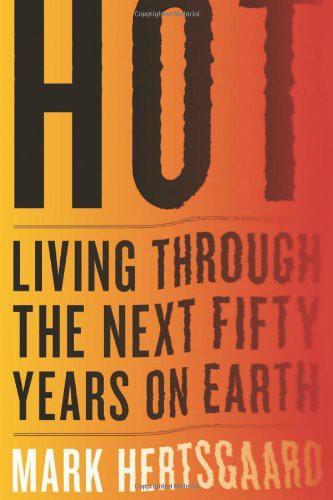
Hot: Living Through the Next Fifty Years on Earth
by
Mark Hertsgaard
Published 15 Jan 2011
Pointing across the street to a row of two-story buildings, Norman said the ground-level units would house commercial and retail shops, "so people won't have to drive a car to buy milk or have a coffee with a friend." "Preparing a community against climate change isn't just about using green materials," Norman said. "It's about designing the built environment to integrate home, work, retail, and transit so people are less vulnerable to climate impacts and don't have to use cars as much." Norman cited a second housing project he had supervised, near the Microsoft campus in Redmond. "That's a very desirable part of King County, with lots of good restaurants and amenities, but who was going to wash the dishes and cut the grass?"
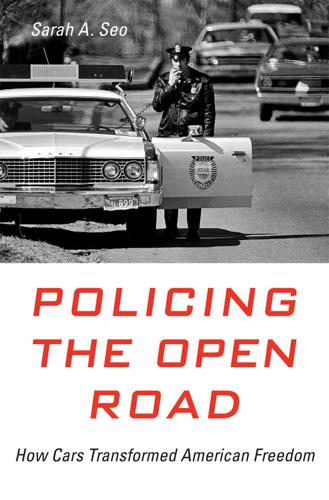
Policing the Open Road
by
Sarah A. Seo
Scanning the list gives the impression that the automobile left no area of law, or aspect of everyday life, untouched.12 Notwithstanding Professor Hurst’s insights, scholars have not studied the law or its histories through the automobile. A prominent judge skeptical of such analytical frameworks once retorted, “Isn’t this just the law of the horse?” But Americans did not think of the twentieth century as the Automotive Age for nothing. Cars radically changed daily lives and aspirations, culture and the built environment, and people’s relationships with each other and their communities. Even more profoundly, the automobile came to represent individual solitude and freedom. The poet Stephen Dunn described the car as a “sacred place,” where one can be “in it alone, his tape deck playing / things he’d chosen.”
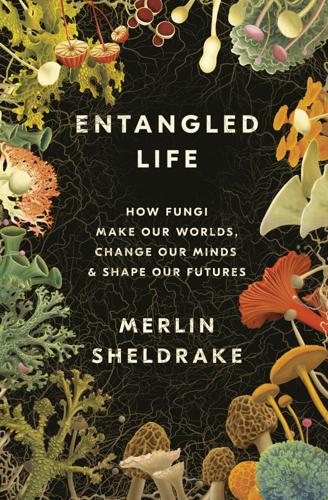
Entangled Life: How Fungi Make Our Worlds, Change Our Minds & Shape Our Futures
by
Merlin Sheldrake
Published 11 May 2020
Effect of electrical stimulation on fruit body formation in cultivating mushrooms. Microorganisms 2: 58–72. Talou T, Gaset A, Delmas M, Kulifaj M, Montant C. 1990. Dimethyl sulphide: the secret for black truffle hunting by animals? Mycological Research 94: 277–78. Tanney JB, Visagie CM, Yilmaz N, Seifert KA. 2017. Aspergillus subgenus Polypaecilum from the built environment. Studies in Mycology 88: 237–67. Taschen E, Rousset F, Sauve M, Benoit L, Dubois M-P, Richard F, Selosse M-A. 2016. How the truffle got its mate: insights from genetic structure in spontaneous and planted Mediterranean populations of Tuber melanosporum. Molecular Ecology 25: 5611–627. Taylor A, Flatt A, Beutel M, Wolff M, Brownson K, Stamets P. 2015.
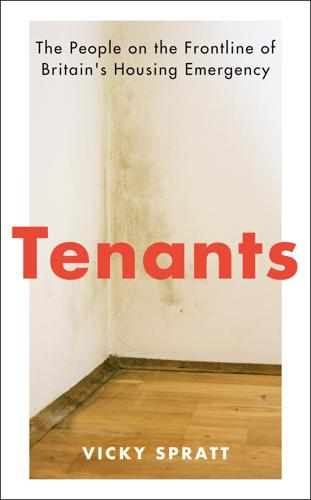
Tenants: The People on the Frontline of Britain's Housing Emergency
by
Vicky Spratt
Published 18 May 2022
The situation, she told me, is compounded by the relatively stagnant wages of renters who end up experiencing fuel poverty and, in some cases, poor health. This is where the housing and climate emergencies overlap with public health even when we are not in the crisis of a pandemic. In 2016, a report from the Building Research Establishment Trust – an independent charity dedicated to improving the built environment – analysed one year’s worth of data and estimated that poor housing could be costing the NHS as much as £1.4 billion a year. Had it been properly implemented, and people actively urged to take it up, the Green Homes Grant could have been a joined-up approach to the crisis of conditions in the private rented sector, the public health risks that come with that, rising energy costs and the climate emergency.
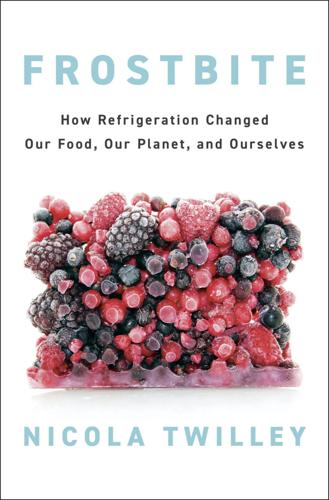
Frostbite: How Refrigeration Changed Our Food, Our Planet, and Ourselves
by
Nicola Twilley
Published 24 Jun 2024
At least at first, the fridge was simply an adjunct to existing food-storage methods. Many homes also had a north-facing pantry or larder with a mesh-screened opening to the outdoors and marble or tile shelving to keep food cool while keeping flies out, and even a root cellar to store vegetables. The existence of refrigerators made it possible to transform the built environment in a way that, in turn, made fridge ownership less optional. Well-insulated and centrally heated homes in the suburbs didn’t have the kind of drafty, cold corners that were perfect for a pantry. In new urban apartment blocks, it was impossible to put a meat safe outside or keep a root cellar in the basement.
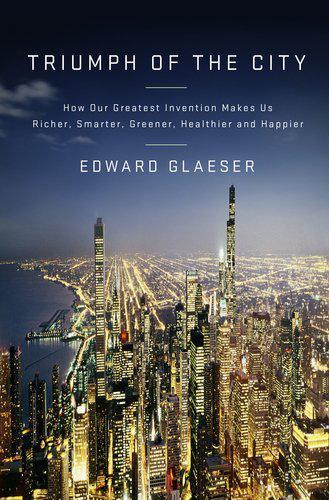
Triumph of the City: How Our Greatest Invention Makes Us Richer, Smarter, Greener, Healthier, and Happier
by
Edward L. Glaeser
Published 1 Jan 2011
“Beyond Scarcity: Power, Poverty and the Global Water Crisis.” United Nations Development Programme, Human Development Report, 2006, http://hdr.undp.org/en/media/HDR06-complete.pdf. Watson, Georgia Butina, Ian Bentley, Sue Roaf, and Pete Smith. Learning from Poundbury: Research for the West Dorset District Council and Duchy of Cornwall. School of the Built Environment, Oxford Brookes University, 2004. Webster, Ben. “Congestion Charge Will Rise to £25 for ‘Chelsea Tractors.’” Times (London), July 13, 2006, Home News. Webster, Philip. “Miliband Attacks Prince for Flying to Collect Green Award in New York.” Times (London), Jan. 20, 2007, Home News. Weis, René.

What Technology Wants
by
Kevin Kelly
Published 14 Jul 2010
The further diffusion of cameras into cell phones and digital devices birthed a universal sharing of images, the conviction that something is not real until it is captured on camera, and a sense that there is no significance outside of the camera view. The still further diffusion of cameras embedded into the built environment, peeking from every city corner and peering down from every room’s ceiling, forces a transparency upon society. Eventually, every surface of the built world will be covered with a screen and every screen will double as an eye. When the camera is fully ubiquitous, everything is recorded for all time.
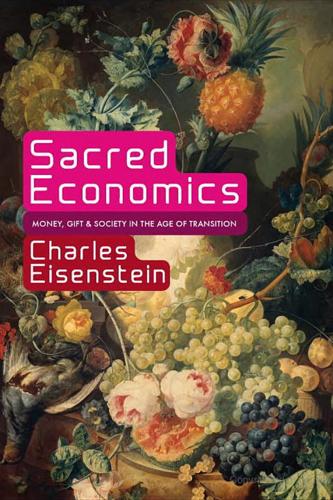
Sacred Economics: Money, Gift, and Society in the Age of Transition
by
Charles Eisenstein
Published 11 Jul 2011
Even without explicit property rights, this absorptive capacity is being taken from the commons. 2. Filmmakers, for instance, need entire “rights clearance” legal departments in order to make sure they haven’t inadvertently used some copyrighted image in their movie. These could include images of designer furniture, buildings, brand logos, and clothing—almost everything in the built environment. The result has been to stifle creativity and relegate much of the most interesting art illegal. (This is inevitable when art uses the stuff of life around us for its subject and that stuff is in the realm of property already.) 3. Mumford, Technics and Civilization, 142. Of course, the person at the last stage of the invention process deserves reward for his or her ingenuity and toil, but the social context must also be acknowledged.
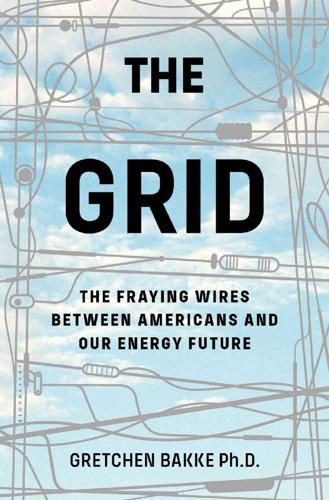
The Grid: The Fraying Wires Between Americans and Our Energy Future
by
Gretchen Bakke
Published 25 Jul 2016
The argument, then, that our grid wouldn’t be in such a dire state if only people were willing to pay more for their electricity is largely moot. People are willing to pay more, but only for certain things. The less solid these things, the less visible, and the more thoroughly integrated into the built environment they are, the more likely individuals and companies are to volunteer their money for the cause. The ways in which these immaterial power sources also fit into the rising tide of concern for “green” energy makes the utilities’ job easier. If renewables will help raise revenue, then renewables will show up on the bill.
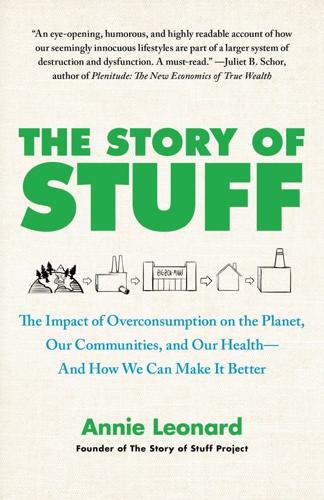
The Story of Stuff: The Impact of Overconsumption on the Planet, Our Communities, and Our Health-And How We Can Make It Better
by
Annie Leonard
Published 22 Feb 2011
In other cases—like the mix-and-match collection of laws and agencies with overlapping areas of jurisdiction—the structure is bad. In either case, we clearly need another way. We need regulators and scientists who are working for the well-being of people, not for specific industries. And we need laws and agencies that understand and reflect the complexity of the planet, including the natural environment, the built environment, communities, workers, kids, mothers—the whole package. Professor Ken Geiser, who is also the director of the Lowell Center for Sustainable Production, laid out a vision for a different approach in his 2008 paper Comprehensive Chemicals Policies for the Future. According to Geiser, a new chemicals policy would consider chemicals as components of the broader system of production in which they are used, not as isolated individual entities, which is never how they actually show up.
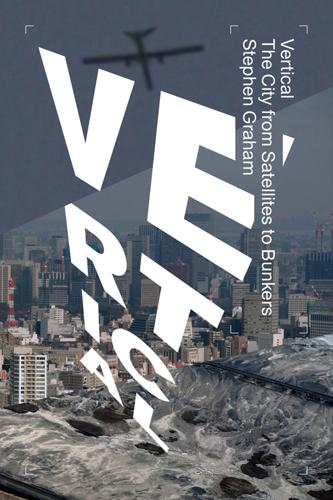
Vertical: The City From Satellites to Bunkers
by
Stephen Graham
Published 8 Nov 2016
Elevator/Lift: Going Up 1Ryan Sayre, ‘The Colonization of the “Up”: Building up and to the Light in Postwar Japan’, Architectonic Tokyo, 2011, available at architectonictokyo.com. 2See Jeannot Simmen, ‘Elevation: A Cultural History of the Elevator’, in Wolfgang Christ, ed., Access for All: Approaches to the Built Environment, Basel: Birkhauser, 2009, pp. 15–30. 3Quoted in Tim Catts, ‘Otis Elevator Vies for the Ultratall Skyscraper Market’, Business Week, 31 January 2013, available at businessweek.com. 4Len Rosen, ‘Materials Science Update: New Discovery May Lead to Mile-High Buildings’, 21st Century Science, 21 June 2013, available at 21stcentech.com. 5Nick Ames, ‘KONE Wins Elevator Pitch for World’s Tallest Tower’, Construction Week Online, 5 June 2014, available at constructionweekonline.com. 6See George Strakosch and Robert Caporale, The Vertical Transportation Handbook, London: Wiley, 2010. 7Nick Paumgarten, ‘Up and Then Down: The Lives of Elevators’, New Yorker, 21 April 2008. 8Barrie Shelton, Justyna Karakiewicz and Thomas Kvan.
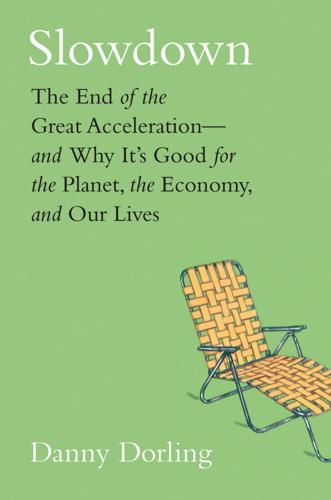
Slowdown: The End of the Great Acceleration―and Why It’s Good for the Planet, the Economy, and Our Lives
by
Danny Dorling
and
Kirsten McClure
Published 18 May 2020
Zhang Qun, Didier Sornette, and Hao Zhang, “Anticipating Critical Transitions of Chinese Housing Markets,” Swiss Finance Institute Research Paper, nos. 17–18 (May 2017), https://ssrn.com/abstract=2969801; or http://dx.doi.org/10.2139/ssrn.2969801 39. Dayong Zhang, Ziyin Liu, Gang-Shi Fan, and Nicholas Horsewood, “Price Bubbles and Policy Interventions in the Chinese Housing Market,” Journal of Housing and the Built Environment 32 (2017): 133–55, doi:10.1007/s10901-016-9505-6. 40. Francisco Becerril, “The Sign of China’s ‘Rebound’ May Be a Housing Bubble,” Financial Times, 25 April 2019, https://www.ft.com/content/71d237aa-6520-11e9-9adc-98bf1d35a056. 41. International Labour Organisation, Global Wage Report 2018/19: What Lies behind Gender Pay Gaps (Geneva: International Labour Office, 2018), https://www.ilo.org/wcmsp5/groups/public/---dgreports/---dcomm/---publ/documents/publication/wcms_650553.pdf. 42.
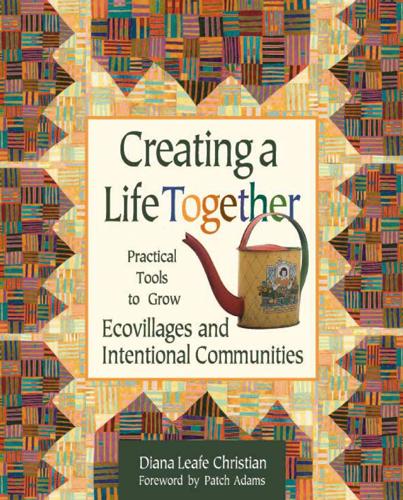
Creating a Life Together: Practical Tools to Grow Ecovillages and Intentional Communities
by
Diana Leafe Christian
Published 1 Jan 2003
To take a more sustainable approach, he suggests we must first see our community land as a long-term dwelling place both for humans and the other creatures living there. Secondly, he suggests “we must seek out the soul of that land, the spirit of the place. What is sacred, untouchable? What is inspiring or uplifting?” One quick method, he says, is to find the most beautiful place on the property, then build somewhere else. Lastly, he says,“design the built environment with an eye for minimal harm and maximum enrichment of the place.”As we’ve seen, Earthaven founders followed these design principles. The other communities we’ve studied have engaged in a similar process. Dancing Rabbit observed their land for several seasons, studied permaculture design principles as a group, and created a permaculture-based site plan for their 280 acres.

Braiding Sweetgrass
by
Robin Wall Kimmerer
In terms of systems science, the Windigo is a case study of a positive feedback loop, in which a change in one entity promotes a similar change in another, connected part of the system. In this case, an increase in Windigo hunger causes an increase in Windigo eating, and that increased eating promotes only more rampant hunger in an eventual frenzy of uncontrolled consumption. In the natural as well as the built environment, positive feedback leads inexorably to change— sometimes to growth, sometimes to destruction. When growth is unbalanced, however, you can’t always tell the difference. Stable, balanced systems are typified by negative feedback loops, in which a change in one component incites an opposite change in another, so they balance each other out.
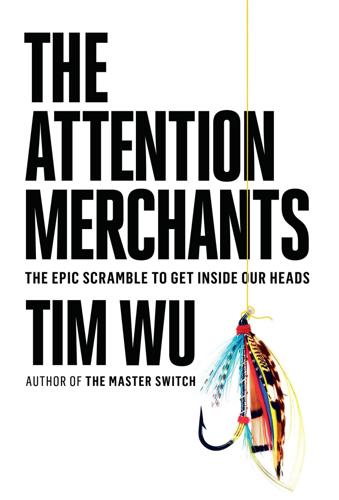
The Attention Merchants: The Epic Scramble to Get Inside Our Heads
by
Tim Wu
Published 14 May 2016
Now is when advertising was first woven into the fabric of most Americans’ lives, as bit by bit the major brands planted themselves in the collective consciousness, like so many mighty trees—as if Cadillac or Coca-Cola could never have been just names but were somehow imbued with meaning from the beginning of time. The built environment created by advertising began to seem like a natural ecosystem; the incessant barrage of commercial propositions became a fact of life. It is therefore all the more stunning to imagine that the industrialization of human attention capture as we know it had really only begun. The possibilities of electronic media and the Internet still lay in the future.
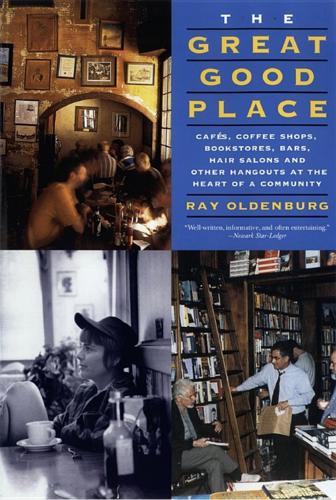
The Great Good Place: Cafes, Coffee Shops, Bookstores, Bars, Hair Salons, and Other Hangouts at the Heart of a Community
by
Ray Oldenburg
Published 17 Aug 1999
We can achieve more to improve our relationships with others by participating in community planning, rather than group therapy encounters. What ails us—most of us, anyway—is not that we are incapable of living a satisfactory and creative life in harmony with ourselves, but that our habitat does not offer sufficient opportunities. It hems us in. It isolates us. It irritates and disrupts.3 The speed with which the built environment is being transformed, the rate at which a new and wanting order is being created, is remarkable. Two factors seem to account for this overnight transformation of the environment. First, it is all done without involving the people who must use the facilities that are being constructed. As the socioeconomist Robert Theobald has noted, planners are averse to involving people because “people foul up systems, they get in the way.
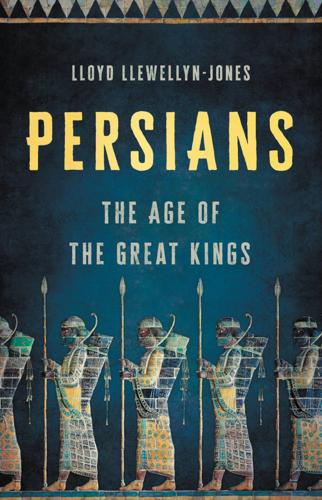
Persians: The Age of the Great Kings
by
Lloyd Llewellyn-Jones
Published 15 Mar 2022
‘Eunuchs in History and Society’, in S. Tougher (ed.), Eunuchs in Antiquity and Beyond. Swansea and London. 1–17. A very engaging (and eye-watering), perceptive account of the process of becoming a eunuch. Canepa, Matthew. 2018. The Iranian Expanse. Transforming Royal Identity through Architecture, Landscape, and the Built Environment, 550 bce–642 ce. Berkeley. An exciting study of the longue durée of archaeological sites in Iran; simply excellent. Colburn, Henry. 2019. The Archaeology of Empire in Achaemenid Egypt. Edinburgh. A fine new account of Egypt under Persian control, looking at art and archaeology. Collon, Dominique. 1987.
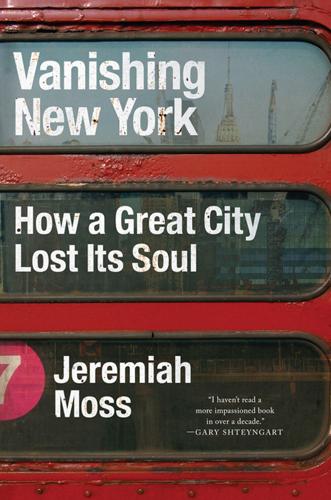
Vanishing New York
by
Jeremiah Moss
Published 19 May 2017
The Ethnic Myth: Race, Ethnicity, and Class in America. Boston: Beacon Press, 2001. Strausbaugh, John. The Village: 400 Years of Beats and Bohemians, Radicals and Rogues, a History of Greenwich Village. New York: Ecco, 2014. Sussman, Ann, and Justin Hollander. Cognitive Architecture: Designing for How We Respond to the Built Environment. New York: Routledge, 2014. Tippins, Sherill. Inside the Dream Palace: The Life and Times of New York’s Legendary Chelsea Hotel. Boston: Houghton Mifflin Harcourt, 2013. Tissot, Sylvie. Good Neighbors: Gentrifying Diversity in Boston’s South End. London and Brooklyn: Verso, 2015. Traub, James.

A Man and His Ship: America's Greatest Naval Architect and His Quest to Build the S.S. United States
by
Steven Ujifusa
Published 9 Jul 2012
A number of friends have taken the time to read and critique portions of the manuscript in its various iterations: thank you Travis Logan, Andrew Kelly, Reverend Sean Mullen, Gregory Nickerson, Bryan Fields, and Andrew Fink for your proofreading and editorial suggestions. Thanks also to my professors at Harvard College and the Penn School of Design, who taught me how to think and write about the history of the built environment: the late William Gienapp, Stephan Thernstrom, Brian Domitrovic, Randall Mason, John C. Keene, Frank Matero, and Donovan Rypkema. The Board of the SS United States Conservancy has become my extended family. In July 2010, a $5.8 million grant from philanthropist H. F. “Gerry” Lenfest (USNR retired) saved the ship from certain destruction.

Connectography: Mapping the Future of Global Civilization
by
Parag Khanna
Published 18 Apr 2016
ASIA IS THE EPICENTER OF POTENTIAL CLIMATE-RELATED DISASTERS Credit pai1.10 Populations most at risk from droughts, floods, and extreme temperatures. 11. INTER-CITY NETWORKS FLOURISH WITH THE RISE OF “DIPLOMACITY” Credit pai1.11 Learning networks are proliferating among cities sharing lessons in curbing greenhouse gas emissions, integrating sensor technologies into the built environment, promoting public safety, and enhancing societal resilience to natural disasters. There are more such inter-city networks today than international organizations. 12. EUROPE FRAGMENTS AS IT GROWS TOGETHER Credit pai1.12 Europe has a substantial number of separatist movements, but even as it devolves, new nations can become members of the collective European Union (EU). 13.
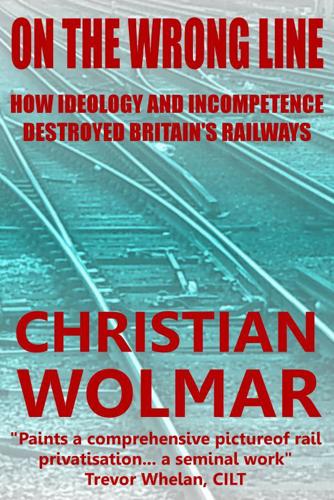
On the Wrong Line: How Ideology and Incompetence Wrecked Britain's Railways
by
Christian Wolmar
Published 29 May 2005
Nowadays, the functions of design, construction and project management are divided amongst a number of private companies, each of which needs to be run profitably, There are reasons other than privatisation which caused some of the cost escalation on the railways. Enhanced safety requirements during the construction phase add to the cost, as do new directives for the provision of access for wheelchair users and other facilities for the disabled, required by the Disability Discrimination Act 1995. Higher expectations of quality for the built environment mean that cheap, concrete structures and rolled hardcore for car parks can no longer be contemplated. BR also used to have the advantage of an annual Parliamentary Bill to allow developments, whereas Network Rail has to go through the lengthy Transport and Works Act process which, inevitably, is expensive.
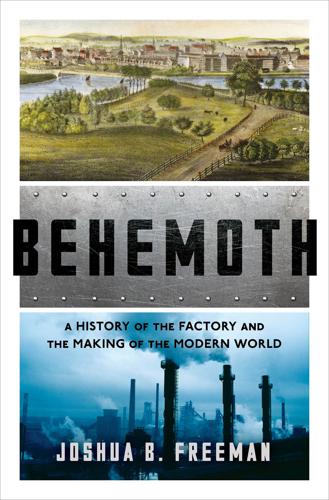
Behemoth: A History of the Factory and the Making of the Modern World
by
Joshua B. Freeman
Published 27 Feb 2018
But cathedrals and other big buildings had interior spaces organized for very different activities than manufacturing.34 To accommodate large-scale production, power-driven machinery, and masses of workers, new architectural designs and improved building techniques and materials were needed. Innovations to meet the specific needs of the cotton industry soon spread beyond it, shaping the built environment in England and elsewhere for the next two centuries. Arkwright apparently modelled his first Cromford mill on the Lombes’, also five stories high. Its “long, narrow proportions, height, range of windows . . . and large areas of relatively unbroken interior space,” wrote historian R. S. Fitton, “became the basic design in industrial architecture for the remainder of the eighteenth and through the nineteenth centuries.”

Your Computer Is on Fire
by
Thomas S. Mullaney
,
Benjamin Peters
,
Mar Hicks
and
Kavita Philip
Published 9 Mar 2021
As a result, the computer industry has largely succeeded in declaring itself outside of this history, and therefore independent of the political, social, and environmental controls that have been developed to constrain and mediate industrialization.23 By describing itself as an e-commerce entrepreneur and not simply an email order company, Amazon was awarded a decades-long tax subsidy that allowed it to decimate its traditional competitors.24 In claiming to be an internet service provider and not a telecommunications carrier, Comcast can circumvent the rules and regulations intended to prevent monopolies.25 By transforming its drivers from employees into contractors, Uber can avoid paying Social Security benefits.26 In rendering invisible the material infrastructure that makes possible the digital economy, the metaphor of the Cloud allows the computer industry to conceal and externalize a whole host of problems, from energy costs to e-waste pollution. But the reality is the world is burning. The Cloud is a factory. Let us bring back to earth this deliberately ambiguous and ethereal metaphor by grounding it in a larger history of technology, labor, and the built environment—before it is too late. To begin our interrogation of the claim that the Cloud is a factory, let us return for a moment to the earliest of the information organizations that I have thus far identified, namely, the Sears, Roebuck company. Of the many industrial-era corporations with which we might compare Amazon and other Silicon Valley tech firms, Sears stands out as the most relevant: not only did it share a business model with Amazon, but it survived long enough into the twenty-first century to be a competitor.

Grand Transitions: How the Modern World Was Made
by
Vaclav Smil
Published 2 Mar 2021
Continuous monitoring shows that between 1993 and 2009 the overall human footprint score increased by less than 9% even as the human population grew by 23% and the global economic output expanded by 153%. In total, about 75% of the planet was experiencing measurable human pressures in 2009, and the previous 16 years had seen the largest relative increases for the built environment (about 11%), croplands (21%), and night lights (24%). High-resolution maps—available at https://wcshumanfootprint.org/—make it possible to trace the progress of human impacts and to identify the areas of lessening and rising pressure, the former concentrated in the US Midwest, the Canadian Prairies, and parts of Europe and Southeast Africa, the latter most prominent in Brazil, Sahel, India, Indonesia, China, and parts of Ukraine and Russia.
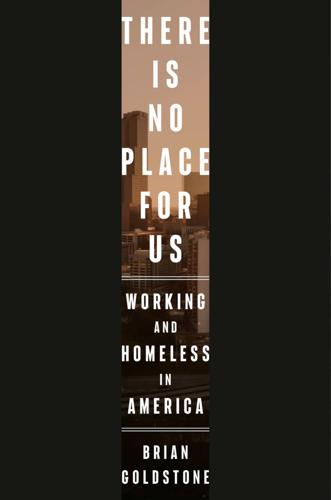
There Is No Place for Us: Working and Homeless in America
by
Brian Goldstone
Published 25 Mar 2025
In Oakland City, on the West Side, property values were up 146 percent over the past three years; in Westview, they were up 176 percent. In Chosewood Park, property values had risen an astonishing 348 percent. The skyrocketing land and property values; the emergence of new dining, entertainment, and retail destinations like The Beacon; the visual alterations to the built environment: these changes were the manifestations of a much larger social, economic, and spatial restructuring that had been taking place in Atlanta for over two decades. Speculators and homebuyers did not have to take it on faith that their assets in Chosewood Park would appreciate. They merely had to drive a few minutes up the road, into areas whose transformation was further along, to see what the neighborhood would soon look and feel like—and what it would soon be worth.
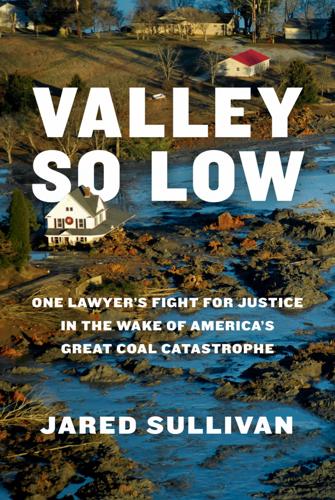
Valley So Low: One Lawyer's Fight for Justice in the Wake of America's Great Coal Catastrophe
by
Jared Sullivan
Published 15 Oct 2024
GO TO NOTE REFERENCE IN TEXT bowling balls: Shaila Dewan, “Tennessee Ash Flood Larger Than Initial Estimate,” New York Times, December 26, 2008. GO TO NOTE REFERENCE IN TEXT concrete: Adeyemi Adesina, “Sustainable Application of Cenospheres in Cementitious Materials—Overview of Performance,” Developments in the Built Environment 4 (November 2020). GO TO NOTE REFERENCE IN TEXT “recovering” them a priority: TVA, “Site Wide Safety and Health Plan,” prepared by Jacobs Engineering, June 2009, p. 1-1. GO TO NOTE REFERENCE IN TEXT daily safety logs: Adkisson et al. v. Jacobs, Docket no. 200, p. 7; Docket no. 256, exhibit 48.

Empire of Things: How We Became a World of Consumers, From the Fifteenth Century to the Twenty-First
by
Frank Trentmann
Published 1 Dec 2015
Additional possessions were put in storehouses, out of sight.78 This culture of simple comfort, in part inspired by Zen Buddhism, made eminent sense in a country with few natural resources. Arguably, it gave Japan a higher well-being than Europe. In Britain and the Netherlands, by contrast, the domestic interior was the centre stage for sociability and self-fashioning; the built environment was secondary. Furniture, wallpaper, chinaware and other possessions showed that one was in harmony with refined taste. They needed to change with the times. In the year 1713, 197,000 yards of wallpaper were sold in England. Seventy years later, it was over 2 million.79 By that time, it was common to repaper the home every few years.
…
In addition to the energy embodied in goods, therefore, we need also to consider the energy needed to make use of them. In other words, we want to know about flow as well as stock. Thanks to Patrick Troy and colleagues, we have some idea what this looked like for six districts in Adelaide in Australia in the 1990s. Troy’s team reconstructed what historic data they could find on the built environment, from the thickness of the walls in houses and whether floors were made of wood or concrete to the size and age of vehicles and water pipes. This was their embodied energy. They then compared it to the operational energy needed to run the show, that is, the gas that fired the boiler, the electricity that ran the appliances and the fuel to drive from A to B.
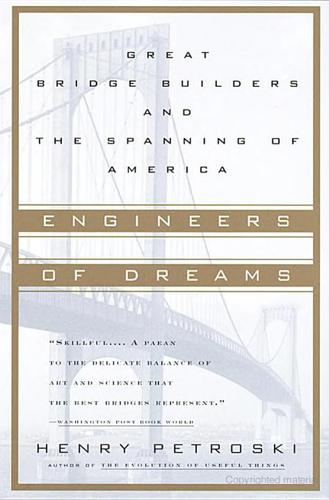
Engineers of Dreams: Great Bridge Builders and the Spanning of America
by
Henry Petroski
Published 2 Jan 1995
Just as so many New York City bridges owe their existence and appearance to a group of engineers who worked for government bodies of one form or another, so did the San Francisco-Oakland Bay Bridge owe its final form to the talents and abilities of California state engineers like Purcell and Andrew. Consulting engineers play a crucial role whenever it comes to particular questions of detail, experience, and precedent, but the creative and political sympathy and savvy of career government employees around the nation have also played significant roles in shaping the built environment. Among such engineers was Conde McCullough. Conde Balcom McCullough was born to a physician and his wife in 1887 in Redfield, South Dakota. As a young man, he attended Iowa State College, from which he received his bachelor’s degree in civil engineering in 1910. After a first engineering job in Des Moines, he joined the Iowa State Highway Department, beginning as a designing engineer in 1911 and rising to assistant state highway engineer by the time he left, in 1916, to join the Civil Engineering Department at Oregon State College.

The Relentless Revolution: A History of Capitalism
by
Joyce Appleby
Published 22 Dec 2009
The French reading of English history, their study of Newton and Locke, and their personal discovery of the open, curious, ambitious, and industrious society of eighteenth century England gave birth to the idea that the old regime could be reformed, a more important thought than that it should be.49 The conspicuous changes in the built environment acted on the imagination as surely as the questions that philosophers posed. A peculiarly intense form of curiosity drew the countries of Western Europe along the path of innovation, which grew ever wider as people brushed aside customary practices. On this broad avenue of human inventiveness Europeans encountered themselves as the creators of their own social universe.
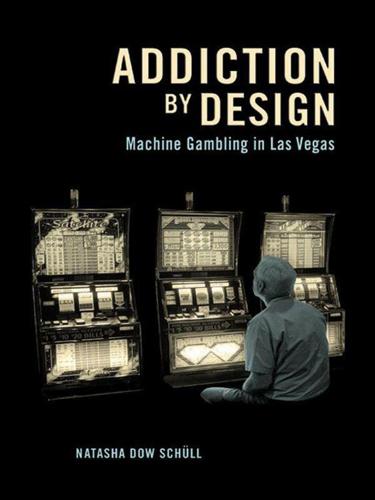
Addiction by Design: Machine Gambling in Las Vegas
by
Natasha Dow Schüll
Published 15 Jan 2012
(It should be noted that my use of the term “zone,” which derives from gamblers themselves, accords more importance to the affective and phenomenological aspects of the zone than that of Barry [2006], who has proposed the term “technological zone” to indicate assemblages of common measurement, communication, and regulatory standards relating to technical artifacts and practices.) PART ONE: DESIGN 1. Hellicker 2006. CHAPTER 1: INTERIOR DESIGN FOR INTERIOR STATES 1. Venturi, Izenour, and Brown 1972. Today the book is regarded as an inaugural text on postmodern aesthetics and the built environment. 2. Ibid., 50. 3. Ibid., 49. 4. Reisman 1950. 5. The titans of “corporate splendor” in post-1980s Las Vegas, writes architectural scholar Alan Hess, “often erred on the side of stylistic safety when commissioning new architecture,” erecting “look-alike slabs that reflect mass economics but not mass taste” (1993, 100, 102).

WTF?: What's the Future and Why It's Up to Us
by
Tim O'Reilly
Published 9 Oct 2017
Much as Minister Molano Vega did for phone service in Colombia, rebates to customers for failures to live up to coverage promises could potentially create a much more self-regulating system. THE ROLE OF SENSORS IN FUTURE REGULATION Increasingly, our interactions with businesses, government, and the built environment are becoming digital, and thus amenable to creative forms of measurement, and ultimately responsive regulation. For example, fines are routinely issued to motorists running red lights or making illegal turns by cameras mounted over highly trafficked intersections. With the rise of GPS, we are heading for a future where speeding motorists are no longer pulled over by police officers who happen to spot them, but instead automatically ticketed whenever they exceed the speed limit.

2312
by
Kim Stanley Robinson
Published 22 May 2012
Much of it Swan had not heard about yet, but the pattern was depressingly clear. Nothing new to learn here: the Earth was fucked. Wahram had come to a more measured conclusion, as was his way. “I’ve been thinking that our first wave of help has been too… too blunt, for lack of a better word. Too focused on the built environment, and on housing in particular. Maybe people like to feel they’ve had a hand in building their homes.” “I don’t think people care who builds it,” Swan said. “Well, but in space we do. Why not here?” “Because when your home can fall apart and kill you and your kids just because it rains, then you’re happy to see a machine replace it with something better!

To Save Everything, Click Here: The Folly of Technological Solutionism
by
Evgeny Morozov
Published 15 Nov 2013
For Brownsword, then, the real problem is not that the moral and prudential registers are being overtaken by the technological one. Rather, it is that once laws and norms become cast in technology, they become harder to question and revise. They just fade into the background and feel entirely natural; indeed, they are often seen as an extension of the built environment rather than the outcome of deliberate planning by some wise social engineer. However, if we want to live in a world where norms and laws are constantly subject to revision and debate, then perhaps we should be wary of delegating so much regulation to technology. As Brownsword puts it, “Moral communities need to keep debating their commitments.

Future Politics: Living Together in a World Transformed by Tech
by
Jamie Susskind
Published 3 Sep 2018
To treat phenomena as things is to treat them as data, and this constitutes the starting point for science’ Émile Durkheim, The Rules of Sociological Method (1895) In the digital lifeworld, a growing amount of social activity will be captured and recorded as data then sorted, stored, and processed by digital systems. More and more of our actions, utterances, movements, relationships, emotions, and beliefs will leave a permanent or semi-permanent digital mark. As well as chronicling human life, data will increasingly be gathered on the natural world, the activity of machines, and the built environment. All this data, in turn, will be used for commercial purposes, to train machine learning AI systems, and to predict and control human behaviour. This is increasingly quantified society. The twenty-first century has seen an explosion in the amount of data generated and processed by human beings and machines.
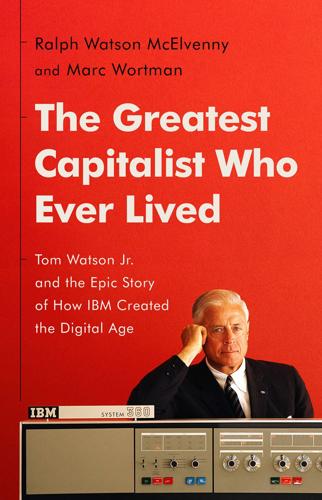
The Greatest Capitalist Who Ever Lived: Tom Watson Jr. And the Epic Story of How IBM Created the Digital Age
by
Ralph Watson McElvenny
and
Marc Wortman
Published 14 Oct 2023
IBM remained his office’s principal client, but Westinghouse, Mobil, Pan American, and other major corporations retained him for their iconic industrial-design programs. Industrial design from products and signage to buildings and furnishings became central to the way American corporations presented themselves.30 At IBM, Noyes did not merely design the built environment in which IBM displayed its computers: he redefined their look. For the more powerful successors to the 702, Noyes began to strip away the dreary gray metal casing over the processing units. He revealed their colorful wiring, complex circuit boards, and other technological elements. He eventually encased them like beautiful modern furnishings behind glass windows.31 He went further yet with the new 305.
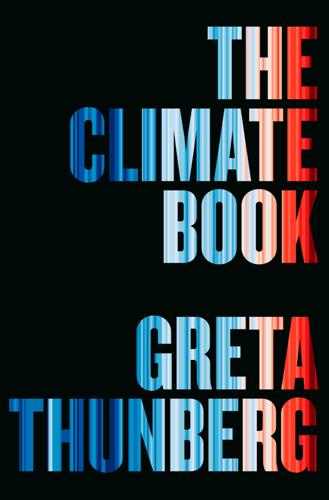
The Climate Book: The Facts and the Solutions
by
Greta Thunberg
Published 14 Feb 2023
A wealthy, urban family going vegan, flight-free, and car-free might reduce its carbon emissions by a few tonnes a year, when the world’s problems are measured in the tens of billions of tonnes. Moreover, families’ carbon budgets and broader environmental impact are in no small part determined by the built environment they live in, the economy they work in and the policy choices made for them by their representatives. Given those dynamics, it will take governmental and corporate action to help heal the planet. Yet individuals are the ultimate consumers of much of what gets pumped, built, slaughtered, mined, woven, cut, processed and shipped around the world, year in and year out.
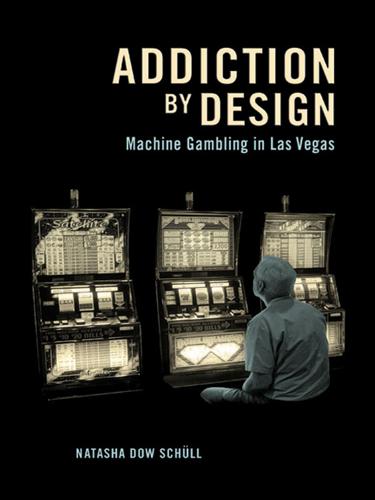
Addiction by Design: Machine Gambling in Las Vegas
by
Natasha Dow Schüll
Published 19 Aug 2012
(It should be noted that my use of the term “zone,” which derives from gamblers themselves, accords more importance to the affective and phenomenological aspects of the zone than that of Barry [2006], who has proposed the term “technological zone” to indicate assemblages of common measurement, communication, and regulatory standards relating to technical artifacts and practices.) PART ONE: DESIGN 1. Hellicker 2006. CHAPTER 1: INTERIOR DESIGN FOR INTERIOR STATES 1. Venturi, Izenour, and Brown 1972. Today the book is regarded as an inaugural text on postmodern aesthetics and the built environment. 2. Ibid., 50. 3. Ibid., 49. 4. Reisman 1950. 5. The titans of “corporate splendor” in post-1980s Las Vegas, writes architectural scholar Alan Hess, “often erred on the side of stylistic safety when commissioning new architecture,” erecting “look-alike slabs that reflect mass economics but not mass taste” (1993, 100, 102).
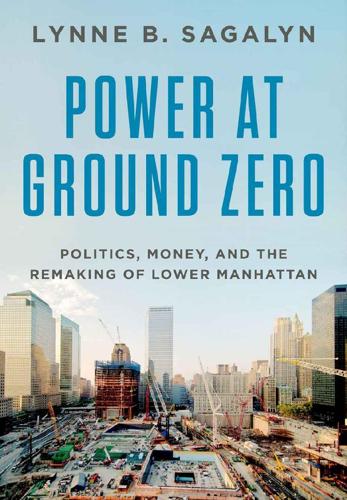
Power at Ground Zero: Politics, Money, and the Remaking of Lower Manhattan
by
Lynne B. Sagalyn
Published 8 Sep 2016
Writer, researcher, and editor, the veteran Times reporter grew up in Chicago loving both architecture and newspapers—he had his own, “The Daily Dunlap,” at the age of twelve. Architecture was family conversation: His father was a student and colleague of Mies van der Rohe. After studying architectural history at Yale, the younger Dunlap joined the Times in 1975. As a metropolitan reporter, Dunlap has covered the broad gamut of city issues that shape the built environment: architecture, landmark preservation, urban history, public space, and city planning. An accomplished photographer, he spent nearly five years as graphics editor (1976–1981), during which time he helped the Times find new imaginative ways to better tell a news story. Since 2003, the rebuilding of the World Trade Center has been his chief beat, and the longevity with which he’s been on the Trade Center story brings comprehensive depth and wisdom, along with sidebars of incisive humor and witty juxtapositions.
…
Bloomberg; managed the city’s negotiations culminating in the 2006 realignment deal. Robert R. Douglass, attorney, civic leader, chairman emeritus of the Alliance for Downtown New York and longtime associate of the Rockefeller family. David W. Dunlap, veteran reporter for the New York Times covering issues of planning, preservation, and the built environment. Douglas Durst, developer and scion of the family real estate firm, the Durst Organization; bought into ownership of 1 World Trade Center in 2010. Stanton Eckstut, urban designer, architect, and partner in Ehrenkrantz Eckstut & Kuhn Architects hired by the Port Authority to do in-house transportation, infrastructure, and urban design planning for Ground Zero.
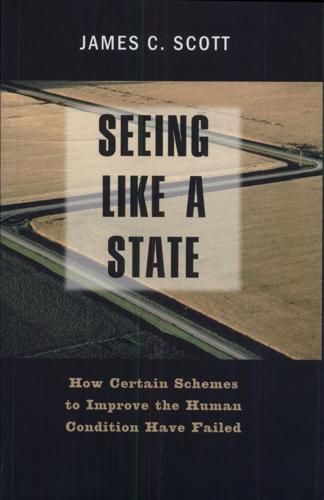
Seeing Like a State: How Certain Schemes to Improve the Human Condition Have Failed
by
James C. Scott
Published 8 Feb 1999
The population simply lacks the small accessible spaces that they could colonize and stamp with the character of their activity, as they have done historically in Rio and Sao Paulo. To be sure, the inhabitants of Brasilia haven't had much time to modify the city through their practices, but the city is designed to be fairly recalcitrant to their efforts.61 "Brasilite," as a term, also underscores how the built environment affects those who dwell in it. Compared to life in Rio and Sao Paulo, with their color and variety, the daily round in bland, repetitive, austere Brasilia must have resembled life in a sensory deprivation tank. The recipe for high-modernist urban planning, while it may have created formal order and functional segregation, did so at the cost of a sensorily impoverished and monotonous environment-an environment that inevitably took its toll on the spirits of its residents.

Sweden
by
Becky Ohlsen
Published 19 Jun 2009
Bibliophiles and design fans will adore the well-stocked gift shop. The adjoining Arkitekturmuseet (Museum of Architecture; 58 72 70 02; Exercisplan 4; www.arkitekturmuseet.se; adult/under 19yr Skr50/free, admission free 4-6pm Fri; 10am-8pm Tue, 10am-6pm Wed-Sun), housed in a converted navy drill hall, focuses on the built environment, with a permanent exhibition spanning 1000 years of Swedish architecture and an archive of 2.5 million documents, photographs, plans, drawings and models. Temporary exhibitions also cover international names and work. The museum organises occasional themed architectural tours of Stockholm; check the website or ask at the information desk.
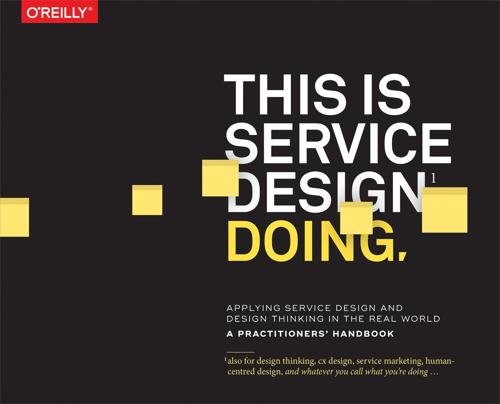
This Is Service Design Doing: Applying Service Design Thinking in the Real World: A Practitioners' Handbook
by
Marc Stickdorn
,
Markus Edgar Hormess
,
Adam Lawrence
and
Jakob Schneider
Published 12 Jan 2018
Architecture has been viewed since modernity as a single static building or conglomerate of various forms. There is a great opportunity in perceiving architecture as a process rather than a static building. In service design, we look at the whole system as the product, whereas in architecture the one product is the building. In order to make architecture part of a service ecosystem, the built environment must be redefined as one touchpoint and the building itself as a physical manifestation. Stakeholder maps can be used to make sure all the people involved in the lifecycle of a building (everyone involved in designing, building, using, monitoring) are represented. This helps to set the groundwork for integrating all (built) needs during the process.
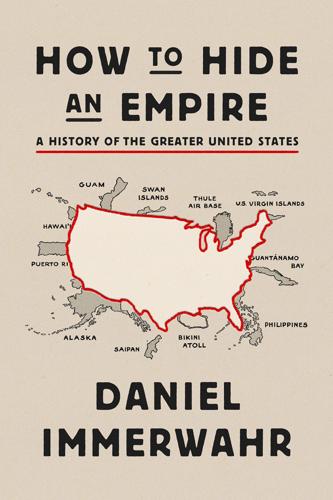
How to Hide an Empire: A History of the Greater United States
by
Daniel Immerwahr
Published 19 Feb 2019
In all, Burnham worked on his plan for six months, and that left time for travel, tourism, and his simultaneous work in Baguio. Burnham could never have gotten away with such haste in Chicago. In Manila, however, it was fine. Three days after the government approved his plan (with no changes), construction began. Things could move quickly because power over the built environment lay in the hands of a single man, the consulting architect (initially called the insular architect). There was no such position on the mainland. But in the Philippines, Forbes explained, “we so fixed it that the Insular Architect prepared plans for all public buildings, whether insular, municipal, or provincial.”
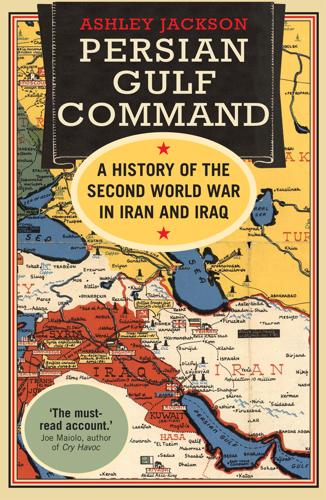
Persian Gulf Command: A History of the Second World War in Iran and Iraq
by
Ashley Jackson
Published 15 May 2018
Nuri as-Said, in his fourteenth term as prime minister, was murdered and buried the following day, but his corpse was dug up, mutilated, run over repeatedly by municipal buses and dragged through the streets. Legacies of the Second World War in the Iran–Iraq region can be traced through the modern histories of both nations, in physical objects and the built environment, and in less tangible ways. For instance, nearly 3,000 Polish refugees died and were buried in Iran, mostly perishing from typhus. Tehran’s Doulab cemetery alone accommodates nearly 2,000 graves in a section subsequently purchased by the Polish government. The name Darius would become a common Polish boys’ name.

Empire of AI: Dreams and Nightmares in Sam Altman's OpenAI
by
Karen Hao
Published 19 May 2025
She began to mount a multipronged campaign, growing so deeply involved that she quit her job: She spoke at high-profile conferences about the environmental impacts of data centers and Resistencia’s fight against them; she forged connections with the Chilean Ministry of Science, Technology, Knowledge and Innovation and with representatives at Microsoft and Google; she connected Vallejos and Arancibia to other international researchers to elevate their profile. With Dambrosio and Díaz, Otero also developed a more speculative project. All three had architectural backgrounds and had been studying the infrastructure of modern digital technologies through the lens of the built environment. They began to wonder: What if they treated data centers as architecture structures and fundamentally reimagined their aesthetic, their role in local communities, and their relationship with the surrounding environment? Díaz liked to visit national libraries during his travels—beautiful venues that seek to capture the grandeur of a country’s memories and knowledge.
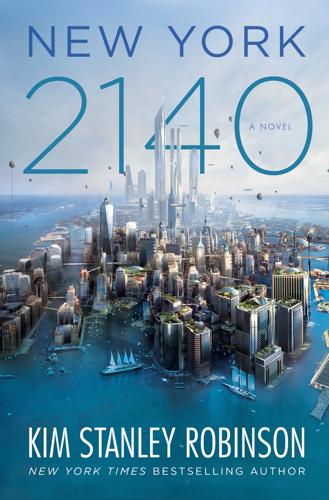
New York 2140
by
Kim Stanley Robinson
Published 14 Mar 2017
Having managed that, they rode the wind and canal current up C to Fourteenth, fought through the left turn there and headed into the wind to Park, then turned right up Park and rumbled up to Thirty-second, where the NYU hospital, looking as crowded as their tug, took in all their wounded people through a north-side window on the fourth floor, broken open for that purpose, as it was now the current water level, and there was no other way to get people in. The surge was a big problem, and a big part of every other problem. It was indeed a vision of what a Third Pulse would do, or a nightmare flashback to half a century before. This was what it must have been like: the ground floor underwater, that entire part of the built environment devastated, after which a desperate improvisation to make use of the higher floors. Injured passengers unloaded, they motored on along Thirty-second to Madison and another wicked left turn there, and after that pushed on in a tough but steady slog directly upwind. Back down to their building, where they could make an easier left turn on Twenty-fourth, and stop right under the utility door they had used to get on the barge.
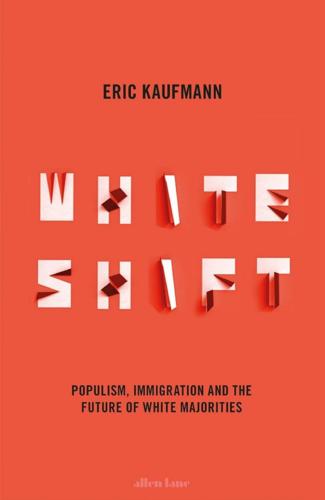
Whiteshift: Populism, Immigration and the Future of White Majorities
by
Eric Kaufmann
Published 24 Oct 2018
Kaufmann, ‘Racial self-interest is not racism: ethno-demographic interests and the immigration debate’, Policy Exchange, 3 March 2017. PART III: FLEE 9. Hunkering Down 1. M. van Ham and D. Manley, ‘Social housing allocation, choice and neighbourhood ethnic mix in England’, Journal of Housing and the Built Environment 24:4 (2009), 407–22. 2. G. Knies, A. Nandi and L. Platt, ‘Life satisfaction, ethnicity and neighbourhoods: Is there an effect of neighbourhood ethnic composition on life satisfaction?’, Social Science Research 60 (2016), 110–24. 3. S. L. S. Arbaci, ‘The residential insertion of immigrants in Europe: Patterns and mechanisms in southern European cities’, PhD dissertation, University of London, 2007. 4.
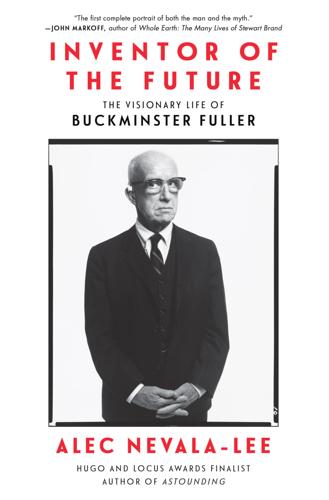
Inventor of the Future: The Visionary Life of Buckminster Fuller
by
Alec Nevala-Lee
Published 1 Aug 2022
Fuller transformed himself into a corporation to free himself from capitalism, but his example enabled others to surrender to it completely. Although he became a conduit for the ideals of modernism—with its bold program to reimagine society—into the cult of technology, his story can make Silicon Valley seem resolutely conventional. As a practical matter, most start-ups have abandoned the built environment for what the journalist Derek Thompson has called “the ethereal world of software.” Fuller’s success in pulling it off in the field of housing is astonishing. To make it possible, he found himself living permanently in the world of tomorrow, until the vision that he used to advance his goals became an end in itself.
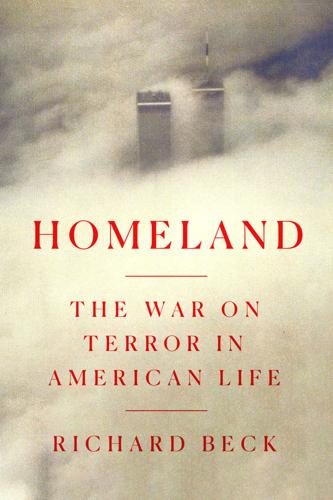
Homeland: The War on Terror in American Life
by
Richard Beck
Published 2 Sep 2024
Schools, homes, and other youth spaces run by adults are places where the rules governing how people interact with one another are imposed from above, by the adults. In public with your friends and peers, however, learning the rules is a process of negotiation and improvisation. You watch the people around you, pick up cues from the built environment, and test out the limits of etiquette in encounters with friends and strangers. All teenagers know that their incomplete understanding of how to navigate different public environments—when to speak, when to listen, what to wear, how to move, how to acquire status, when to feel nervous, and when to feel safe—is one of the main things that separates them from adults, and they want very badly to catch up, to know how to read the hundreds of little social cues that present themselves to you every time you go for a walk or eat in a restaurant.
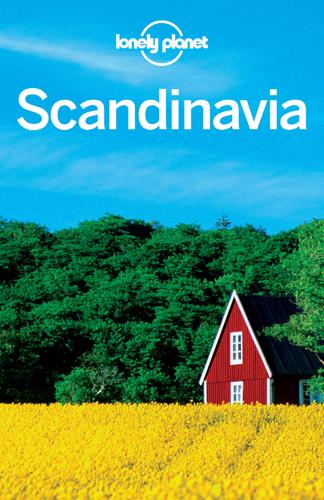
Scandinavia
by
Andy Symington
Published 24 Feb 2012
SKEPPSHOLMEN Moderna Museet MUSEUM ( www.modernamuseet.se; Exercisplan 4; adult/under 19yr Skr100/free; 10am-8pm Tue, 10am-6pm Wed-Sun) Across the bridge by the Nationalmuseum is the sleek, impressive Moderna, which boasts a world-class collection of modern art, sculpture, photography and installations, temporary exhibitions and an outdoor sculpture garden. The adjacent Arkitekturmuseet (Museum of Architecture; www.arkitekturmuseet.se; Exercisplan 4; adult/under 19yr Skr50/free, admission free 4-6pm Fri; 10am-8pm Tue, 10am-6pm Wed-Sun) , housed in a converted navy drill hall, focuses on the built environment, with a permanent exhibition spanning 1000 years of Swedish architecture and an archive of 2.5 million documents, photographs, plans, drawings and models. Combination tickets for both museums cost adult/child Skr130/free. KUNGSHOLMEN Stadshuset CIVIC BUILDING (City Hall; Click here ; 50 82 90 58; Hantverkargatan 1; admission by tour only, adult/child Skr80/40; tours in English 10am, 11am, noon, 2pm, 3pm & 4pm Jun-Aug, 10am, noon & 2pm rest of yr) The main visitor sight here is the landmark Stadshuset, resembling a large church with two internal courtyards.
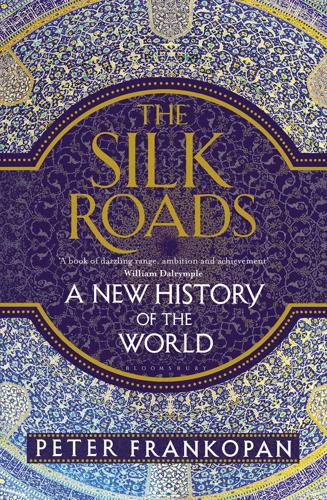
The Silk Roads: A New History of the World
by
Peter Frankopan
Published 26 Aug 2015
Watching wrestling became popular, as did pigeon racing, both favoured Central Asian pastimes.68 Innovation in architecture and garden design was even more pronounced, with the influence of buildings and landscapes honed and perfected in Samarkand soon becoming evident across the empire. The results can be seen today. Humāyūn’s magnificent tomb stands in Delhi not only as a masterpiece of Timurid design, constructed by an architect from Bukhara, but as testimony to a new era in Indian history.69 New landscaping styles were also introduced, transforming the built environment and its relationship with its surroundings further still, heavily influenced by practices and ideas from Central Asia.70 Lahore flourished with grand new monuments and carefully planned open spaces.71 With huge resources at their disposal and the wind in their sails, the Mughals transformed the empire in their own image.

Northern California Travel Guide
by
Lonely Planet
History Meet the characters who shaped Northern California’s past, from Native Americans and crooked priests, to gun-slinging forty-niners and guitar-strumming hippies. The Way of Life Computer programmers, political outcasts and tree sitters – Northern Californians are a different breed. Music & the Arts Delve into the heritage of Northern California’s vibrant cultural scene in this primer on music, art and the built environment. By the Book This literary trip takes you on the road with Mark Twain, the Beatniks and Cali's modern authors and essayists. The Land & Wildlife Comprehend the wild forces of nature that formed the NorCal landscape, and the menagerie of wild animals that inhabit it. Northern California Today The drought may be over, but water – and climate change – remain deeply concerning for Northern Californians.
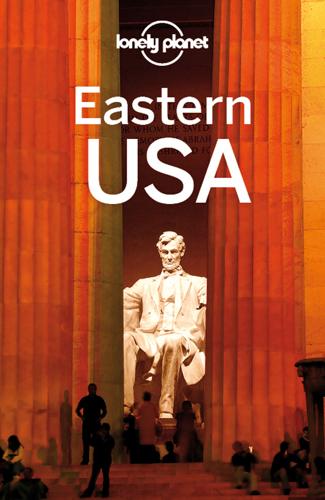
Eastern USA
by
Lonely Planet
National Building Museum MUSEUM (www.nbm.org; 401 F St NW; adult/child $8/5; 10am-5pm Mon-Sat, from 11am Sun) Devoted to architecture and urban design, this under-appreciated museum is appropriately housed in a magnificent 19th-century edifice modeled after the Renaissance-era Palazzo Farnese in Rome. Four stories of ornamented balconies flank the dramatic 316ft-wide atrium, and the gold Corinthian columns rise 75ft high. Rotating exhibits on different aspects of the built environment are hidden in rooms off the atrium. Renwick Gallery MUSEUM (cnr 17th St & Pennsylvania Ave NW) Near the White House, the Renwick Gallery is set in a stately 1859 mansion and exhibits a superb collection of American crafts and decorative art pieces. Highlights include over-the-top works like Larry Fuente’s extravagantly kitsch Game Fish and Beth Lipman’s ethereal Bancketje (Banquet).
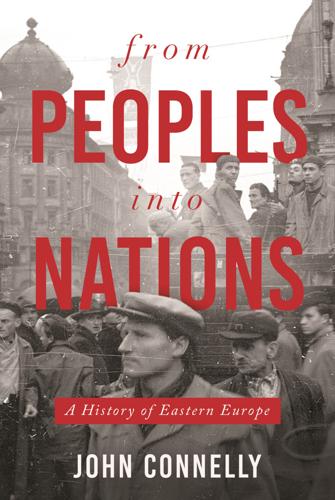
From Peoples into Nations
by
John Connelly
Published 11 Nov 2019
After the fall of Communism, reports surfaced that some products meant for Western consumption were manufactured by prison labor.37 A double hypocrisy thus lay at the heart of the Cold War: The East reserved its best products for the class enemy, while Western capitalists undercut one another with products made, at times, by slaves of the Communist system they castigated for crushing human freedom. Perhaps the most oppressive reflection of the socialist state’s disregard for its consumer citizens was the built environment. As the anthropologist Krisztina Fehérváry notes, in the 1960s modernist apartment complexes—every structure, every apartment the same—emerged throughout the bloc. Their austerity mixed the design ideologies of architects with the production biases of economies facing challenges in maintaining growth rates.
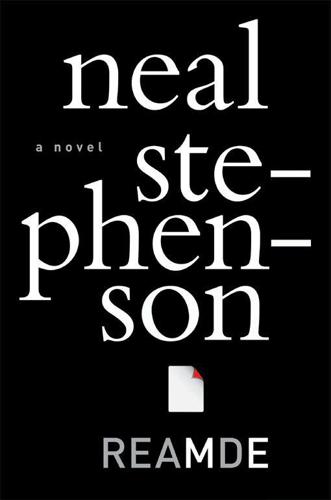
Reamde
by
Neal Stephenson
Published 19 Sep 2011
But as he came down the steps and it became obvious that he was being followed by a petite Asian female who was, in turn, being followed by an Asian man, they all seemed to jump to the same conclusion, and they turned their backs on him and drifted away in the direction of other buses that were pulling in. And yet it was an orderly place, and none of them felt any particular sense that they had stepped into a slum. To Csongor it felt very little different from Xiamen. The built environment was cheaply constructed three-to six-story buildings jammed in next to one another to form contiguous blocks, separated by crowded streets and fronted by a mixture of colorful signs and makeshift antitheft measures. It was, in other words, the classic streetscape of emerging Asian economies, and the only thing that made it unusual was that the signs were in English.

USA Travel Guide
by
Lonely, Planet
National Building Museum MUSEUM Offline map Google map (www.nbm.org; 401 F St NW; adult/child $8/5; 10am-5pm Mon-Sat, from 11am Sun) Devoted to architecture and urban design, this under-appreciated museum is appropriately housed in a magnificent 19th-century edifice modeled after the Renaissance-era Palazzo Farnese in Rome. Four stories of ornamented balconies flank the dramatic 316ft-wide atrium, and the gold Corinthian columns rise 75ft high. Rotating exhibits on different aspects of the built environment are hidden in rooms off the atrium. Renwick Gallery MUSEUM (cnr 17th St & Pennsylvania Ave NW) Near the White House, the Renwick Gallery is set in a stately 1859 mansion and exhibits a superb collection of American crafts and decorative art pieces. Highlights include over-the-top works like Larry Fuente’s extravagantly kitsch Game Fish and Beth Lipman’s ethereal Bancketje (Banquet) .